

THE GENIUS OF


GORDON MURRAY



McLaren F1

GMA T.50












Brabham ‘fan car’
Full interview
His 60-car private collection
All of Murray’s designs

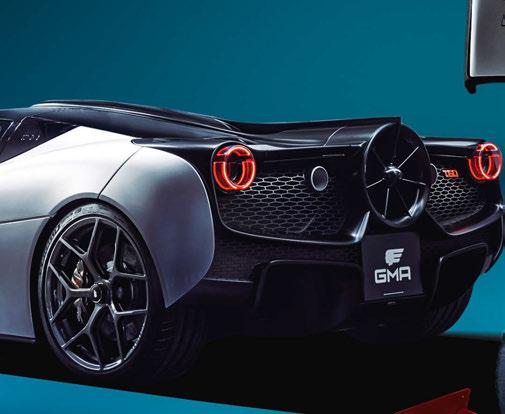
PLUS
FRAZER NASH SS
TUCKER 48 ‘TORPEDO’
GOODWOOD ( PEDAL CAR)
LAP RECORD SMASHED
MOSS’S MILLE MIGLIA MIRACLE
CELEBRATED 70 YEARS ON

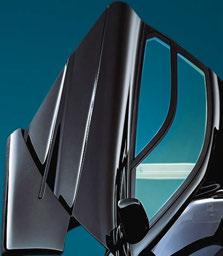
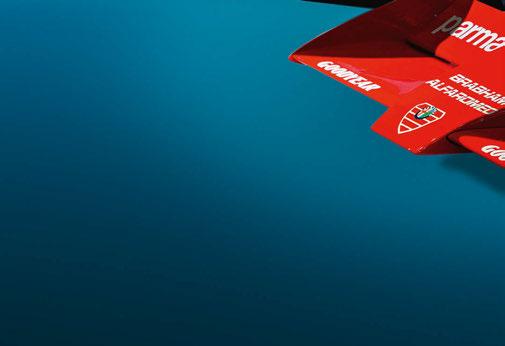
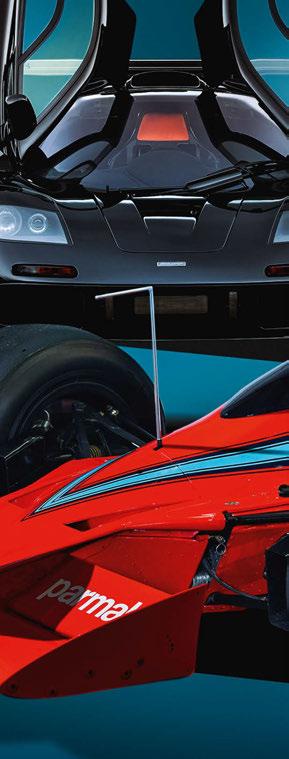



A Modern Classic Reimagined
First introduced in 1985, we are proud to announce the return of one of our original iconic loudspeaker names. Uniting sonic excellence with elegant aesthetics, the R610 Music Console and Sabre-R bookshelf speakers partner perfectly to create a complete music system for the modern era and embody Ruark’s ethos of making products with soul that customers will cherish and enjoy for years to come.
Finished in handcrafted wood veneer or satin charcoal lacquer with subtle contours and soft, tactile accents, R610 feels as good as it looks. Designed to complement the R610 in both sound and style, our Sabre-R bookshelf speakers are a testament to what can be achieved when audio engineering and craftsmanship go hand in hand. Compact yet powerful, their refined cabinets are shaped to reduce resonance and finished to the same exacting standards as the R610. With custom drivers and carefully tuned crossovers, they offer a clear, expressive sound that brings music to life with presence and depth.


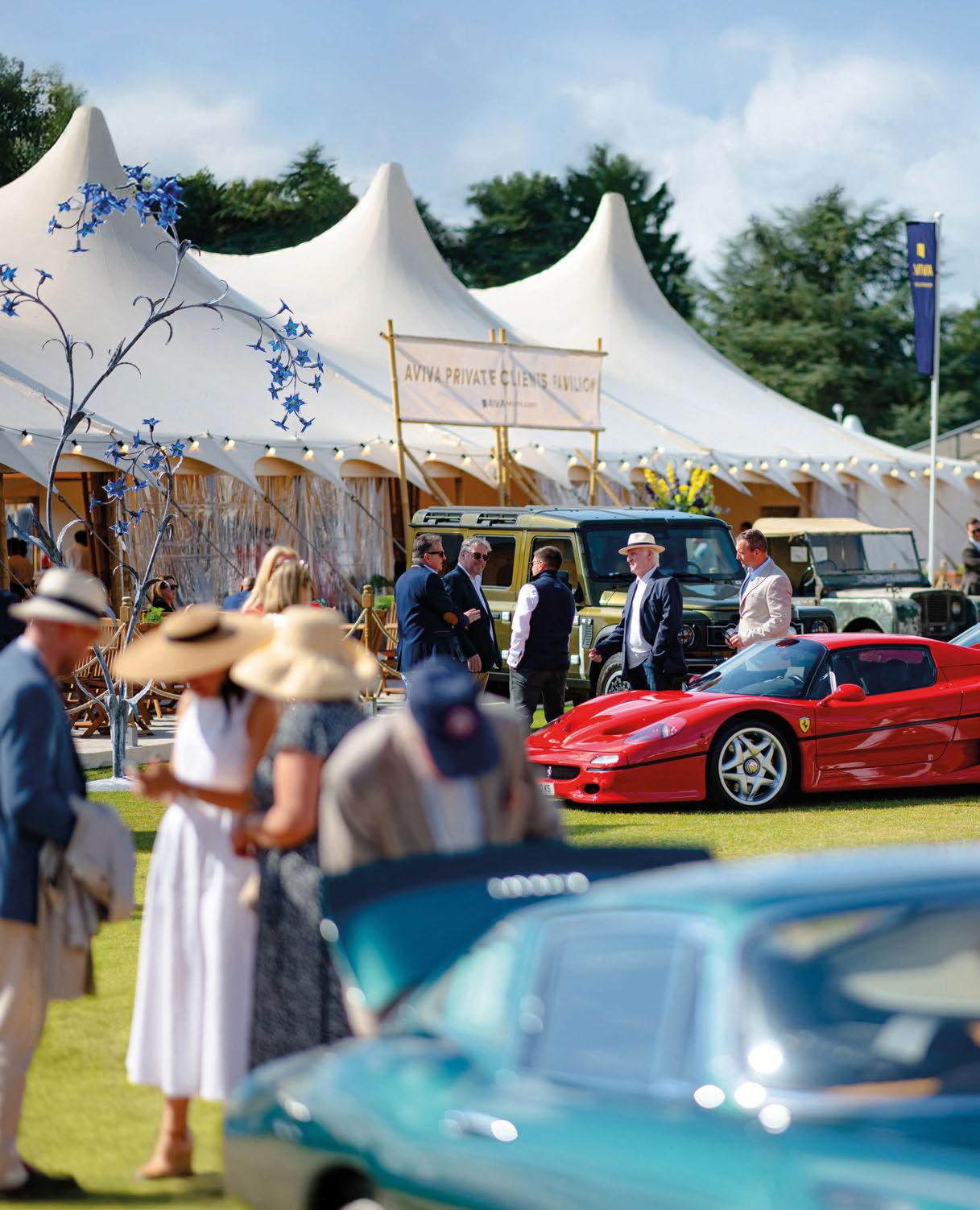

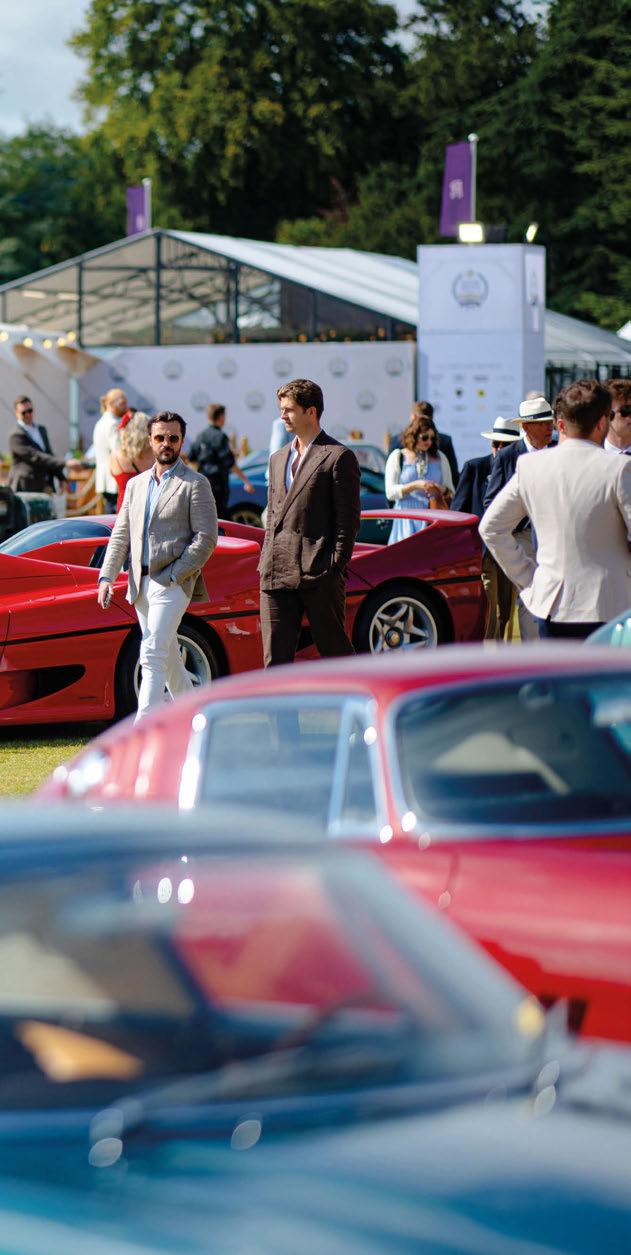
BLENHEIM PALACE, OXFORDSHIRE 27–31 AUGUST 2025
DAILY ENTRY TICKETS FROM £55
LIMITED HOSPITALITY PACKAGES REMAIN
SCAN FOR TICKETS








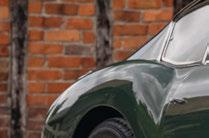
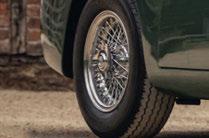




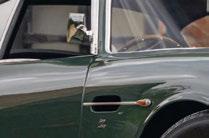
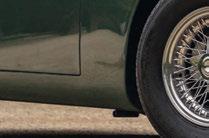





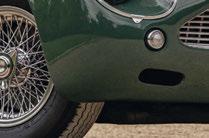

Coachwork
Chassis

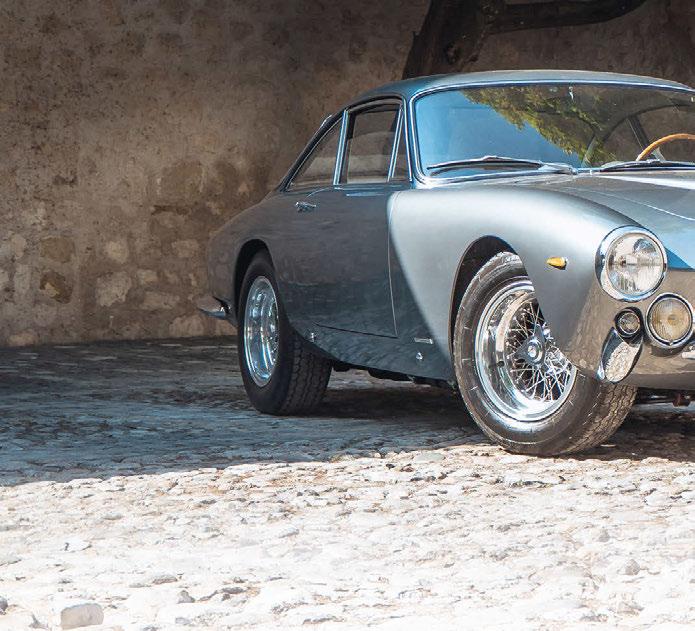



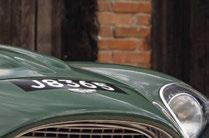
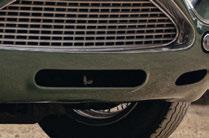










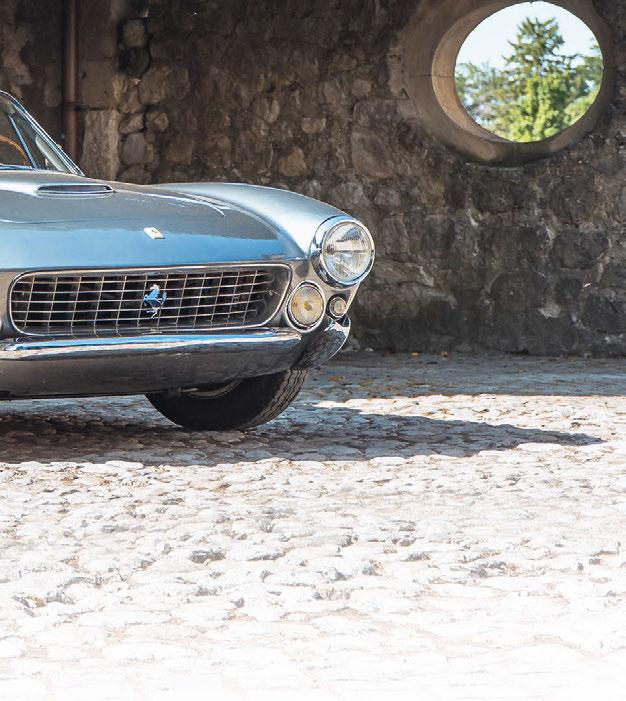

58 PAGE
‘PHENOMENAL IS THE WORD THAT SUMS HIM UP. A LATERAL THINKER WITH SUCH A CAPACITY TO THINK OUTSIDE THE BOX’ THE GENIUS OF GORDON MURRAY

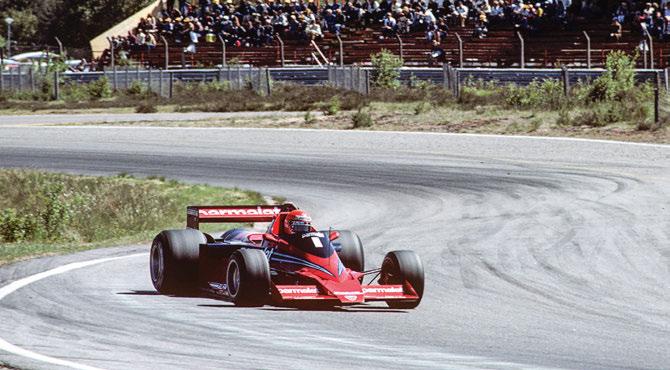
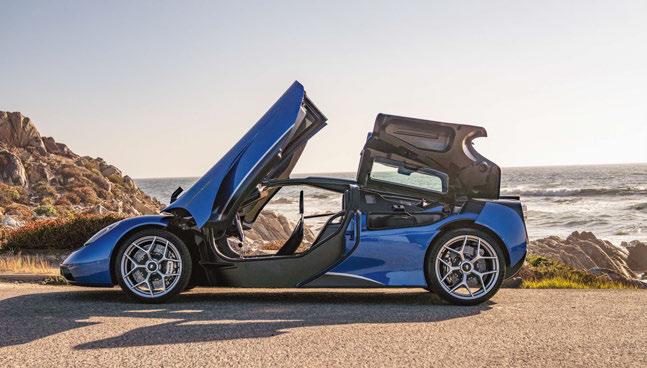





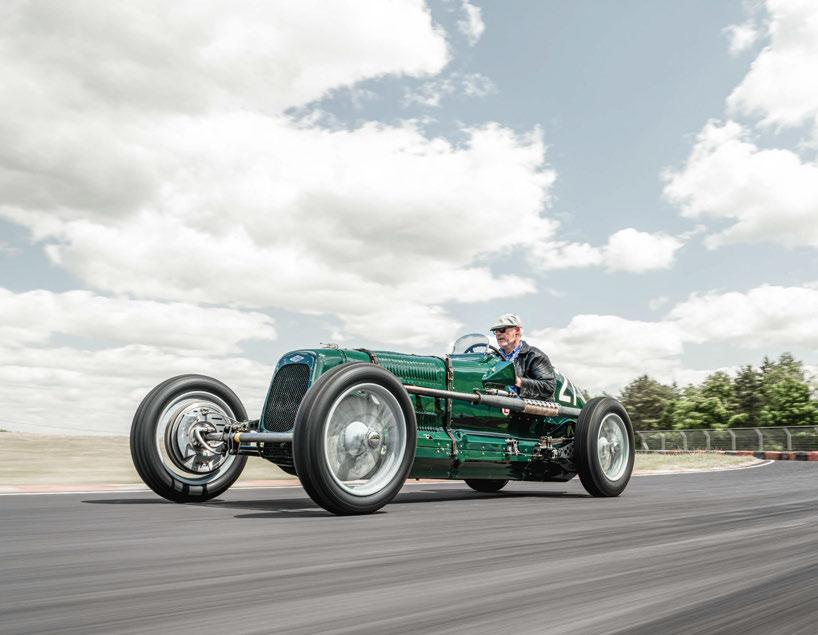
Features
GORDON MURRAY SPECIAL 58
Celebrating a very special 60-year career
THE OCTANE INTERVIEW 60
Face to face with the man himself
INSIDE MURRAY’S BARN 66
Gordon’s guided tour of his car collection
McLAREN F1 72
What drove the pursuit of perfection
GMA T.50 78
Inside man Dario Franchitti reveals all
BRABHAM FAN CAR 84
Murray’s era-defining Formula 1 car
MURRAY’S GREATEST HITS 86
It’s not all hypercars and racers
MILLE MIGLIA AND MOSS 90
Following in his tyretracks, 70 years on TUCKER 48 98
Stephen Bayley on America’s glorious failure
KOENIG FERRARI 308 108
One man found the 308 underwhelming…
JUNIOR GOODWOOD RECORD 118
How an eight-year-old took the lap honours
FRAZER NASH SS 122
Supercharged single-seater on track
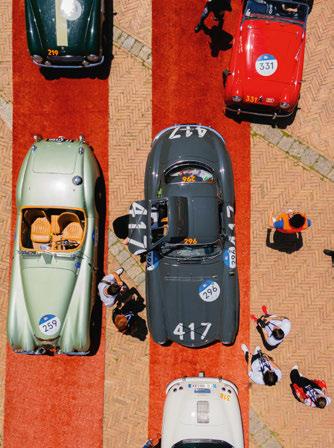
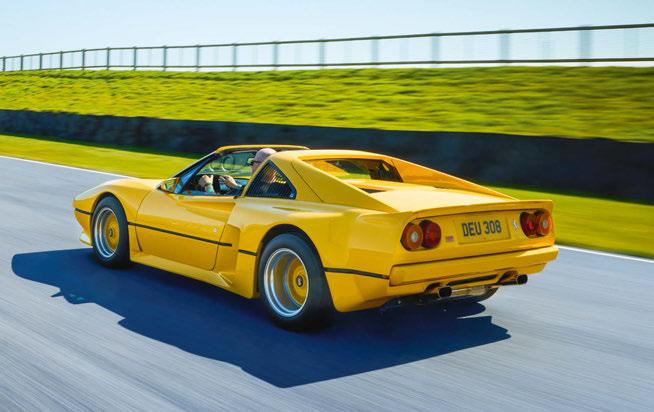
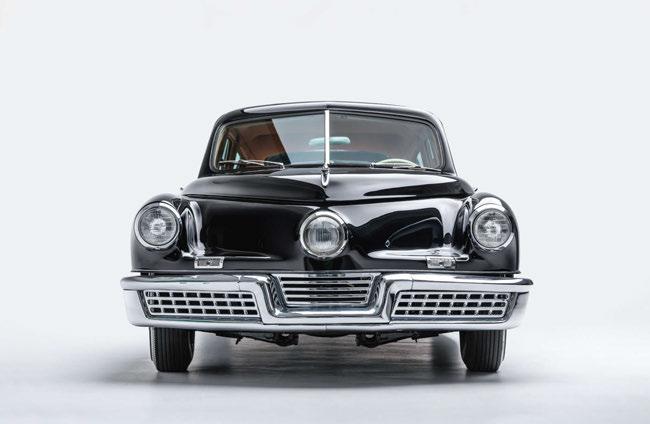
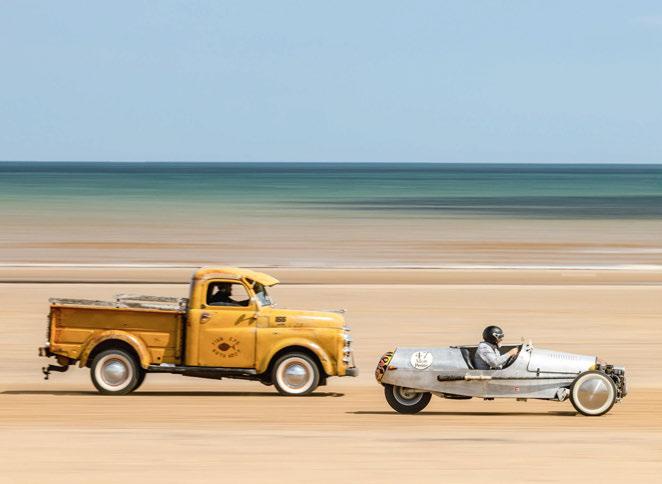
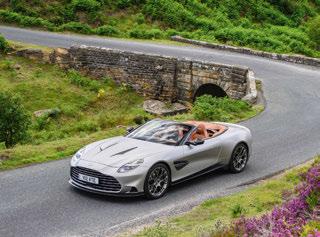
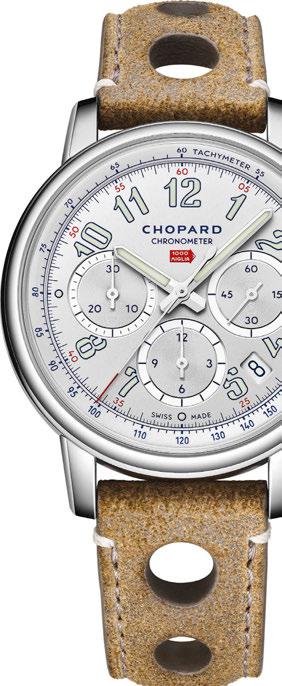

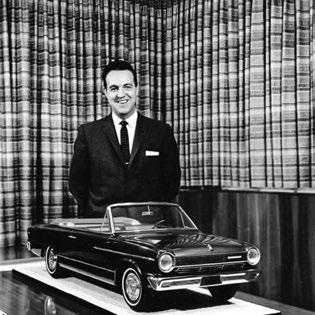

Regulars
EVENTS & NEWS 20
Highlights of Le Mans Classic and Peking to Paris; top dates for your diary; investigating the malaise in the UK’s car industry
COLUMNS 47
Leno, Bell, Bayley and Coucher: if Statler and Waldorf did cars
LETTERS 55
Witnessed! The world’s only Ferrari F50 racer
OCTANE CARS 134
Clever fixes for a Z4; to the pub in a Model T
OVERDRIVE 140
Classic Alfa Romeo; latest Aston Martin
GONE BUT NOT FORGOTTEN 144
Dick Teague, the unsung US stylist
GEARBOX 146
Motoring creative consultant Mark Roberts ICON 148
The emissions-friendly electric trolleybus CHRONO 150
A navigator’s IWC navigator: both genuine BOOKS 152
Volumes 4 and 5 of the Yanks at Le Mans
GEAR 154
More great stu than you could ever need









THE MARKET 158
Insider tips, auction news, Lamborghini stats, cars for sale, Saab 99 Turbo buying guide
AUTOBIOGRAPHY 194
Car designer and artist Alban Lerailler









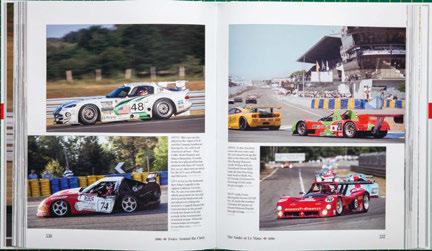


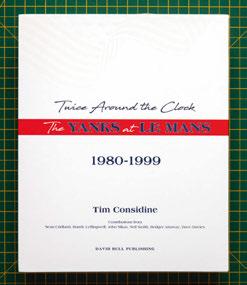


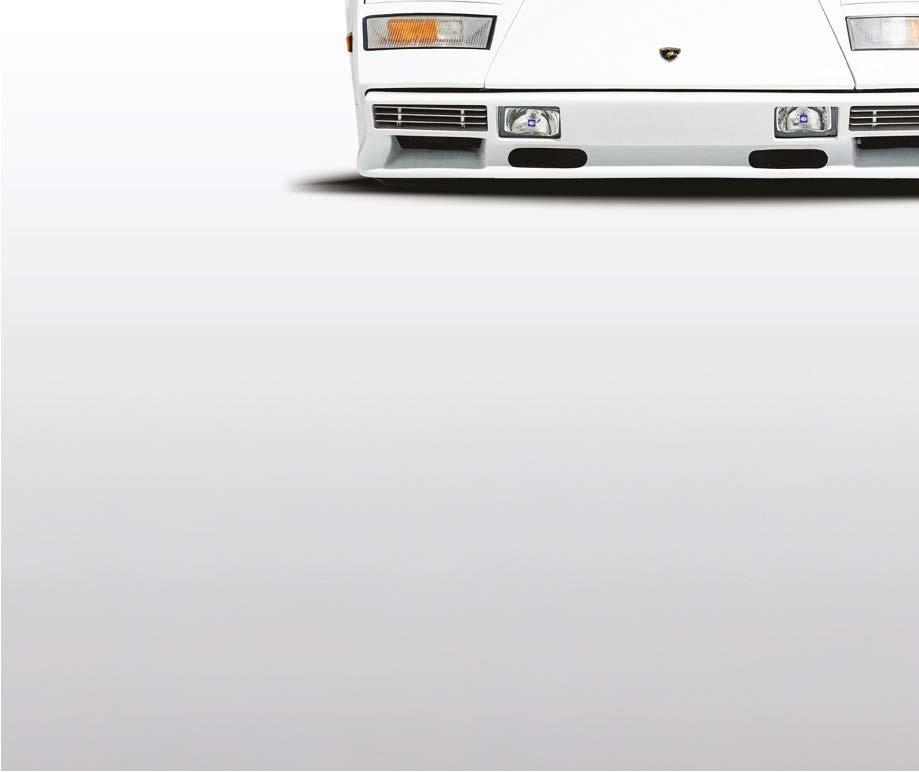

WELCOME FROM THE EDITOR

All hail the maestro

I HAVE BEEN fortunate enough to meet Gordon Murray on several occasions, though I am not sure his joy at discovering we would be sitting together at various functions over the years was ever quite as untrammelled as my own. Of course, we share an adoration of (and an addiction to) Lotus Elans –I’ve had three, he currently has three – which is always a good ice-breaker and never fails to tease out a decent anecdote, such as his only disappointment with the McLaren F1 being that he didn’t get the steering quite as good as an Elan’s. I would then nod sagely, of course, before promptly taking advantage of the moment to mention that I have indeed also driven an F1. Trust me, no motoring journalist in any situation has ever spurned the opportunity to boast about driving an F1; it just has that magic, like a Ferrari GTO.
Conversation usually then strays away from cars. Though I am largely ignorant of the level of Americana in which he dabbles, I do have a jukebox (a Rock-Ola 430, complete with stand), a passable knowledge of Bob Dylan (which goes a very long way with Gordon) and an extensive knowledge of punk rock.
But that interlude is always brief, because Gordon’s brain moves at such a feverish pace that we are soon back on cars, the superior dynamics of modern cars, the science of why classic cars don’t do things as well, not simple stuff like the whats but the intensively analysed whys, because with Gordon everything to do with cars is elevated to a higher cerebral plane.
Has he always been forgiving that I am a dunderhead who struggles to keep up with his engineering and scientific prowess? Well, I have definitely sensed frustration in both his tone and expression when he tries to explain something simple and I just don’t get it. Anyone who has tried to do maths homework with a five-year-old should understand.
But, then, he is the greatest design engineer of his, and perhaps any other, generation. The effortless crossover from racing cars to road cars, and at the very pinnacle of both, would be remarkable enough, but the transition to building his own hypercars in his own name has been something else.
Gordon Murray is the benchmark. It is an honour to be celebrating his stellar career in this special issue.
FEATURING…

WAYNE BATTY
‘Milestone Murray-related memories for me include being mesmerised by a Brabham BT52 in 1983, inspired by the tandem-seat Rocket in ’92, and thrilled silly riding shotgun in a 240mph McLaren road car in 2009. But talking with the man himself tops them all.’
Gordon Murray interview: pages 60-65

JONATHAN MANNING
‘Blue skies, the Miami Vice glamour of a Koenig-Specials Ferrari 308, a car that was not so much tuned as completely re-engineered to exploit every ounce of the 308’s potential, and an engine roar to rouse the dead – sometimes the poker game of life deals you a royal flush. ’ Find out more on pages 108-116

RICH PEARCE
‘Want to know what it’s like photographing a Frazer Nash SS racer? Loud… and you’ll come away stinking of methanol!’
Rich’s stunning photography accompanies Mark Dixon’s story on pages 122-130
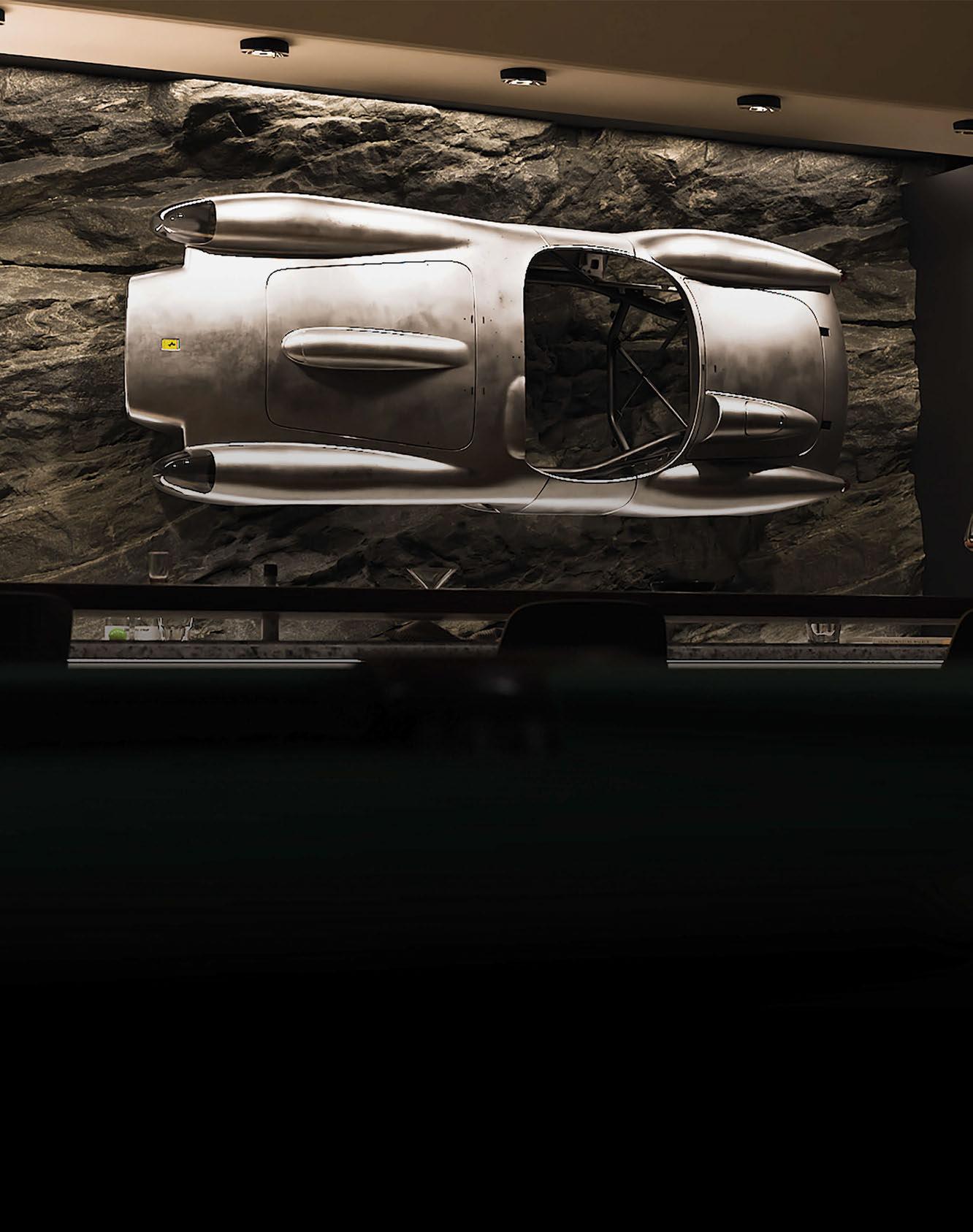
NEXT MONTH
ISSUE 268, ON SALE 27 AUGUST
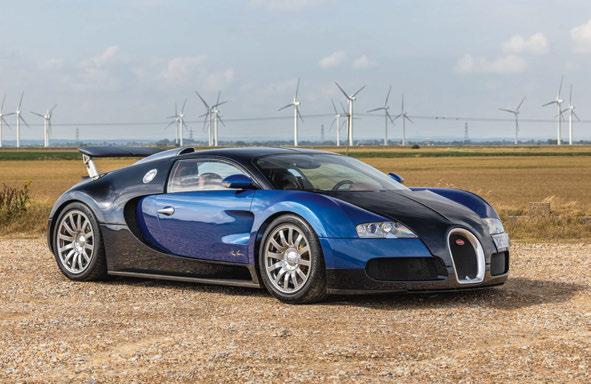
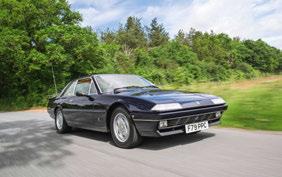
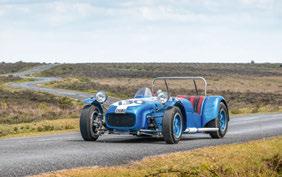
Bugatti Veyron
Celebrating 20 years of the power and the glory
Damon Hill
Exclusive interview with the 1996 F1 champ Lotus 3-7
One-off racer designed by the legendary Len Terry Ferrari 412
Once a V12 bargain, now a rampant icon
Goodyear’s blimp
One hundred years of the iconic airship
(Contents may be subject to change)
EDITORIAL
Editor-in-chief James Elliott james@octane-magazine.com
Associate editor Glen Waddington glen@octane-magazine.com
Art editor Robert Hefferon roberth@octane-magazine.com
Markets editor Matthew Hayward matthew@octane-magazine.com
Founding editor Robert Coucher
Contributing editor Mark Dixon
Italian correspondent Massimo Delbò Design
Contributor Chris Bietzk
Inquiries to info@octane-magazine.com
ADVERTISING
Group advertising director Sanjay Seetanah sanjay@octane-magazine.com
Account director Samantha Snow sam@octane-magazine.com
Dealer account manager Marcus Ross marcus@octane-magazine.com
Lifestyle advertising Sophie Kochan sophie@octane-magazine.com
Advertising inquiries
Tel: +44 (0)1628 510080 Email: ads@octane-magazine.com
SUBSCRIPTIONS,
BACK ISSUES, HELPLINES
Subscribe online at octane-magazine.com/subscribe
Tel: +44 (0)20 3966 6695
Email: customerservice@octane-magazine.com
Back issues can be purchased at octane-magazine.com
FRIDAY AUG 15 AT 4PM I SATURDAY AUG 16 AT 11AM LIVE AUCTIONS
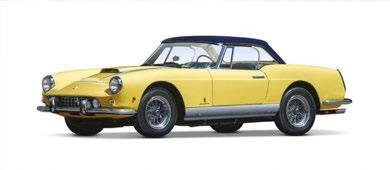
1961 FERRARI 400 SUPERAMERICA SERIES I CABRIOLET
One of Only Six Examples Built Coachwork by Pininfarina Chassis 2407 SA
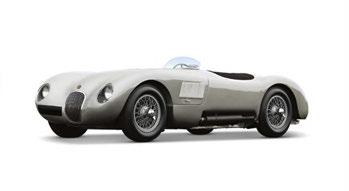
1952 JAGUAR C-TYPE
Exceptionally Authentic Example of Jaguar’s Groundbreaking Sports Racer Chassis XKC 028

2024 BUGATTI BOLIDE
One-Owner Example with Less than 650 Km I Chassis 001

2021 RUF CTR ANNIVERSARY
One of Only 50 Examples Built Less than 500 Miles from New
1973 FERRARI 365 GTB/4 DAYTONA COMPETIZIONE SERIES III
Delivered New to Luigi Chinetti’s North American Racing Team Period Race History at Le Mans, Sebring, Daytona, and Watkins Glen Award-Winning Restoration by Marque Specialist Motion Products Inc. Coachwork by Scaglietti I Chassis 16407
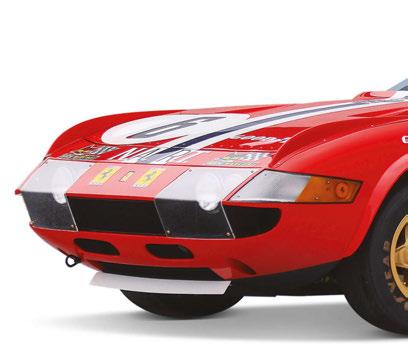
ONLINE BIDDING AVAILABLE REGISTER TO BID: INFO@GOODINGCO.COM OFFICIAL AUCTION HOUSE OF THE PEBBLE BEACH CONCOURS D’ELEGANCE®



2017 PORSCHE 911 RSR-17 Highly Successful, Mid-Engined Works RSR Presented in Its Special Coca-Cola Livery for the 2019 Motul Petit Le Mans
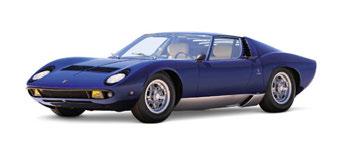
1968 LAMBORGHINI MIURA P400 Restored Under the Supervision of Valentino Balboni Coachwork by Bertone I Chassis 3739
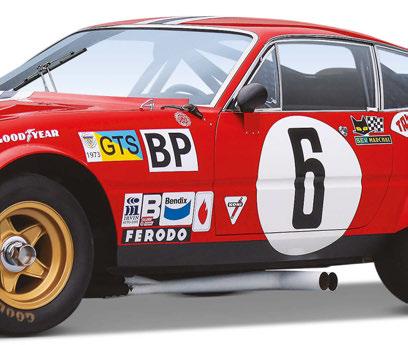
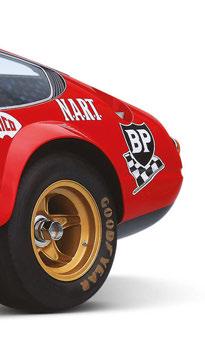
To take advantage of our special offer and get three issues of Octane for £5,either visit octane-magazine.com/subscribe or call +44 (0)20 3966 6695













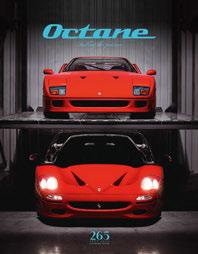
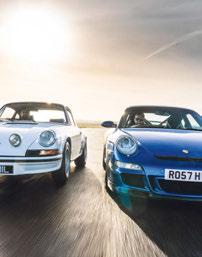
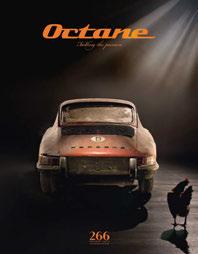
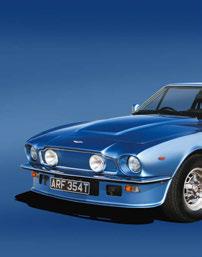


Print issues
AND MANAGEMENT
Managing director Geo Love Editorial director David Lillywhite
Marketing and events manager Rochelle Harman
Marketing and events executive Jasmine Love
Accounts administrator Jonathan Ellis accounts@hothousemedia.co.uk
Magazine operations coordinator Elaine Briggs
Hothouse Media Unit 16, Enterprise Centre, Michael Way, Warth Park Way, Raunds, Northants NN9 6GR, UK www.hothousemedia.co.uk
Syndication and licensing Geo Love geo @hothousemedia.co.uk
Germany Ulrich Sa erling Japan Shiro Horie Netherlands Ton Roks France Yan-Alexandre Damasiewicz Hong Kong, China Chi Chai Chan


Octane is available for international licensing and syndication



Octane is available at the usual branches of UK shops, such as Tesco, Sainsbury’s, Waitrose and independents, as well as WH Smith Travel. You can order the latest magazine or a back issue, delivered direct to your door, by visiting octane-magazine.com
Digital issues
Download the Octane Magazine app on Android or Apple and you will be able to enjoy the new issue. Alternatively you can source the digital edition via either Zinio or Readly.
Subscribe
You can find superb offers on print and digital at octane.co.uk/subscribe . Order before 15 August to start with issue 268.
Problems with your subscription? Please email customerservice@octane-magazine.com













































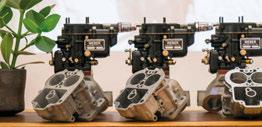
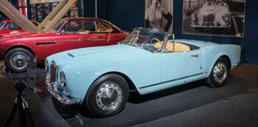





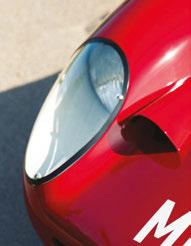
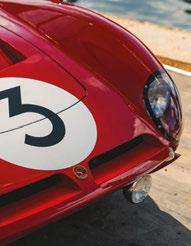

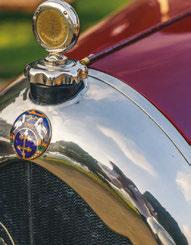
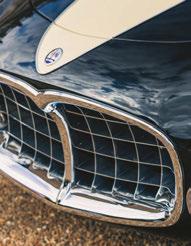
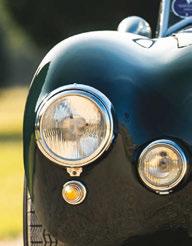

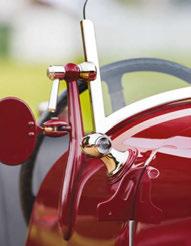
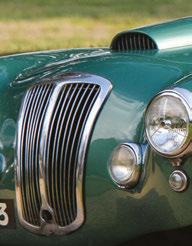

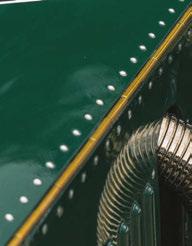
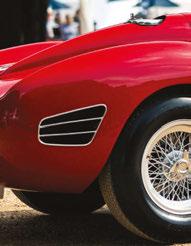
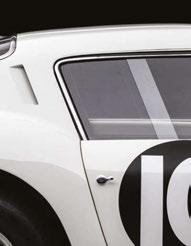
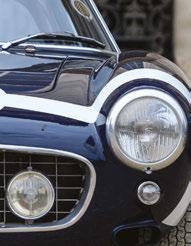
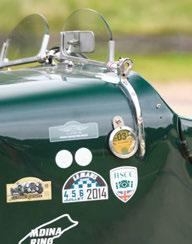
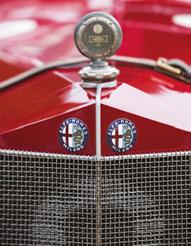
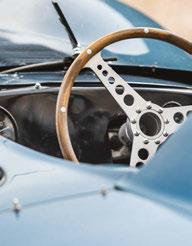
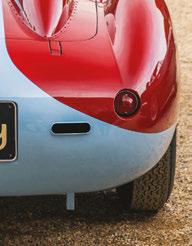
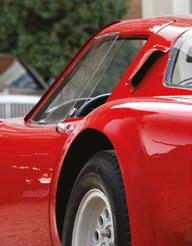
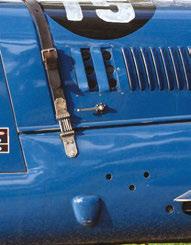
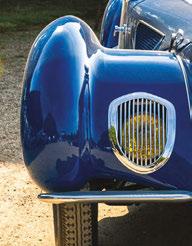

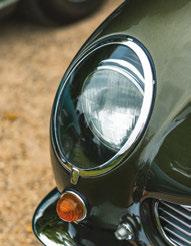

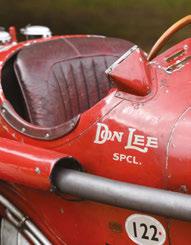
THE RAREST CARS IN THE WORLD
HAMPTON COURT PALACE | 5–7 SEPTEMBER 2025
Ignition
Le Mans Classic
3-6 July
As this year’s 12th edition of the Le Mans Classic was getting underway, there was an official announcement from Peter Auto that from now on this huge French festival will be an annual event. And it was very easy to see how that frequency could be sustained over a weekend of relentless racing from 800 cars in six grids, each having three outings, plus appetisers from Endurance Racing Legends, Group C and an all-Porsche grid. There was no shortage of extraordinary cars on track, sometimes with terrifying power differences, such as the British-entered two-stroke Saab 93 sharing a grid with the power of Lister Jags, the Breadvan Ferrari and the like.
Of course, there were also parades, campsite parties and lots of other entertainment to be enjoyed. A top weekend. Kristof Vermeulen
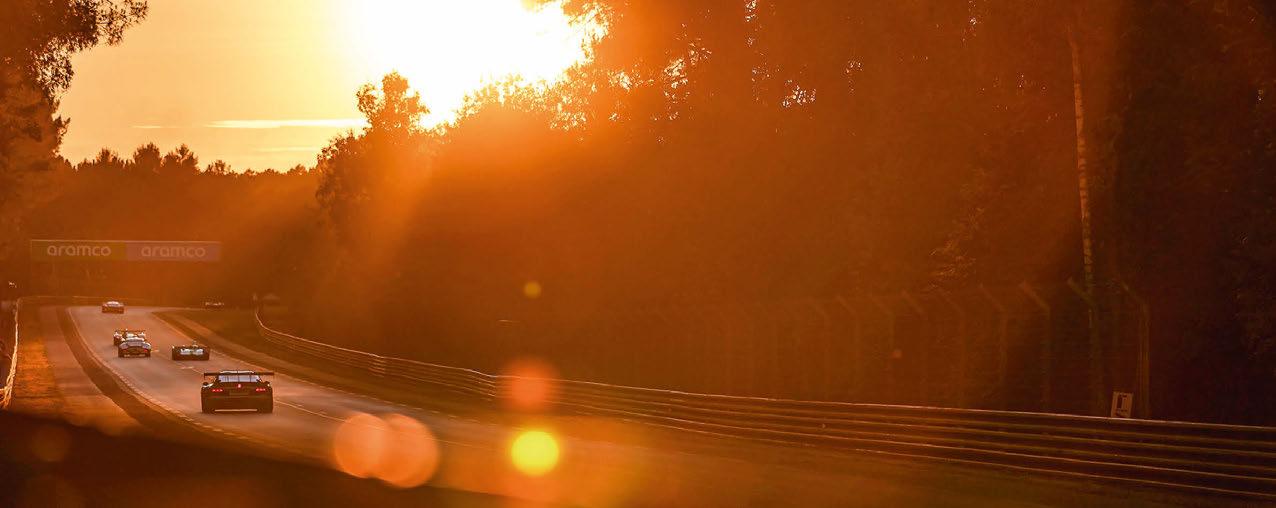
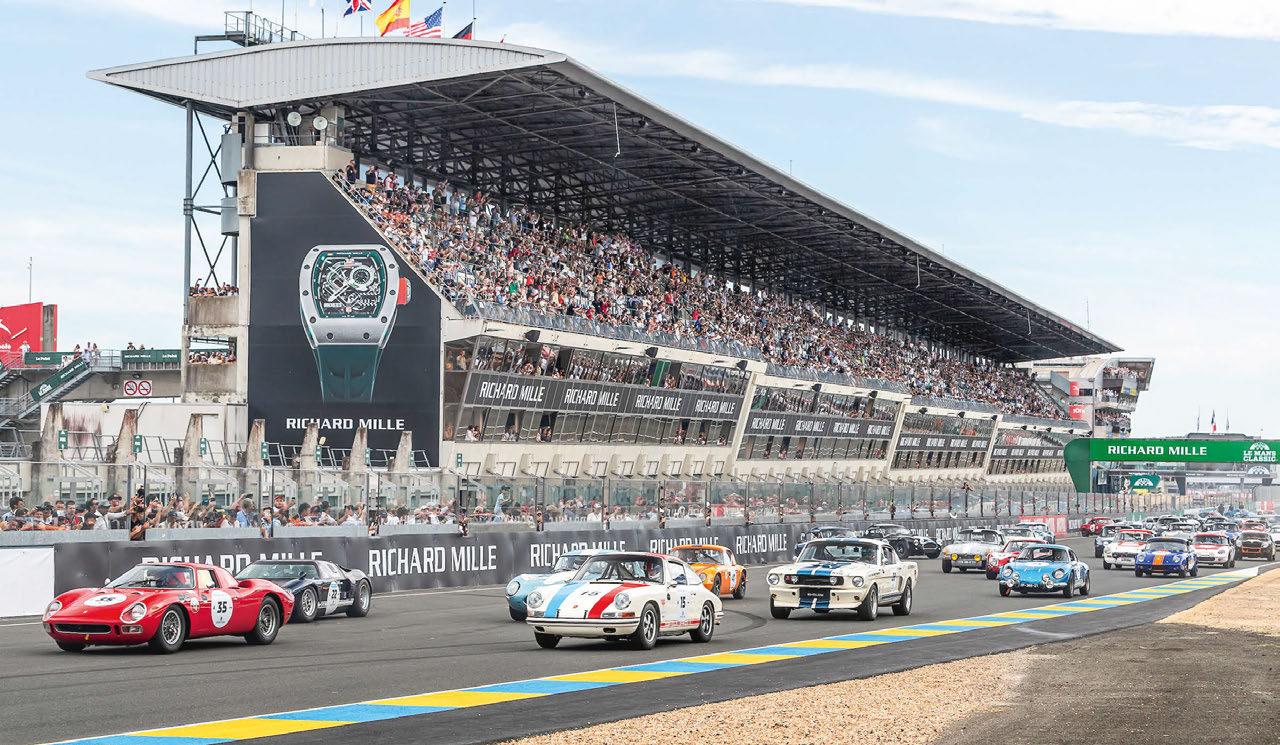
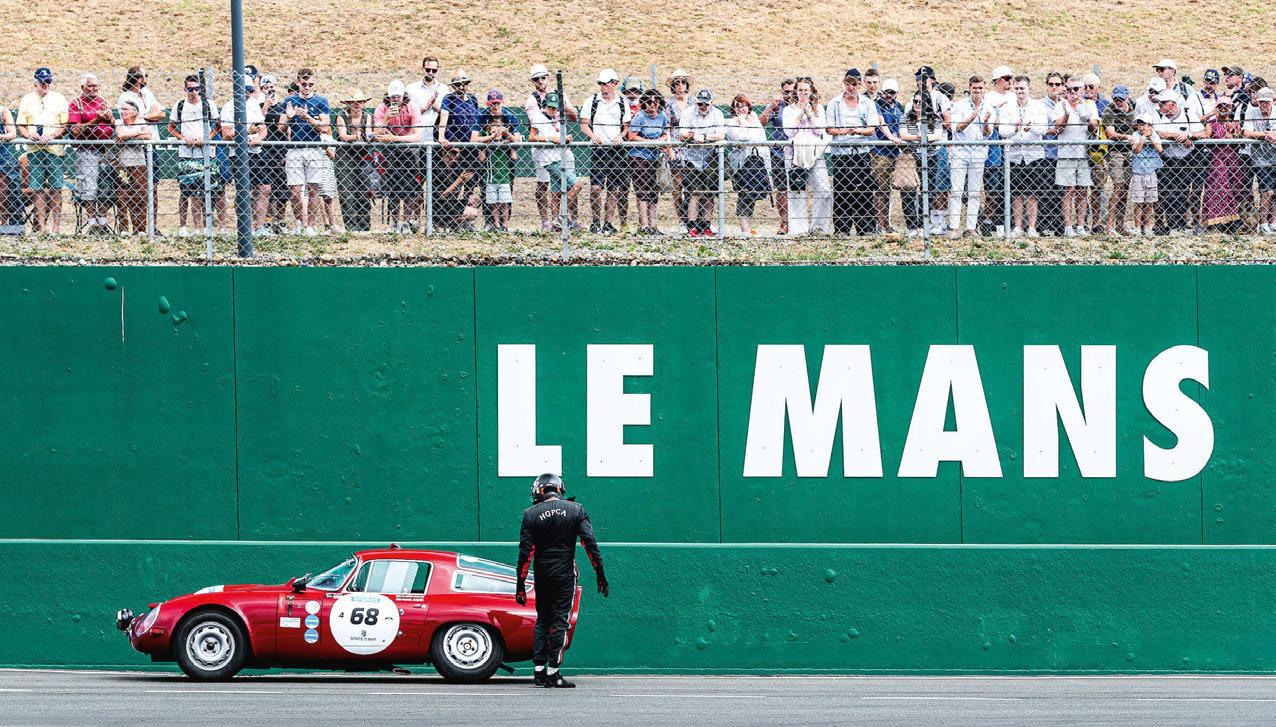


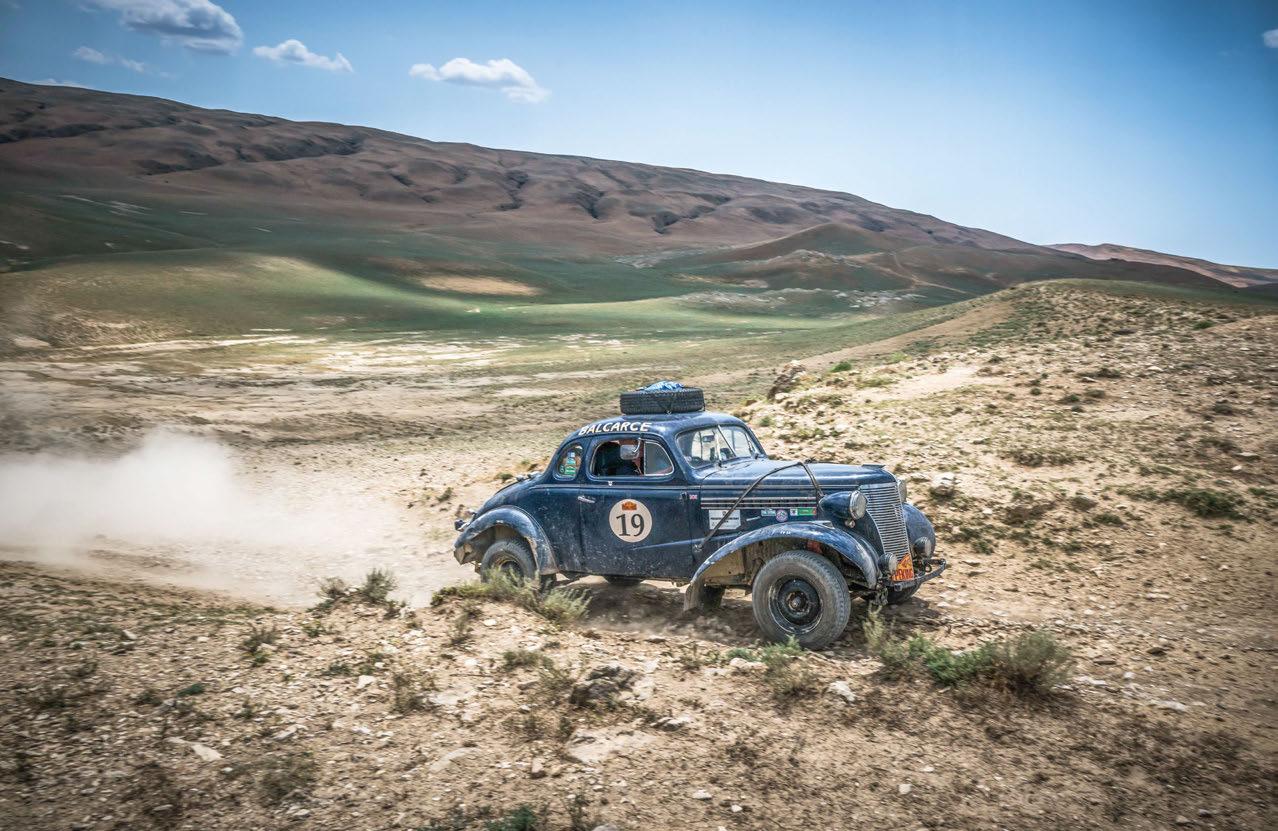
Peking to Paris
Motor Challenge
17 May – 22 June
Top three Vintageants after 37 days and 14,889km were Tony Sutton and Andrew Lawson (Chevrolet Master Coupe), Tony Rowe and Mark Delling (Ford Coupe 91A) and debutants Jorge and Cristobal Perez Companc in another Chevy Master Coupe. Brian Palmer and David Bell were top Classic in a Peugeot 504 Coupé from Harold Goddijn / Corinne Vigreux (Porsche 911) and Steve Osborne / Robert Smith (Ford Escort). Will Broadhead / Ian Skelton
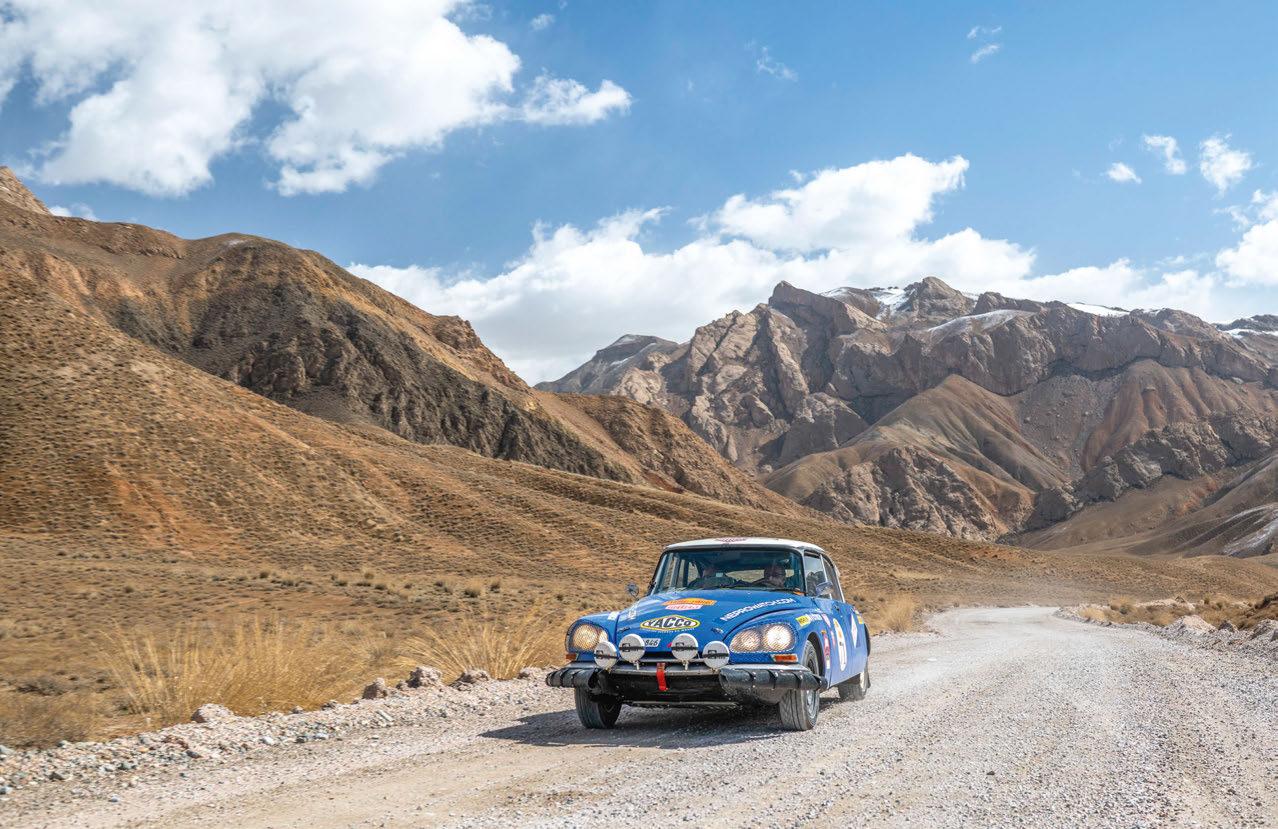



Heveningham Concours 28-29 June
Best of show at this picturesque Su olk concours went to the National Motor Museum’s ex-Malcolm Campbell 1920 Sunbeam 350HP
Blue Bird. A 1939 Gloster Gladiator MkII took the aviation spoils in the Ray Hanna Trophy. Cameron Maynard
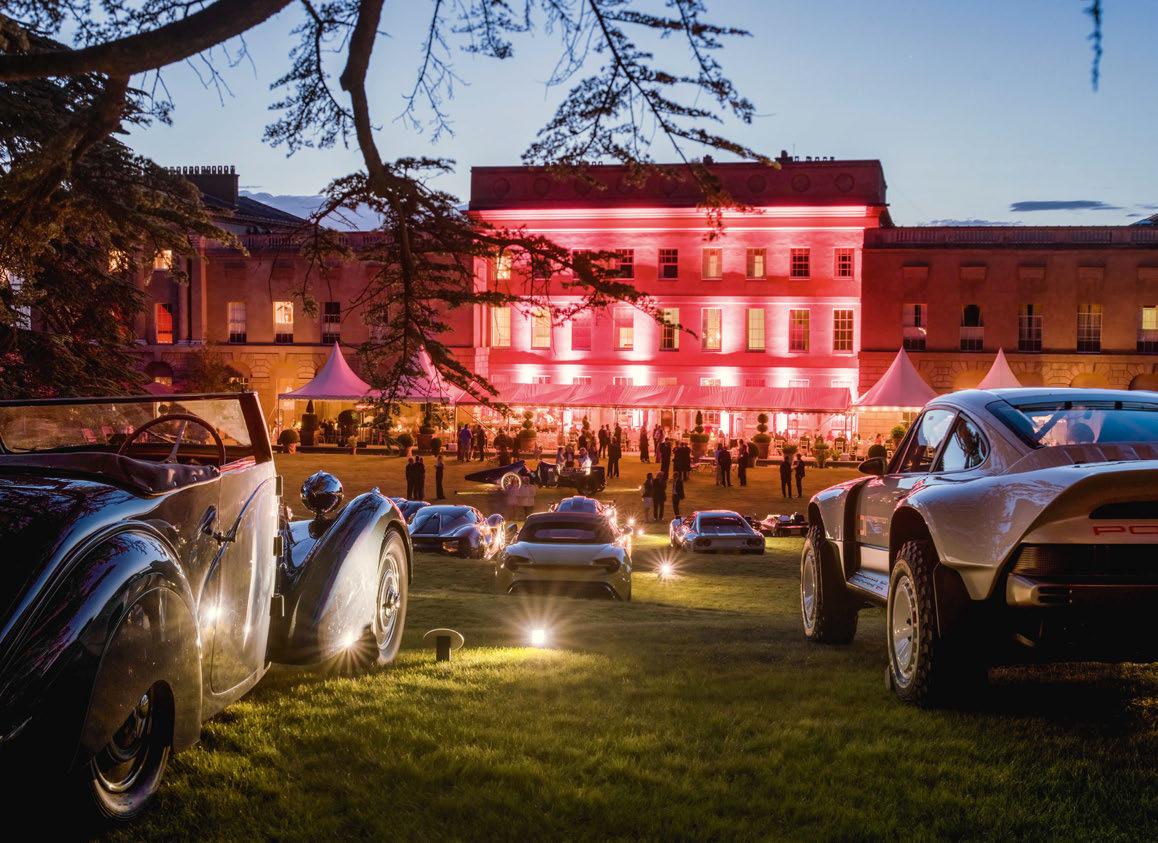
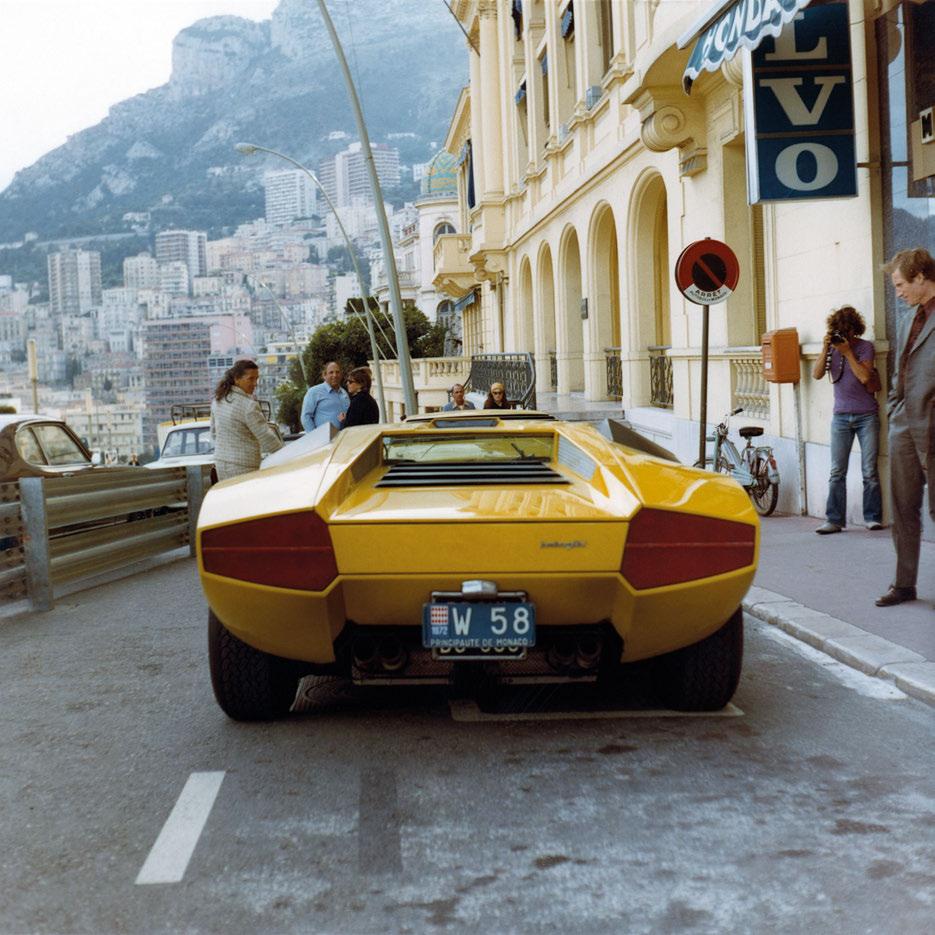
We want to hear from you Work has started on the follow-up to our award-winning Lamborghini Miura book and yes, it is going to be the definitive work on the Countach. We’d love to hear from owners – past and present – and anyone with period photographs or tales from the factory, workshop, test track, showroom or disco… Email: info@thecountachbook.com
Publication target: Christmas 2026

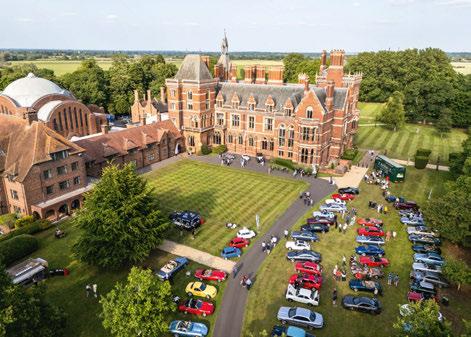
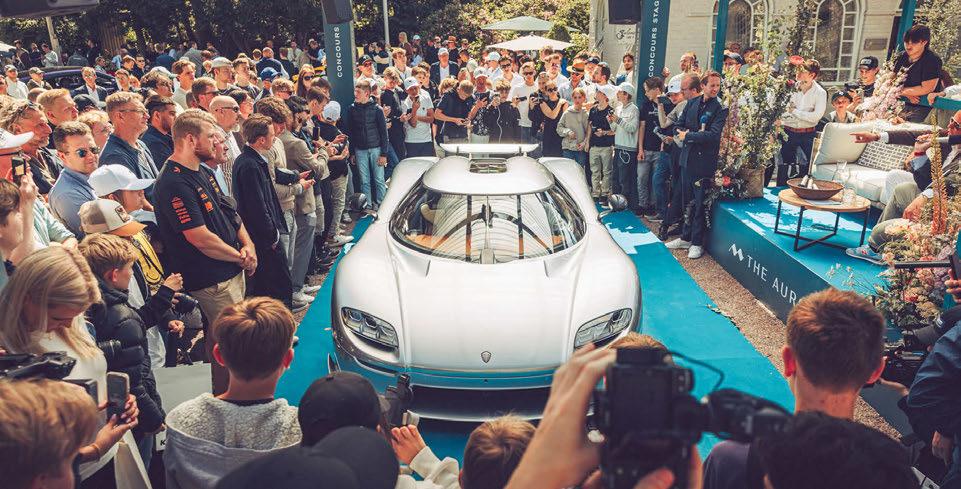
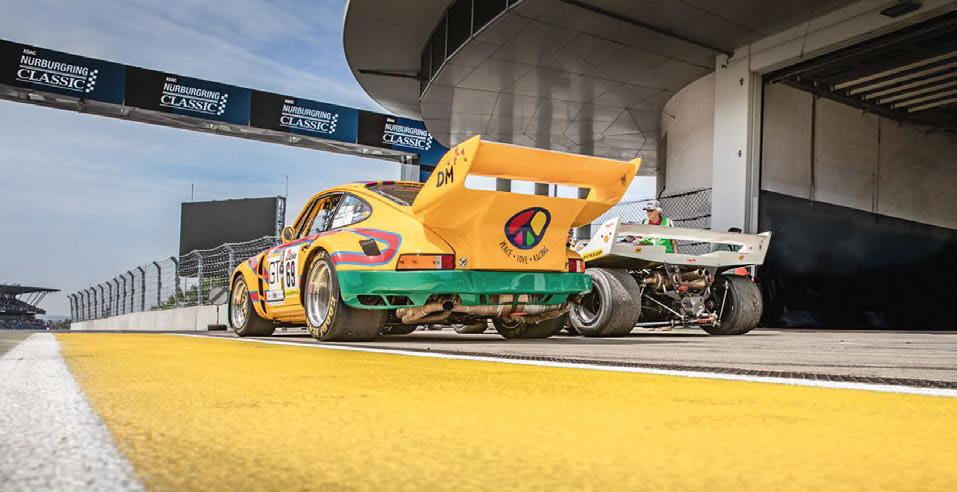
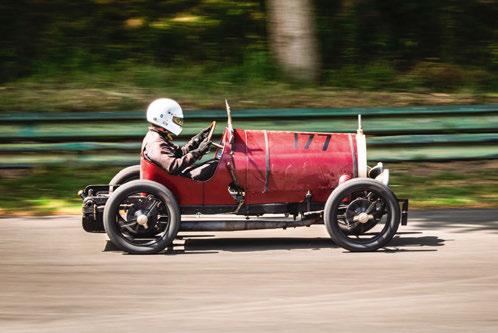

CLOCKWISE, FROM TOP LEFT
Alfa Revival Cup 27-29 June
Defending champion Davide Bertinelli took a spectacular victory in the close-fought series’ third round. Just Imola, Mugello and Spa to go… Canossa Events
H&H Classics & Coffee 11 June
Auction company
H&H Classics attracted 100 cars to its first Classics & Coffee evening at Kelham Hall. H&H Classics
The Aurora 27-29 June
Koenigsegg’s 1385bhp CC850 celebrated 20 years of the CC8S and drew admirers at the Swedish concours, which had 60 cars and attracted 15,000 visitors. Classic Best of Show was a 1970 Lamborghini Miura. The Aurora Nürburgring Classic 13-15 June
As ever, an incredible weekend of racing at the Green Hell. Günter Biener
Cash & Rocket 5-8 June
60 women in red cars toured from Rome to Taormina to raise funds for Save the Children UK and Sumbandila.
Diana Gomez
Bugatti Owners’ Club Members’ Meeting 28 June
Rupert Marks in his Bugatti Brescia at Prescott Hill Climb. Peter McFadyen
Sea and Air Freight
Worldwide Customs Brokerage
Race and Rally Transportation
International Storage
UK and European Trucking
Vehicle Registration
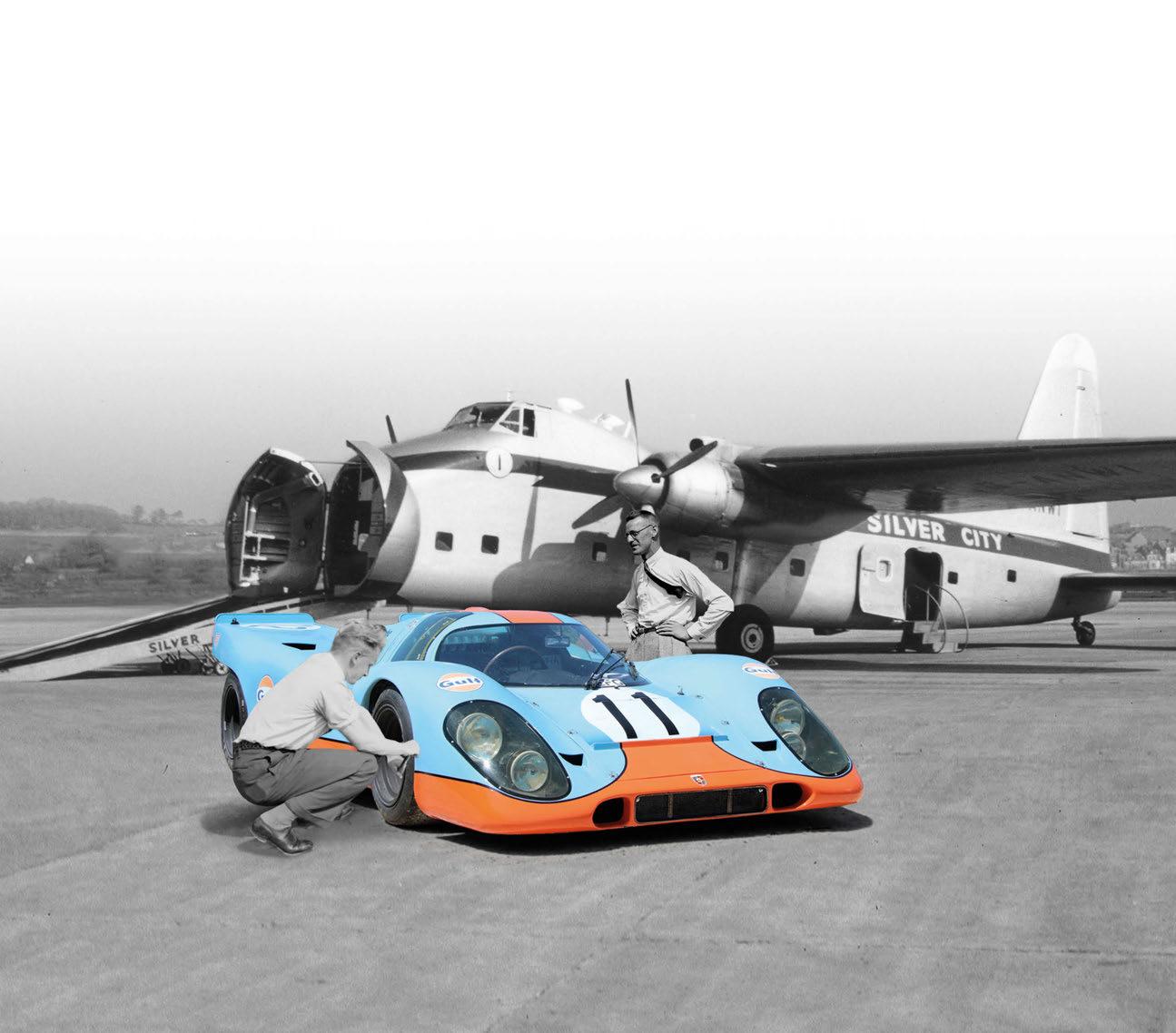



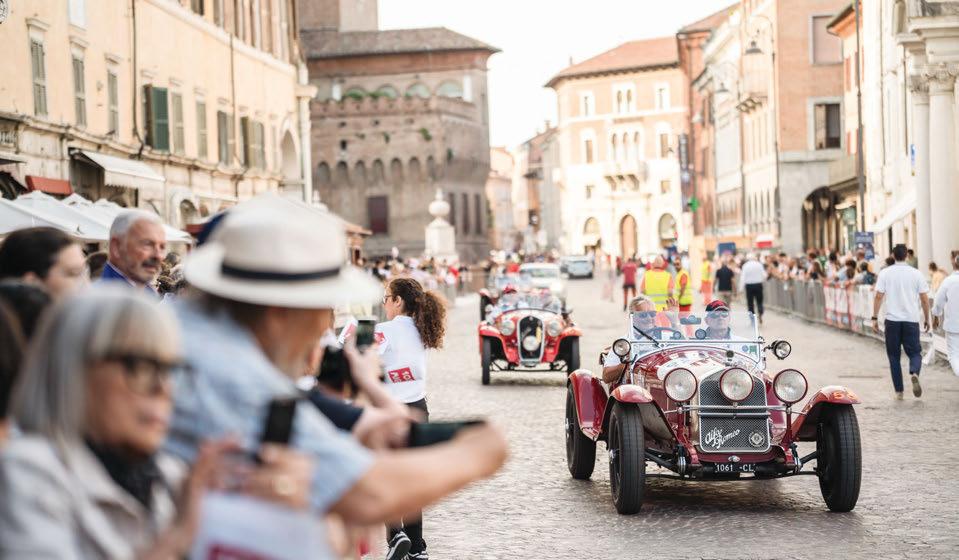
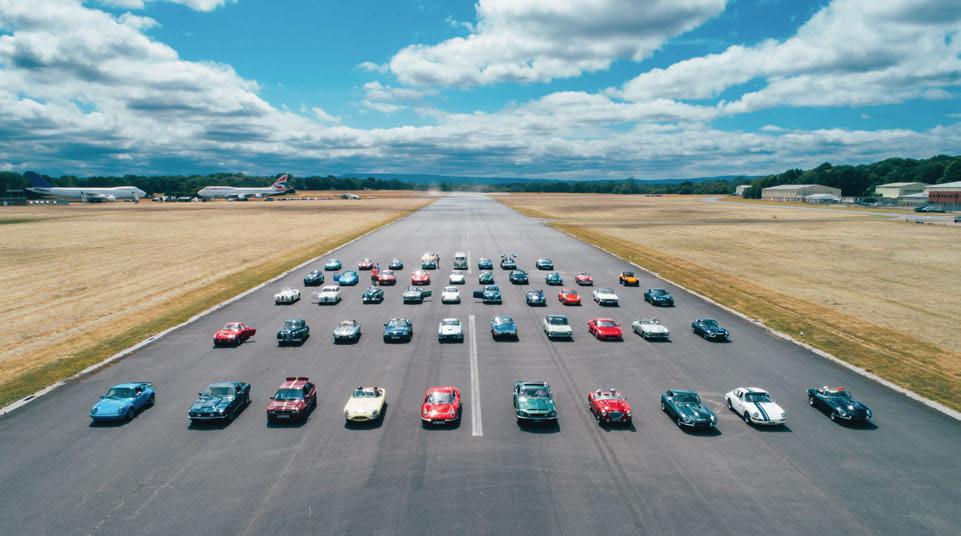
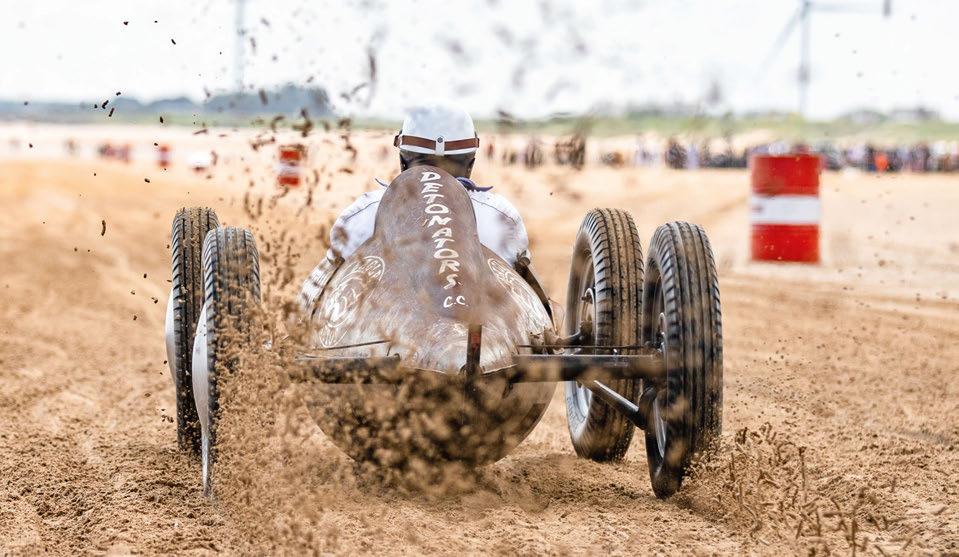
FROM TOP
Mille Miglia 17-21 June
With Alfa 6Cs dominating the podium, Andrea Vesco and Fabio Salvinelli made it six outright wins in theirs. Marco Marani and Luca Bergamaschi’s example (pictured) came home in 63rd.
1000 Miglia
Hope Classic Rally 27 June
Marking its tenth anniversary, this unique charity event (hopeclassicrally. org), in which participants can drive their own cars or get surprised with an exotic loaned by a generous event supporter, started at Wotton House Hotel in Surrey. It wound its way to Dunsfold for a gourmet lunch and a surprise visit from Harrison Newey and a brace of McLaren F1s, before heading back to the hotel for dinner and a superb charity auction.
Jono Renton
Race the Waves 12-15 June
The golden sands of Bridlington’s South Beach on the Yorkshire coast come alive annnually to the roar of cars, motorbikes and a lot of hot rods for the Race the Waves festival. Cars tend to race down the 200-yard course in pairs, whereas the ’bikes might be in groups of four or five.
Michael Holden
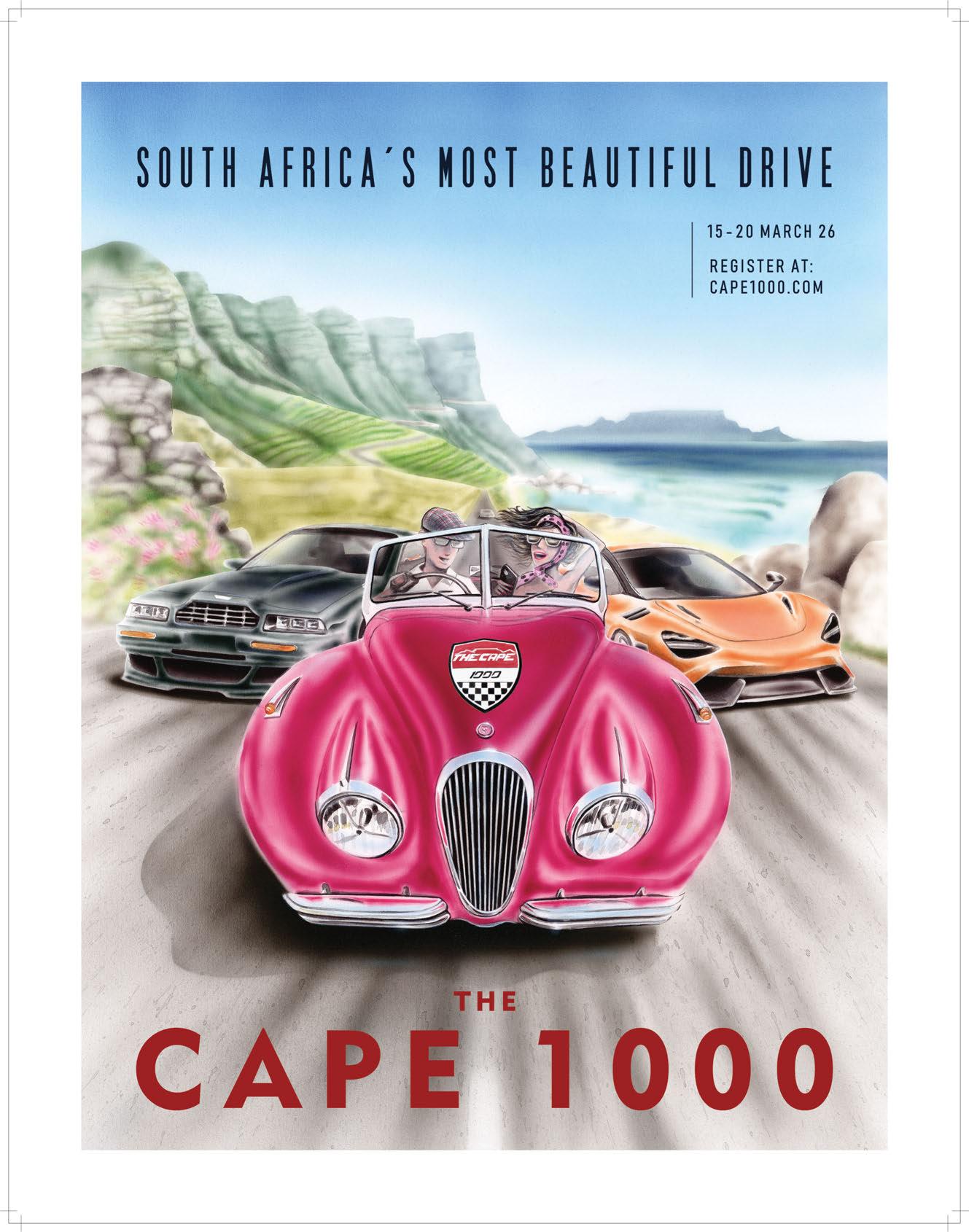
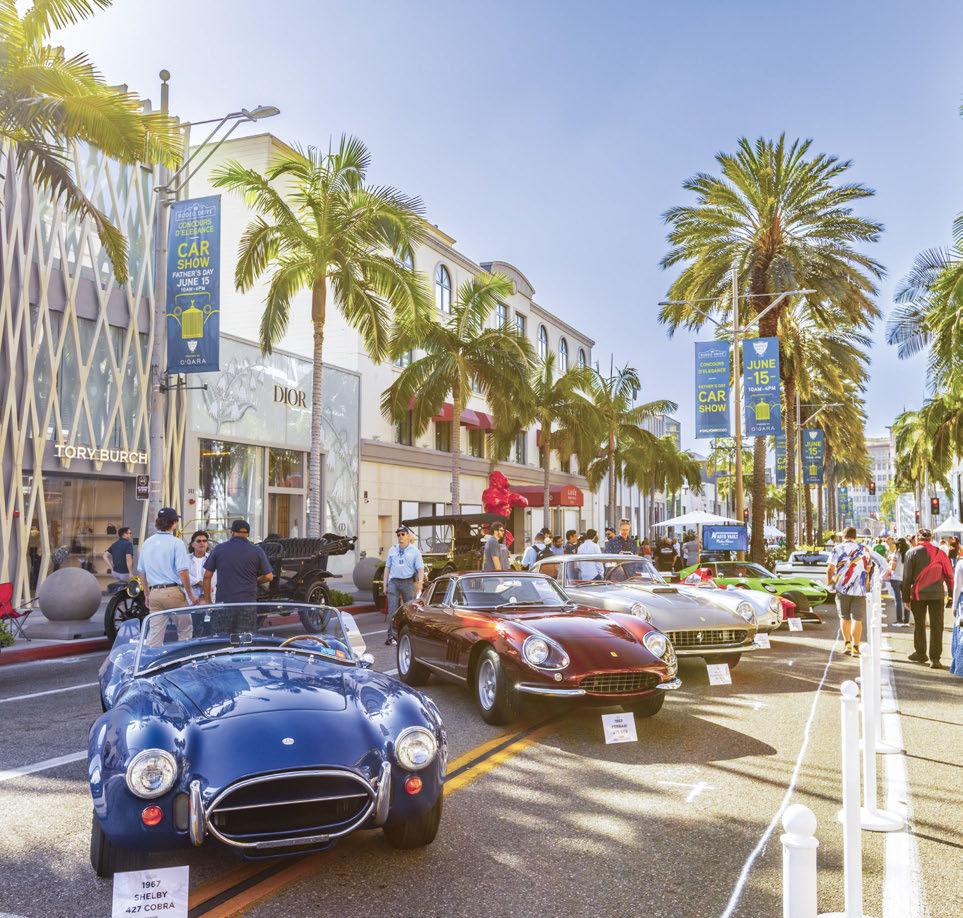
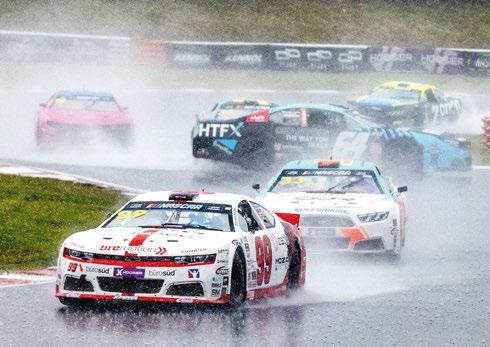
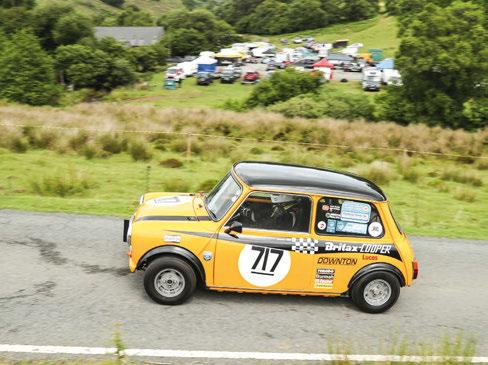
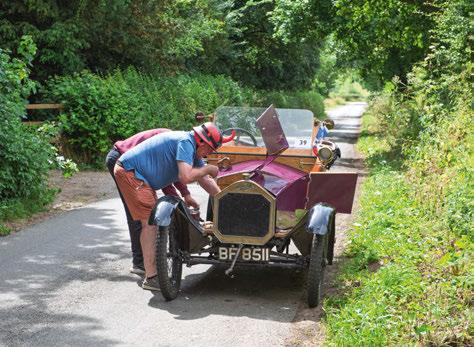
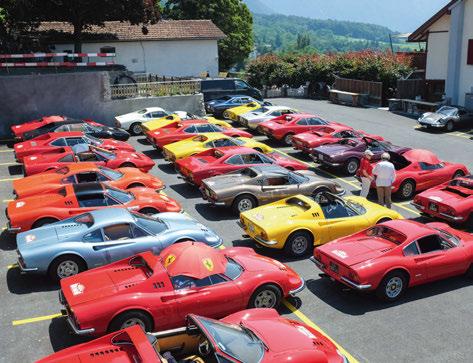
CLOCKWISE, FROM TOP Rodeo Drive Concours d’Elegance 15 June
Classic cars took over one of the world’s most famous shopping streets on Father’s Day for the 30th time, in a special show masterminded by Bruce Meyer. The free event raised cash for police and fire services, attracting 40,000 visitors. Best of Show was Richard and Boni Losee’s 1937 Mercedes-Benz 540K Spezial Roadster. Evan Klein
VSCC LCES Summer Rally 22 June
Philip and Paul Heneghan’s 1914 Humber Humberette receives roadside attention on the Light Car and Edwardian Section event. Peter McFadyen
International Dino meeting 19-22 June
Some 55 Dinos were at Silvaplana near St Moritz in Switzerland for the 50th meeting. Mario Laguna
Epynt Hillclinb 14 June
Regular hillclimber
Carole Nicholls supported the only competitive hillclimb currently running in Wales in her Britax-liveried Mini. Paul Lawrence
American Speedfest 12 7-8 June
British weather played havoc with the on-track action at Brands Hatch’s annual celebration of Americana. Michael Holden



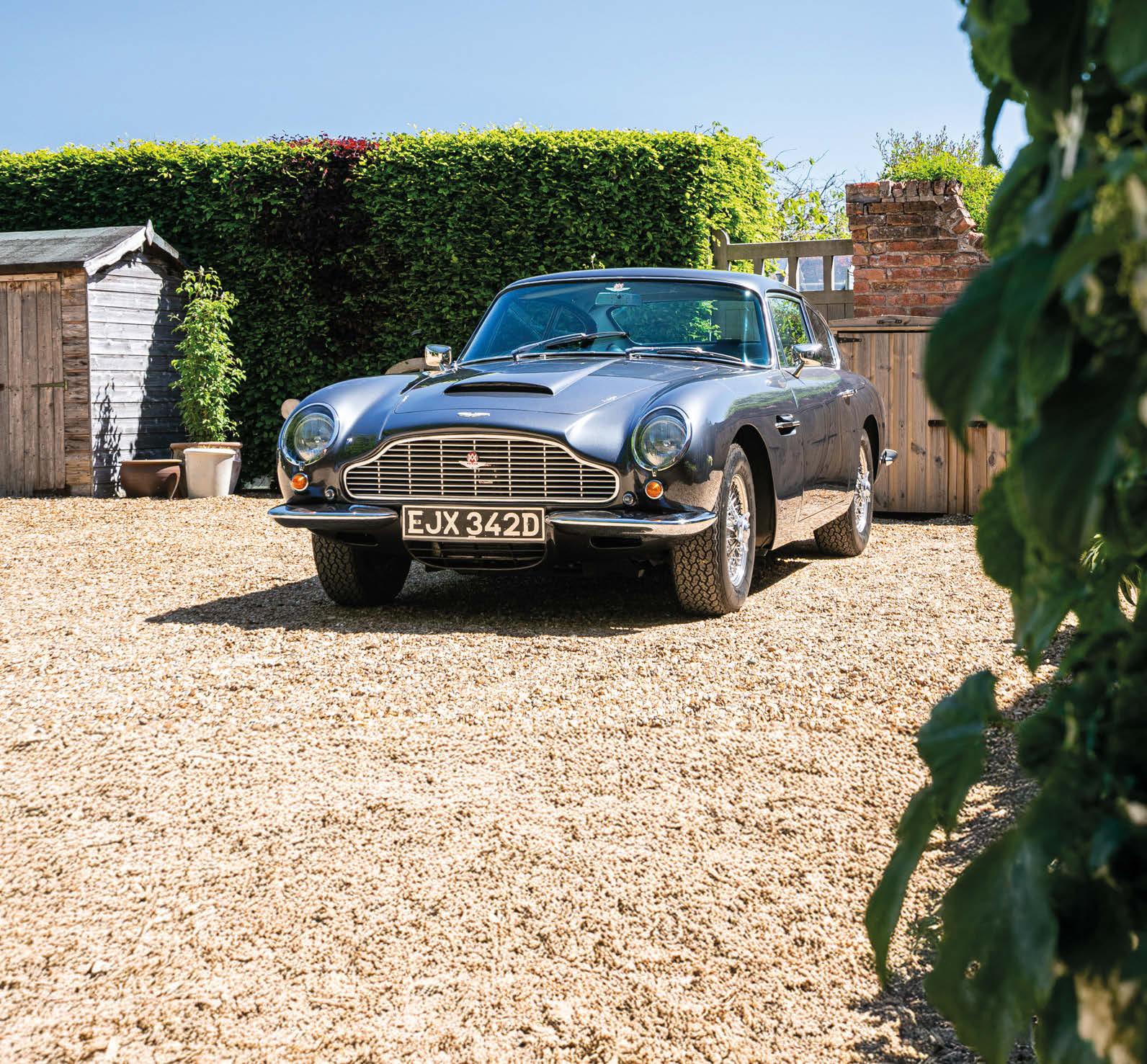




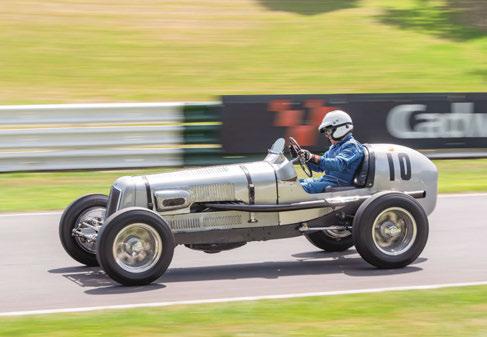
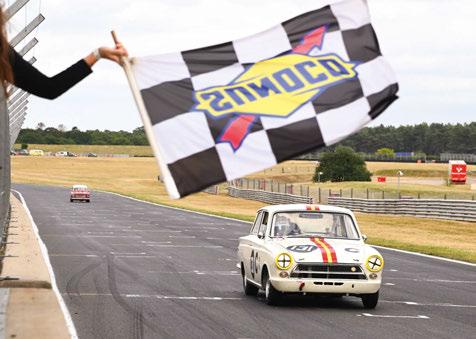

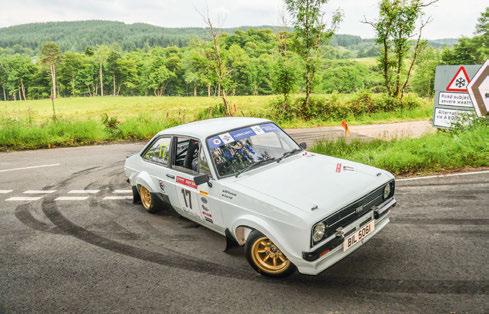
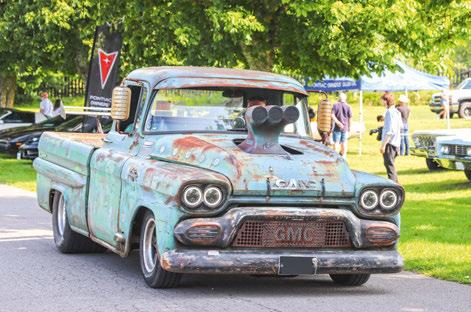

CLOCKWISE, FROM TOP LEFT
VSCC Cadwell Park 21 June
David Morris brought ERA R11B from Devon to Lincolnshire to win the Richard Seaman Memorial Trophy for the tenth time.
Peter McFadyen
HRDC
Snetterton 29 June
‘No frills, just the thrills’ is the HRDC’s motto: it crammed three races (plus qualifying and practice) into this Norfolk event.
Jeff Bloxham
Equipe Classic Racing
7-8 June
Saturday’s feature race at Silverstone was the 40-minute Syd Segal Memorial for Austin-Healeys, with Jaap Sinke/Jack Rawles leading the biggest field of ’Healeys – 41 – seen for some time.
Peter McFadyen
Beaulieu Custom & American Show 15 June
With 500 cars and 9500 visitors, it was the biggest event yet.
National Motor Museum
Dragstalgia 27-29 June
Roy Watts blasts away in his Dodge Charger in the Nostalgia Super Stocks class during the Santa Pod weekender.
Chris Tarling
BHRC Argyll Rally 20-21 June
Will Rowlands was top finisher in the rally’s BHRC element.
Ben Lawrence
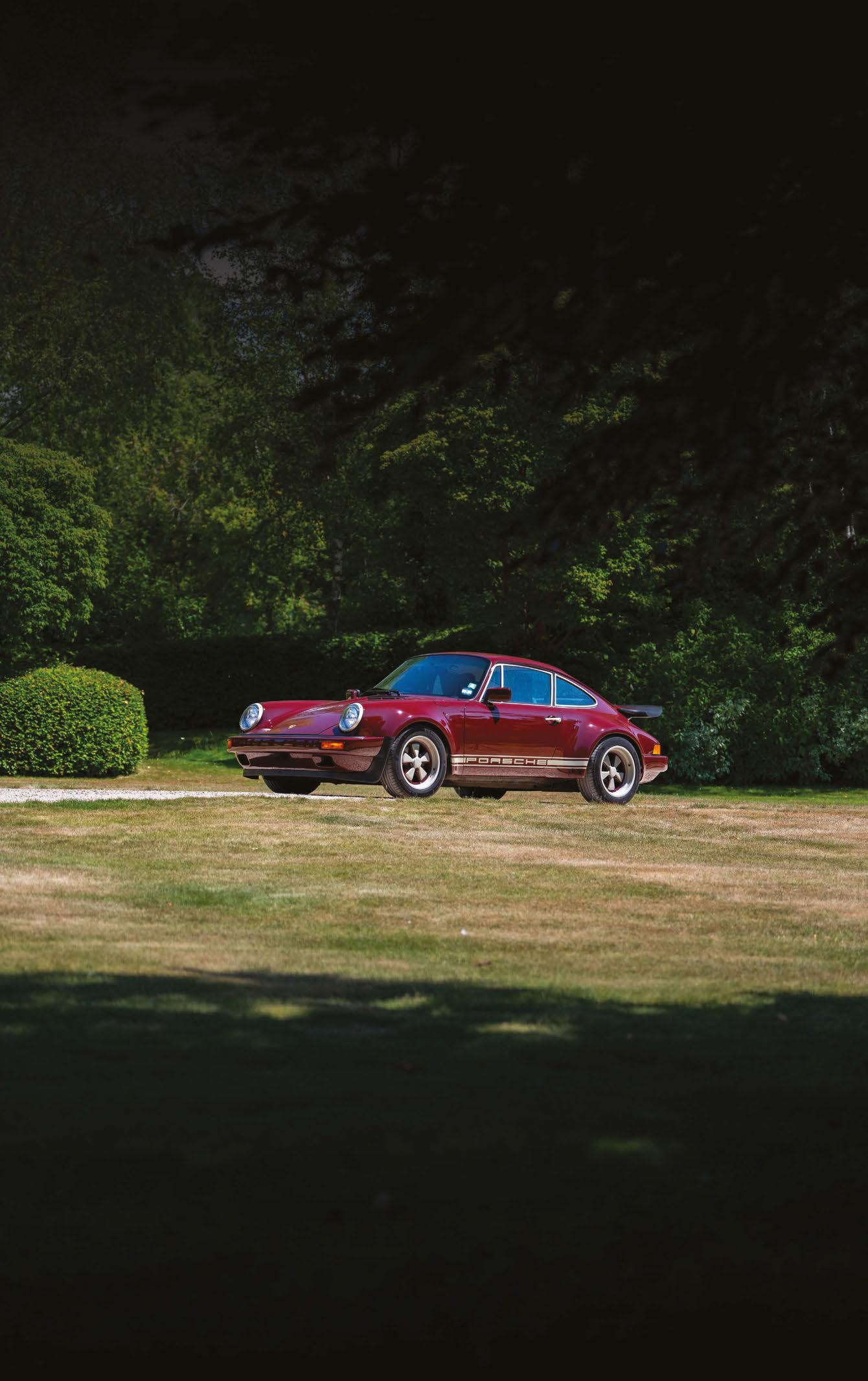
Dates for your diary
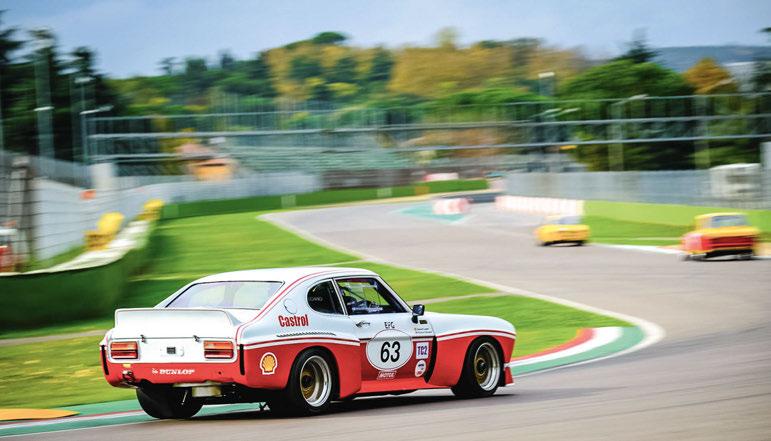
24-26 July
Eifel Rallye Festival
Sideways action on stages formerly used in the German rally championship. eifel-rallye-festival.de
24-27 July
Coppa d’Oro delle Dolomiti
The beautiful mountain resort of Cortina d’Ampezzo in Italy hosts a regularity rally for pre1972 classics. coppadorodelledolomiti.it
25 July
Classic Motor Hub
Treasure Hunt
In addition to its Coffee & Classics gatherings, the Classic Motor Hub in Bibury is now running regular ‘Treasure Hunt’ events, which see entrants drive a route through the Cotswolds, solving puzzles along the way. classicmotorhub.com
25-26 July
Concours of Elegance Germany
Back following its successful debut last year, and bringing 50 classics to the shores of Lake Tegernsee in the Bavarian Alps. concoursofelegancegermany.com
25-27 July
Oulton Park Gold Cup
Among the attractions this year is a celebration of British Formula 1 team BRM; a pair of races organised by the VSCC; and a tenth-anniversary edition of the Cheshire Concours. oultonpark.co.uk
25-27 July
Imola Classic
The various historic racing series organised by Peter Auto return to Imola for the first time since the 2018 season. peterauto.fr
26 July
Hagerty Festival of the Unexceptional Grimsthorpe Castle welcomes charmingly ordinary cars built between 1970 and 2000. hagerty.co.uk
27 July
Brooklands Summer Classic
Gathering & Autojumble
Two- and four-wheeled classics descend on Brooklands, along with sellers of automobilia and vintage goodies. brooklandsmuseum.com
1-3 August
Classic Days Düsseldorf
The grounds of the Rittergut Birkhof just outside Düsseldorf are packed with 7000 classics. classic-days.de
1-3 August
Oldtimer Grand Prix
Cars spanning nine decades of motorsport history do battle at the Nürburgring. oldtimergrandprix.com
1-10 August
Hot August Nights
This gathering of pre-1980 cars draws more than half a million people to Reno, Nevada. hotaugustnights.net
2-3 August
Beaulieu Supercar Weekend
Some of the world’s rarest and most outrageous supercars are gathered together in Beaulieu. beaulieu.co.uk
2-3 August
Vintage Prescott
Pre-war cars blast up Prescott’s traditional 880-yard course, established by the VSCC in 1938. vscc.co.uk
2-8 August
Bonneville Speed Week
Speed freaks from around the world bring their hopped-up machines to north-western Utah and floor them on the Bonneville Salt Flats. scta-bni.org
3 August
Rally of the Giants
American cars seldom seen on this side of the pond gather at Stonor Park in Oxfordshire. allamericanautoclub.com
3 August
Megaphonics
Europe’s biggest Porsche event, held at Boxengasse in Bicester, is a celebration of the marque’s air-cooled cars. Look out this year for a special display of Porsche 962 racing cars. boxengasse.com
3 August
Haynes Breakfast Club
British cars take centre-stage for August’s Breakfast Club event at the Haynes Motor Museum. haynesmuseum.org
5-8 August
Suffolk Cloverleaf
Based at Kesgrave Hall outside Ipswich, this lighthearted rally eschews traditional competition in favour of fun team challenges. rallytheglobe.com
8-17 August
Monterey Car Week
Car ‘Week’ is now a ten-day extravaganza with auctions and shows galore. The programme concludes with three worldfamous concours: The Quail (15 August), Concorso Italiano (16 August), and the Pebble Beach Concours d’Elegance (17 August). whatsupmonterey.com
13-16 August
Rolex Monterey Motorsports Reunion
First-rate historic racing at Laguna Seca in California. weathertechraceway.com
15-17 August
The British Motor Show
Displays of classic cars, stunt shows, a trade village and much more at the Farnborough International Exhibition Centre. thebritishmotorshow.live
21-24 August
Passione Engadina
Based in St Moritz and with a oneday, ladies-only rally in addition to the main two-day event. Porsche is the featured marque in 2025, meaning its cars will make up one third of the field. passione-engadina.ch
22-24 August
Silverstone Festival
Celebrating 75 years of Formula 1 but featuring an array of grids, including one for Group C cars. silverstone.co.uk
22-24 August
CarFest
Held again at Laverstoke Park Farm, and again treating visitors to lots of live music as well as car displays. Among the headliners this time are Travis and Madness. carfest.org
23 August
Classic Motor Hub
’60s Summer Party
An evening event for fans of the cars and music of the 1960s. classicmotorhub.com
23 August
RADwood
A celebration of the cars and pop culture of the ’80s and ’90s, held at Bicester Motion. hagerty.co.uk
27-31 August
Salon Privé
Blenheim Palace hosts one of the UK’s premier concours, following which the entries will be joined by 1500 club and private cars. salonpriveconcours.com
29 August – 1 September
Lime Rock Historic Festival
The racing at Lime Rock Park in Connecticut is followed by a concours and a massive display of cars and motorcycles. limerock.com
30 August
Zoute NextGen Rally
Running through West Flanders in Belgium, and for crews featuring at least one member aged 18-50. zoutegrandprix.be
30 August
Rustival
You’ll see an entertainingly diverse collection of vehicles at Rustival at the British Motor Museum: the organisers welcome ‘all vehicles of all ages in all conditions – from clapped-out to concours!’ britishmotormuseum.co.uk
30 August
VSCC Mallory Park
The VSCC’s final race meeting of 2025, featuring the Club’s famous handicap race for Edwardian cars. vscc.co.uk
Until 31 August
‘Big in Japan’ exhibition
Autoworld museum in Brussels is currently packed with Japanese classics, among them the Mazda 787B that won at Le Mans in 1991. autoworld.be
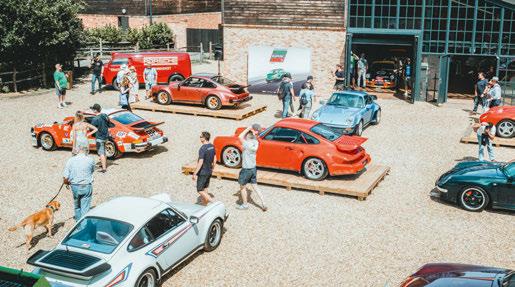
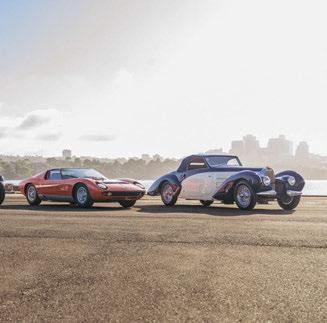
BOOK NOW!
Secure your place; make travel plans
Zoute Grand Prix Car Week 8-12 October
In its own words ‘A five-day high-end car, art and lifestyle festival’. Expect tours and rallies, a top-end concours, a Bonhams auction and (new for 2025) a Broad Arrow sale, all in and around Belgium’s most chic resort, which is only a couple of hours’ drive from Calais. zoutegrandprix.be
Oberoi Concours 20-22 February 2026
India’s five-star Oberoi Udaivilas hotel in Udaipur hosts again. The inaugural event took Concours Event of the Year at the 2024 Concours Year Awards and Breakthrough Event of the Year at the International Historic Motoring Awards 2024. Sandra Button, Pebble Beach Concours d’Elegance chair, returns as Chief Judge for cars. theoberoiconcours.com
Sydney Harbour Concours d’Elegance 27 February – 1 March 2026
The southern hemisphere’s glitziest concours will again take place in the spectacular setting of Cockatoo Island in the middle of Sydney Harbour – accessible only by water, though that’s easily done by ferry. The world-class 2025 field included Porsche 917/30, Bugatti T57C Aravis by Gangloff , Lamborghini Miura and the winning Alfa Romeo 6C 1750 Gran Sport by Figoni – all set against the industrial backdrop of the dormant shipyard. sydneyharbourconcours.com.au
Peking to Paris Motor Challenge 4 June – 16 July 2028
The 2025 event has just finished (see pages 22-23) and HERO-ERA is now booking crews in for the 2028 version of the trans-Asia and Europe epic. To mark its tenth edition, it will be the longest Peking to Paris rally to date, covering some 17,500km over 42 days. It will also visit Mongolia for the first time since 2019 and introduce two new classes: Three Wheels or Less and 1907 Tribute. hero-era.com
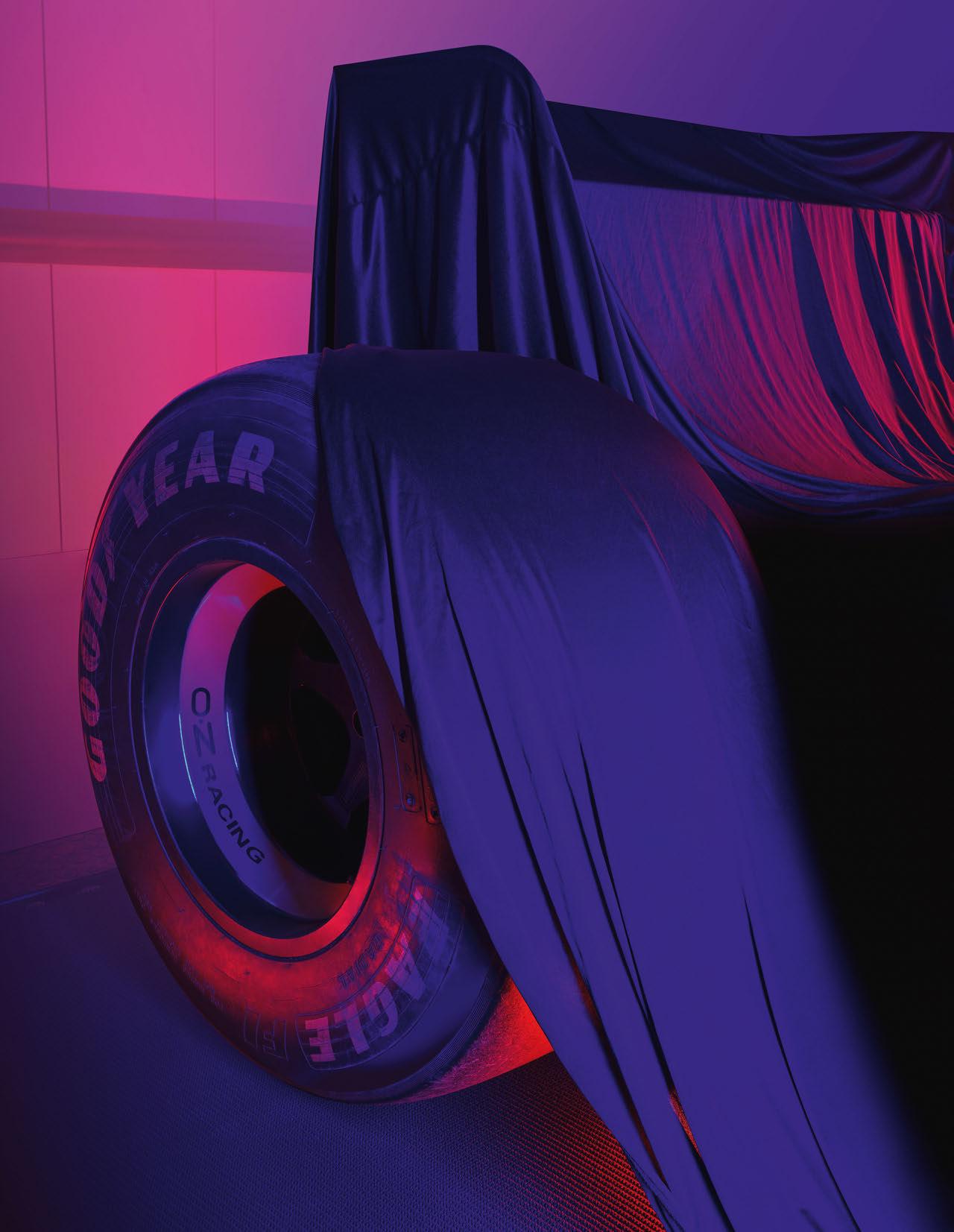
MAKE A WISH. WE MAKE IT COME TRUE.
Owning a collector’s car goes beyond driving — it’s about the experience, the finer details, the passion. Our concierge service ensures that every aspect of your automotive lifestyle is seamlessly taken care of. From routine maintenance and bespoke care to door-to-door transport and VIP event access, we tailor every service to your needs. No request is too small, no expectation too high. Your car, your passion — handled with precision, discretion, and expertise.
Comebacks and collapses: what on Earth is going on with UK car-makers?
After a flurry of eyebrow-raising announcements and disturbing rumours of major closures and job losses in the UK, it’s time to find out what’s really going on with long-dead Marcos and Jensen, as well as Lotus, Morgan, McLaren et al
Words Andrew English
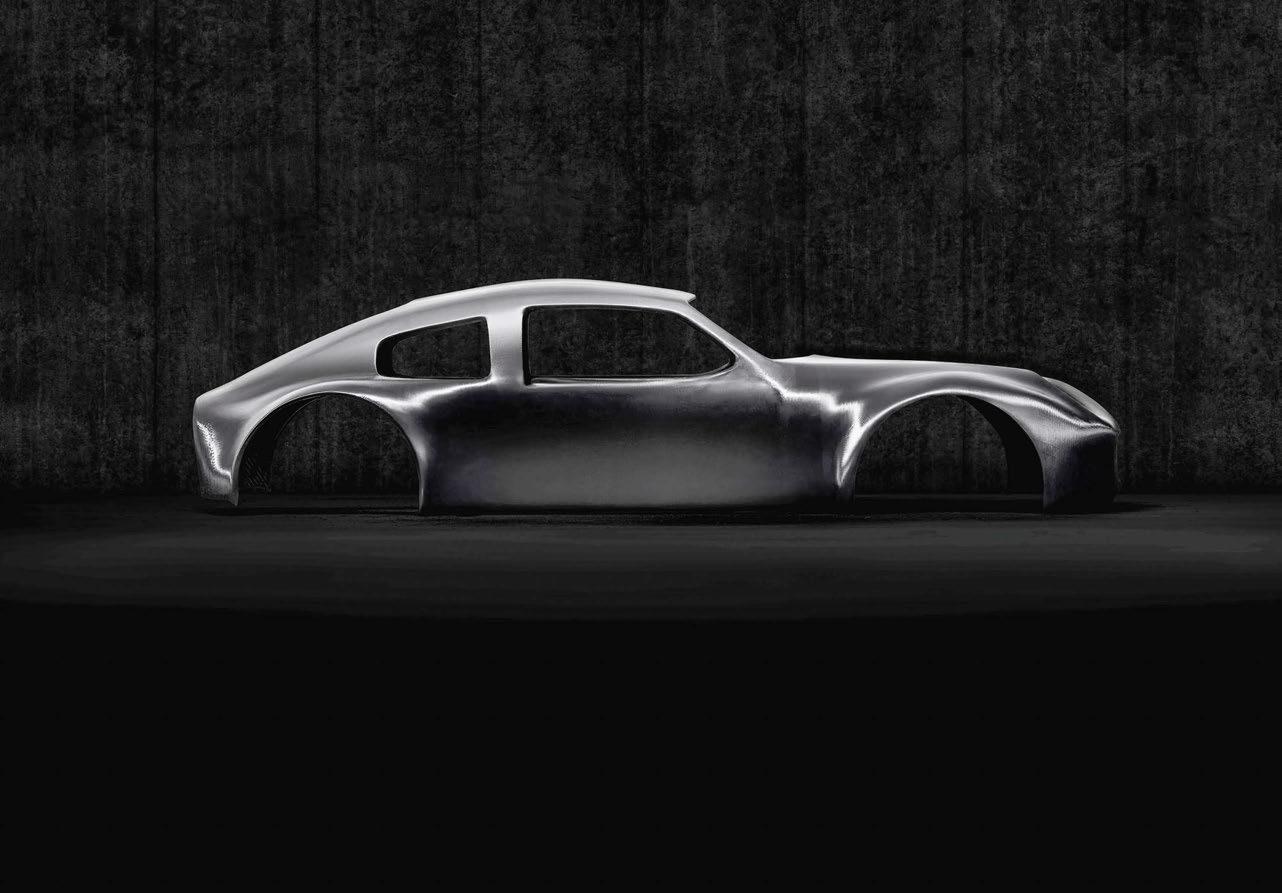
HOW IMPORTANT are
Britain’s specialist car-makers?
Very, according to the latest report from the Society of Motor Manufacturers and Traders (SMMT): The UK’s Small Volume Automotive Manufacturers: An Enduring British Success Story
Small Vehicle Manufacturers (aka SVMs, producing fewer than 2500 a year) built only 31,000 cars in 2024, but 90% were exported and those sales were worth over £5.5bn. The SVM industry employs over 15,000 directly and 60,000 in the wider supplier base, paying wages averaging £43,000, with thriving apprenticeship schemes, and occupying a cutting-edge role developing lightweight technology, aerodynamics, and safety systems, often adopted by the wider industry.
Mike Hawes, SMMT chief executive, has previously called for Government help for this ‘staple of the UK’s economy’ and
it certainly arrived in April in the form of an exemption from the 2030 ban on new internalcombustion-engine car sales for SVMs and Micro Vehicle Manufacturers (MVMs), which produce fewer than 1000 cars a year. SVMs will eventually adopt individual CO₂ targets, though MVMs can carry on as before.
But the fate of our SVMs and MVMs isn’t as clear-cut, nor quite as much in the bailiwick of Government as our PM might imagine. Some are doing nicely, some are struggling and, with a lot of sales in North America, President Trump’s tariffs, even reduced to 10%, outweigh Starmer’s Government largesse.
Yet despite this tough and uncertain market, old names are re-emerging. The revival of famous marques is a well-worn story and, as any lawyer will tell you, securing the intellectual property rights to a once-famous name is complicated, expensive
and contentious, often with many conflicting claimants. Nor are the Single Vehicle Approval regulations lax enough to merely tool up for a classic and sell it as a new car. Re-engineering costs, safety regulations and legislative requirements stand in the way.
Nevertheless, still they come. Octane understands that there is a credible attempt to revive Jensen with a return of the old Interceptor built on a new chassis with a new drivetrain. A Jensen comeback has seen many false starts over the years, and much dispute over who owns the name, but this project seems to have more credibility than some previous vapourware attempts and we understand that a prototype is under construction.
You might also have read of attempts to revive the Marcos marque, maker of the fabulous swoopy 1960s coupé designed by Frank Costin and Jem Marsh, which was made famous by
celebrities and racing drivers such as Jackie Stewart, Derek Bell and Jackie Oliver. The man who kicked it all off is controversial ex-Rich Energy boss William Storey, who caused a huge stir in F1 during its tumultuous sponsorship of Haas. He posted on LinkedIn that he was heading a project to revive Marcos as a rival to the likes of Ferrari.
More confrontation awaits here because, as far as we know, the rights to the Marcos name and body moulds have resided with Marcos Heritage in Trowbridge since 2007, and since 2021 have come under the Page Automotive Group.
That’s not to say that there aren’t other claimants already lining up – Marcos Motor Company and Marcos Cars – but the wider message is that there’s a perception that a big enough market exists to support these starts-ups. So what on Earth is going on? Good question.
First EVs, which, although stepping lighter on the planet, don’t lend themselves to sports cars, where light weight is crucial to handling and balance.
Development costs are hideous and, with the low annual mileages they are apt to cover, there’s seldom chance to pay back the extra CO₂ and environment damage that making the batteries takes in the first place.
Besides, buyers don’t really like them. As Mate Rimac, CEO of Rimac, maker of the Nevera EV supercar, admitted at a Financial Times conference: ‘We started to develop Nevera in 2016/2017, when electric was cool; [now] we notice that as electrification is becoming mainstream, people at the top end of the sector want to differentiate themselves.’
Certainly there are some amazing EVs, such as the blink-and-you’ll-miss-it 100kWh-battery McMurtry Automotive Spéirling Pure fan car, or the Callum Skye, a 42kWh off-roader so cute you could pop it in your pocket. Even Caterham, maker of the famous two-seater first designed by Colin Chapman as the Lotus 7, has a 52kWhbattery concept version.
At the highest levels, however, the wealthy are voting with their feet and so are the car-makers. Asked about Aston Martin’s reluctance to build a pure EV, CEO Adrian Hallmark
acknowledged the failing market by saying: ‘There’s nothing a wealthy person likes less than being told what to do.’
As with wristwatches, so with cars: at the top end, performance and pin-point accuracy are subservient to handbuilt, analogue gorgeousness, or as once observed, ‘The Apple Watch looks like something that came out of a Christmas cracker’!
Witness Tesla entering the realm once occupied by Ford’s Mondeo: where’s the exclusivity?
There’s also a question of size, the huge difference between a sub-2500 SVM and a thriving 1000-a-year MVM. Jaguar may be dragging its feet in a controversial rethink of the marque, but all the while smaller car-makers are making hay. Morgan is unashamedly an MVM and, fresh off the launch of its Supersport, it seemed impervious to Donald Trump’s threat of 27% import tariffs and is also selling other models in solid numbers.
‘Sales are in a pretty good place at the moment,’ said a spokesman, listing dealerships opening all around the globe. In the first six months of this year, Italian-owned Morgan has shifted about 325 cars, which posits a 650 annual total. While Morgan’s sales in the US under the Obama dispensation are just 325 a year, there’s white-hot ambition at Malvern and you might question whether the owners and MD
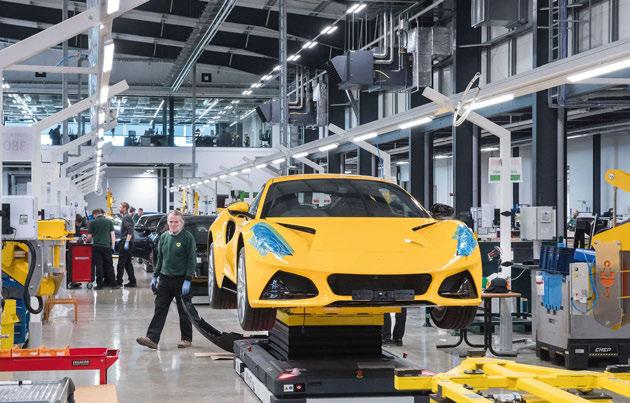

Matthew Hole fully realise the value of being small, perfectly formed and under the radar.
Lotus, on the other hand, is in a bit of a mess. With widespread speculation about the closure of Hethel as a production facility, the potential loss of hundreds of jobs touted, and demands for Chinese owner Geely to provide a written commitment to it, so embattled is the Norfolk marque that people have (nearly) stopped talking about JLR. ‘Lotus is not performing as well as it should be,’ a spokesperson admitted.
A struggling Lotus is nothing new, but you can see ownership issues here. Shareholders’ recent exercising of the ‘put option’ will see the merging of Lotus Cars and Lotus Technology, which should help clarify things and concentrate minds. There’s also the fact that they probably crept into EVs too early: the Eletre SUV and Emeya four-door GT electric models produced in Wuhan, China, entered the market at a time when rivals were questioning their involvement. There’s even a 130-off battery supercar, the Evija, on the way and it would be interesting to know just how many deposits have been paid on that. There was an audible wince as Matt Windle, MD of Lotus Cars, swore his allegiance to an all-electric future at the Emira’s launch in July 2021. He invoked the spirit of Colin Chapman, but there was
little mention of ‘added lightness’ for battery cars, and this while Porsche and Audi were struggling with a lack of premium EV demand, gross oversupply in the market and poor residuals too.
Then there’s McLaren Automotive, at the Woking HQ of which that great exponent of sprezzatura style, the 77-year-old Luca di Montezemolo (aka LdM, former boss of Ferrari), has been seen stalking. The recent purchase of McLaren by CYVN Holdings (the investment arm of the Abu Dhabi government) has brought with it another chief executive, Nick Collins (formerly of Ford and JLR), who replaced Michael Leiters.
While the race team might be on a high after its slightly controversial one-two at Silverstone, the road cars are in a bit of pickle, with a disastrous launch of the Artura and a miasma of allegations of unreliability and poor residuals.
The lessons, such as they are, seem to be based around ideal size and production, avoiding demanding owners without knowledge of the market – if you want a Ferrari, Ferrari produces a perfectly adequate one – and top-heavy management. Work really hard, but get the finances right as well, and above all remember that old adage: ‘If you want to make a small fortune making British sports cars, start with a large one…’
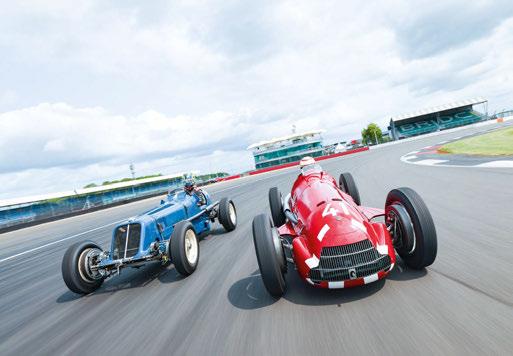
F1 set to sizzle at Silverstone
NO FEWER than five legendary Williams single-seaters will be at the Silverstone Festival on 22-24 August, when it marks the birth of the Formula 1 World Championship at the Northamptonshire circuit with an unprecedented collection of British (and other) winners.
With nine Constructors’ Championships and seven World Championship drivers, the Williams Heritage cars expected in the World Champions Collection are Alan Jones’s 1979 FW07B, Nelson Piquet’s 1987 FW11B, the 1992 FW14B of Nigel Mansell, Damon Hill’s 1996 FW18 and Jacques Villeneuve’s 1997 FW19. Other confirmed cars honouring all ten of Britain’s World Champions are set to include cars driven by Hawthorn, Hill, Clark, Surtees, Stewart and Button.
Overall the collection will showcase cars driven by all 34 drivers to have claimed the coveted Drivers’ World Championship, ranging from Giuseppe ‘Nino’ Farina’s Alfa Romeo 158 right through to one of Max Verstappen’s recent Red Bull Racing championship-winning cars.
The Alfa, which won at Silverstone and went on to win the 1950 Championship, recently featured in a Sky Sports F1 film being driven at Silverstone by ex-racer and presenter Martin Brundle. ‘Silverstone has an amazing F1 history and heritage,’ he said. ‘Every time you get out of one of these cars, you wonder how they did that – they really were gladiators.’
Other highlights of this year’s festival include a celebration of tin-top legend Andy Rouse, who claimed the British Touring Car Championship title an unparalleled four times between 1975 and 1985, in cars ranging from a Triumph Dolomite Sprint to a Ford Sierra XR4Ti.
Significant motoring events being honoured with displays and track parades include 50th anniversaries of the Jaguar XJ-S and Lotus Esprit. See silverstone.co.uk/events/silverstone-festival.
Brabham seized by customs
Reports from Malaysia say that a Brabham BT62 has been seized by the Perak Customs Department during a raid at Westport Container Terminal in Pulai Indah, Selangor. Customs bosses said the car had been imported without a permit or excise being paid, and was listed as ‘parts and toolboxes’ but found to be complete when officers opened the container.
Beaulieu classic car park
Owners of vehicles built in 2000 or earlier – regardless of make, model, or condition – are invited to bring their car to a new Classic Car Park at the Beaulieu International Autojumble on 6-7 September. Judges will pick a daily favourite from the car park and the winner will take home a trophy. See beaulieu.co.uk/ events/international-autojumble/ classic-car-park.
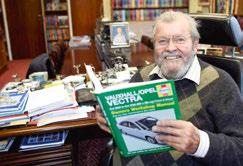
Haynes celebration
The inaugural John Haynes Classic Motor Show takes place on 7 September to mark 40 years since John Haynes OBE founded Haynes Motor Museum in July 1985. Spread across five outdoor zones surrounding the museum, the show will feature a full programme of displays, demonstrations, talks and interactive activities. The heart of the show will be the Haynes Manual Display, with a selection of vehicles immortalised in Haynes Manuals, plus the public are being invited to bring along their own ‘Haynes Manual cars’ and tell their stories. See johnhaynesclassic.co.uk.
The museum has also launched a new exhibition, ‘British Icons: Driven by Innovation’, which includes a Jaguar XJ220 and a Lotus Turbo Esprit.
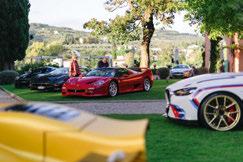
The third edition of the Villa La Massa Excellence concours will take place on 7-19 October overlooking the Arno River on the edge of magnificent Florence. The event showcases the most iconic supercars from the 1990s through to the present day. In 2023 the Villa La Massa Golden Cup was awarded to the Ferrari F40 prototype, while last year the top prize was taken by a Bugatti EB110. As well as the judges’ awards, there will be a People’s Choice trophy and a Future Choice prize from a special jury of youngsters. See villalamassa.com/offers/ villa-la-massa-excellence.
Peter Auto shakes it up
The has been a flood of major announcements from Peter Auto recently. The biggest is that from next year the Le Mans Classic will be an annual event rather than biennial, but alternating between two formats, Le Mans Classic Heritage and the more contemporary Le Mans Classic Legend. The company has also launched a raft of new series and classes, including Legends of Le Mans, dedicated to the LMP1 and LMP2 Prototypes and GTs of the 2010s, a GT3 Revival Series, and a Le Mans Classic Series.
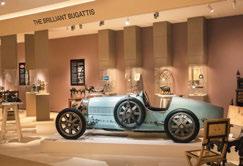
Brilliant Bugattis
The Bugatti Trust Museum and Study centre recently supported ‘The Brilliant Bugattis’ exhibition at Treasure House Fair, Royal Hospital Chelsea. Hailed as the most important UK exhibition about the Bugatti family in almost half a century, there were over 30 artworks and designs from family members, with cars including Type 39, Type 57 Stelvio and a Baby Bugatti.
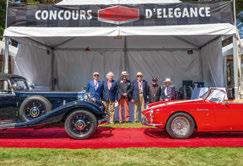
Hillsborough winners
A 1936 Mercedes-Benz 540K and 1957 Maserati A6G/54 Frua Spyder took the two Best of Show awards (Elegance and Sport) at the 69th Hillsborough Concours d’Elegance in California on 22 June. The event at Crystal Springs Golf Course is said to be the world’s longest continuously running concours and hosted 200 entrants over 24 classes. Special displays saluted turbos, the Ferrari 308/328 and the VW Beetle.
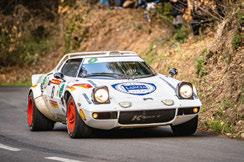
Giro
d’Italia
is go go go!
A revival rally planning to cover the length and breadth of Italy is to have a non-competitive trial run this year with the intention of becoming an annual event from 2026. The Giro Automobilistico d’Italia will start in Turin on 11 September, stop in Bormio and end at Villa Reale in Monza on 13 September. From 2026 it will become a full-blown regularity with special stages held at circuits.

Feast of Bologna returns
The third Concorso d’Eleganza Varignana 1705 will be on 26-28 September in the heart of Italy’s Motor Valley. It will place at Palazzo di Varignana, with a jury led by Stefano Pasini. The event will display just 35 pre-73 cars, though there will be a special Hypercar class for newer models. See varignana1705.com.
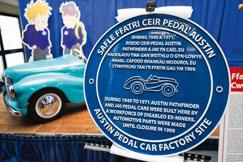
Pedal-powered plaque
A blue plaque funded by Austin Pedal Cars has been unveiled to celebrate the old Austin pedal cars factory in Bargoed, Wales, which produced the J40 and Pathfinder from 1949 until 1971 and made parts up to its closure in 1999. A special ceremony was attended by local dignitaries, former employees and schoolchildren.

Peninsula’s London offer London’s Peninsula hotel has put together a special package for people wishing to visit London Motor Week. The hotel is partially motoring- and Brooklandsthemed and also home to the International Historic Motoring Awards. The week-long series of events surrounds the London to Brighton Veteran Car Run, which is held on the first Sunday in November and starts just a short walk from the Hyde Park Corner hotel. The package is available from 25 October to 3 November and includes the care of your car by the team, complimentary daily breakfast for two guests, and a stay in either a spacious room or suite. See peninsula.com/en/ london/special-offers/rooms/ london-motor-week.
Carlton reunion
More than 60 Lotus Carltons and Omegas from as far afield as Austria are set to gather at Hethel’s Lotus HQ on 15 August, including the infamous 40RA Carlton. It is believed to be the largest ever such reunion; factory workers who built the cars in period will also be on hand.

Wood & Pickett Mini
A new limited-production Wood and Pickett Mini by CALLUM made its public debut at the Heveningham Concours in Suffolk on 28-29 June. Extensively customised on a restored Mk5 Sportspack Mini, it features a 1310cc Stage 3 110bhp engine, tuned handling and uprated brakes. Prices start from £75,000.
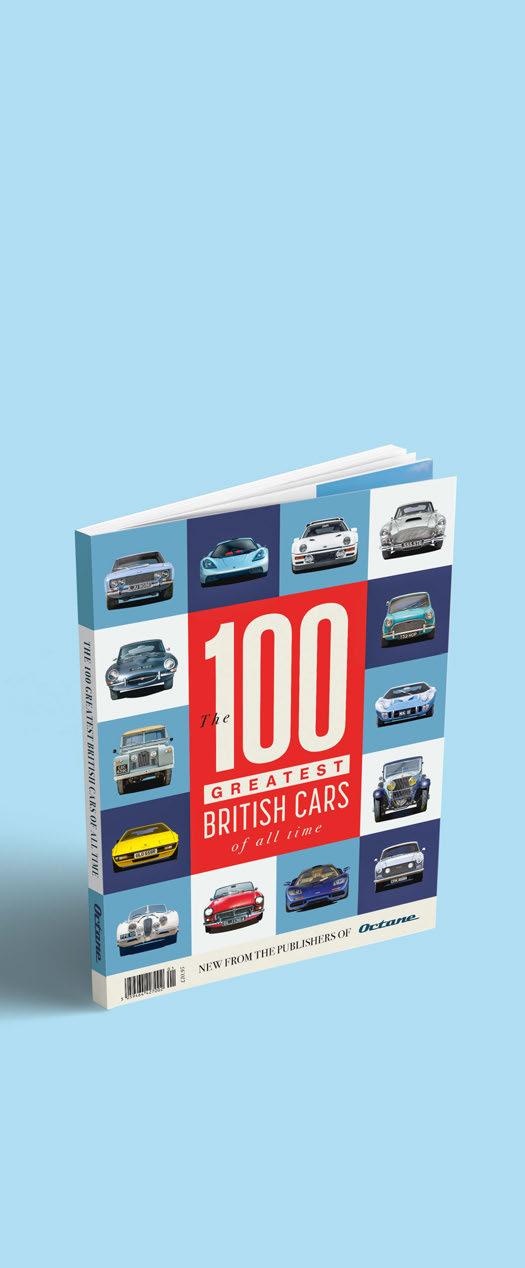
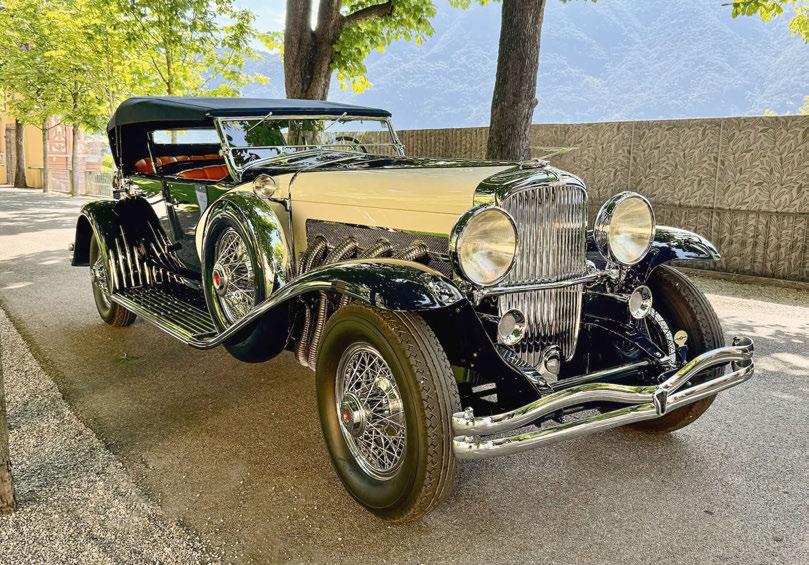
Salon Privé’s garden of delights
20th anniversary party promises top cars and much more over five days
WITH SALON PRIVÉ fast approaching, three of its star cars have been revealed and suggest that Blenheim Palace is going to host its most diverse selection of beauties ever when the event celebrates its 20th anniversary with nearly a full week of activity on 27-31 August. Pre-war US leviathans, post-war German glamour and French technical ingenuity will be reflected through a Duesenberg Model SJ, Mercedes-Benz 300SL Roadster and an Alpine M64.
The Duesie, king of American vintage cars, was a money-no-object supercharged 320bhp luxury car that was a hit with the glitterati despite being launched into the teeth of the Great Depression. The example due at Salon Privé, one of just 36, is coming from the USA for the event and hadn’t been seen in public for half a century before appearing at Pebble Beach last summer.
It will be joined on the manicured lawns by a 1958 Mercedes-Benz 300SL Roadster first registered to the German actress Romy Schneider. With its original red interior, this example has a recent class win at Lugano Elegance under its belt and will present quite a challenge for the ICJAG judges to find fault. France is represented by a 1964 Alpine M64 – one of three windcheating prototypes built
for the 1964 24 Hours of Le Mans and the car that took class wins at both Le Mans and Reims that year before being stashed away for the next 50. Despite its distinctive looks, its aerodynamic abilities can’t be questioned and it came 17th overall in the 24 Hours, averaging over 100mph even though it packs a Renault-Gordini four-pot engine of a mere 1049cc. It has since gone back to Le Mans for the Classic, both in 2022 and this year.
Andrew Bagley, chairman of the Salon Privé Concours, said: ‘The calibre of the concours entries is higher than ever, giving this year’s guests a glimpse of what’s to come. Our 20th anniversary concours will rightly contain some of the finest and rarest motor cars from around the world!’
While the concours dominates the first three days of Salon Privé, the event takes on a completely different character as the weekend arrives. Supercar Saturday & Club Trophy by Lockton will see over 1500 supercars, hypercars and classics gathering on Blenheim’s South Lawn against a backdrop of parades, presentations, and a vibrant atmosphere.
The big news for Sunday’s inaugural Supercar Sunday & Lifestyle Club Trophy Day is that TV presenter Richard Hammond will be attending with his Smallest Cog garage and
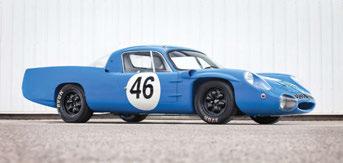
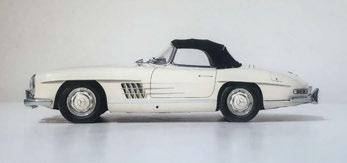

DriveTribe, and will help judge the Concours de Vente, in which all the cars will be for sale. The innovative Concours de Vente is a first for the Blenheim venue, although it has previously taken place at Salon Privé London, and promises to ‘present a curated selection of cars for sale from the UK’s leading restorers and specialists’.
Hammond said: ‘It’s thrilling to be involved in this exciting new chapter of Salon Privé as the event celebrates its 20th anniversary. I can’t wait to judge two awards and be able to get up close with some truly unique automobiles. Supercar Sunday is set to deliver an unforgettable celebration of automotive passion – uniting supercar fans, classic car owners, collectors and enthusiasts at one of the UK’s most historic and scenic locations.’
Clubs confirmed to attend Supercar Sunday, which is also open to anyone with a prestige car, include Automotive Utopia, Driven+, SCC Private Members Club, Supercar Club Wales and Women in Wheels.
Tickets from salonpriveconcours.com.







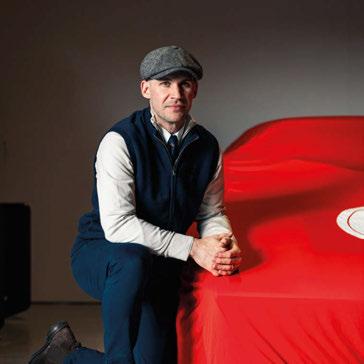
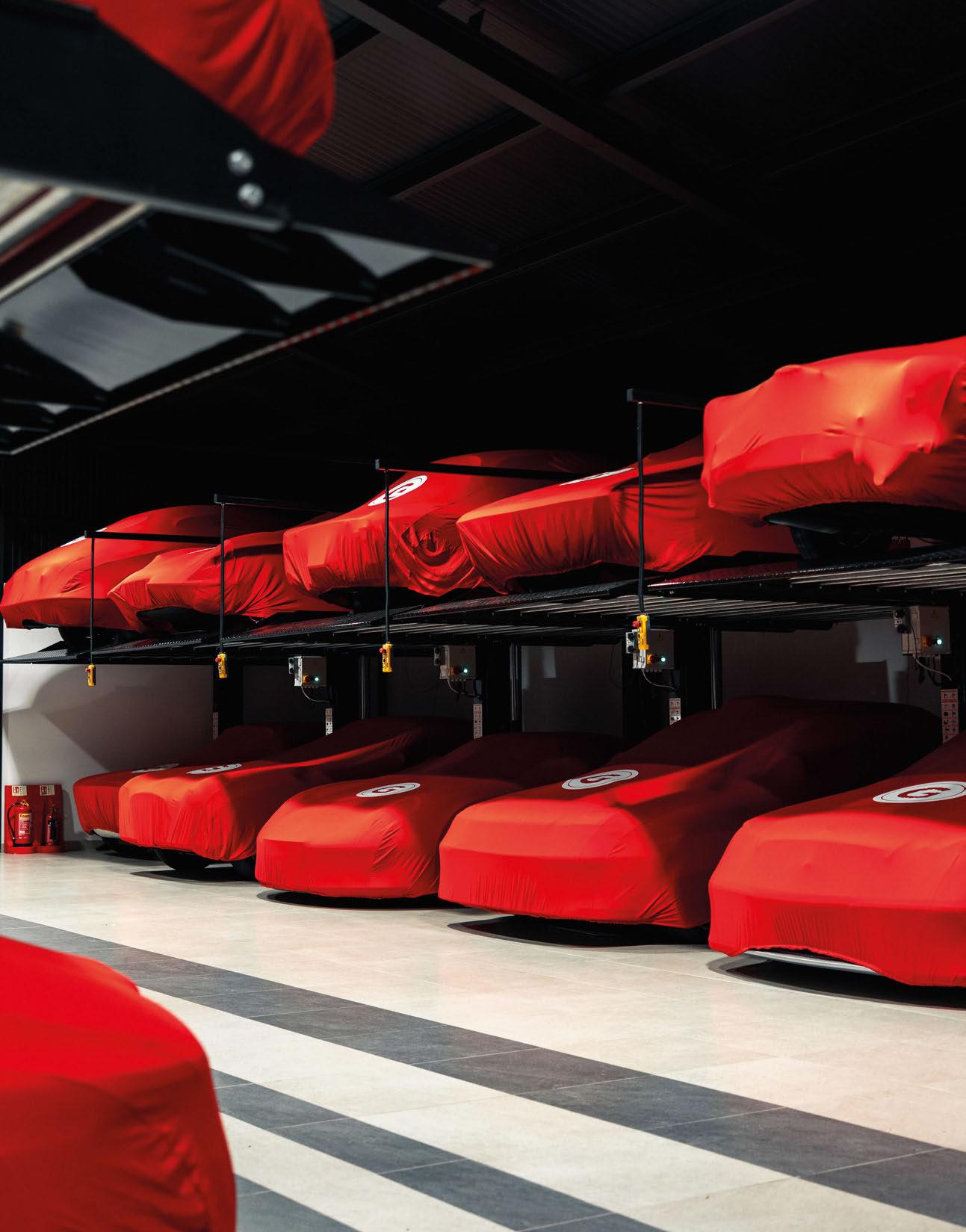
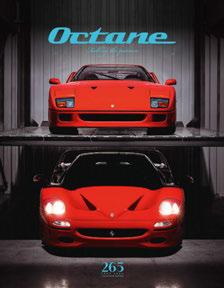
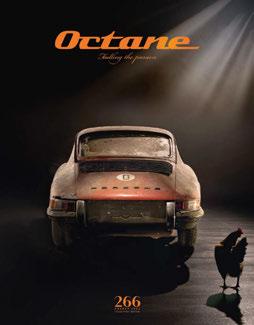



WHY SUBSCRIBE TO OCTANE NOW?
• Pay just £1.66* each for your first three issues
• All subscriptions now include access to the magazine archive via the Octane digital app
• Nev er miss an issue
• Money -back guarantee –cancel and we will refund your remaining issues
• Unique subscriber -only covers
Please note the new website to order and manage your subscriptions, or call our customer service team on +44 (0)20 3966 6695


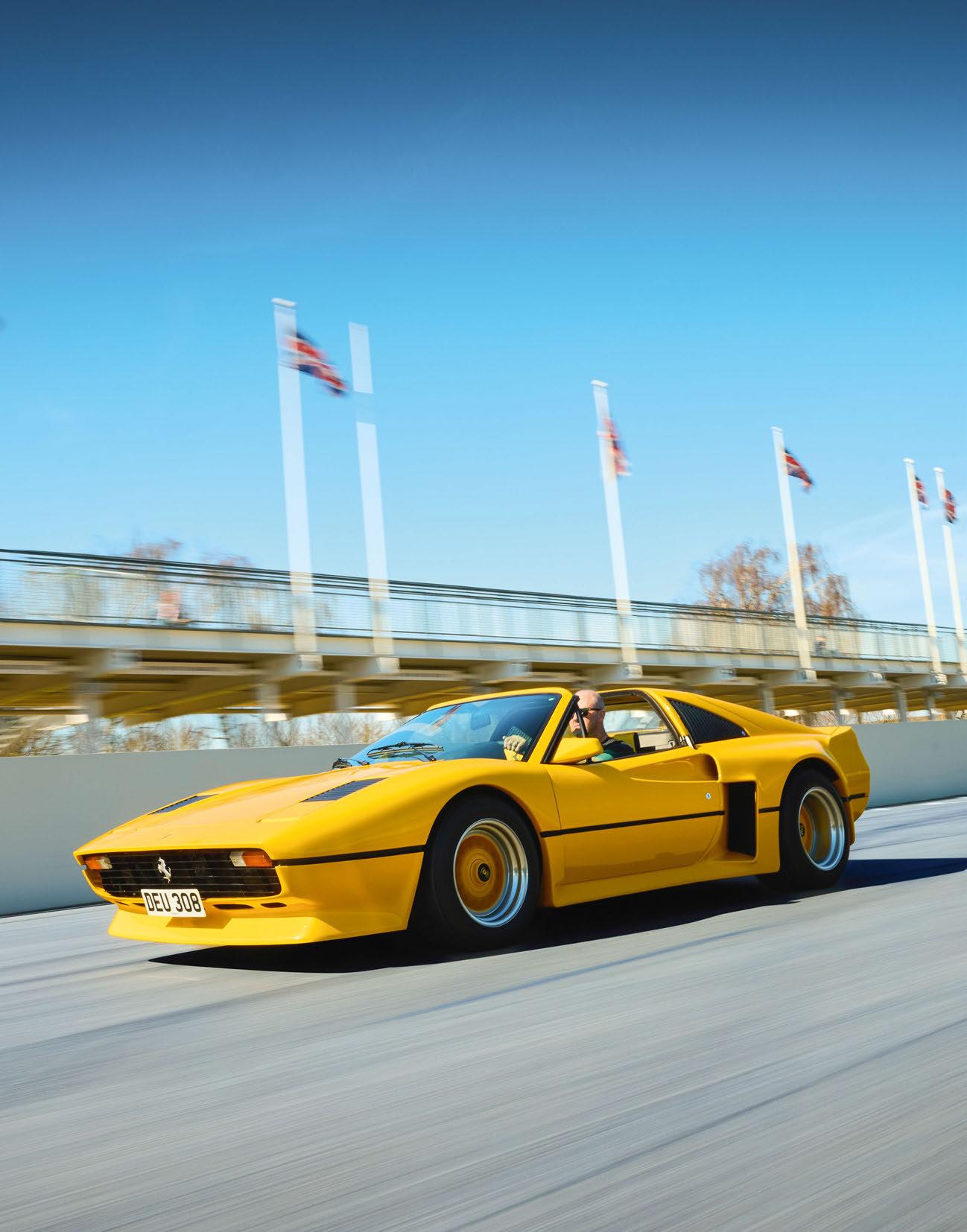
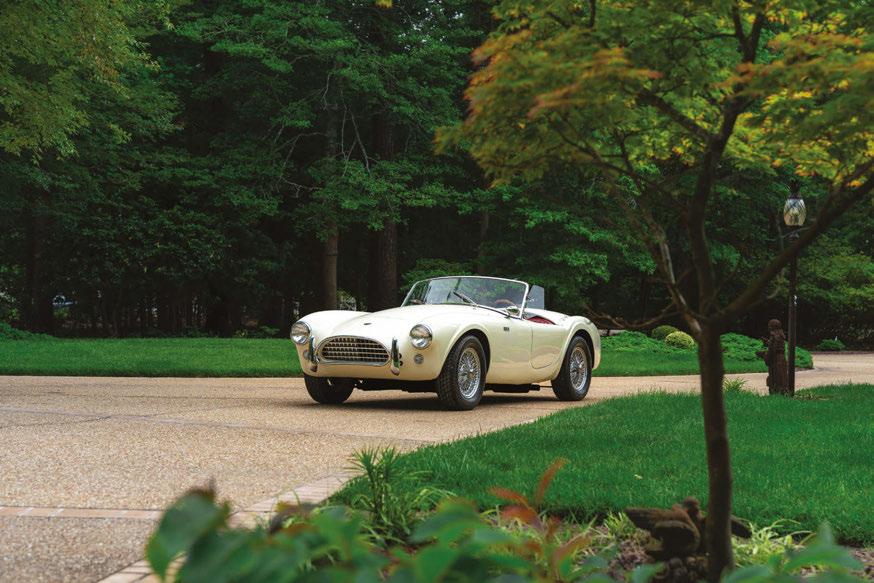
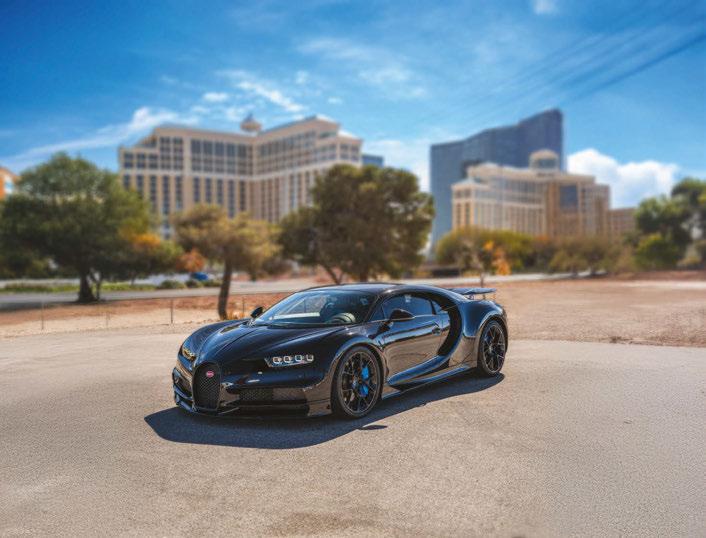
Estimate: $3,400,000 - $3,700,000
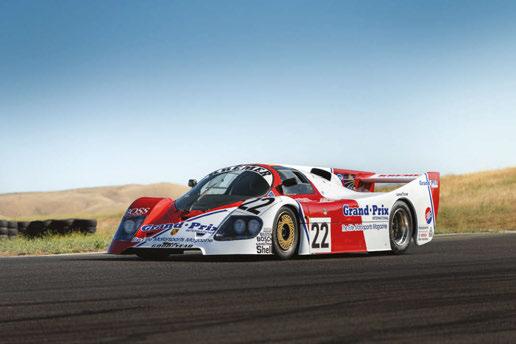
Estimate: $800,000 - $950,000
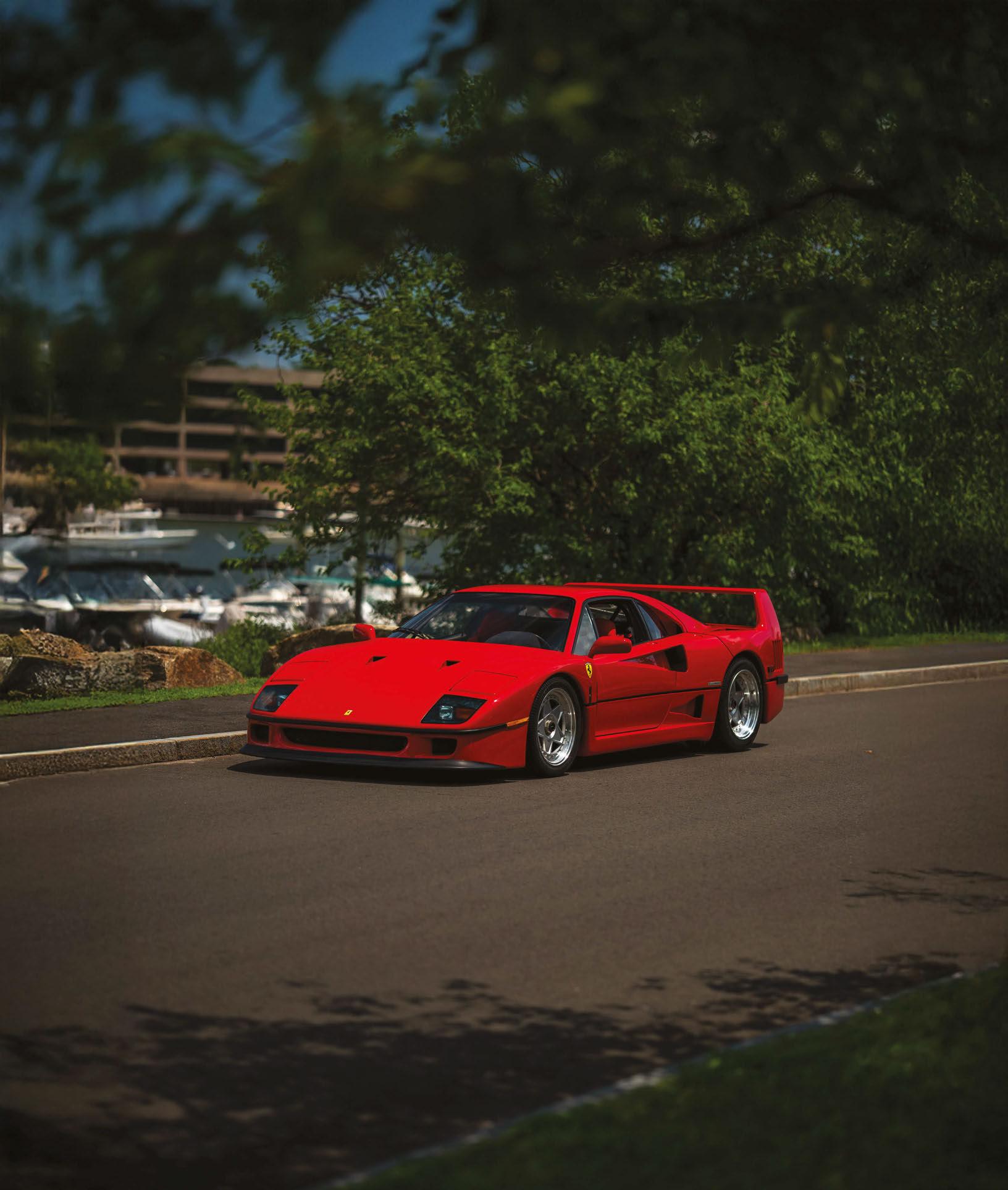
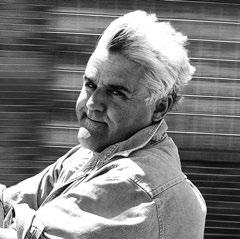
Jay Leno The Collector
Revealing the peculiarities of The British Experience
I’ve had a couple of classic ‘British’ motoring experiences in the past two weeks. I’ve always enjoyed British motoring, cars and motorcycles. I particularly enjoy Brough Superior motorcycles because they’re considered to be the rst superbikes, especially SS100s for their speed and build quality. And Jaguar cars for the same reason.
Back in the 1980s I joined the Brough club. While in Texas in 1988 I met a fellow Brough club member named Daryl, who a few years earlier had purchased a Brough SS680 for $1300, all in pieces in a box. e SS680 looked similar to the SS100. George Brough himself referred to it as the Baby SS100, but it was for those riders who preferred a smaller-capacity machine. It looked exactly like an SS100, only about 10% smaller. It’s a pre y rare piece; only about 547 were made between 1926 and 1936.
‘What are you going to do with it?’ I asked. ‘I’d like to restore it and then sell it,’ he said. ‘Come see me when that happens,’ I replied.
at’s the last I heard of him for almost 40 years. Two weeks ago he showed up at my garage with a truck and trailer and I didn’t recognise him. When he pulled out a Polaroid photo of two dark-haired young men standing next to a box of motorcycle parts, I realised who it was. Now, 40 years later, we’re wearing the same clothes but have grey hair.
‘Is the bike in the trailer?’ I asked. And he said it was. When he wheeled it out, I was amazed at how good it looked. I already have an SS680 but not as good as this one. All the 680s I have seen, including mine, are extremely fragile and there have always been problems with the cylinders coming loose where they a ach to the crankcase. is bike seemed to have none of those problems.
I asked him how it ran. He said he’d never started it. He wanted me to be the rst. We wheeled it into the shop, it red second kick and felt quite strong, almost like an SS100, which in a lot of ways it was.
I was very pleased with my new purchase. I felt like a Morgan owner who, a er years of waiting, had nally received their car. But there were a few problems to sort out, mostly small things like the valve li er (that you use when starting the bike; it li s the valve to make it easier to start and kills the engine when you want to stop) and kick-starting – a lot of li le things that needed to be tightened down
a er the rst run. e hand-shi needed to be adjusted, and we got that sorted. When he got back to Texas, I called to thank him again. When he asked me how I liked it, I told him I wish he’d take another 15 years to sort out some of the problems.
My second British experience happened about ten days later, when lming for my TV show a piece called Assess and Caress with fellow presenter Donald Osborne. e way it works is that we choose three classic cars and have to guess in order which has increased the most in value over the last ve years. One of the cars was a 1961 Jaguar MkIX. Not a trailer queen, mind you, just a nice, original car. Original black paint with a red interior. It looked like something Inspector Morse would be driving.
A er the taping I put it up on the li and inspected the undercarriage. Not a speck of rust. It was built for the US, with automatic transmission and power steering. e dashboard was not just veneer, but timber; I’m not sure how much of a forest was le a er this. It’s not perfect, I’ve got to x the transmission and a few other things. Well, at least I thought it had a bad transmission.
For the life of me I couldn’t get it to shi into top gear. I drove around with 4200rpm in second all day. With it on the li , the transmission looked as if it had had some work done on it. I noticed it had a solenoid wired to it. Does this have an overdrive, I thought to myself? No, that wasn’t it. is Jag had a feature I was not familiar with. Mine is the le -hand-drive model. On top of the dash is a switch that says ‘Intermediate Speed-Hold’. I thought it was for intermi ent windshield wipers. Yes, I know, I’m an idiot.
In all my years of fooling around with Jags I’ve never seen this feature. What it does is lock the transmission in second gear for, let’s say, climbing a long hill. When I got the car it was set to ‘out’. I must have switched it ‘in’ by mistake. I’d really thought I had to replace the whole transmission.
I’m very happy with it. I always seem to be happiest around British machinery. I feel like it needs me somehow. e bit of ddling one needs to do with these machines makes me feel wanted. Oh, and the idea that you give someone a project and they contact you 40 years later to tell you it’s ready –it doesn’t get any more British than that.
Jay was talking with Jeremy Hart.
‘I ALWAYS SEEM TO BE HAPPIEST AROUND BRITISH MACHINERY. I FEEL LIKE IT NEEDS ME’
DRIVING EXPERIENCES OF A LIFETIME
Explore the world from the driving seat, creating unforgettable adventures, incredible drives, fabulous hotels combined with great camaraderie, fun and lifelong memories.
GUIDED SELF-DRIVE ADVENTURES
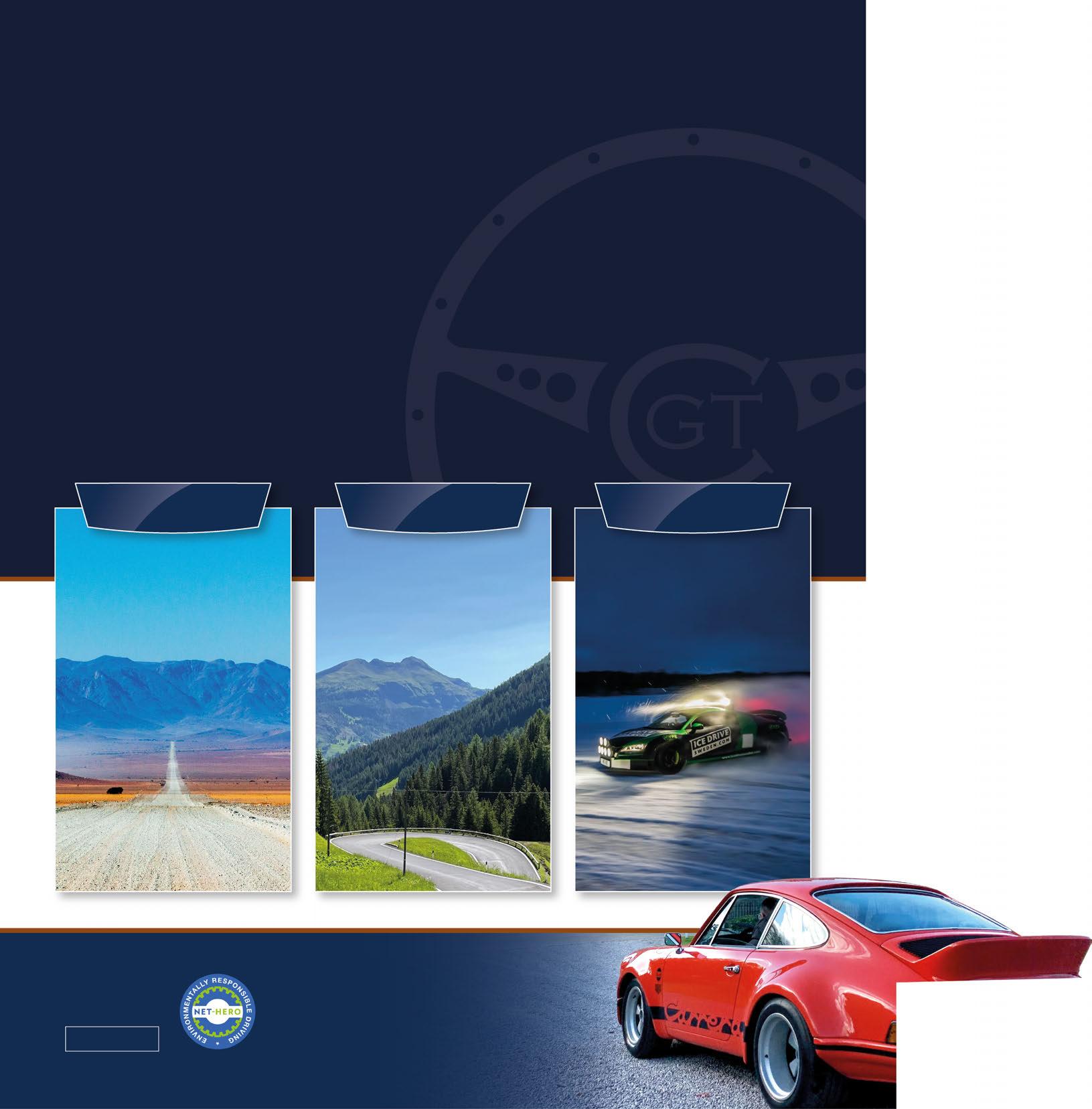
CLASSIC & SUPER CAR TOURS
MONACO HISTORIQUE ANGOULEME
LE MANS CLASSIC EUROPEAN TOURS UK TOURS
ICE DRIVING EXPERIENCE WITH ICE DRIVE SWEDEN




The Legend
Derek Bell
Living a charmed life among charming people
This column is being cra ed from the comfort of a château in Bordeaux.
I am marvelling at the beauty of it all and wondering what my old friend Alain de Cadenet would have made of it. I am on holiday with loved ones, but came out here with a group of Alain’s family and friends for what I guess you might call a memorial. I got to know ‘de Cad’ only relatively late in life, but we became great mates and the stories soon started owing. Gordon Murray designed Alain’s 1972 Le Mans challenger and he told quite a few stories about him, not least about how hard it was to get paid for his e orts!
at was the thing about Alain. Few people did more with less than this proud Brit with a French name. He hustled tirelessly to make his way in motor racing, and he won two rounds of the World Championship for Makes, let’s not forget. He wasn’t without talent. Most of all, though, he was a character like no other. He could charm the birds out of trees and even those who were frustrated by him would invariably be talked around. Despite their best e orts, they would get sucked into his orbit again. He had that e ect on everyone. He was a great bloke and one whom I miss terribly. A lot of people do, of that I am sure.
June passed by in a blur. I was in Scotland the weekend before we headed to France. It was wonderful to be north of the border, and especially because it was for the Jim Clark Celebration Weekend at Duns Castle. I had two heroes in motorsport when I was a young pup: Stirling Moss and Jimmy. I worshipped Stirling because he was the benchmark driver of his day, and someone who could steer anything brilliantly. He radiated con dence and appeared to be ever so polished at everything. I got to know him well, albeit a er his frontline career was over, but I cannot say I knew Clark. I would have loved to, though. From all accounts, Jimmy was a very di erent character to Stirling. He was a thoroughly nice guy but less outgoing. Nevertheless, he inherited the mantle of being the driver we all wanted to emulate. I dreamed of being just like him. He won the Formula 1 World Championship, the Indy 500, the Tasman series, and the British Saloon Car Championship. at is just for starters. He would
hop from car to car at the same race meeting, whether it was a single-seater, a sports car or a Lotus Cortina, and make it dance. It’s hard to appreciate all these years later just how good he was.
I was in awe of Jimmy as I made my way through the ranks from club racing to Formula 3 and then Formula 2. I met him in April 1968 on the eve of the Deutschland Trophy F2 race at Hockenheim and he was everything I hoped he would be: unpretentious and easy to talk to. Nevertheless, he was a bit downbeat about his chances. He was armed with a Lotus 48. I was there with a Frank Williams Brabham. From what I understand, Jimmy had been due to race at Brands Hatch that weekend for Ford, but contractual obligations meant he found himself in Germany. A day later, he was dead.
I have my own theories about what triggered his accident, and others have theirs. It seems a bit pointless going into detail about the cause of his death, but the point is that his loss cratered our world. at may sound like hyperbole, but it really, truly, devastated the motor racing community. He may not have appreciated it, but Jimmy was our leader, and now he was gone. Not only that, it made even us up-and-comers take time out to consider our own mortality. I know it’s a cliché to say motorsport was incredibly dangerous back then, but really it was.
If we were honest with ourselves, therein lay some of the appeal, but then the best driver in the world goes and dies and you think: ‘Wow, if it can happen to Jimmy, then what about the rest of us?’ Of course, you soon put such thoughts to bed, but it jolted us all the same. Anyway, all these years later it was wonderful to reminisce about the great man and what he meant to us. His great friend and heir apparent Jackie Stewart was there, as was Clark worshipper and Indy superstar Dario Franchi i. Jimmy’s long-time Team Lotus mechanic Derek Wild was also on hand to share his memories.
It was a wonderful weekend, and so tastefully done. ere was a barbecue the night before at what had hitherto been the Clark family farm, and the celebrations therea er were well-a ended; enthusiastically so. It was heartening to see that so many people still remember Jimmy decades later. As for the near future, my own career is being celebrated at the Goodwood Festival of Speed, which is incredibly humbling. More on that next month.
‘I HAD TWO HEROES IN MOTORSPORT AS A YOUNG PUP: STIRLING MOSS AND JIM CLARK’

THE NEXT ICON IN LUXURY LIVING: C SEED N1 TV

Discover the fusion of cutting-edge technology and exclusive design. Seamlessly blending into your luxury living space, the bespoke C SEED N1 TV is encased in the finest handcrafted finish, tailor-made and customizable to match any interior. When closed, it exudes the elegance of fine furniture, resembling a sleek and sophisticated sideboard. At the touch of a button, the TV gracefully rises to a majestic height of two meters, and five 4K high-brightness MicroLED

panels unfold like the petals of a blooming flower. In just 45 seconds, they form a stunning display measuring 165, 137, or 103 inches.
C SEED’s unique patented Adaptive Gap Calibration ensures that the borders between the panels vanish, giving you a perfect, uninterrupted visual experience. The ultra-high-resolution display transforms any room into a cinematic paradise, offering breathtaking

visuals in any lighting condition. The C SEED N1 redefines the synergy of technology and luxury living - it is a statement of sophisticated taste and a testament to the unforgettable moments you’ll share.
The C SEED N1 TV is available in three sizes: 165, 137, and 103 inches, as well as in various colors and bespoke finish options.


The Aesthete
Stephen Bayley
An uncomfortable truth: beauty has died
Ihave a recurrent fantasy that I will be re-invited back – as I o en once was – to address designers in the car industry. I can picture the scene: a purpose-built secure unit in the posher parts of Warwickshire. As the last guest is ushered in, a guard locks the door. e atmosphere is tense and expectant. I adjust my black polo-neck sweater.
I’ll probably begin by saying: ‘If you think being responsible for establishing novel character-lines is a bit of chore, try spending all your career to pensionable age fre ing about rear light clusters.’ ere is a polite chuckle. But I’ll state my business quickly. And I will say ‘I want to talk about beauty.’ Now there is an uneasy shu ing of bums on seats.
My point is that beauty is not a delicate subject. It’s an emotional cudgel, an instrument of social war, a measure of civilisation and a calibrator of culture. If ever you want to start an argument, questioning someone’s taste is a good way to start. State your case about beauty and someone will reply ‘But that’s just your opinion’ as if to suggest that opinions don’t ma er. Opinions are hard-won from experience, and if you don’t have any, it’s never too late to get some. People are reluctant to talk about beauty because it is treacherous. People who de ne themselves as ‘artists’ certainly don’t. ey are interested in all sorts of other things: colonialism, diversity, carbon. Which may be why contemporary art is so very boring.
A recent Turner Prize-winner was an Uwe Bahnsen-era Ford Escort with a giant doily draped over it, simultaneously an a ack on notions of gentility and the motor car as the darling of evil extraction industries. Of course, the Ford Escort itself – precisely judged in concept and execution –was the best thing about this juvenile toot.
When artists abandoned beauty – for the sake of argument, we can quibble about when that was (but let’s say circa 1960) – it was le to others to make beauty their business. e human appetite for it is constant, but beauty is fugitive and elusive, making its home in di erent media at di erent times. To be clear, I don’t think even the nest cars are actually ‘art’ but I do think the nest cars are o en beautiful and that they have usurped the role of art in public life: shape and colour are used to excite emotions and to express collective desire. Problem is, beautiful cars are not made any more.
Sure, there are many impressive and desirable cars on the market, but no one has troubled much to make them beautiful. If it were possible to quantify beauty, it would not be worth doing so. To be alert to asking the question is more important than the de nition, and it’s something you detect rather than de ne. at transcendent feeling you get when you step into Chartres. Or even listen to e Beatles. Life’s possibilities seem expanded and enhanced.
e most beautiful cars were made in the 1950s, 1960s and early 1970s. And even if this is a column about argument, I don’t think anybody bright enough to walk around unaided would argue with that. I dare say that someone somewhere is analysing huge data sets in an a empt to understand from history what makes a car beautiful, but it does not work like that. Until machine-learning can acquire senses of desire and yearning (possible, but not soon), intuition and accident will be more useful in the creation of beauty than quantum computing. Are beautiful cars history? Yes, I think they probably are. e great ones were the product of strange, unpredictable alignments. A metal-basher called Scaglie i meeting Mr Ferrari. Giugiaro’s 1965 Alfa Romeo Giulia, as ne as Bahnsen’s Escort. Colin Chapman’s accountant drawing the exquisite Lotus Elite or Malcom Sayer in a brown lab-coat deep in conversation will Bill Lyons. Provincial garagistes who produced more beauty than Detroit and nearly as much as Milan or Turin.
e peculiar alignments that produced these beautiful cars are probably forever beyond the reach of non-human intelligence. And I don’t see them occurring again. Beauty has done its business in the motor industry and is now o … who knows where.
So I would say that beauty can best be understood as a sense of loss, paradises we once knew available now only retrospectively. To see what I mean, just turn to the pages that follow here.
While I am avoiding a precise de nition, I believe a test for beauty is to look at something and ask: ‘Do I want to keep looking? Do I want more of this? Do I want to run a mile?’ e audience now shu es even more uncomfortably and I have to say: ‘You at the back, stop sni ing and sobbing.’
e security guard arrives, unlocks the studio door, and a Chinese EV minibus arrives to take the bewildered designers back to their character lines.
‘THERE ARE MANY DESIRABLE CARS TODAY, BUT NO ONE’S TROUBLED TO MAKE THEM BEAUTIFUL’


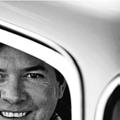

Robert Coucher
The appeal and otherwise of driving American cars – outside the US
The US is big. Geographically and in ambition. Vast scale is embedded in the American Dream, from cowboys galloping across the prairies, to iron horses steaming on railway lines to new territories, and city o ce blocks reaching for the sky. Americans have always gone large and the automobile has been wri en into this frontiersmanship, from the Joad family leaving Oklahoma’s dustbowl for California in the Great Depression (Steinbeck’s e Grapes of Wrath) to today’s citizens who celebrate the car like no other, driving 13,500 miles per year; we manage 6500. Following on from the horse and steam train, early American automobiles were generally excellent, starting with the Ford Model T of 1908. With its lusty 2.9-litre engine, its chassis was made of superior vanadium alloy, rendering it almost unbreakable over rough dirt roads. is was followed by GM’s early adoption of independent ‘knee action’ front suspension in the 1930s, a time when British cars were asthmatic puddle-jumpers hampered by outdated cart suspension and li le engines taxed on bore size. Motorists overtaxed? Plus ça change Stephen Bayley writes about the Tucker in this issue, and I have to admit that I don’t understand the a raction of large American cars in Britain. Many simply don’t t: to watch a landyacht navigate a Cotswolds village is excruciating, while the ipside, a classic ’60s Mini Cooper S bombing down the roads of San Fran, is just cool. But as with all things, one can never generalise, and I have experienced some of the best drives of my life with American iron of acceptable dimensions. It all began in a Model T. In 2008 I joined the late, great Tony Dron at Le Mans Classic to race a Model T with Ford of France. You might chuckle at the prospect, a bit like falling o a log very slowly, but have you actually tried driving a T? On a racetrack? is Ford Montier Special was nished in the requisite racing bleu and came with three foot pedals: the le for gearchanges; middle for reverse; the right one for braking. e handbrake has three positions: forward for driving; middle for neutral; back for parking. ere are a hand thro le and timing adjustment lever on the steering wheel and tiny drum brakes ed only to the rear wheels. Oh, and it had a two-speed rear axle. Needless to write, it was quite a handful to drive,
let alone race. Dron and I determined to get it into top gear, pin the thro le and leave it there for the entire lap. But the tight 90º Arnage corner required a downshi to the lower rear axle ratio and with that I managed to overtake a BNC and Delage in slow motion. Never mind, an overtake is an overtake… Ten years earlier I had been invited to co-drive a horny Ford Mustang GT350 on the tough Tour Auto through France. It was fully race-prepared with Perspex windows and glass bre body panels all si ing on those fat American Racing alloys. I was honoured to have been invited by Je rey Pa inson, then chairman of Coys of Kensington, only later to learn that I was the ninth person he’d called following eight refusals, each asking: ‘Are you mad?!’ With the ignorance of youth, I’d no knowledge of Pa inson’s kamikaze driving style.
ings started well, with our in-car headsets playing chilled music by America, the Eagles, the Beach Boys and so on. But when the ag dropped on the special stages Pa inson went for the full tentenths. I remember one of them, a narrow road atop a mountain with vertiginous drops either side. We were ying but I began to hear whimpering sounds from the intercom in my helmet. Turns out my driver was scared of heights, but did he slow down? Hell no. Towards the end of the Tour in Nice, there was one nal col to negotiate. It was tight and the British Hillclimb Champion, David Franklin, went before us in his green Mustang. I noticed he had to threepoint-turn a few of the corners. At our start, the light turned green, and we shot o at full pelt. Did we three-point turn? No, Pa inson just shaved the front wings o the car as we smashed our way up the col at full chat. e unamused marshals followed us up with all the shards of body bits, which turned out to be glass bre! at’s why ga er tape was invented.
Other memorable American automobile moments included bashing a WO-era Bentley on the Mille Miglia in a Chrysler 75, as well as taking a Shelby Cobra 427 Lightweight up the hill at Goodwood. It was the well-known Chequered Flag racer, then owned by Octane friend Gary Bartle . Oh, and he recently let me have a twirl around Goodwood Circuit in his ex-Targa Florio Shelby 427 Competition Cobra (see Octane 262).
So it’s true to say, I don’t really like most American cars, but I absolutely love the few Top Guns…
‘TURNS OUT MY DRIVER WAS SCARED OF HEIGHTS, BUT DID HE SLOW DOWN? HELL NO’













Embark on a five-day rally adventure through Scotland’s stunning Highlands and iconic whisky regions. Starting at Gleneagles, enjoy thrilling drives, distillery visits (no less than 12 visits), and whisky tastings, with routes through the Cairngorms, Speyside, and Loch Ness. Highlights include rugged coastal landscapes, a ferry to the Isle of Mull, and a grand finale back at Gleneagles with a piper welcome and Gala Dinner. elebrate camaraderie, breathtaking scenery, and Scotland’s malt heritage, finishing with a Malt-themed award to commemorate your journey.
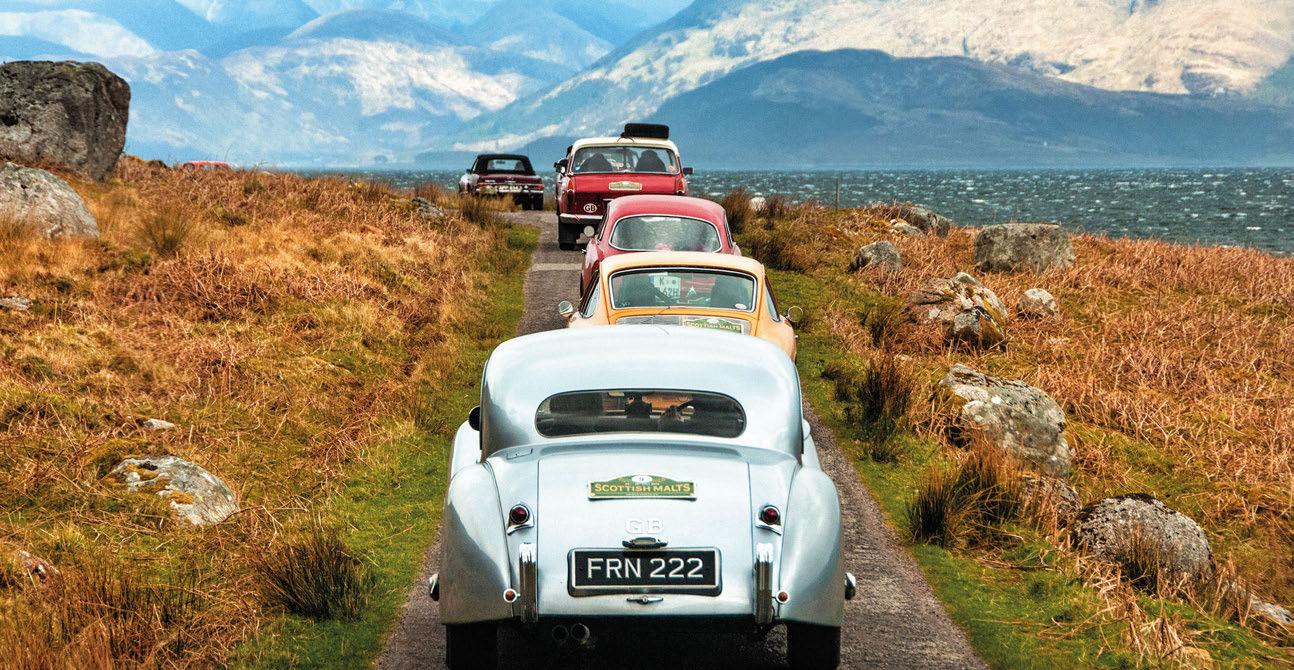






Letter of the month
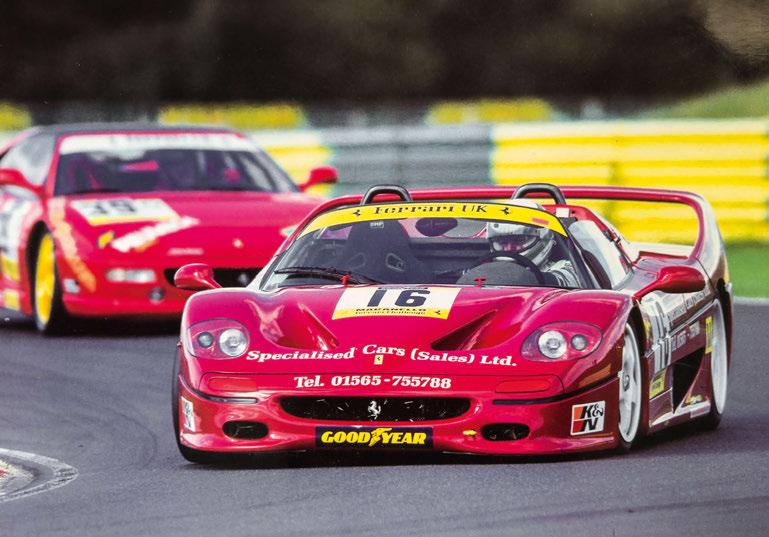
A rather Specialised F50
REGARDING your cover story in Octane 265 about the Ferrari F50, in the 1990s I worked for a Ferrari garage (Specialised Cars of Knutsford) that race-prepared an F50 for the Maranello Ferrari Challenge. It is believed to be the only F50 that ever raced and, when I was running the team at Donington during the 1999 season, I was asked by Eurosport if I would do an interview about it.
The reason they wanted to speak to me was because two weeks earlier at Monza they had interviewed Luca di Montezemolo, who had stated that no F50 would race – hence their surprise in seeing our car. Driven by owner Ian Hetherington, it beat several F40s to win the Challenge in 2000. It was eventually sold in America by broker Michael Sheehan, still wearing its race livery.
I completely agree with the comments about the F50’s power delivery: I drove it on the road from our garage to Ian Hetherington’s home and it was very tractable. The F40’s power delivery, as you say, was much more fierce. I remember two occasions when I delivered F40s to experienced club racers
and in both cases the drivers crashed on the road a day later, and I had to collect the cars for repair. Bernard Whelan, Cheshire
In December 2023, duPont Registry offered the F50, chassis 103496, for sale. The advertisement stated that the car had passed to Preston Henn in Florida in 2000, where it was repainted in Fly Yellow, and was then restored in the early 2020s at a cost of over $770,000 to original specification, below. MD
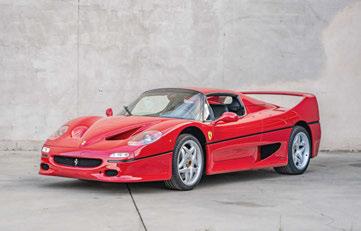
LETTER OF THE MONTH wins a Ruark R1 Bluetooth Radio, worth £239
The R1 is perfectly proportioned, beautifully made and deceptively powerful. It’s the perfect bedroom, kitchen or workshop radio.
Ruark is a family-owned British company, passionate about sound and design. Its aim is to make premium music systems that look and sound fabulous, products that will enhance your home and life, including radios, compact active speakers and all-in-one music systems – all with Ruark’s long high-fidelity heritage at their core. Visit ruarkaudio.com for more information.
Exceptional XJ6
I am so glad that Robert Coucher enthused about the early Jaguar XJ6 in Octane 266 [below].
I had one, also a 1970 example in silver with a red interior but an automatic. I paid £900 for it in 1985 and used it every day for work and for towing my HWM Jaguar, ‘HWM 1’, up and down to Silverstone. Its only crime was a prodigious thirst – I could never get more than 16mpg.
If there was a slack time in the office, I came home and serviced it. Running a 15-year-old Jaguar every day was perfectly practical in 1985 but I doubt that an amateur mechanic could do the same with a 2010 Jaguar today. The only real progress since is that fuel consumption has halved.
I later had a fuel-injected Series III Daimler Sovereign. One day it failed to proceed, despite having ample sparks and fuel. I couldn’t figure out why and nor could the service manager at the main agent. It was due to some obscure little gizmo and that was the start of the modern electronic rot.
Kirk Rylands, Cumbria
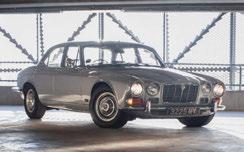
Sweet citrus
I was very heartened that Octane included such a comprehensive article on hot hatches in issue 262.
I am 51 years old and have two sons who are very much into performance cars. One day they said ‘Why don’t you get something, dad, so we can drive and work on our cars together?’
Accidentally on purpose I spotted

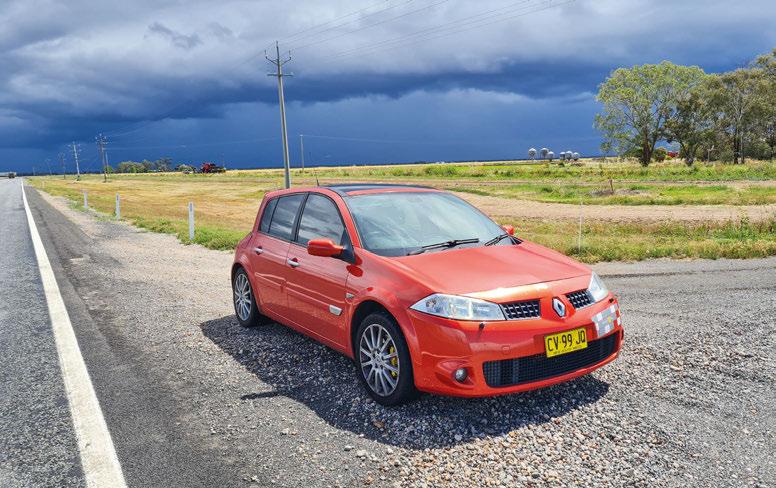
a Renault Megane 225 [above] in a yard in Sydney on Christmas Eve and offered $5000 AUD [£2400], to which the dealer grumpily agreed. After an unpleasant time completing the paperwork, the Blood Orange 225 four-door was mine.
I have to say that the F4RT engine is a very underrated gem. The 225 is fun on the track but I get more pleasure from wafting through curvy mountains with the panoramic roof open and the windows down, winding it through the gears – the feedback is just right. Driving through the city at night and watching the young WRX set look at it with curiosity is my happy place.
Here in Australia there is a very committed community of owners who happily share their knowledge and experience, and get-togethers usually involve meets at well-chosen restaurants with intelligent conversation, laughs and bonhomie. I have found my greatest motoring pleasure in the hot hatch, despite my advanced age, and all the cars featured in your article offer amazing fun for not much money. They can absolutely hold their heads up as classic cars, providing as much joy and excitement as exotica priced in six figures.
Rody O’Grady, New South Wales, Australia
Roundhouse kick
I was delighted to find the Harald Ertl BMW M1 in your cover feature about barn-finds in Octane 266 as I had recently seen that unique car the weekend before at the Classic Remise centre in Dusseldorf [below]. The good news is that it’s in much better condition now than when the picture in Octane was taken.
Classic Remise is well worth a visit – and it’s free. A converted railway engine roundhouse, it is now home to multiple car- and bike-related activities, including sales, storage, workshops and a couple of restaurants. It’s a striking building, with some rare and beautiful cars of all ages.
Ian Ackerley, Surrey
We ran a full feature about the remarkable Classic Remise in Octane 158, August 2016. MD
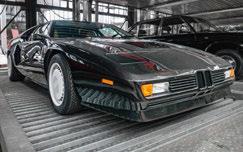
Schlumpf bumped
While I read your article about barn-finds with great interest, I was surprised that no mention was made of the finding of the
Back to basics?
By chance, I recently had the opportunity to view perhaps the world’s most original Dino 246. It got me thinking that the Dino and the F355 are probably the only really lightweight road cars that Ferrari has ever made – and they were great driver’s cars.
Gordon Murray has proved that powerful cars can also be delicate and light. I visualise a Ferrari with a 3.5-litre normally aspirated 400bhp V8, a six-speed manual – perhaps with an auto’ option – but no adjustable suspension, Manettino or suchlike, which all add weight. Note that it doesn’t have to be inexpensive. Porsche, for example, is a master at taking out equipment and charging more. Lindsay Taylor, Sorrento, West Australia
Schlumpf Collection of Bugattis in Alsace, France.
Peter Henry, Lancashire
You raise a good point! The Schlumpf Collection is, of course, hugely significant – but it was well-known in Bugatti circles long before its ‘discovery’ by disgruntled Schlumpf employees in 1977. MD
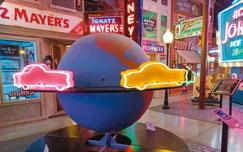
Your article about neon in Octane 262 mentioned large neon signs for Packard dealerships on America’s west coast, which reminded me that there is such a sign outside the former Citizen’s Motorcar Company showroom in Dayton, Ohio, that opened in 1917. It’s now a large car museum dedicated mostly to Packards.
The American Sign Museum in Cincinnati also has tons of neon on display. In my opinion, the coolest is a rotating sign [above] from Compton, Los Angeles, for the Earl Scheib bodyshop chain. You can clearly see a bullethole in the globe portion of the sign.
Mark Turner, Cincinnati, USA
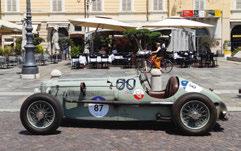
Parma produce
My wife and I recently fulfilled a long-held ambition to witness the Mille Miglia. As we walked among the 400-plus cars, all lined up for the start, the atmosphere was great and very relaxed. Something about the unusual front suspension of a car we later saw parked in Parma [above] struck a chord, and when I got home I looked back through some old issues of Octane until I found in Octane 249 a feature on the very same car we’d seen – a Lancia Dilambda. There are two morals here: visit the Mille Miglia if you can, and keep your Octane back issues for reference. You never know when you may need them! Gerard McCarthy, North Yorkshire
Send your letters to letters@octane-magazine.com
Please include your name, address and a daytime telephone number. Letters may be edited for clarity. Views expressed are not necessarily those of Octane.
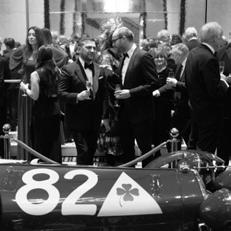
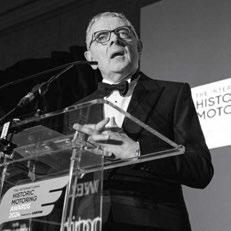
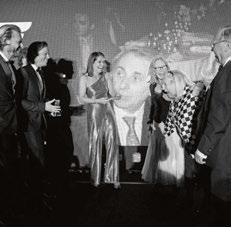































PHENOMENAL IS THE WORD THAT SUMS HIM UP. A LATERAL THINKER WITH SUCH A CAPACITY TO THINK OUTSIDE THE BOX. SADLY, THERE WOULD BE NO PLACE FOR HIM IN TODAY’S CIRCUMSCRIBED FORMULA 1

JOHN WATSON
Gordon














‘I’ve known him since 1972 and always found him a thoroughly practical bloke who cuts through all the bullshit and gets to what counts’
DICK CROSTHWAITE
’I was a young driver in my mid-20s when the McLaren F1 appeared. I remember wondering what brilliant mind could have created this – and then I met Gordon, who looked like a wacky professor, and it all made sense’ JUSTIN BELL

‘I never met Marc Birkigt, the Duesenberg brothers or WO Bentley but having Gordon Murray, who is the embodiment of these three great men, visit me at my garage was one of the greatest days of my life. Sometimes you do want to meet your heroes’ JAY LENO
‘Gordon has a lot of strings to a very large bow. He never stops being curious as well as competitive, be it a downhill soapbox race, Alain de Cadenet’s Le Mans Lola, or my GTO – which I was pleased to lend to him to explore any possibilities of finding elements that might be incorporated into the F1’ NICK MASON
He designed cars that others would follow, always very close to the line because he would read the rulebook from front-to-back and back-to-front. A real gentleman and a real legend of our sport, at a time when ONE MAN could make a di erence
DEREK WARWICK
‘I’ve always regarded Gordon as a messianic figure: divisive but inspirational. In the case of his McLaren F1, for anyone to commit, 30 years ago, to spend £635,000 on the purchase of a road car from a company that had never made one represented an extraordinary leap of faith’ ROWAN ATKINSON
‘In so many ways, Gordon’s an exemplary lateral thinker, an inspiring team leader and a really good guy’ DOUG NYE
Gordon Murray
over the next 30 pages; these exclusive tributes from true legends of motoring show why he’s worth it
WHEN I BOUGHT THE BRABHAM FORMULA 1 TEAM, I WAS VERY PLEASED THAT I COULD RETAIN GORDON – AND HE BECAME AN IMPORTANT PART OF THE TEAM
BERNIE ECCLESTONE
‘Gordon Murray has always represented the ultimate “car guy” with his fanatical obsession for lightweight cars with modest power – as seen in his personal automobile collection, which I admire extravagantly’
MILES COLLIER
‘His dedication to cars that combine great character with great e ciency – large or small, road or competition, expensive or a ordable – is simply unique. One of the greatest car engineers of any era, and we’re so lucky that he lives in ours’
STEVE CROPLEY
GORDON ALWAYS MADE ME SMILE. HE HATED ANTI-ROLL BARS BUT WE ALL PUT THEM ON HIS RACE CAR – AND AFTER EACH WIN, HE WOULD SEND ME A POSTCARD RAY BELLM

DON’T LOOK BACK
Pondering 60 years of cars, music, design and ambition with the king of lightweight, Gordon Murray
Much like a 19-year-old Bob Dylan arriving in New York brimming with talent and potential, Gordon Murray landed in England as a 23-year-old with little more than uncanny ability and burning ambition. It’s a paper-thin parallel for sure, but one that tracks two complete unknowns who both became legends in their respective arenas. Decades later, Dylan is music royalty, while Murray’s impact on road and track has been nothing short of asteroidal. His 60-year design career has delivered, to name just a handful of highlights, five Formula 1 World Championship-winning cars, the epochshifting, Le Mans-conquering McLaren F1 supercar, and a bevy of eponymously branded ultimate drivers’ hypercars.
The thought of interviewing Professor Gordon Murray CBE is a little daunting, not only because he is a bona fide legend and one who reportedly doesn’t suffer fools, but also because he is, in his own words, ‘unnecessarily tall’. Perhaps it’s my Cape Town accent, or hearing that I too spent my childhood in Durban, or discovering that a GSM Flamingo illustration he once bought was one of mine, but I needn’t have worried as Murray is affable, gracious and forthcoming. As our extended chat and generous tour of his fast-expanding GMA Windlesham facility reveal, the great man is still, as he has been all his life, ‘driven by the next challenge’.
Born in Durban, South Africa, in 1946 to parents of Scottish descent, Ian Gordon Murray admits that he’s never had a plan, just ambitions. He describes his early family life as ‘very working class’ – they’d never owned a house or bought a new car. His father was a motor mechanic who repaired and prepared road and race cars, and had campaigned motorcycles before the war. None of this was lost on a budding petrolhead. In the GMA heritage area, a photograph of four-year-old Gordon, head flopping around in his father’s helmet while riding a bespoke trike, speaks volumes. ‘My dad built it for me. We never bought anything. He made everything.’ It was clearly the kind of example that burns sectors in your cerebral hard drive.
From the age of six, all he wanted was to be a racing driver. ‘I never went through the “I want to be a fireman” stage,’ says Gordon. ‘Forget design because I had no idea what that was.’ Like many with highly specific, elevated talents, he struggled in the classroom. Being dyslexic didn’t help, but Gordon loved physics and was fond enough of art to pick it as his main subject at Glenwood High School. Fortunately, barely
‘My life has always been 50:50 music and cars, and Bob Dylan was my absolute music hero, right from a teenager’
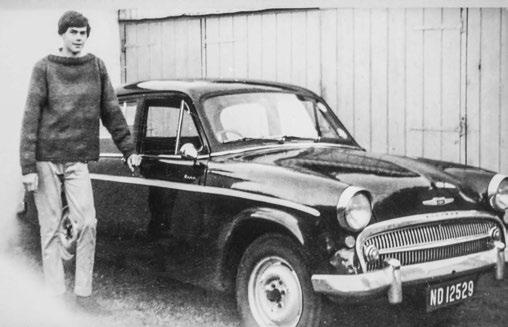
Above
Murray’s first car was a 1956 Hillman Minx. His own lightweighting mods involved removing the wheel covers…
a month into the year, Gordon’s teacher wrote to his parents after clocking that his art books were full of racing cars, suspension set-ups and electric guitars – his love for cars is matched only by his love for music. ‘I would have made a lousy artist,’ he says, adding that he simply wouldn’t be where he is today if he hadn’t ditched art for technical drawing. Above-average results in TD and physics helped him scrape through his final year of high school.
Yet during those last few weeks a career advisor suggested that Gordon should consider a writing career. ‘My life has always been 50:50 music and cars, and Bob Dylan was my absolute music hero, right from a teenager.’ To get a better sense of just how great a role music has played, Gordon’s collection numbers some 8000 albums. ‘A lot of those are vinyl,’ he says, before casually mentioning that of Dylan’s 44 studio albums, he has 490 copies, including all the bootlegs and the original acetates! So, with Dylan’s lyrics front and centre, Gordon reveals that he went through a period of writing ‘a lot of hugely political, complex poetry’ but soon realised there wasn’t much money in it.
His next move was a five-year apprenticeship with a packaging company, combined with evening classes in mechanical engineering at Durban Technical College. ‘It was driven by a desire to be a racing driver and the realisation that without money I would have to design and build my own race car and engine, and also that I knew nothing about chassis design.’ Those years mixed academic attainment with practical experience – all while earning just enough to build a racing car in his parents’ back yard.
Powered by a substantially modified 1.1-litre fourcylinder motor liberated from a Ford Anglia 105E, Murray’s Lotus Seven-like machine (now referred to as T.1) was a featherweight marvel. Among the many items decorating GMA’s heritage area is the trophy he received for winning the sports car class at the Burman Drive Hillclimb just before he left South Africa in 1967. A staged drawing office contains his original Kuhlmann drafting machine and a Bilt geometry set – an 18th birthday present from his parents. ‘Those exact compasses and instruments have drawn five World Championship Formula 1 cars and the McLaren F1,’ he says, proudly, before pointing to the original drawings for
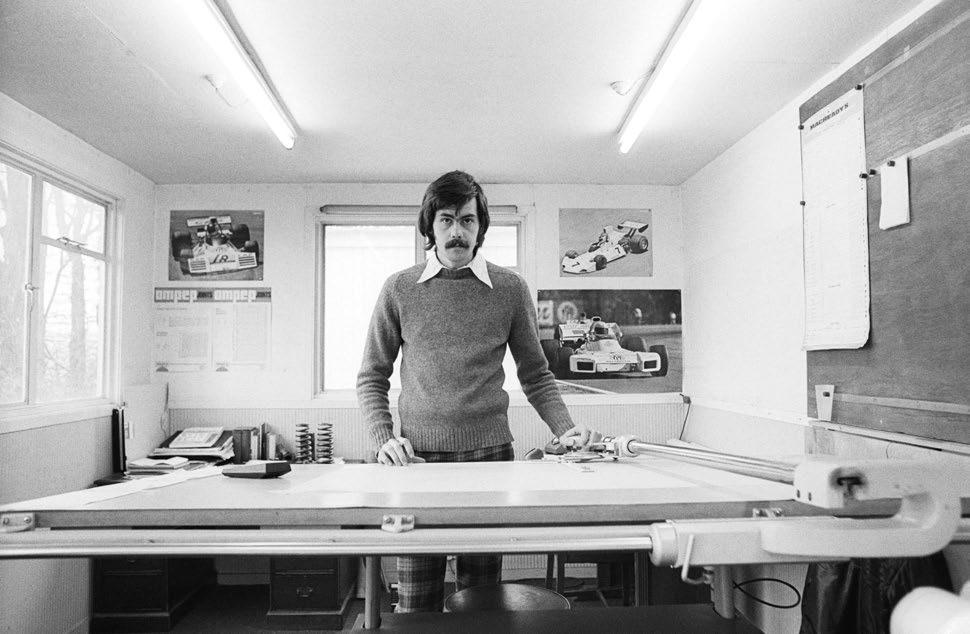
the T.1. Murray’s mother had kept everything, and sent it all over to England in a big box once she realised her son would not be returning.
‘I was desperate to carry on racing when I got to England and the only thing I could afford was Formula 750,’ explains Gordon, drawing our attention to a little orange race car known today as T.4. ‘That’s the car I designed and built to race here, but then Bernie [Ecclestone] promoted me [to chief designer in 1973] and I just had no time.’ Up to that point Murray had been working as a junior draughtsman at Brabham under Ron Tauranac. And so his first real go in T.4 came 49 years later, in a ‘quite nostalgic’ drive at Goodwood.
Not unexpectedly, Gordon counts Colin Chapman as his ‘car hero’, and it’s the Lotus 25 he admires most. ‘He wasn’t a designer, he didn’t draw much, but he had innovative ideas and people who could translate them into really good motor cars. When that car came out, it was the first sort of monocoque and it just broke a lot of rules. There wasn’t a bad thing about it. I wish I’d thought of it. Superb aesthetically, straight out-the-box quick, and my all-time favourite racing driver, Jimmy Clark, won championships in it. I hitch-hiked from Durban to Johannesburg in 1963 to watch Jimmy in a 24 the first year, and in a 25 the next.’
At first Gordon’s ambition was just to meet Chapman, but his second was to build lighter, more innovative cars and beat his hero on the track. That chance came in only his second year as a chief designer in Formula 1. His Brabham BT44 won both the South African and Austrian rounds, but it was the 1-2 demolition at Watkins Glen in the US Grand Prix, the final race of the 1974 season, that proved most satisfying. Chapman, who’d barely spoken to Gordon before, approached him after the race, put his hand out and said: ‘That’s the way to do it.’
It was a case of ambition fulfilled for Murray – with a surprising twist: ‘That night Chapman offered me a job. Obviously, I never took it. I was very autocratic in those days – I’m still quite strong-headed – and I knew he was, too. I just
didn’t think it would work. Did it make me feel good? Yeah, absolutely. I lived on that for ages.’
Rounding off Murray’s trio of most influential people is George Harrison, lead guitarist for The Beatles. ‘George was probably my best friend for 25 years. He taught me a lot about music, of course, and an awful lot about life. When we only had 14 people at Brabham, not 1000, Formula 1 was pretty stressful; George taught me to keep a calm and clear head. That had a huge influence on me.’
Gordon also refers to Stella, his wife of 55 years: ‘She says I’m driven, that I’m so absolutely focused I let nothing get in the way.’ Added to that is Gordon’s desire to be better than everybody else; to win. ‘In Formula 1, I hated coming second. I never celebrated. That wasn’t a result for me.’
After 17 years with Brabham, a stint that yielded two World Drivers’ Championships for Piquet, in 1981 and 1983 with the BT49 and BT52, Murray joined McLaren as technical director in 1986. There, he oversaw the design and development of the 1988 Drivers’ and Constructors’ titlewinning MP4/4 along with that car’s equally successful successors, the MP4/5 and MP4/5B.
Ready for a new challenge, Murray took his track-car nous to the streets, and delivered a string of hits including the tandem-seat LCC Rocket, McLaren F1 and its comp-spec GTR derivative, then the Mercedes-Benz SLR McLaren. In 2007 he established Gordon Murray Design, out of which flowed his iStream production process, T.25 and T.27 prototype city cars, stillborn projects for Yamaha and Toray Industries, and the dormant flat-pack OX truck project.
There was an all-new TVR Griffith in there, too. ‘That was such a lovely little car. I’ve still got a deposit on one. I only drove it once on circuit and it just felt so right. I said [to the TVR team], “Don’t start this if you don’t have the money.” I was assured they had it, so I pulled favours to get it launched at Goodwood Revival and we built one running prototype. And then they came back and said, “We haven’t got the money.” That was 2017!’

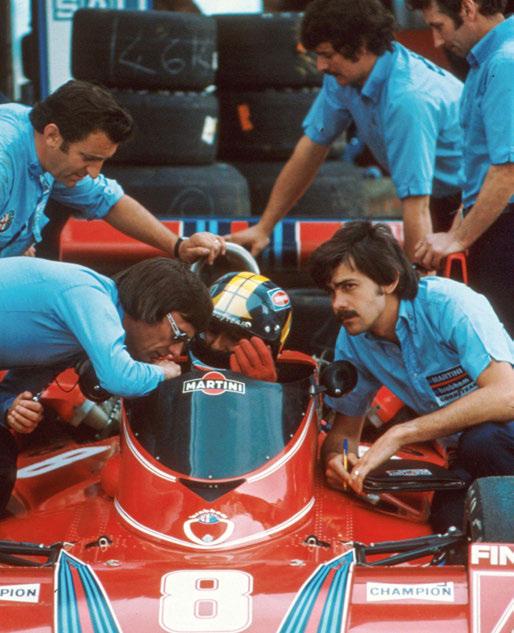
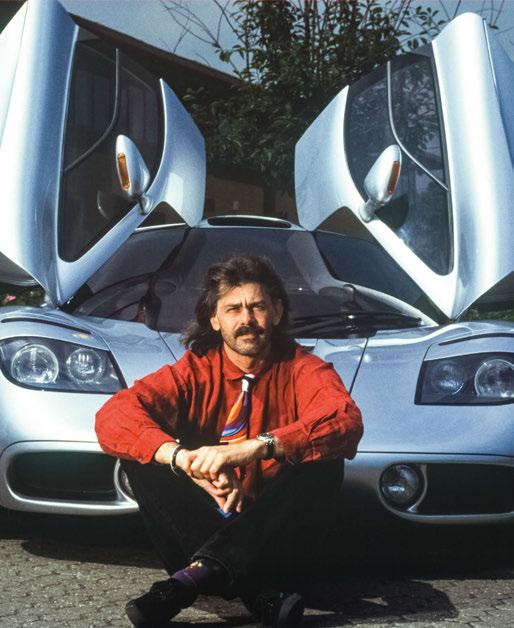
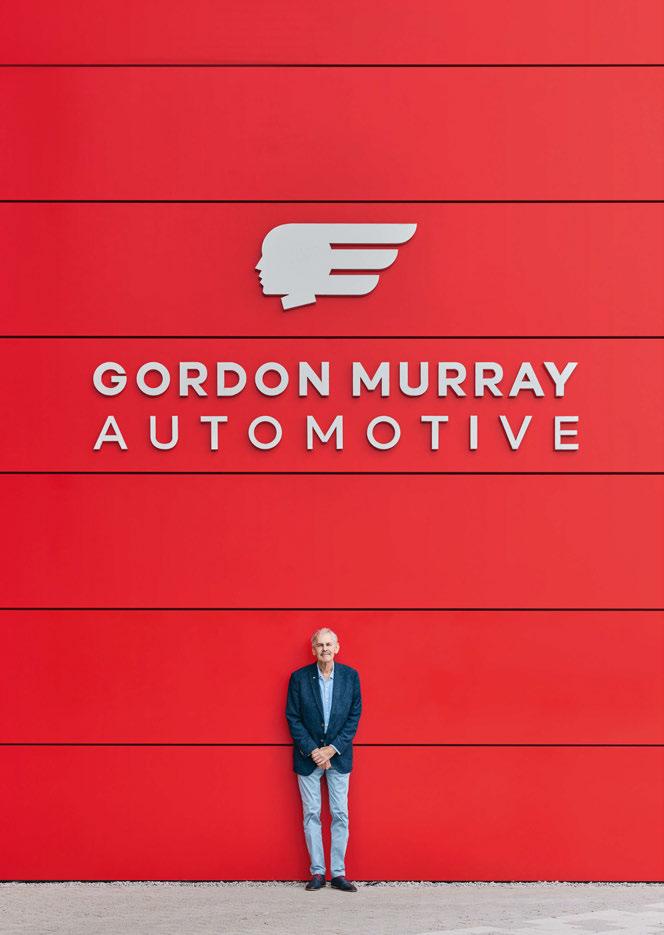
Above and opposite Murray founded his own company in Surrey in 2017; its first product was the T.50, a 100-off limited-run supercar that sold out immediately – the last is being finished right about now.
Gordon’s attention then turned fully to the opening of Gordon Murray Automotive (GMA) and the design and manufacture of a range of ultimate driving machines. Designed by a close friend of Gordon, the GMA logo directly reflects the Murray clan’s 12th Century family crest – a mermaid with a comb and a mirror. ‘I’ve no idea why,’ concedes Gordon. ‘It was a very flowery design, so he stylised it into what we’ve got now, with the badge’s three colours – red, green and blue – referencing Murray Tartan. We always say we’ve got the oldest car badge on the planet.’
The first product to emerge from GMA was the T.50, Murray’s spiritual successor to the McLaren F1. Designing it offered the chance to make a few improvements. ‘It was very clear what worked with the F1 and where we could improve. The T.50 isn’t a step forward like the F1 was. Relative to the Jaguar XJ220, the [Ferrari] F40, the [Bugatti] EB110 and the Porsche 959, the F1 was a game-changer in terms of driving experience, engineering quality and materials. I don’t think that’s ever going to happen again. I drove the T.50 and the F1 back-to-back in Spain recently and the new car does everything the F1 does, just better. But, there are certain bits of early-’90s tech that didn’t work very well. The headlamps were pretty useless, to be honest. At anything over 80mph at night they were like glow worms in a jar.’
The list of priorities for the T.50 included fitting best-tech
‘The last person I can think of who was similar to me was Mauro Forghieri’
headlamps and air-conditioning, and switching the F1’s hated racing-style bag fuel tank for a fit-for-life aluminium unit. The F1 featured the world’s first carbon clutch, which needed gearbox-off adjustment every 5000-15,000 miles. For the T.50, GMA developed a brand new type of carbon, ceramic and sintered fit-for-life clutch. Gordon even solved the little things such as the drop-down panels that offered compromised access to the side luggage compartments on the F1 by opting for De Tomaso Mangusta-style split tophinged engine covers. ‘I think we nailed it with the T.50.’
With all 100 units of T.50 selling out almost instantly and critical reviews largely concluding that it meets Murray’s stated aim of being the purest, lightest, most driver-focused supercar ever conceived, it’s clear Gordon’s icon-creating engine is firing on all cylinders. ‘The last person I can think of who was similar to me was Mauro Forghieri. You could lock him in a room and he could design you an engine, a gearbox, do the aerodynamics, chassis, suspension geometry, stress analysis and the styling. And that’s what I can do. It’s probably not unique, but it is unusual for an engineer. The only thing I haven’t got a clue about is modern electronics.’
It’s a given, then, that he thinks a lot about cars, and music, but you can add pretty much anything to do with design to the list as well. Over the years he’s designed furniture, guitars, houses and buildings. ‘I did the layout for this building,’ he says, rightfully beaming. ‘Together with my original PA, who was with me for 35 years, we listed all of my other interests. Initially I thought we’d have six things: music, Bob Dylan, art, architecture, poetry, fine wine. In the end it was 33! And in some of those subjects I’m just as driven. I hate doing something half-heartedly. Jukeboxes are a good example. I have 17 of them – 16 too many according to my wife. But I can tell you every single jukebox of note, when they were designed, the type of mechanism used, probably what they’re worth and how many were made. I get quite fanatical about things.’
On the day of our visit, Gordon had only just finished loading records into one of his jukebox wonders in preparation for spinning duty in a hospitality area upstairs. It’s a shining example of Gordon’s fascination with Americana. Asking the obvious question proves more fruitful than I’d imagined… ‘South Africa was part of the Commonwealth so we used to stand up for the Queen at the end of the movies and that sort of thing. But, because Durban was a seaside town, we had drive-in cinemas, drivein milkshake bars and some American cars. Although we bought and drove very English cars, there was definitely a sort of a California/Florida influence in the lifestyle. If you want to know how I grew up, just watch American Graffiti – street racing from light to light, lighting fires and cooking on the beach at night, and surfing. I surfed every
day of my life until I was old enough to have a motorbike.’
From every angle, Murray’s life looks like one well-lived. He readily acknowledges that he has ticked a lot of personal boxes along the way. These include things such as designing a house that makes all its own energy (accomplished 11 years ago in the Scottish Highlands); writing songs, playing guitar, banging drums and being in a band. He says they were rubbish; he also admits Leo Sayer played with them a couple of times.
As for unfulfilled dreams, Gordon has a few. The big one being Gordon Murray Special Vehicles (SV), a company he envisioned while recovering from cancer treatment last year.
‘I’m 80 next year,’ he says. ‘I’m running out of time but I’ve got all these wacky cars in my head and things I want to do that don’t really fit the GMA product and platform philosophy. Basically, one of the SV workstreams is whatever customers dream up, while the SV cars are whatever I dream up.’
Apart from a healthy fixation with reducing the mass of his own cars, Gordon is obsessed with giving them classic proportions. ‘Even with the outrageous T.50S, we’re not following current supercar trends in any way, shape or form. There seems to be a race on to do the most outrageous shapes and then come up with an aerodynamic story to back them up. Most of it is pure nonsense, and I just don’t subscribe to it. We never want to tie the design to a period in time. Even at 30-plus years old, the McLaren F1 is still a lovely, classically balanced design. T.50 is sharper and more modern but it’s got the same classic proportions.’
With GMA’s latest model, the T.33, heading into preproduction, we’re all waiting to see the third and final version. The presentation prototype is complete; I know because I had to restrain myself from sneaking a peek beneath its black cover. What’s currently on Gordon’s drawing board (and he means
a drawing board in the physical sense), besides the SV cars, is Project 3, the next GMA platform.
Knowing that Gordon Murray doesn’t even use CAD when he’s designing, it’s not surprising to hear that he ‘absolutely never wants to incorporate any AI software into the design process’, not even for rapid ideation and visualisation. ‘It’ll be great for research and benchmarking but I insist that all concept work is done by hand in a sketchbook. That’s just our culture.’
Whichever way you look at it, the future of GMA and the forthcoming SV offshoot looks bright. Building work on the second part of the facility commences this year and is expected to take two years. When complete, it’ll incorporate management HQ, engineering, design, prototyping and machining along with a showroom. Gordon lays out the plan with all the excitement, passion and anticipation of a young entrepreneur about to hit his first target. He really is living the dream. Does he ever have pause to look back with contentment on all his achievements, I wonder?
‘Nope, I’m always looking forward. Don’t Look Back was a brilliant fly-on-the-wall documentary on Bob Dylan, directed by DA Pennebaker in 1967. At the time, I bought a huge blackand-white promo poster of the film. Every time I move office, Dylan and Don’t Look Back come with me. When we finished the little circuit here, we had a private opening ceremony and I did a couple of laps in T.1. Coming down the straight on the second lap, I stopped and realised I was in a racing car that I scratched and borrowed money to build, on my own track, looking at my own building, and I had a bit of a wobble for the first time in my life. If ever I was going to have one, it should have been when Bernie promoted me to technical director. I was 27 years old and he said: “Yeah, run the place and design a new car.” I should have had a wobble then, but I never did.’
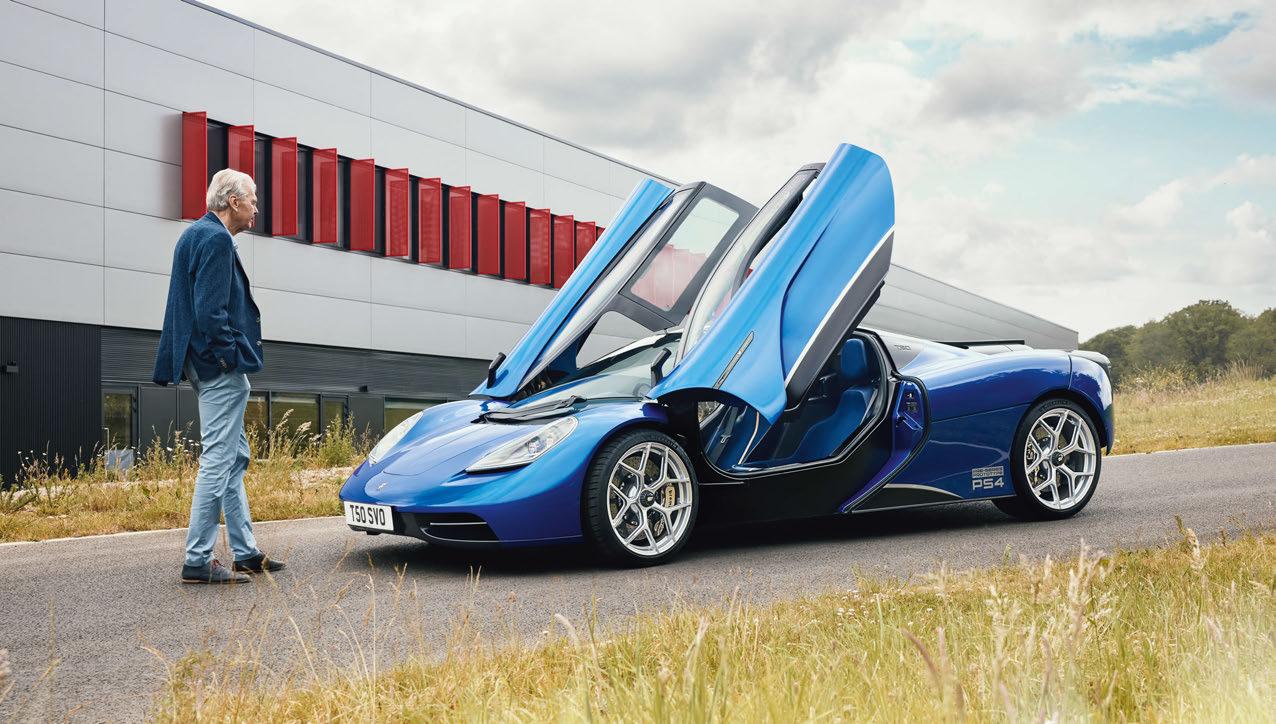
Gordon Murray’s Pretty Little Things
As he’s a designer with six decades of experience, mostly at the pinnacle of road and race cars, you might expect Gordon Murray’s car collection to include big-ticket Ferrari, Lamborghini, Aston Martin and Porsche supercar staples. After all, he was responsible for creating the McLaren F1, one of the fastest and most valuable collector cars of all time. Instead, the criteria (almost without exception) for a spot in Murray’s 60-plus car personal collection are: ‘late-1950s or ’60s, small, light and pretty’. Naturally you can include Lotus (of which he has 14), Abarth (5) and Zagato (5) in that list.
‘These are the cars that I always loved and lusted after,’ says Gordon, as we descend a spiral staircase to a repurposed parking area beneath what was originally the HQ of the British Oxygen Company. Plans for the ‘molecular’ building above, at the north end of GMA’s 54-acre Highams Park site, include a mechanical engineering institute that’ll follow a Murray-tailored syllabus. Expect graduates to be snapped up as fast as the next GMA T-model.
The door opens into a space brimming with mostly subone-ton machines that, despite being more petite than potent, have an allure usually reserved for cars far less humble. ‘It’s a very different collection,’ offers Murray. ‘We get GMA owners who have 100 cars themselves and they’re down here for two or three hours just because the cars are all interesting, and they’ve all got stories.’
I’m immediately captivated by a 1969 Honda S800 that Gordon tells me revs to 10,000rpm courtesy of a rollerbearing split crank. ‘That’s what F1 cars did at the time! I found this one in Holland. Whenever I buy a new car, we usually have to take the seat off the runners, bolt it as far back as possible, take the upholstery out and fit a smaller steering wheel. Even after all that, I still didn’t quite fit in the Honda. Then I discovered that the pedal rubbers were 8mm thick, so I took them off and I was fine. It’s so much fun. The gearbox is so positive, just a wrist movement really; it’s rifle-bolt stuff.’
The cars that enchant this re-inventor of hypercars are smaller, lighter and daintier than you might expect
Like a packet full of M&M Minis, there are sweet little motors everywhere. ‘They’re not all here,’ says Gordon. ‘I’ve got 11 of them at home and we rotate them every summer.’
For Gordon, it’s important that every road-legal car in the collection gets driven: ‘I don’t like static museum cars.’ But he’s also not a fan of massive events, so organises three rallies every year for his wife and a couple of friends: eight people, four cars at most. ‘These are fine for a 700-mile trip, but you wouldn’t want to drive to Italy in them, so I’ve just recently bought some modern classics. They’re all spiders: BMW Z8, original Porsche Boxster S and a very early Ferrari F430 Spider, which is the only car that is too big.’
As I take in the cabin details of a freshly restored GSM Dart, Gordon tells me: ‘I used to race against those. They made an impression, just because they were light [520kg]. They had really wacky suspension, the coupé Flamingos even more so, and the chassis was basically just two tubes, like an AC Cobra. Damp spaghetti is stiffer.’
Then I spot a metallic green Maserati Merak in the corner. It’s the latest addition to the collection and he’s yet to drive it. Head swivelling in an owl-like movement, I drag Gordon over to a 1957 Lancia Appia Zagato GT Sport (badged ‘GTZ’) in delicious burgundy paint with cream wheels and chromed hubcaps. It’s one of 30 aluminium-bodied cars and is powered by a ‘narrow-angle [10º] 1100cc V4 that has the footprint of an A4 piece of paper’.
Suddenly: ‘My God, the Smart Roadster’s here,’ exclaims Murray. ‘Until I got the Alpine A110, this was my everyday car for 16 years. Such great packaging; I fit in here easily. And the two boots are very useful. I can get six cases of wine in one of these. In the Alpine I can’t even get one!’
By his own admission Gordon is ‘not really a Ferrari guy’ but from the moment the Bertone-penned 308 GT4 came out he thought it was just fantastic. ‘It drives well on its 210mm-longer wheelbase, handles really nicely and I love that little 3.0-litre V8. But get the carburettor one, not the injected version.’
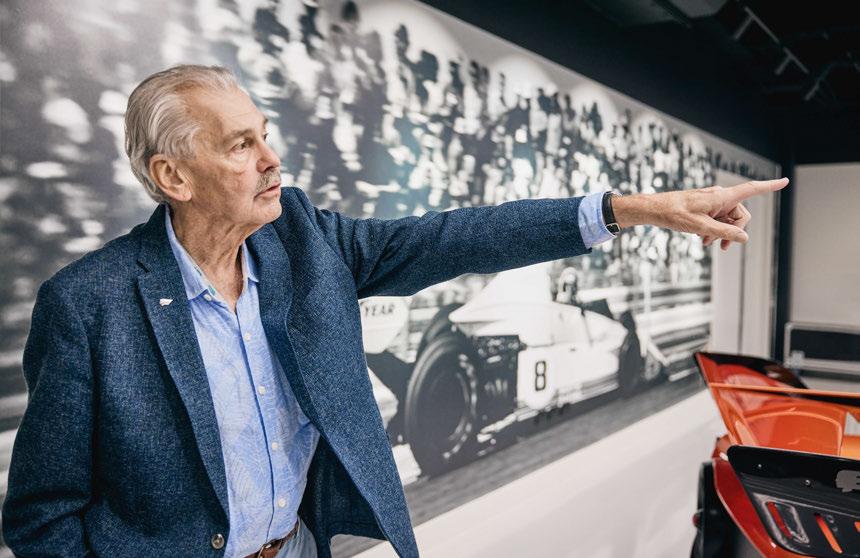

‘The 1956 OSCA MT4 Spider passes my 360 ° test – walk all the way around it and it doesn’t have a bad angle’
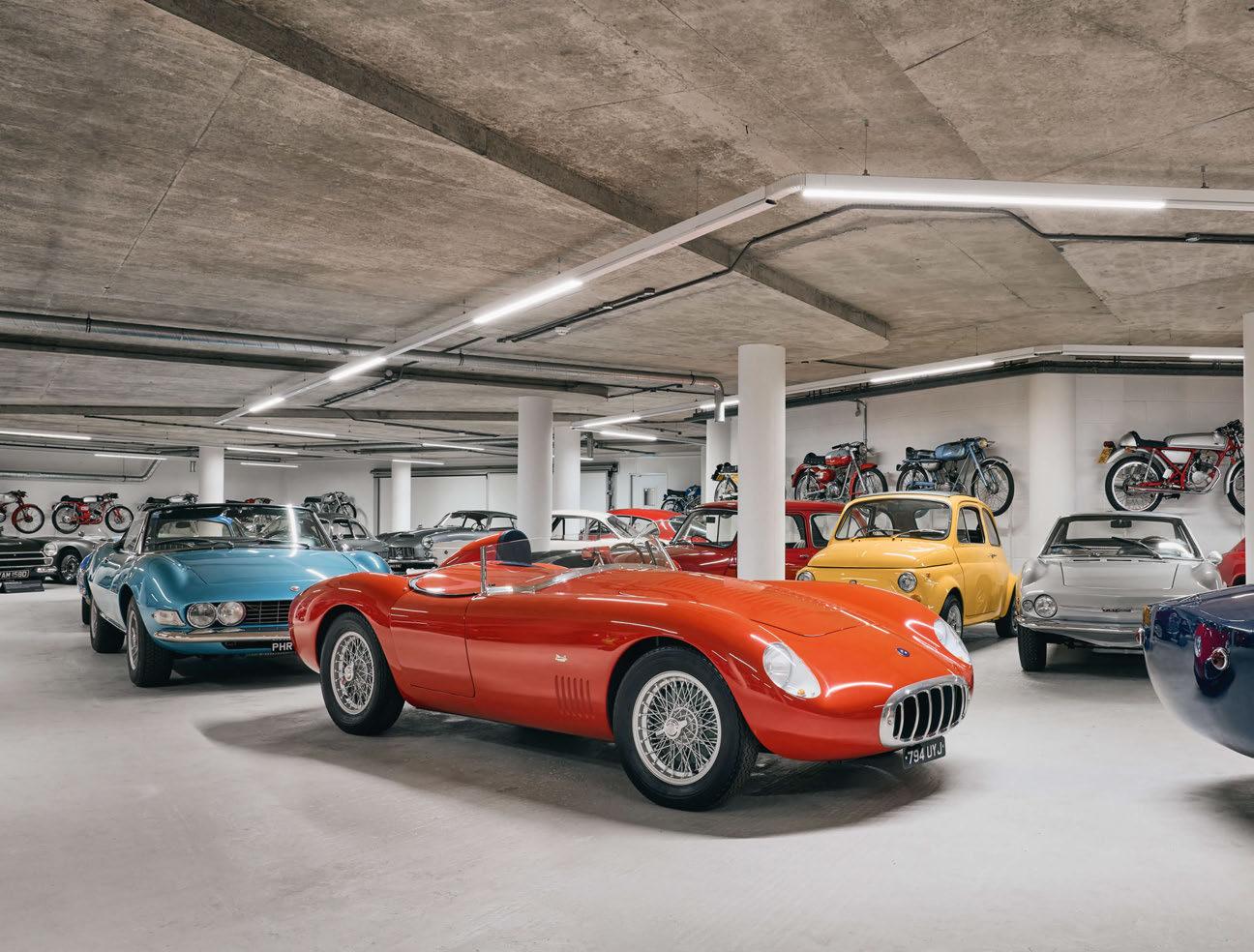
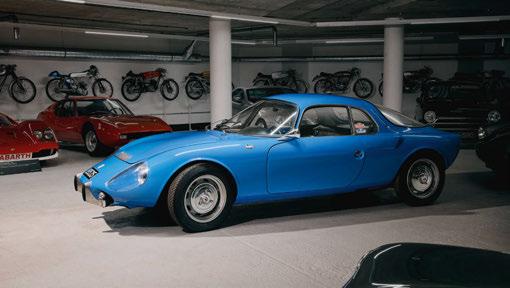
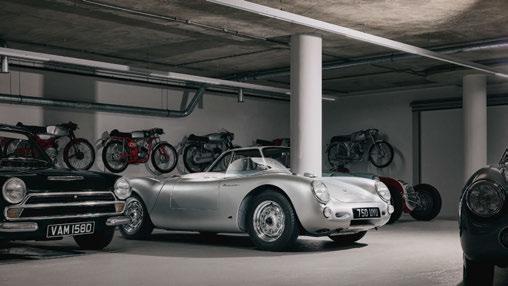
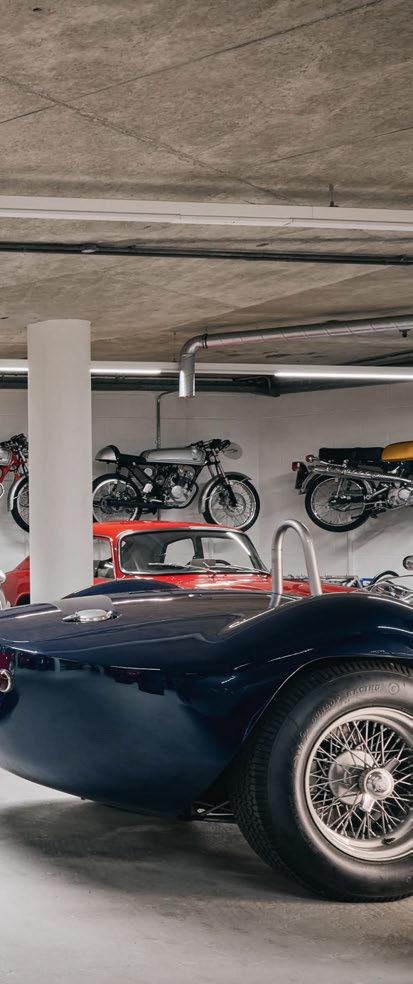
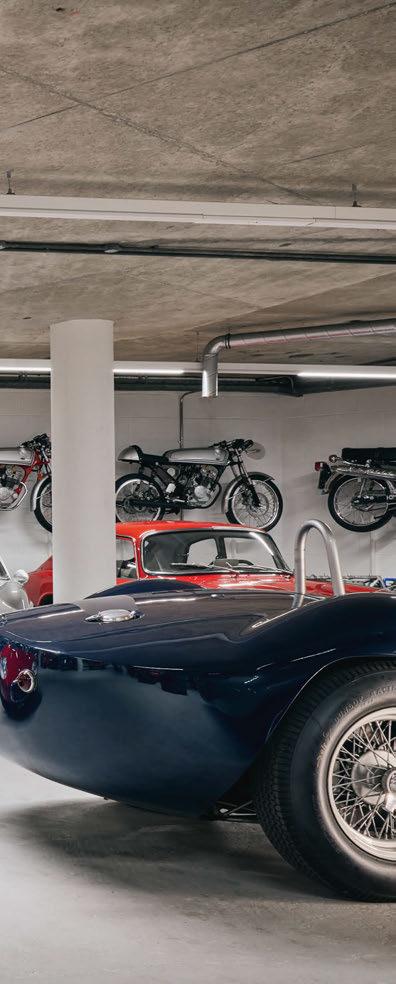
Few cars are as perfectly formed as the Alfa Romeo Giulietta SZ. Gordon says: ‘I never planned to have a Zagato collection. It’s just a lot of the cars I loved happened to be Zagato and this is another one. I asked my wife what she would like us to take on a rally once. And she went: “Oh, that pretty red Alfa you just bought.” It’s a noisy, and quite bumpy, racing car. Thank goodness the rally was only over to the Isle of Wight!’
Moments later, listening to Gordon talk about the sublime steering and driving characteristics of his three [possibly four] Lotus Elans, it’s unsurprising to hear that it’s the car he’d choose if hypothetically forced to drive just one for the rest of his days. Whereas, if he had to pick one just to have fun in, it would be his 1966 Ford Cortina GT 1740. ‘They are so tuneable, these fours. This one’s been bored to 85mm and stroked, it’s got cylinder head mods, a race cam, Webers and a free-flow exhaust, so about 130bhp. The back axle moves all over the place and it oversteers on the throttle. I can take somebody out and give them a heart attack in about ten minutes.’
It’s almost impossible not to stare at Gordon’s clutch of Abarths, especially the otherworldly OT 2000 ‘Periscopio’. ‘I saw one in a magazine when they first hit the scene and I immediately thought, “Wow, how cool is that ram induction?”… until I bought one. It’s just to cool the driver.’
With limited time for photography we pick out several favourites and just let Gordon tell their stories, which he does as passionately as if sharing his collection for the first time.
1968 De Tomaso Vallelunga, 695kg
‘When the Vallelunga [picture on next page] came out I thought: what a beautiful little car, with absolutely lovely proportions. It’s likely De Tomaso got the chassis idea from the Lotus Elan but this is the first rear/mid-engined car with a backbone chassis. The steering is about 10-15% too slow, but it drives really nicely and handles well. I’ve driven it a lot.
‘It’s one of a handful of 1960s cars that influenced the T.33. Others were the Alfa Romeo Tipo 33 Stradale, Ferrari 206 SP Dino [the Mauro Forghieri-designed racing car, not the road car] and parts of the Lamborghini Miura, particularly the look over the front. The rear end of the T.33 is Porsche 904 Carrera GT. I’m building one of those at the moment.’
1956 OSCA MT4 Spider, 581kg
‘OSCA was formed by the Maserati brothers in 1947. The MT4 was their first car and they designed their own beautiful little twin-cam engine in several engine sizes, culminating in a 1490cc twin-spark version in 1954. It’s very similar in character to the Lotus Twin Cam, so
it’s got a nice mixture of torque and revs and a lovely induction sound. And they won so many races in the 1950s.
‘The reason I bought this was because, growing up, I really got passionate in the late ’50s about cars and in particular, sports cars and racing cars. From that period, there were lots of well-known Ferraris, the 500 Mondial, the 750 Monza, and others. All those cars looked similar to this with the faired-in headrest and stuff. They’re lovely, but every single one of them has an angle that just doesn’t work as well. This one, though, passes what I call my 360° test – walk all the way around it and it doesn’t have a bad angle. It’s just a beautiful little motor car and it’s a handmade aluminium body again, with the Maserati engine. It doesn’t weigh much, either. It’s the perfect car for me, really.’
1964 René Bonnet Matra Djet, 660kg
‘French car-maker René Bonnet launched the Djet in 1962. He made a few, raced at Le Mans from 1962 to ’64 before running out of money. Matra picked up the programme, called it a Matra Djet and made quite a few more. This was an important car to look for because most enthusiast petrolheads will say the 1966 Lamborghini Miura was the first rear/midengined sports car, but this came out in 1962 with a rear/mid-mounted Gordini engine. So this was actually the first ever rear/midengined sports car. I’ve been looking for one for years, because of the history and the shape. I just love small, beautiful, milestone cars.’
1963 Abarth 1000 GT Bialbero ‘Ducktail’, 550kg ‘I’ve ended up with quite a collection of Abarths. This one was originally bought straight off the Abarth stand at the 1963 Earls Court Motor Show by Scotsman Bill Murray. It was a works back-up car for the 1963 Targa Florio. In 1992, it set the Grand Touring record at Bonneville in the one-litre class, averaging more than 120mph on salt, where you lose a lot of speed due to the drag.
‘These models were originally sold as road cars and as customer racing cars, all on a Fiat 600 chassis. The first versions to come out had a single-cam engine and made about 75bhp, which was quick enough to win a lot of races in that category. And then, right at the end, Abarth decided to try fitting the 1000cc twincam from the Spider 1000. It was typical of Carlo Abarth. He was always mixing engines. He’d make a few with one engine and then he’d put the engine from another car in. And it was so quick. It’s very light, quite slippery with a small frontal area, and it’s got 104bhp from a 1.0-litre engine. His specific outfits were pretty good for their period.’
1955 Porsche 550 Spyder Replica, c550kg
‘I love everything about the 550S, especially the way they look. I was around ten years old when these were racing. They had prototypes running in ’53, but they came out in ’55. They were giant-killers, mainly because they were very aerodynamic and weighed very little.
‘They had a very complicated twin-cam engine, but it made enough power to win just about everything in its class and on some circuits beat the faster cars as well. They’re extremely rare and expensive so I set out to find a good, faithful replica.’
Abarth 2000 SP SE, 575kg
‘I bought this just before Covid. I fit in easily but still haven’t driven it. It’s got the 2.0-litre twin-cam, about 250bhp, revs to 8000 and it weighs nothing. It’s rear-engined, with a very short wheelbase. Basically, it’s going to be oversteer with a capital O. I can’t wait to drive it. I don’t think I’ll need the steering wheel much. Some of the inspiration for T.50’s gearchange and instruments came directly from this car – big tacho in the middle, and a delicate little gearlever.
‘Carlo Abarth was a bit of strange guy. He didn’t draw anything, he just found good people, like designer Mario Colucci. This one’s rear-engined, but the earlier 1000 SP is mid/rear and then the OT is rear-engined again. I’ve read all the Abarth books and I think what happened is that sometimes Mario got his own way and put the engine in the middle, but other times Carlo would insist it had to be hanging out the back.’
VISITORS TO THIS collection will leave with a crystal clear understanding of what types of four-wheelers make Gordon tick, but they’ll also have had a constant reminder of his fascination for tiny two-wheelers as well. Lining almost every inch of wall area is a hive of ‘buzz bikes’.
‘My dad came home one night and said: “I’ve bought you a non-running two-stroke Maserati. If you want it, you better run down and push it home.” His workplace was two miles away and I just flew there. I was 16, I rebuilt the engine and gearbox, and rode it for two years. And then, about 20-odd years ago, I thought I’d try to find a Maser, just for fun. I found one at Silverstone Auctions, not for £10, though. That’s when the rot set in. A friend had a Beta, another a Garelli. I thought there must be five or six different manufacturers. There were 60! I have 56 bikes here and another four on a wall at home.’
Gordon is so enthusiastic about his cars that our tour takes significantly longer than scheduled, yet as it draws to a close he points to his Lotus 32 and leaves us with one final nugget: ‘Jimmy Clark was my racing driver hero and I’ve always wanted a car that he won in. The Lotus 25 was my favourite car, but this 32 is like a baby 25. Clark won three races in this exact car. A very young Jackie Stewart also won a race in it. I was at a dinner in London last year and Jackie was there and I told him how excited I was to have bought a car that Jimmy won three races in. And then I said, “And you won a race in it, too.” He asked me what car it was and I said: “It’s a Lotus 32. I’ve got pictures.” So I whipped out my phone out and showed him, and he went: “Don’t remember that.”’
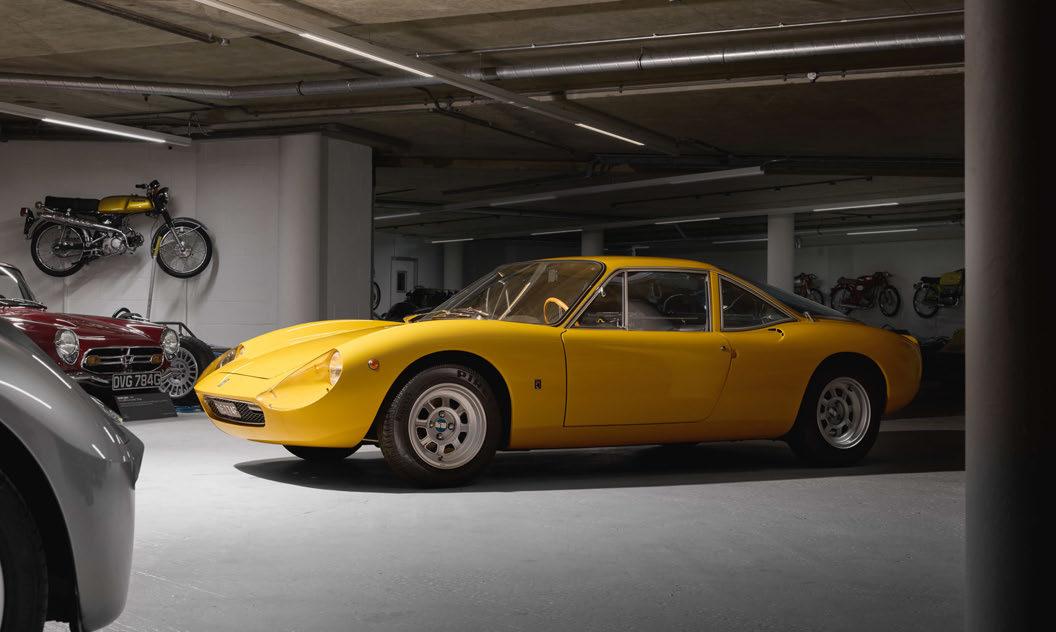
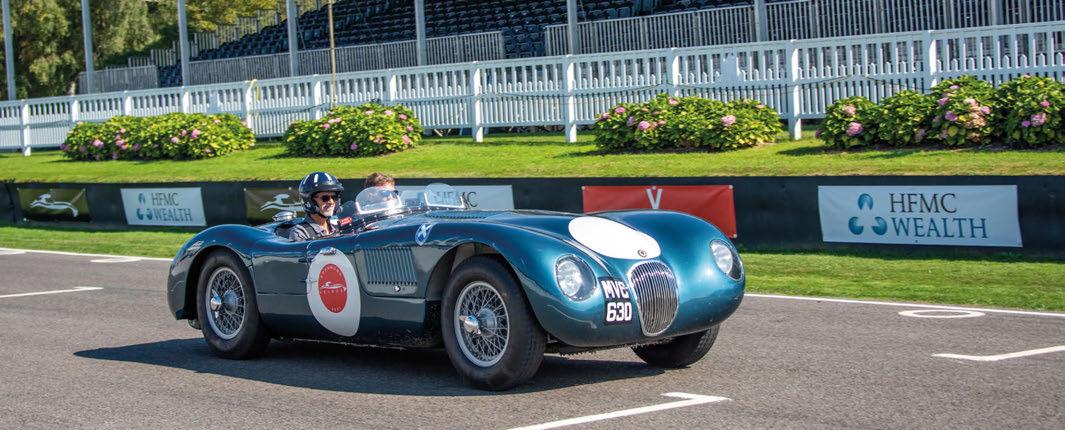
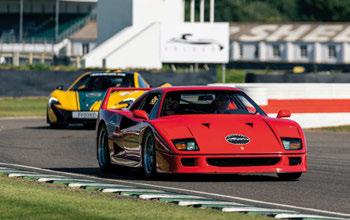
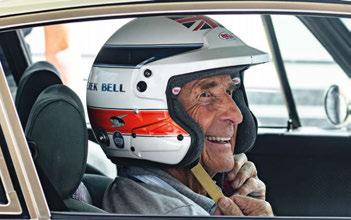
VELOCE 2025 – GOODWOOD
Wednesday 3rd September
Veloce brings together legendary racing drivers with some of the rarest and most valuable cars ever built, offering unforgettable passenger rides around Goodwood for a lucky few guests. Since it launched in 2017, Veloce has raised over £1m for good causes, and this is your chance to join us for ‘The Greatest Track Day on Earth’.
Our star drivers over the years have included Gerhard Berger, Ross Brawn, Andy Wallace, Richard Attwood, Rowan Atkinson, and of course the event’s main hosts Derek Bell and Damon Hill. The £100m+ line-up of cars this year will include icons from every era. If you would like to join us for this unforgettable day, the price is £3,000 per person, with 100% of that going direct to one of the charities we support.
For further details and to reserve your place, please get in touch with Purdy Wilson. purdy@v-management.com 01635 867705
veloce-events.com
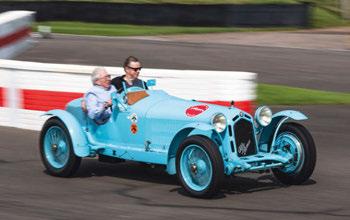
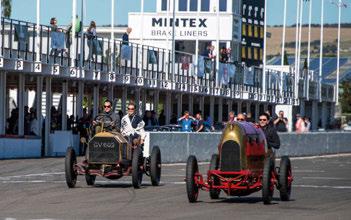
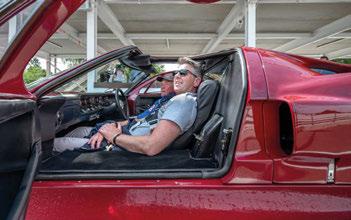
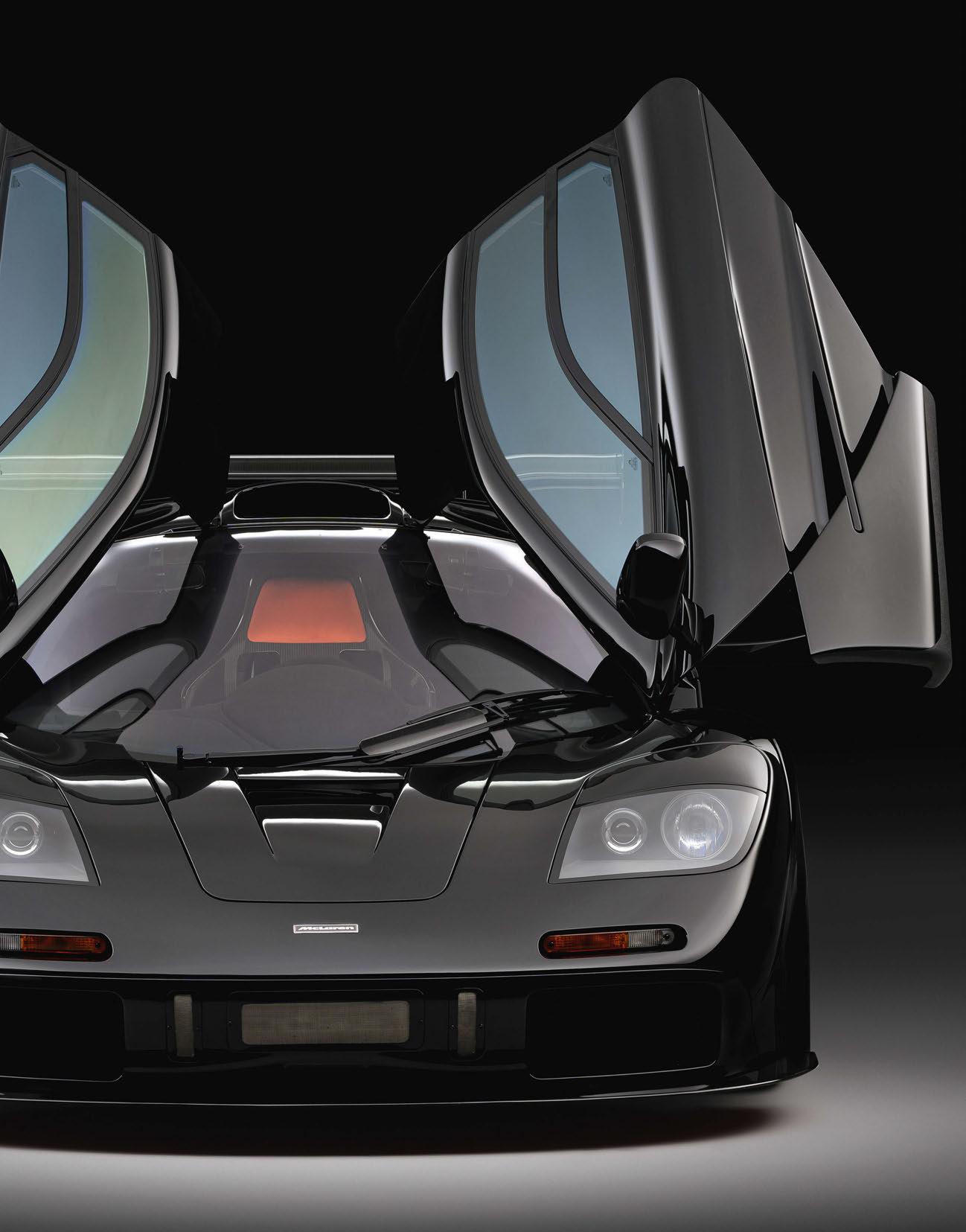
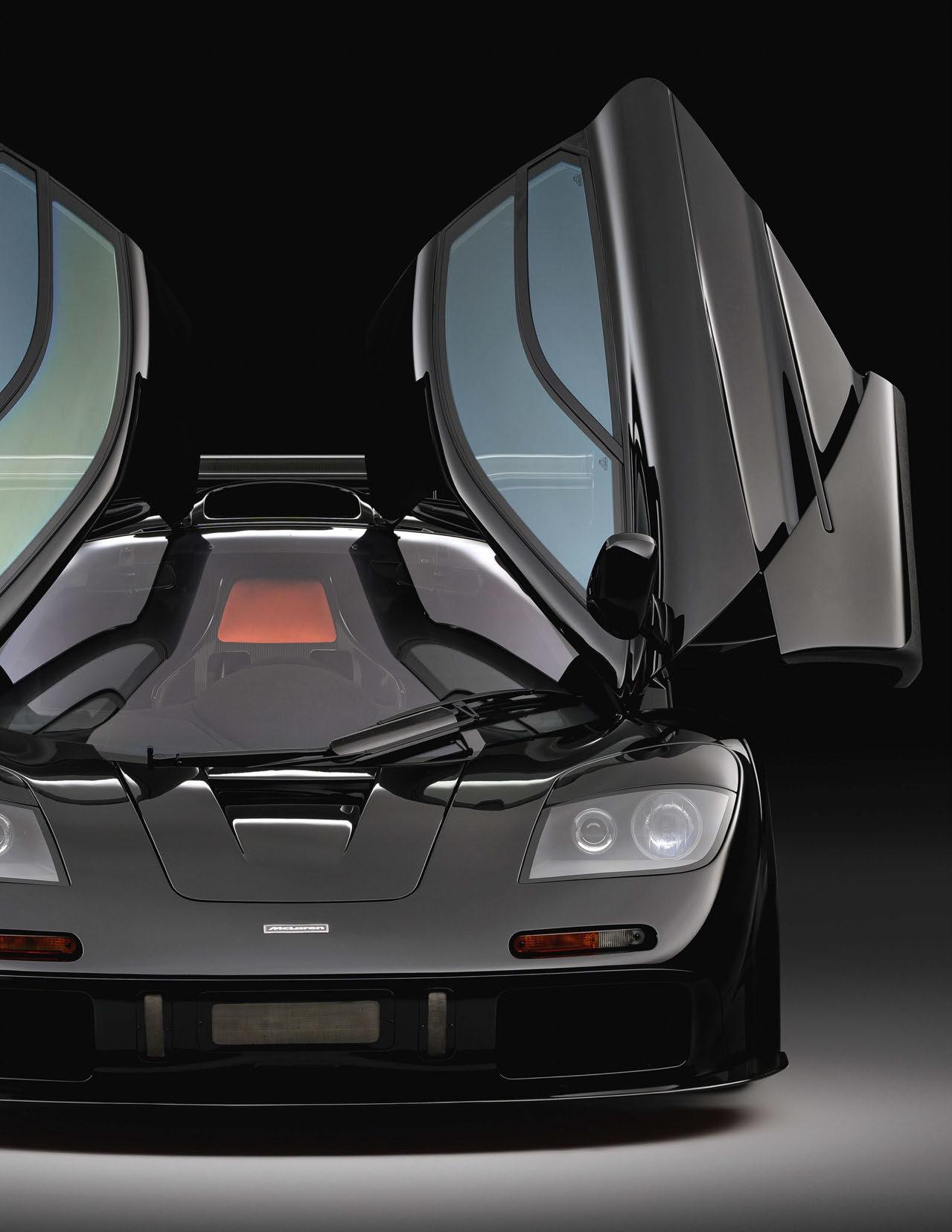
The pursuit of perfection
‘Uncompromising’ perhaps best describes Gordon Murray’s approach to engineering the epochal McLaren F1. Here’s why…
Words Glen Waddington Photography McLaren / Tim Scott
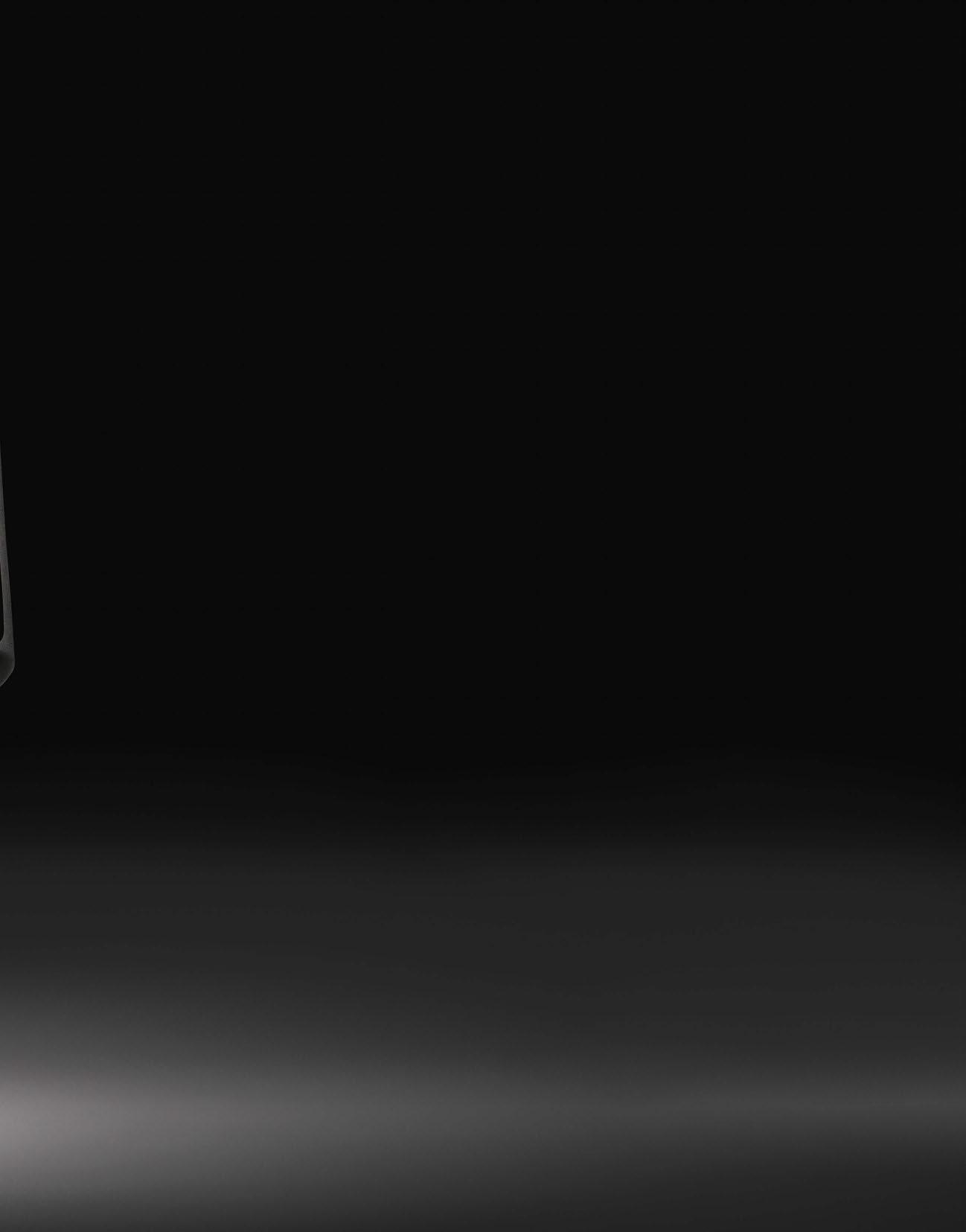
No matter what the onslaught of incredible stats, it’s the gearknob I remember most.
Sure, when the McLaren F1 was launched in 1994 it cost £540,000 (plus taxes) and there was talk of a 6.0-litre V12 that peaked explosively at more than 100bhp per litre, a power output that made possible a Nardo-proven top speed of 231mph (and maybe more), and acceleration along the way of 0-62mph in a shattering 3.2sec (this was 31 years ago, don’t forget). The latter figure was achieved in first gear, so no need to throw the lever and waste precious time or motion in that benchmark sprint. And the lever itself acted for me as a metaphor for the obsessively particulate degree of thought that pervaded every last detail of the F1.
The obsessively particulate thoughts of one Gordon Murray. You see, merely transferring race tech to the road was not going to be enough when it came to the creation of ‘the world’s best car – built for the most discerning and limited market to transcend existing standards and vehicle design by a large factor and by virtue of design and marketing to become the most wanted vehicle in the automobile world’. Those are Murray’s words, in the introduction to his ‘Project 1’ product manifesto, a treatise conceptualising what would become the F1, which he presented to his co-directors at McLaren in 1989. And despite all the uncompromising effort that went into designing and building a groundbreaking composite structure, and the development of what many reckon to be the world’s greatest ever production-car engine, it is reckoned that the endeavour to achieve flawless execution of the original gearchange geometries and inertia weights was greater than for any other single aspect of the car. All topped off by the perfect gearknob.
Murray had specified a very particular African blackwood for this purpose, honed to the gramme for the perfect feel when shifting through the bespoke six-speed gearbox. Only
then he discovered that it came from a non-sustainable source. At the point where his engineering ideals came up against his moral standards, he sought instead to replicate it in resin, thereby creating a perfect match for weighting.
That was merely the finishing touch, however, as coming up with a transmission in the first place meant overcoming multiple obstacles, given the need to accommodate a longitudinal V12 (no matter how compact the proportions Murray had enforced on BMW, its producer) and to keep the axle as close to the rearmost face of the engine as possible: it had to sit within the wheelbase, and in no way could that wheelbase be extended to accommodate more than absolutely necessary!
Murray sought the services of American consultant Pete Weismann, with whom he had worked since developing the transmission for a Brabham Indy car in 1971. There wasn’t an off-the-shelf gearbox available that combined the strength to manage the BMW V12’s power and torque with the refinement Murray demanded; nor would any fit in the space available. The result was a transverse six-speed gearbox with the final drive offset to one side so the crownwheel could overlap the clutch, production of which was ultimately undertaken by FF Developments.
Murray had benchmarked the Honda NSX for shift quality and stipulated a shift time of 0.7sec. Then the entire system was bob-weighted and honed for feel until there was universal agreement that the F1’s gearshift would be –no other word for it – perfect. Right down to that gearknob.
Although the idea for the F1 grew from a meeting of McLaren minds at Milan’s Linate airport while waiting for a delayed flight the day after the 1988 Italian Grand Prix, many of the principles Murray employed in its development dated back to his Theory of Machines. He wrote that in 1969, while in his final year of studies, and within it put forward the idea for a mid-engined road car with an ‘arrowhead’ three-seat layout that put the driver in the centre.
Gordon

Murray had joined McLaren in 1987 as technical director, and in that airport lounge he, TAG-McLaren Group bosses Ron Dennis and Ojjeh Mansour plus marketing director Creighton Brown discussed options: what to do to expand a hugely successful racing car company. R&D consultancy? A move into aerospace? Or why not simply create the best car in the world? Hence that manifesto, in which the basic principles were laid out: three seats, timeless styling, Formula 1-inspired aero, a composite monocoque structure as light as feasible without threat to safety, a naturally aspirated engine capable of 200mph performance, six-speed manual transmission, 1g cornering ability, no-compromise material and construction quality. Goals rather than aims; hitting the post was not an option.
Clearly the construction, aero and materials would not be new ground for McLaren; it had plenty of skin in the racing game, after all. But it didn’t have its own engine. Honda had been McLaren’s Formula 1 partner but was wary of committing to a high-capacity road-car engine; Isuzu offered to develop a V12 from scratch, but McLaren wanted a partner with experience and Ferrari was obviously out of the question. Cue fortune.
Murray had worked with BMW during his time with Brabham, and Ron Dennis was keen to collaborate with the Bavarian firm. Then Murray bumped into Paul Rosche, technical manager at BMW Motorsport, at the 1990 German Grand Prix. He cut his famously rock-star hair in preparation for a formal meeting in Munich, and what began as a prospective adaptation of the company’s racing V12 escalated into a bespoke project for just 107 cars.
Rosche left with a list of requirements: a V12 of the biggest displacement in the smallest overall package, rigid enough to be load-bearing, no more than 600mm in length or 250kg in weight, never to use a 10mm bolt where 9mm would do. Target power was 550bhp; Rosche found 627bhp. With full emissions equipment, it weighed 266kg: a 6.4% penalty in return for 14% more power. And
with a bolted-on aluminium alloy subframe, the engine becomes a structural member. Even the exhaust silencer is suspended on cables so it can help absorb impacts.
Peak power occurs at 7500rpm, and at least 479lb ft of torque is spread from 4000rpm to 7000rpm. The ultimate irony is that, for Le Mans, the F1 GTR’s engine had to be detuned to 592bhp (600PS) by restricting the air intakes. Well, it was either that or run ballast...
As may already be clear, unnecessary weight isn’t really a Murray thing, and that’s an aspect that goes beyond the F1’s structure and its mechanical packaging. Take the thinking behind the F1’s steering column. Sure, it needs sufficient strength to ensure effort at the steering wheel is transferred without slack to the mechanism that turns the front wheels, and undiluted feedback in return. But in most road cars, steering columns are designed to accommodate the load applied by the driver getting in and out while using the wheel as an aid. In the case of the F1, its unconventional (though logical) driving position, and the ultra-strong yet lightweight chassis spars visible on each side of the driving seat, meant the column itself could be a lightweight aluminium extrusion.
The composite bodywork might have been criticised by some as being ‘moulded plastic’ but the F1 exploited multiple racing car materials (Dyneema fibre, unidirectional carbonfibre, a Dyneema/carbonfibre hybrid, carbonfibre plain weave, Nomex honeycomb and Kevlar among them), all of which required greater preparation and finishing by hand than any steel or aluminium coachwork, and specified simply because McLaren had pioneered the technology in racing.
The influence spread elsewhere to fixture suppliers. Murray wanted a heated windscreen, so a ‘people only’ air-con system could be made as lightweight as possible, but embedded wiring was ruled out by legal requirements thanks to the steeply raked ’screen. Instead, glazing manufacturer St Gobain accelerated its development of a plasma-sprayed heating element while TAG developed
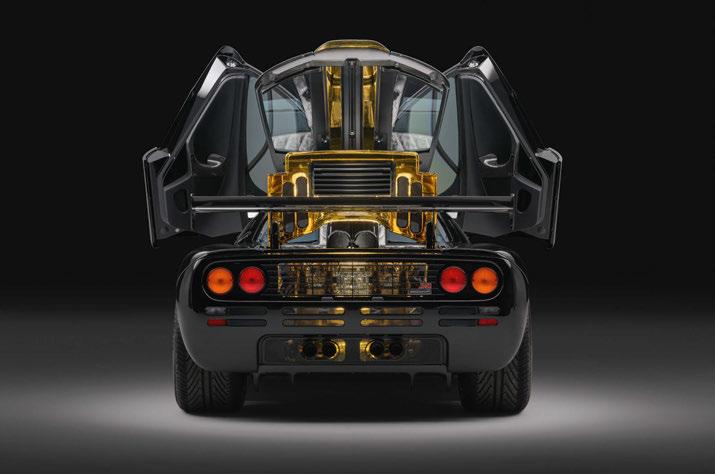
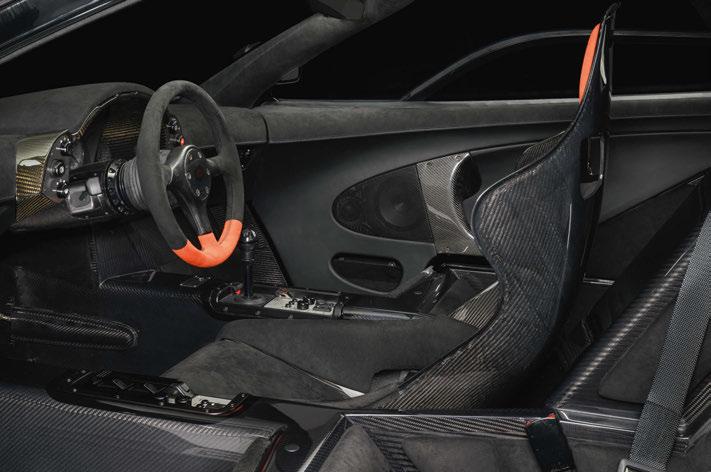
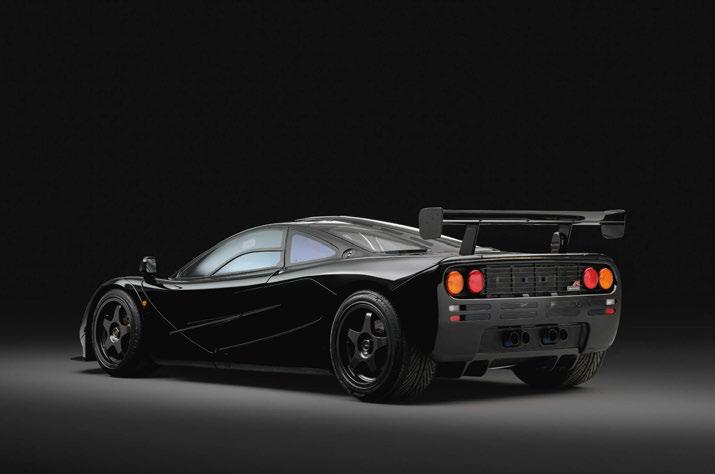

SECOND TO NONE
John Mayhead on why the F1 is the world’s most collectable car
The Ford GT40 isn’t the world’s most collectable road car, nor is the Ferrari F50. The Ferrari 250 GTO, once the must-have of the planet’s ultra collectors, comes third. The top two places, according to Hagerty’s Collectability Algorithm, belong to the McLaren F1 (in second) and the ultra-rare F1 LM derivative in first.
Analysing whether a car is collectable is part art, part science, but the F1 dominates both. It has the right designers, the best performance of its era, an astonishingly successful racing record and the right badge on the nose – but it’s also fundamentally cool. Consider the names of owners over the years and it’s a Who’s Who of the very top motoring collectors: Ralph Lauren, Jon Hunt, Nick Mason, The Sultan of Brunei; when Tom Hartley Jnr advertised Mansour Ojjeh’s collection for sale in June 2025, it was the Château d’Yquem-inspired ‘Mansour Orange’ F1 chassis number 075 that took pride of place in the group photo.
Today, the UK Hagerty Price Guide values range from £14.3m to £19.9m for the ‘base’ F1, although the usual condition ratings don’t really apply: what makes the difference in value is who has owned it and where it has been seen. And, in a difficult market where most cars have slipped in price over the past 18 months, the F1 has remained strong, the top value even increasing, totally against trend in the last quarter. Values of the five F1 LM variants are down nearly 10% from their 2023 high, but still huge, ranging from £21.8m to £32.3m.
In my opinion, the McLaren F1 still has plenty of space to grow in value terms, especially when you compare it against its predecessor at the top of the collecting tree: the Ferrari 250 GTO remains more than double the price of its younger British usurper. Plus, if you think the (social) media clamour around the F1 is already loud, I predict that it will become deafening over the next few years, especially if one of the ‘presumed destroyed’ cars emerges to smash sales records. Watch this space.
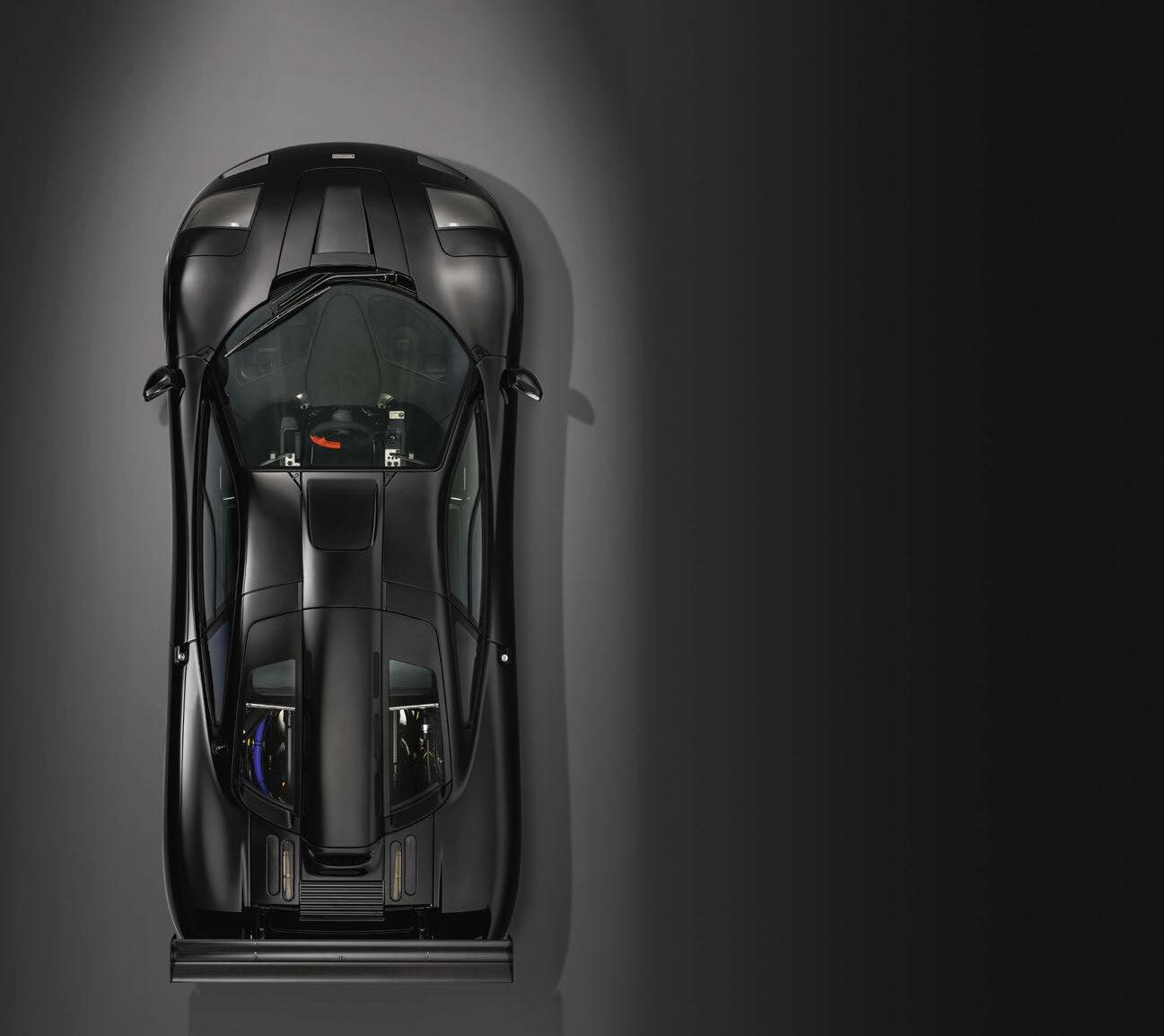
SPECIAL SERVICE
The F1 you see here has been restored by MSO Heritage – and may well be better than new
MSO began life as the customer care division for the F1, but its remit became much wider with the advent of further cars from the MP4-12C onwards. ‘Over the 15 years since, we have become renowned for continuing F1 expertise, plus servicing, restoration and bespoke operations for all McLarens, including the SLR, private commissions and customisation of current production cars,’ says Michael Wrigley, Heritage Manager for McLaren Automotive.
The car you see in the pictures was restored by MSO Heritage. It’s chassis 072, one of the last road
a tailor-made (and ultra-light) power convertor to suit. Elsewhere, Japanese audio maker Kenwood reacted to the demand for a CD system within an 8kg package maximum by specifically developing an aluminium speaker magnet and the world’s smallest ten-disc player; the central driving position negated the need for balance controls.
Driveshafts are hollow for lightness and quilled for strength, which was the most expensive method of production available. Engine bay heat shielding –notoriously – was made from gold, not for aesthetics but because it reflects radiated heat better than any other material. An ultra-strong, ultra-light CNC-machined ladder-type mounting between the rear top spring mounts was nicknamed ‘the fifth bridge’ by the McLaren team. Seat runners were fabricated in alloy, the accelerator pedal from six pieces of lightweight titanium, and its cable was protected in an exquisite carbon shroud. Even the Connolly hides that swathe the interior were delivered in a lightweight 0.7mm thickness.
‘Anything is possible if the sheer commitment and desire is present amongst those who aspire to achieve,’ declared Ron Dennis in Doug Nye’s officially sanctioned McLaren F1 book Driving Ambition
And thus was the result of Murray’s pursuit of perfection. But was perfection achieved? Many would say the F1 was unsurpassed for two decades and more as a drivers’ car. Murray himself, as you can read in Wayne Batty’s brilliant and insightful interview with the great man on pages 60-65, has cited dissatisfaction with the F1’s headlamps and aircon, simply because the tech of the day wasn’t up to the task. Fine, he went on to right those wrongs in the GMA T.50 –now a scarcely believable five years ago. And there has been another of those gearknob moments.
‘I’ve finally found a company that can build a switch with no spindle play,’ he told Octane in 2020 (see issue 208).
‘With the McLaren F1 we had lovely machined aluminium knobs and buttons but there was still that annoying thing that all modern cars have, spindle movement in the wrong direction – you put your finger on it and sense it move before you want it to. That’s something I’ve always hated, and the T.50 doesn’t do it.’
That is how you do perfect.
cars, delivered in May 1998, finished in Jet Black with black Alcantara and orange highlights, but returned to the factory in the October for the full High Downforce Kit. ‘It’s one of only six with that,’ says Michael, ‘the distinction being that it’s not an LM, which is derived from the GTR.’ The kit includes a wider front shell, enhanced radiator ducting, 18in wheels, wheelarch extensions, uprated springs and dampers plus, most obviously, that rear wing.
In subsequent ownership the F1 underwent a colour change to white and was later involved in an accident. It then came back to MSO Heritage, and a decision was made not only to repair the car but also to restore it to that later 1998 spec and the Jet Black colour. ‘We have more than 20,000 original
drawings and can have any part remade,’ says Michael. ‘The result is as it would have left the factory when it returned for the HDK package –possibly better, given our years of experience.
‘Substantial repairs included replacing panels; we’re well-used to dealing with carbonfibre and everything has to meet original standards of torsional stiffness. Given their value and our expertise, you cannot write off an F1.’
The work took 18 months and the car was shown at Goodwood Festival of Speed last year. ‘MSO is the custodian of the F1,’ says Michael. ‘People still want to personalise, but originality is becoming ever more important. We have 14 F1s booked in this year. That’s quite a high percentage of the 100 remaining cars.’


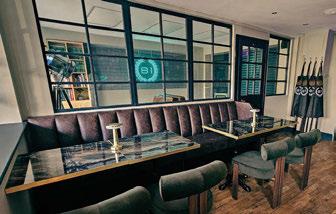


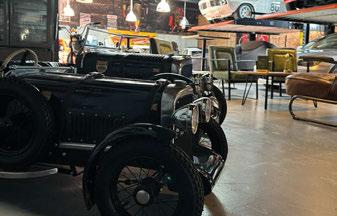

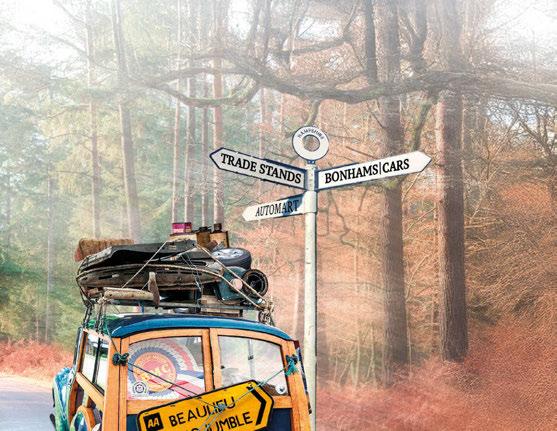

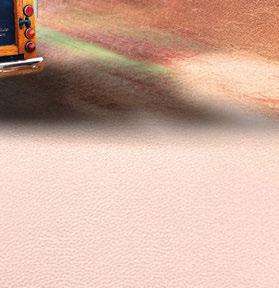
Beyond Perfec ti on
Murray returned to improve on the McLaren F1 with his own GMA T.50 – and a little insight from three-time Indy 500 winner Dario Franchitti
Words James Page Photography Robert Kerian / GMA
THE ANGELES CREST Highway winds through forests and mountains north of Los Angeles, bordered by rockfaces and climbing to almost 8000ft. Not surprisingly, it’s a favourite of local car enthusiasts, and it’s here that everything came together for Dario Franchitti and the GMA T.50.
The three-time winner of the Indianapolis 500 had spent a week in California, giving ‘taxi rides’ to American media, and on the Friday set out along the same road, en route to the Good Vibes Breakfast Club. After a careful cruise there in deference to the senior GMA director alongside him (a nervous passenger), he diplomatically arranged to drive back alone. It would be just him and the Gordon Murraydesigned supercar he’d helped to develop.
‘It was one of the greatest drives I’ve had,’ Franchitti recalls. ‘Those hairpins, the long, flowing corners, going through dips and crests and just driving for the pure pleasure of it. The feedback the car gave me, the way it made me feel, was exactly what I hoped it would be. I went back to the development team, the engineering team, the styling team, all the people involved, and said, “Yeah, we’ve nailed it.”’
It was the culmination of a journey that could trace its roots to when Franchitti first met Murray while doing some filming work for Goodwood and interviewed him about the McLaren F1. The two of them immediately got on and, when the legendary designer’s original plans for the T.50 launch were scuppered by Covid, he thought instead of doing something with Franchitti. The Scotsman quickly agreed, but then suggested going further.
‘I said, “I’d love to do it, Gordon, but what I’d really love to do is become involved in the project, in the company. I can’t think of anything better than to work on a nocompromise supercar with you.” That’s how it started.’
Franchitti’s credentials as a racing driver were obviously not in doubt, those three Indy 500 wins headlining a CV
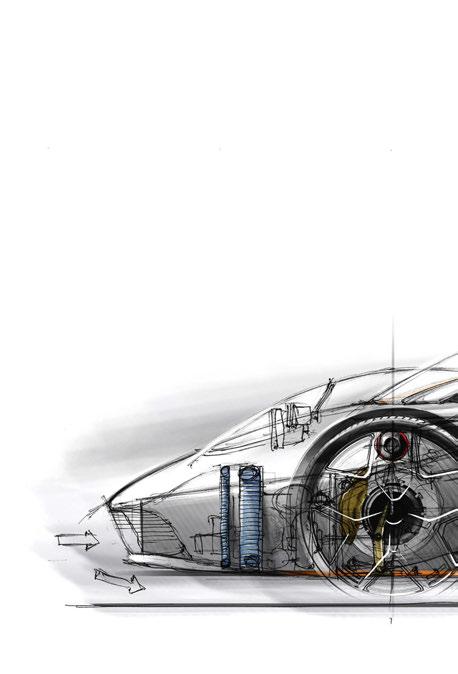
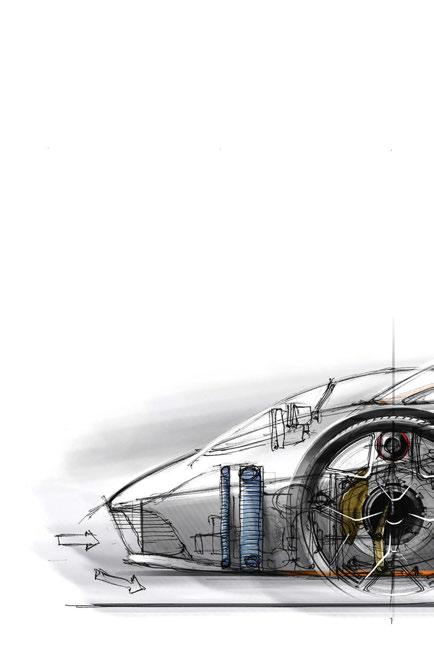

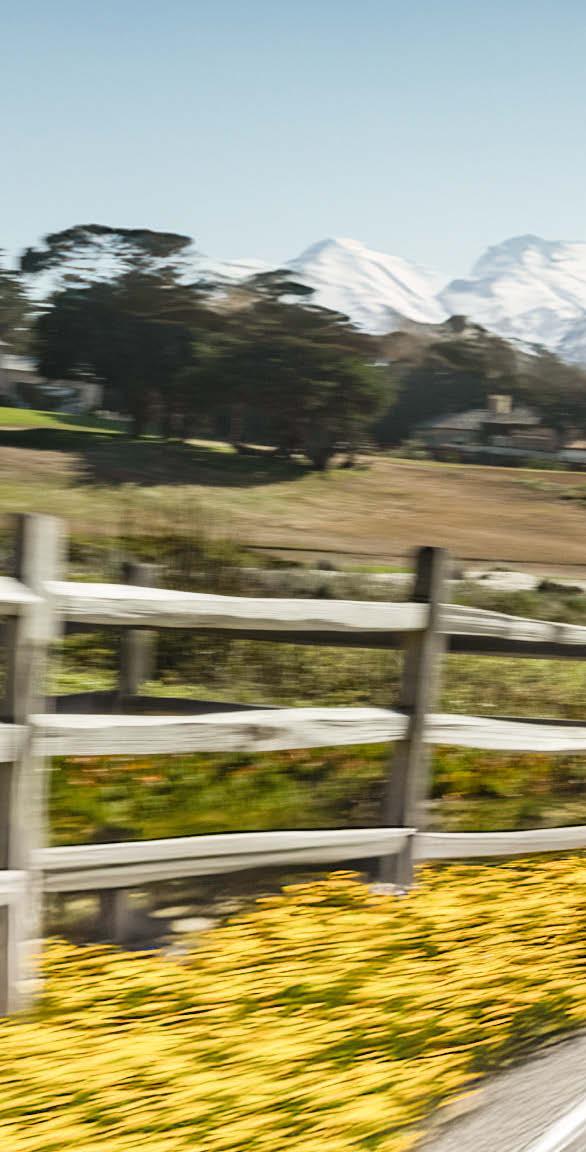
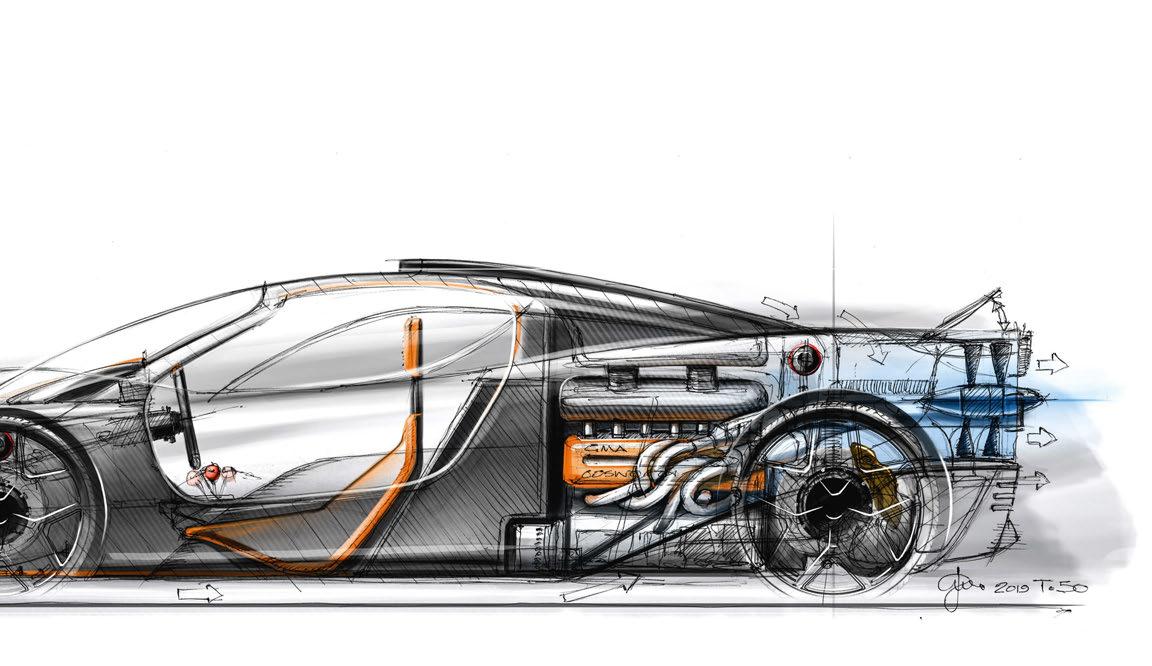
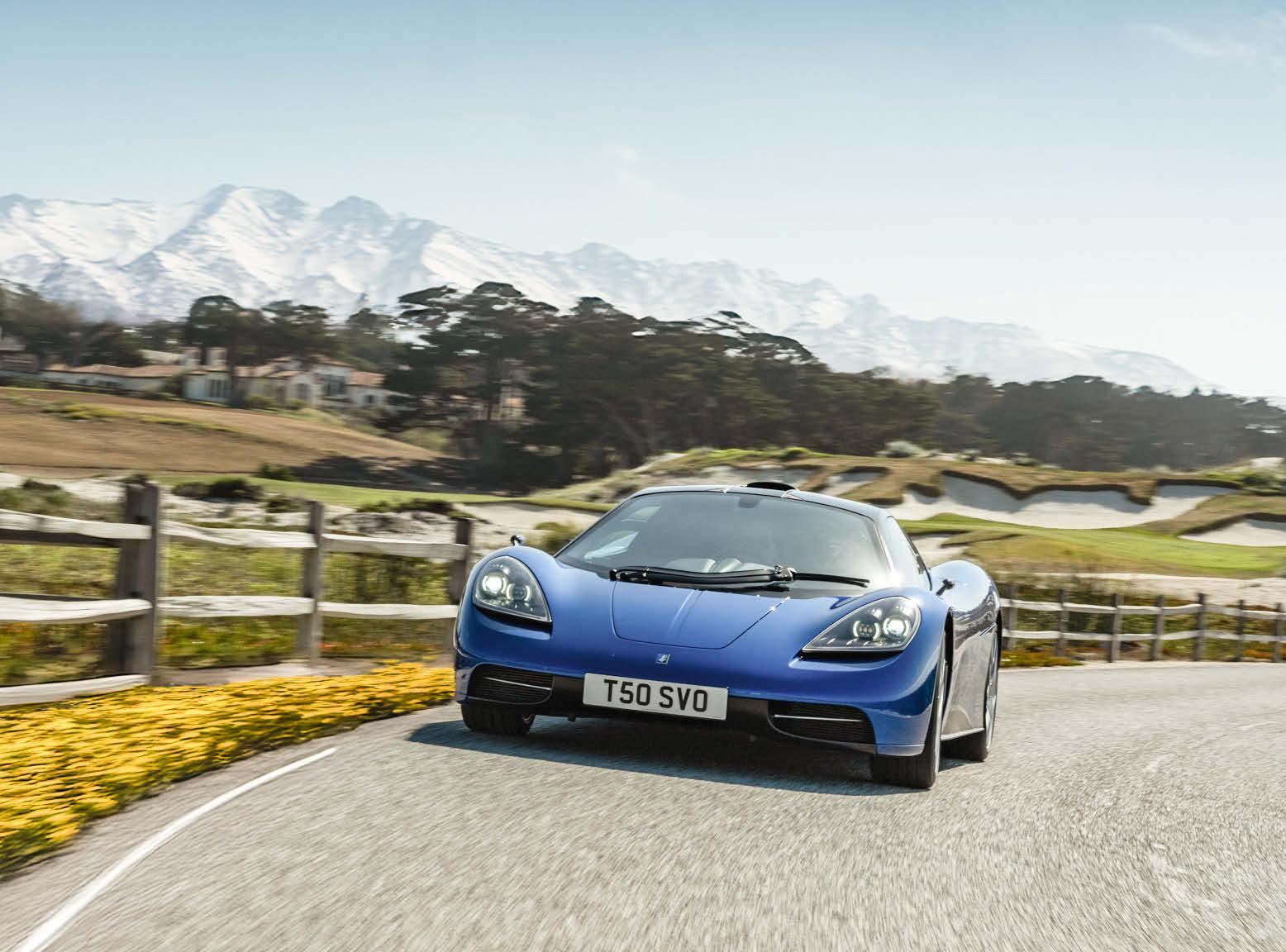
that also includes four IndyCar Series titles and victory in the Daytona 24 Hours. With the T.50, however, he was entering different territory in terms of development driving.
‘When I was racing, it was purely about performance, a means to an end – and that end was winning the race. I developed a feel, shall we say, for a car from when I started racing at ten years old. I worked really hard at making a racing car as good as it could be, to make up for my lack of talent! It’s also important that the car does the work, especially on an oval track. You’ve got to really understand it and you get educated by working with great engineers.
‘But then it was also about, what works well with a road car? What makes a great driver’s car? What puts a smile on your face? And you start dissecting it. Every road car I’ve ever owned, or every rental car, you get in it and you critique it. That’s the first thing you do – everything about it. And in your head, you have your dream car, but what’s wrong with, say, the Ferrari F40? What would you do differently with all these different cars?’
Franchitti’s first GMA assignment came not in a T.50, but in an Ultima that was nicknamed ‘George’ thanks to Murray’s fondness for naming test mules after kings (the two Ultimas used during the McLaren F1 programme were called ‘Albert’ and ‘Edward’). Into ‘George’ had been fitted the T.50’s Cosworth V12 engine: 660bhp, naturally aspirated, revving to 12,100rpm accompanied by a wail that evokes Matra racers of old, it’s become one of the car’s defining features.
‘The first time I floored it, it was mind-blowing,’ says Franchitti. ‘I could not believe that a road-car engine could rev that high, could continue pulling to the redline, and had that much torque low down. We’d kept talking about that – it was 3.9 litres, would it have enough torque, all that stuff –and so that was the first shock. I’d driven high-revving racing cars, but you’re wearing earplugs and a helmet, and you’re so fixated on the job. This was a completely different thing.’
When time came to shift his focus to the T.50 ‘XP’ prototypes, he was struck by the advantages offered by the central driving position. Like his mentor Jackie Stewart, it matters to Franchitti, who says of his racing days that ‘any mechanic who’s worked with me will attest to the fact that I was absolutely militant about the driving position’.
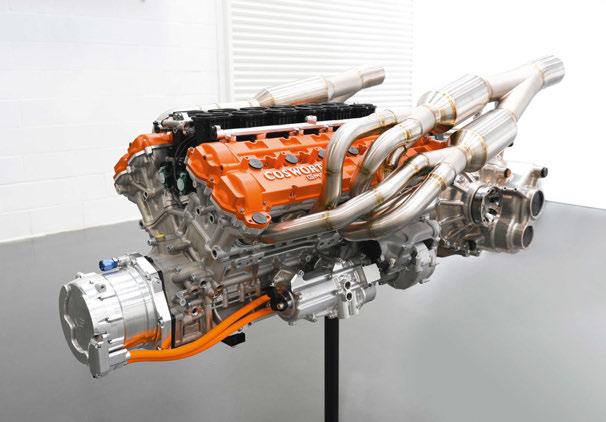
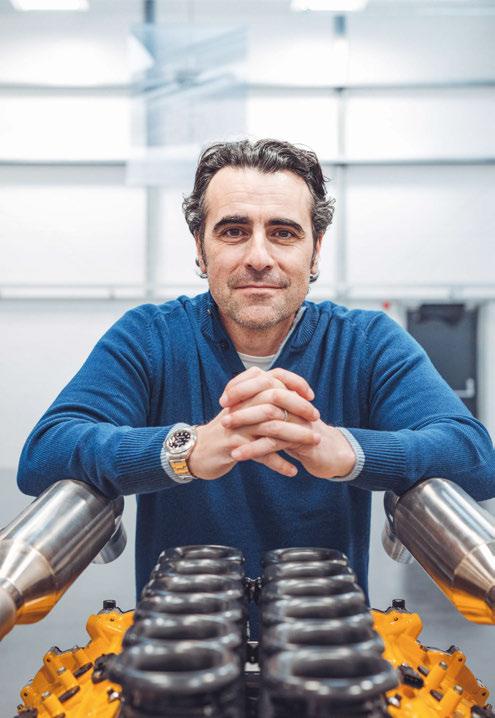
‘If you’ve been driving it quickly, you’ve got that little shake in your hand, that little adrenaline buzz’
‘I’ve spent my life sitting in the middle of cars and it’s just the lack of compromise,’ he adds of the T.50. ‘It’s the symmetry of it, the fact that the car feels the same left to right. And then you’ve got this lovely view, because the A-pillars are so much further back. I sat in some other modern supercars and hypercars with A-pillars that create a massive blind spot. I think that’s where the central driving position comes into its own.’
The basics of the T.50 were, says Franchitti, ‘very good immediately’. Then began the process of fine-tuning, of optimising every area.
‘Steve Hayes and Gareth Howell did the majority of the test driving, then I would get in it and give my opinion, and we might change direction a wee bit. Then Gordon would get in it and give his opinion, but we were all on the same page. There were different things we picked up on that we didn’t like, but we all had a very clear idea of what we wanted.
‘In the early days, the steering was a bit heavy. We changed the steering rack to fix that. We continued to refine the gearshift, the damping… we just made that better and better.
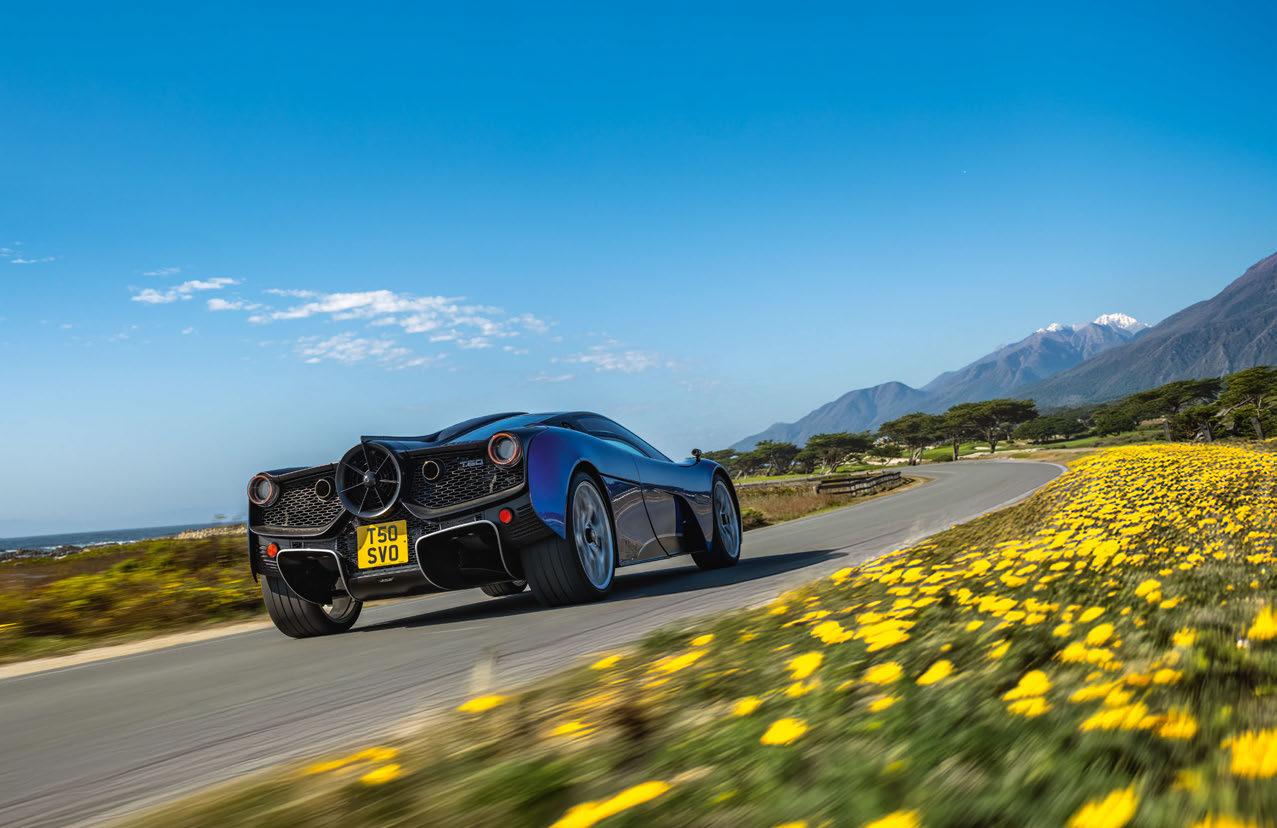
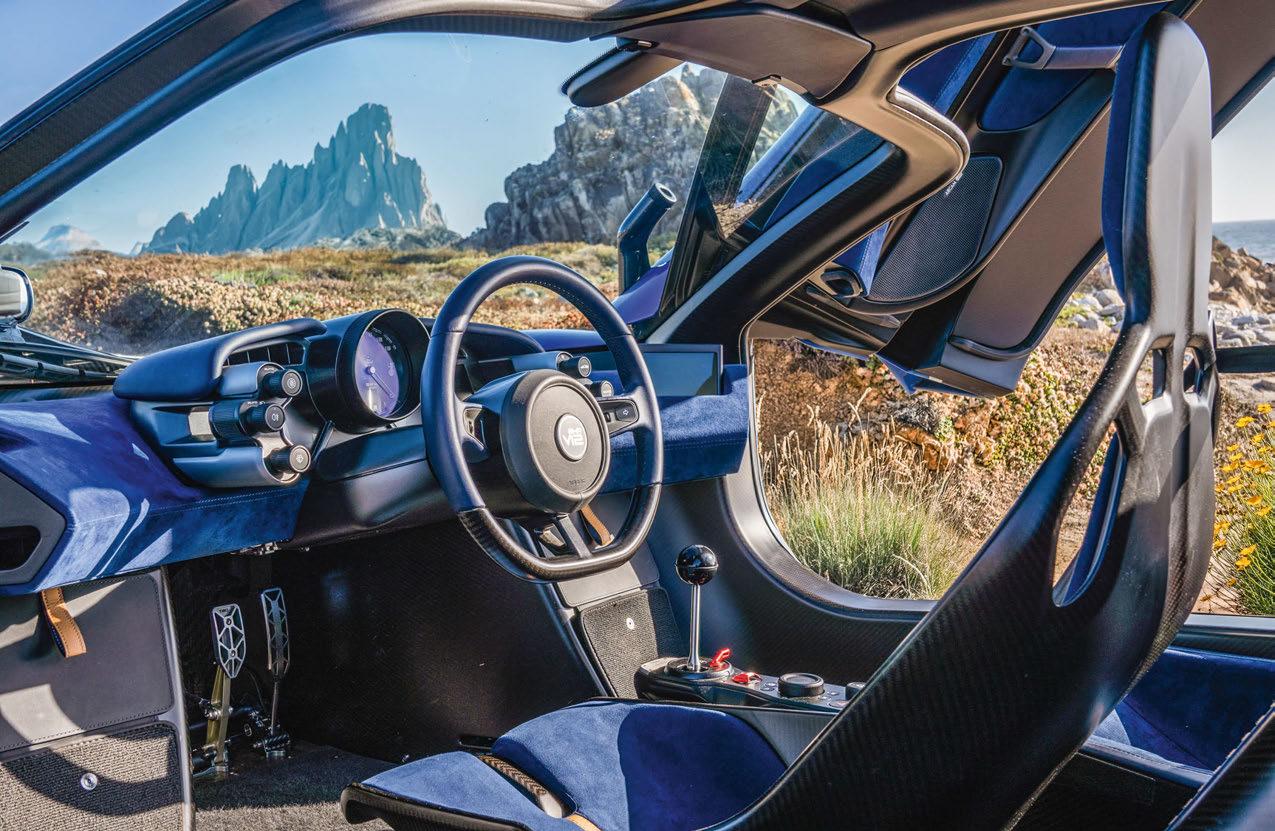
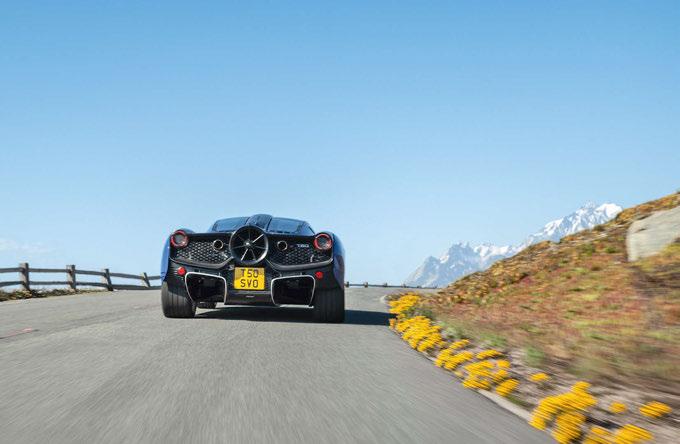
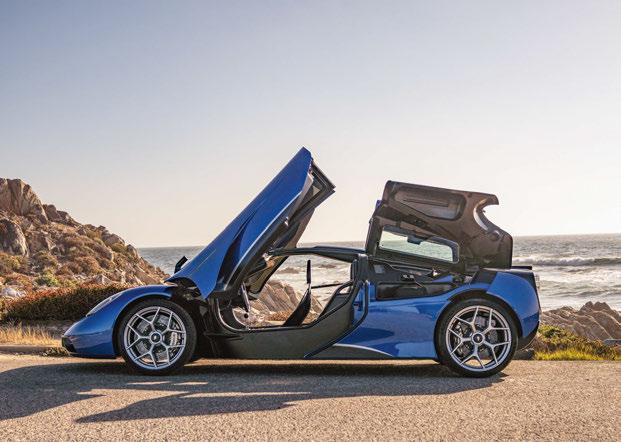
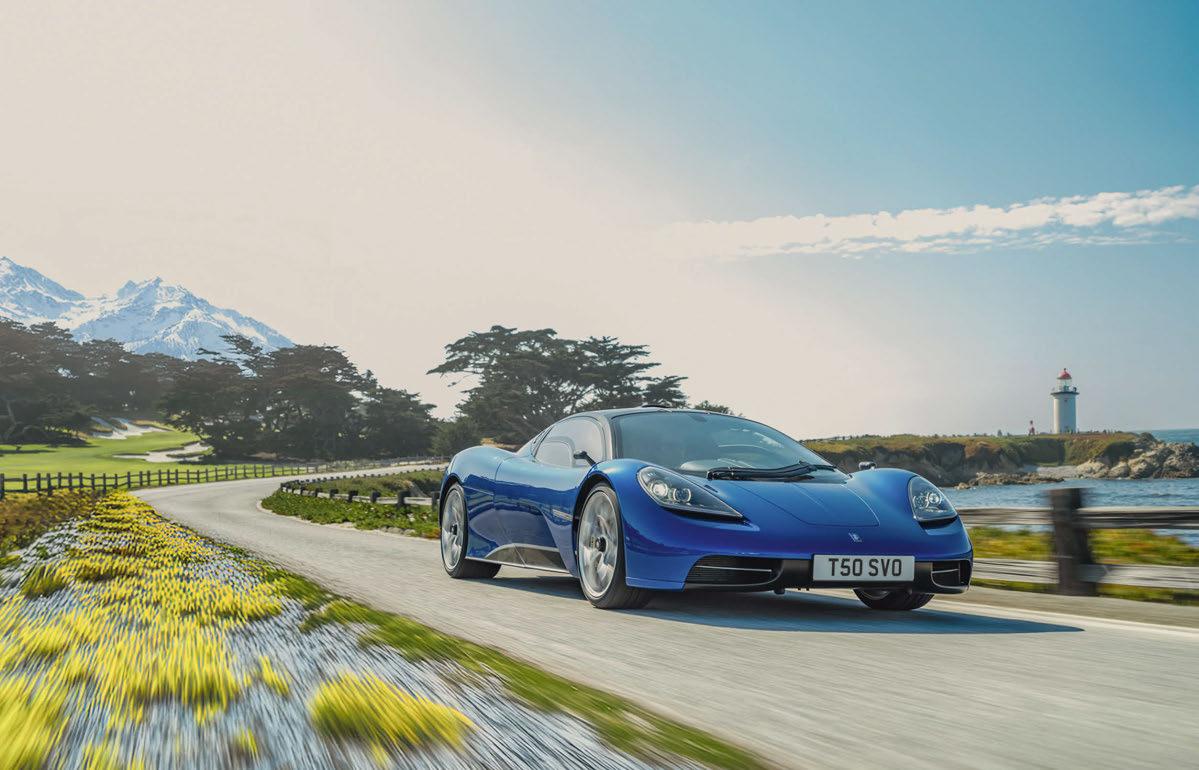


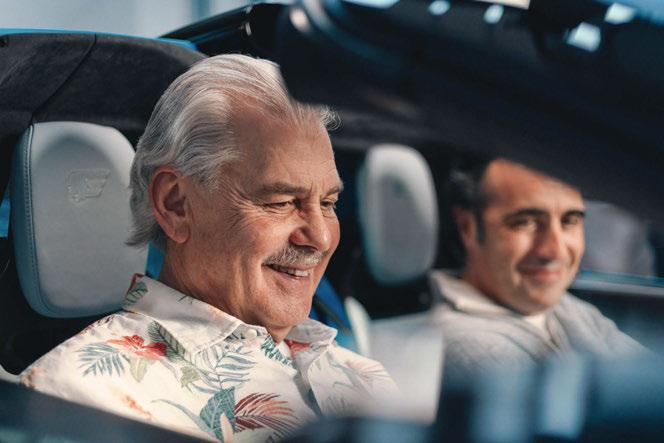
This page and opposite Murray shares T.50 space with Franchitti; 100 have been built and they were all sold straightaway – despite a price tag of
We got to the point where the car was a bit too stiff, so we backed that off again to where we were happy.’
Most of the testing was done at Millbrook, but a lot of the work on the car’s secondary ride was carried out on what Franchitti describes as the ‘really crappy roads’ around GMA’s Surrey base, potholes and all. Always in their minds, he says, was creating something that would work on ‘those wonderful roads in Wales and especially Scotland, flowing B-roads with a crown and lumps and bumps, and a bit of camber on the corners’.
‘It was important that you could drive along that type of road and not be smashing the bottom of the car,’ he continues. ‘And when it was going a bit light, the tyre would stay in contact with the road. It’s quite a softly sprung car because it was, again, designed for those types of roads. It’s not designed for a billiard-table-smooth racetrack.’
The team did do some on-track testing, but only so they could ‘wring its neck properly and get to the limit of the car’, and in no way was the T.50 tuned to make it at home there. ‘When we did a customer event in Spain on a circuit, we were bit concerned it wasn’t going to feel great, but we were astounded at how good it felt. The interesting thing with most road cars is that they understeer on a circuit. This thing rotates around your hips, but it’s not twitchy.’
Key to the car’s nature is its lack of weight, something about which Murray has long been fanatical. The production T.50 weighs only 997kg, the benefits of which can be felt in numerous areas.
‘I’ve got a wee trick when I put potential customers in T.50,’ says Franchitti. ‘I’ll pull out of GMA at Shalford in third gear, then I’ll stick it in fifth gear at 20mph and just go along at tickover. Then I floor it and it takes off; given the chance, that gear would pull all the way to 186mph. The engine is a big part of it, but [mainly] it’s the lack of mass. Gordon keeps talking about the “virtuous circle” of light weight. I’ve been involved now for five years and, the more you dig into it… he’s absolutely right.’
The car’s aerodynamic package is, of course, most obviously defined by the fan at the rear. It inevitably recalls Murray’s Brabham ‘fan car’, and from some quarters there was a degree of cynicism about its use. ‘There were people saying, “Oh, the fan’s a gimmick,”’ recalls Franchitti, ‘but when we were doing early fan development it switched off mid-corner and, trust me, it’s not a gimmick!’
In reality, it helps the airflow beneath the car stay attached to a steep rear diffuser and speeds up the flow along the venturi in the centre of the car, increasing downforce. And, unlike in a car relying on wings and spoilers, you don’t need to be driving quickly in order to generate that downforce. As Franchitti puts it: ‘It was important that the car was fun at 20, 50 and 75% of its abilities. There’s no point having a road car that only gets you excited at warp factor one million.’
To that end, the development team had no interest in chasing Top Trumps-winning horsepower figures, acceleration times or top speeds. Instead, they wanted the T.50 to have an old-school, analogue nature that encouraged the driver to be fully engaged at all times.
‘Even if you’re just driving normally, it’s not a car that does things for you. If you mess up your gearshift, it’s going to tell you. It’s got rev-matching on downshifts, but you continue to learn about it every time you drive it. That’s one of the things I still love about it. As many miles as I’ve done, I don’t get bored and it constantly challenges me.
‘The McLaren F1, the F40 – it’s that type of car, that type of experience. They all handle differently, the engines are different, but that feeling when you get in them is one of connection, that driving connection. That’s what we were looking for. It’s a car that you get out of and, if you’ve been driving it quickly, you’ve got that little shake in your hand, that little adrenaline buzz.
‘But also, one of the options is a “touring” sixth gear so that, at 100mph, it’s doing 2500rpm. It’s quiet and it all calms down, and you can drive it to the south of France. That came about because the guys drove an early prototype from the UK to Nardò, and the feedback was that it was amazing, but at 100mph it was revving pretty high and was a bit intrusive.’
The development process was not without its difficulties for what is still a young company, but Franchitti revelled in it and remained involved with GMA as it turned its attention to the new T.33 sports car. He admits that his regular meetings with Murray often go on longer than intended for the simple reason that they’re ‘ultimately two complete petrolheads’ who go off on regular tangents.
‘Gordon is the “engine” of the company, but there are 400 people [there] and every one of them has had something to do with the success of T.50. It’s a cohesive group who love what we get to do. They worked bloody hard to make T.50, and now they’re working hard on T.33.’
Perhaps the best endorsement for their efforts is that Franchitti himself now owns a T.50, a prototype that was kept back for him after the main production run sold out in 48 hours. Buying it involved having to part with his ex-Jim Clark Lotus Cortina, a considerable sacrifice given the esteem in which he holds the Scottish legend, but one he describes as being ‘absolutely worth it’. There can be no higher praise for the T.50 than that.
THANKS TO Jon Visscher.
Only fans
Murray’s glorious Brabham
BT46B
‘fan car’ proved that, if being a little bit naughty was wrong, he didn’t want to be right
With little more than a week to go before the Brabham BT46B was due to make its debut in the 1978 Swedish Grand Prix, things were not looking good. Better known as the ‘fan car’, this was Gordon Murray’s reply to the Lotus 78 and 79, which had ushered in Formula 1’s ground-effect aerodynamic revolution. Along with his colleague David North, Murray had worked tirelessly to solve problems such as getting the all-important skirts to properly seal the underbody area. They’d also changed the material used for the fan blades, but then came a last-minute failure of the fan hub.
As they considered this latest hurdle, Brabham’s star driver Niki Lauda said to Murray: ‘If this car finishes the Grand Prix, you are a genius.’ But not only did it finish, it won – amidst howls of protest from other teams. The following day, Murray’s phone rang and he picked it up to hear an unmistakable Austrian accent: ‘Hello, genius!’
Ahead of that 1978 season, Murray had conceived his original BT46 with innovative surface cooling in an attempt to pick up straightline speed. Sadly, the concept didn’t work, so instead he placed a radiator in the nose of the car and went back to the drawing board.
In order to restore the front end to how he’d initially envisaged it, there was another option: move the radiator so that it sat on top of the Brabham’s Alfa Romeo flat-12 engine. It was a convenient and efficient location for it, but it would have to be positioned horizontally, which meant that a fan would be required to draw air through it. And if you’re going to have a fan on the car, why not investigate other uses for it?
While teams that were using narrow V8s and V12s could
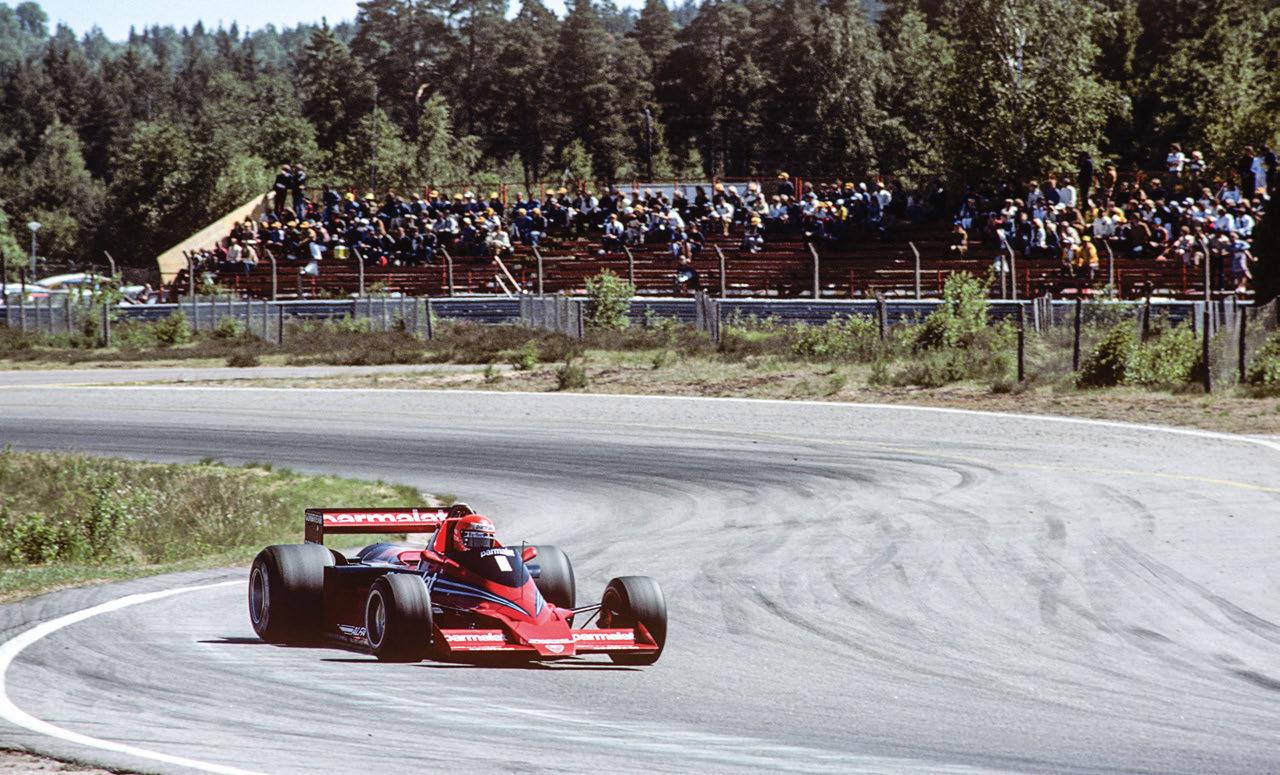
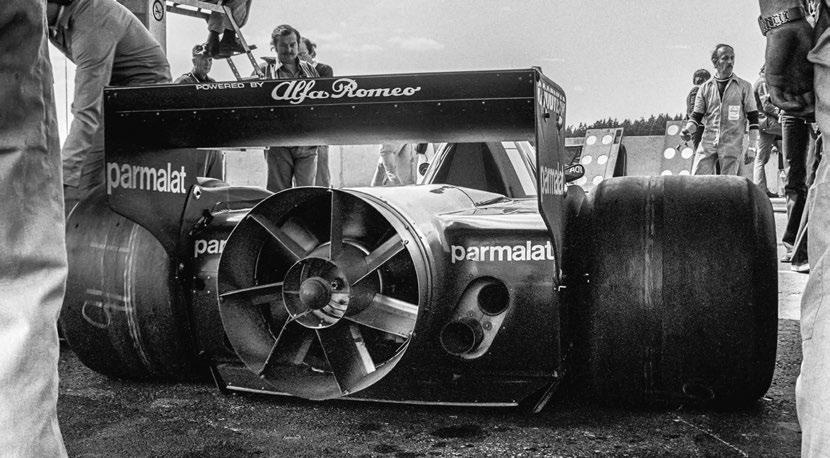
relatively easily create a ground-effect car because there was room either side of the engine for the necessary venturis, that option was not available to Brabham. The Alfa flat-12 was simply too wide. The fan offered a potential solution, so Murray studied the rulebook, which said any aerodynamic device had to be ‘firmly fixed when the car is in motion’. The definition of such a device was ‘part of the car whose primary function is to influence aerodynamic performance’.
The key word was ‘primary’. As long as Brabham could show that more than 50% of the airflow created by the fan was being used for cooling and not to create downforce, the rest could legally be used to ‘suck’ the car to the road.
The sport’s governing body, the CSI, had given the concept the green light, but Lotus’s Colin Chapman could see his car’s performance advantage instantly being wiped out and was one of five team bosses to protest the new Brabham when it arrived in Sweden. On the Saturday morning, Lotus issued a statement that it objected because the fan ‘constitutes a moving aerodynamic device in contravention of the regulations’ and that ‘production of download becomes its primary function’.
The scrutineers thought otherwise and ruled that its primary function was cooling. Their own statement ended thus: ‘We recommend the stewards of the meeting… reject the protests.’
While the arguments raged, Brabham’s John Watson and Niki Lauda qualified second and third respectively, sandwiched by the two Lotus drivers – Mario Andretti on pole and Ronnie Peterson in fourth. At the start of the race, Watson bogged down and would eventually spin into retirement while battling with Riccardo Patrese.
Lauda, however, tucked in behind leader Andretti and shadowed him through the early stages. When Andretti made a slight mistake at the end of the 39th lap, the Brabham was through in an instant. Even if he hadn’t retired shortly afterwards with engine failure, Andretti said that he had no
answer to Lauda on a surface that was becoming increasingly slippery with dropped oil. ‘Man,’ he reflected, ‘when it rains it’s going to be no contest with that thing around.’
But ‘that thing’ wouldn’t be around again. Murray himself has long said that the fan car wasn’t actually banned, and that he has a letter from the CSI stating that Brabham could run it until the end of 1978. He says that it was actually withdrawn at the insistence of Brabham boss Bernie Ecclestone, as an ‘olive branch’ concession to the Formula 1 Constructors’ Association; Ecclestone was playing the long game in terms of building his power base in the sport.
In the 29 June 1978 issue of Motoring News, however, it was reported that a four-man CSI committee had met shortly after the Swedish Grand Prix to discuss the fan car. They were split 50:50 on its future, but chairman Pierre Ugeux used his casting vote to break the deadlock. A statement from the governing body said: ‘In the face of problems posed by these new [aerodynamic] techniques concerning safety in general and the infrastructure of the present circuits in particular, the CSI bureau decided upon an immediate ban on fans.’
It was also reported that the CSI rejected a proposal from the FOCA teams that would have allowed Brabham to race the fan car in the French, British and German Grands Prix. They would have withdrawn their protests on the understanding that it would be banned after that, from 1 August onwards.
Whatever the truth of the matter, the fact remains that the BT46B raced only once at World Championship level. Next time out in France, the Brabhams were back in standard specification, the Lotus drivers finished first and second, and normal service had resumed. But not only did the fan car’s Swedish ‘smash and grab’ provide one of that season’s defining moments, it is still – almost 50 years later – one of the most famous designs in Murray’s extensive back catalogue.
All his own work
From city-cars to supercars via Grand Prix racers and a mini-truck, Gordon Murray has applied the same depth of thought to every vehicle he’s designed
Words Richard Heseltine Photography GMA
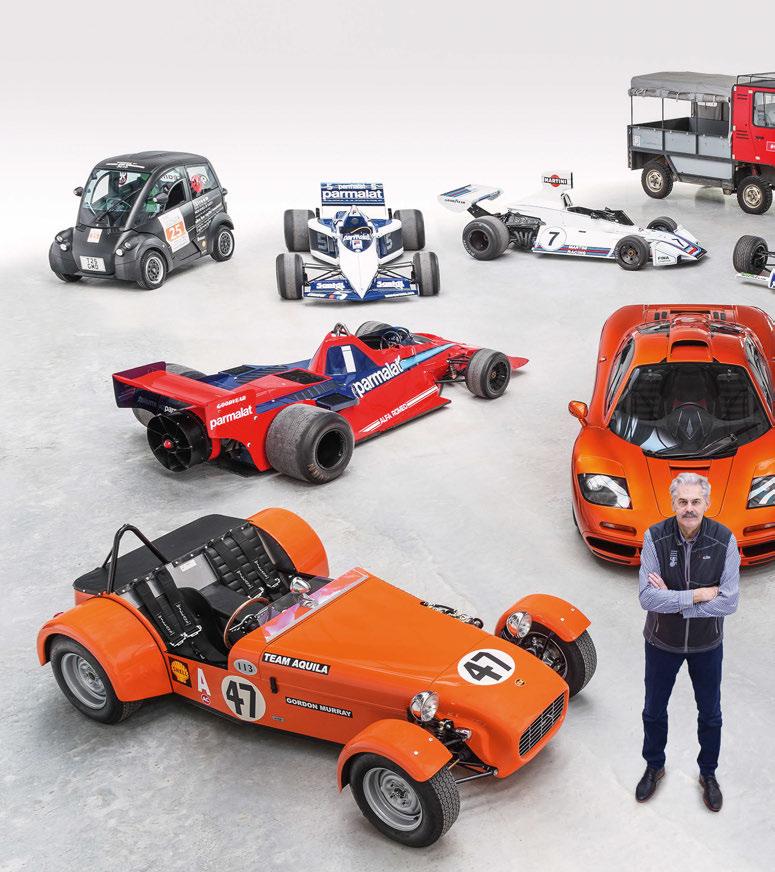
IGM

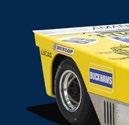



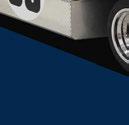
Main image and opposite


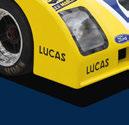
Murray surrounded by his o spring, including the IGM-Ford (front le ), T.25 city-car (rear le ) and flat-pack OX (at rear); his time as lead designer at Brabham was especially fruitful.



Murray originally aspired to becoming a racing driver, and campaigned his self-built IGM (Ian Gordon Murray) in the National Sports Car Championship in 1967-68. The original car no longer exists, but a faithful replica (pictured above, front le ) was constructed by the prototyping team at Gordon Murray Automotive. As an aside, IGM briefly looked set to become a sub-brand in 2017.
IGM Minbug
Murray created the IGM Minbug (pictured overleaf) in the early 1970s using a scrap Minivan as a basis. This vaguely Moke-esque machine employed a spaceframe chassis and was considerably lighter than the donor car, and he covered 40,000 miles in it. The Minbug still exists, along with a replica.

Duckhams Special
Alain de Cadenet persuaded a moonlighting Murray to design his 1972 Le Mans challenger, the Duckhams Special (pictured le ) being based in part on a Brabham BT33 F1 car. Murray charged him £250, working into the wee small hours for three months straight during the run-up to the great race. However, the privateer entrant was £50 short when it came time to cough up. He did, however, have a Hewle -Packard scientific calculator. He o ered this by way of se ling the outstanding balance and Murray accepted.

Brabham BT42
Murray joined Motor Racing Developments (Brabham) in 1969 and was appointed chief designer three years later a er stakeholder Bernie Ecclestone acquired the remaining shares. His first design was the BT42, which was campaigned by the works in 1973 and later fielded by privateers such as The Chequered Flag, Hexagon of Highgate, and Scuderia Fino o.
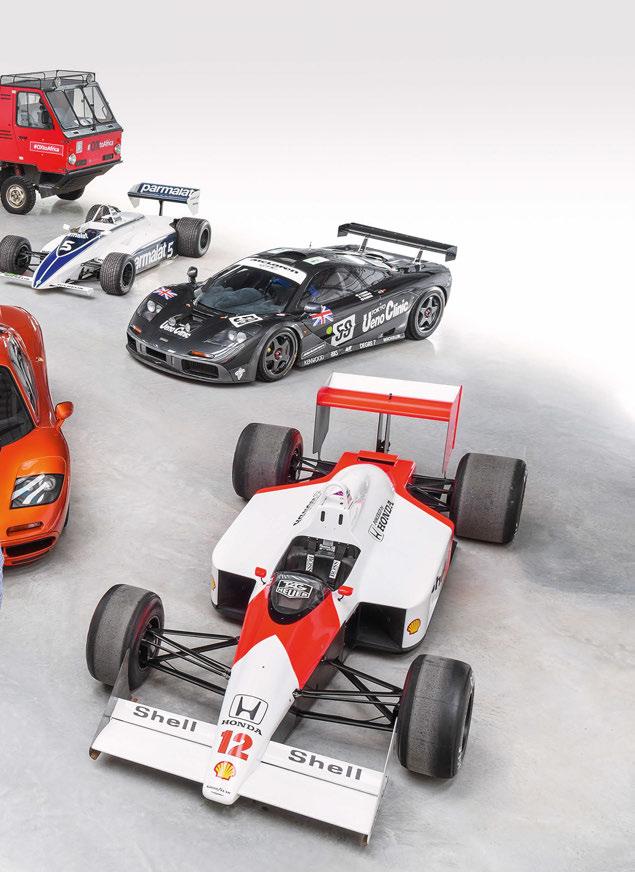
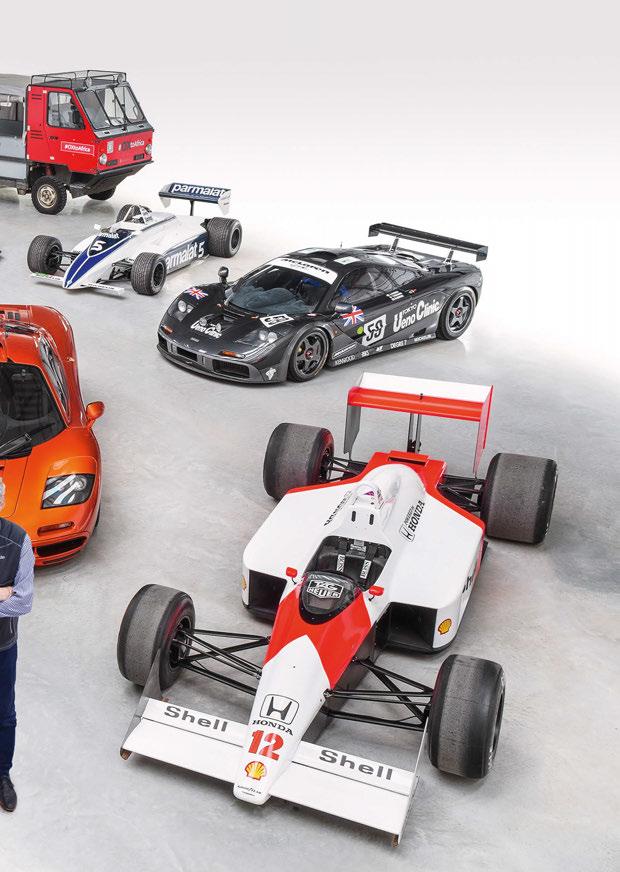
Brabham BT44
After a few fallow years, Brabham returned to the winners’ circle with the relatively conventional BT44. This neat Cosworth DFV-based machine won three rounds in 1974 when driven by Carlos Reutemann. He bagged the German Grand Prix in 1975 with the evolutionary BT44B (car no.7, pictured left), while his team-mate Carlos Pace claimed honours in Brazil. British privateers RAM Racing ran BT44Bs during the ’76 season for a variety of drivers without success.
Brabham BT45
Ecclestone aligned with Alfa Romeo for 1976 in a bid to seek an advantage over his DFV’d rivals. The powerful Italian flat-12s had been proven in the Tipo 33 sports car programme but they were bulky – making Murray’s life difficult. The BT45 didn’t trouble the podium, but John Watson and Hans-Joachim Stuck claimed decent finishes in the BT45B that ran a year later. Even so, wins still proved elusive. The BT45C was fielded in two 1977 rounds before it was replaced.
Brabham BT46
The BT46 appeared in time for the 1978 South African Grand Prix and was immediately competitive, although engine reliability remained an issue. Following the withdrawal of the BT46B ‘fan car’ after that year’s Swedish Grand Prix, the team continued with the regular car and Niki Lauda won the Italian Grand Prix. One was used by Nelson Piquet for the opening round of the 1979 season. The evolutionary BT46C didn’t race, while the BT47, which was to have employed twin variable fans at the rear, wasn’t built.
Brabham BT48
Brabham persevered with Alfa Romeo into 1979, with a new V12 built at Murray’s behest. The BT48 was hobbled by abysmal engine reliability – Niki Lauda abruptly departed after practice during the Canadian GP meeting. He’d finished just two rounds that season, and was tired of scrabbling for results. That said, he won the non-points (poorly supported) Dino Ferrari Grand Prix at Imola shortly before quitting. The BT48 didn’t see out the season: Alfa Romeo entered Formula 1 with its own car partway through. Ecclestone’s exclusivity deal regarding engine supply was less exclusive than promised.
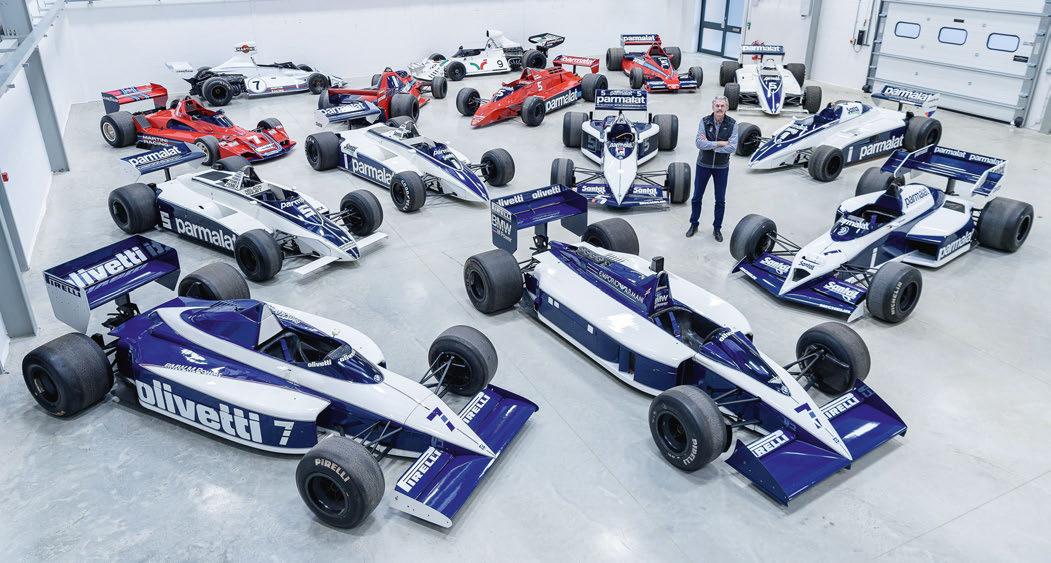
Gordon Murray Special The other cars
Brabham BT49
A classic of its kind, the BT49 (centre le of bo om pic on previous page) was born of expediency a er Ecclestone annulled the engine deal with Alfa Romeo with two rounds of the 1979 F1 season le . This DFV-engined car proved instantly competitive; the BT49B that appeared in 1980 featured a new transverse gearbox but was dropped due to frailty. 1981’s BT49C employed more carbonfibre content, and Murray exploited a mandatory ride height loophole with a hydropneumatic suspension set-up: pure genius, but rivals thought otherwise and the playing field was levelled via new rules. Piquet claimed that year’s drivers’ title. The following year proved mixed, with Piquet disqualified a er winning the Brazilian Grand Prix, his car deemed to be underweight. Team-mate Ricardo Patrese won at Monaco a er several leading runners stopped on the final lap.
Brabham BT50
This turbo BMW-engined machine first appeared in practice for the 1981 British Grand Prix (car no.5, top of previous page) but wasn’t raced until ’82. Even then, Brabham didn’t field it in every round of the World Championship due to the engine’s poor reliability. However, it lasted long enough for Piquet to lead home team-mate Patrese to win that year’s Canadian Grand Prix.
Brabham BT52
The BT52 was created under duress. The BT51 had been completed by the time the FIA decided to ban ground e ects just six weeks before the start of the 1983 season. Murray and designer David North created a new car in double-quick time, with a dart-like profile, an aluminium and carbonfibre monocoque and an outsized rear wing. The turbo BMW-powered BT52 produced as much as 750bhp in qualifying trim and was a front-runner from the start; the BT52B (head on, centre of bo om pic on previous page) arrived late in the season. Piquet claimed that year’s drivers’ title at the final round in Kyalami, although a constructors’ title remained elusive.
Brabham BT53
In essence a development of the BT52, the new strain (middle right of bo om pic on previous page) had aero mods, larger fuel cells and more power. The BT53B arrived mid-season with a new rear wing and further aero tweaks. There were two wins in 1984, but the two entries recorded only 12 finishes from 32 starts.
Brabham BT54
This beautiful 1985 challenger (le foreground of bo om pic on previous page) was propelled by the exceptionally powerful BMW M12 unit. However, its Pirelli tyres only performed well in very hot conditions. The BT54 won just once, when Piquet claimed French GP honours.
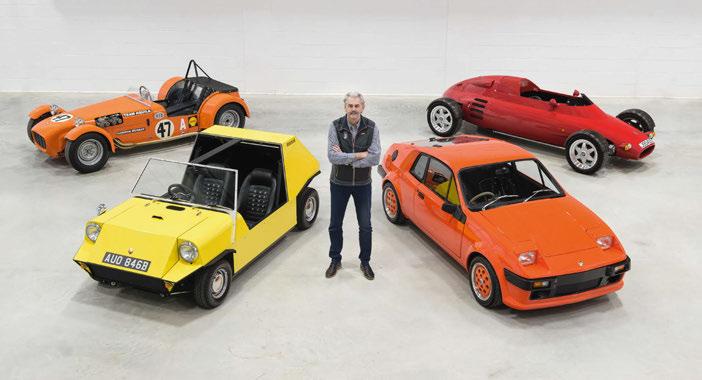
Above
Murray with the IGM Minbug (front le ), IGM-Ford racer (back le ), LCC Rocket (back right) and the Mini-based Midas, for which he acted as consultant while at Brabham.
Brabham BT55
This unconventional ‘lowline’ design (centre foreground of bo om pic on previous page) had a relatively small frontal area and therefore high straight-line speed, and purportedly e ective airflow over the rear wing. The engine being inclined at 72 º proved to be a problem, while the new seven-speed transmission was unreliable. 1986 turned out to be a dismal year, the BT55 recording only two points. Murray subsequently departed for pastures new at McLaren.





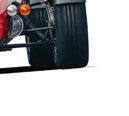
Light Car Company Rocket
Chris Cra raced the Murray-designed Duckhams Special at Le Mans in 1972 and, 20 years later, introduced the Light Car Company Rocket – also designed by Murray. This 20-valve Yamaha-engined machine resembled an early 1960s ‘cigar tube’ F1 car and weighed just 400kg. It more than lived up to the moniker.
Mercedes-Benz SLR McLaren
T.25
This tiny city car employed a central driving position, à la McLaren F1, and a li -up canopy in the style of a Bond Bug. It first appeared in petrol-engined form in 2010, and the electricpowered T.27 arrived a year later. A tie-up with Zytec Automotive should have led to series production in 2013 but the promised funding didn’t materialise.
OX
The non-profit Global Vehicle Trust was founded by Sir Torquil Norman, for whom Murray conceived the OX truck. This flat-packed allterrain device was created with emerging countries and rural communities in mind and made its debut in 2016. It could be assembled in only 12 hours and could carry up to 13 people or a 1.9-tonne payload. The least racy vehicle ever designed by Murray, but typically inventive.
GMA T.33
Borrowing its V12 from the T.50 hypercar, this two-seater sports car was announced in 2022. It subsequently spawned the open Spyder variant (below), and its maker plans to spin further models o the same platform.


Mercedes-Benz owned a stake in McLaren Group and provided engines for its F1 squad. Murray was irked that the link-up nixed a junior McLaren F1-style car that would have employed BMW power, and it didn’t help that his vision for a GT car di ered from that in Stu gart. The resultant 2004 Mercedes-Benz SLR McLaren was mighty in parts but not universally loved.













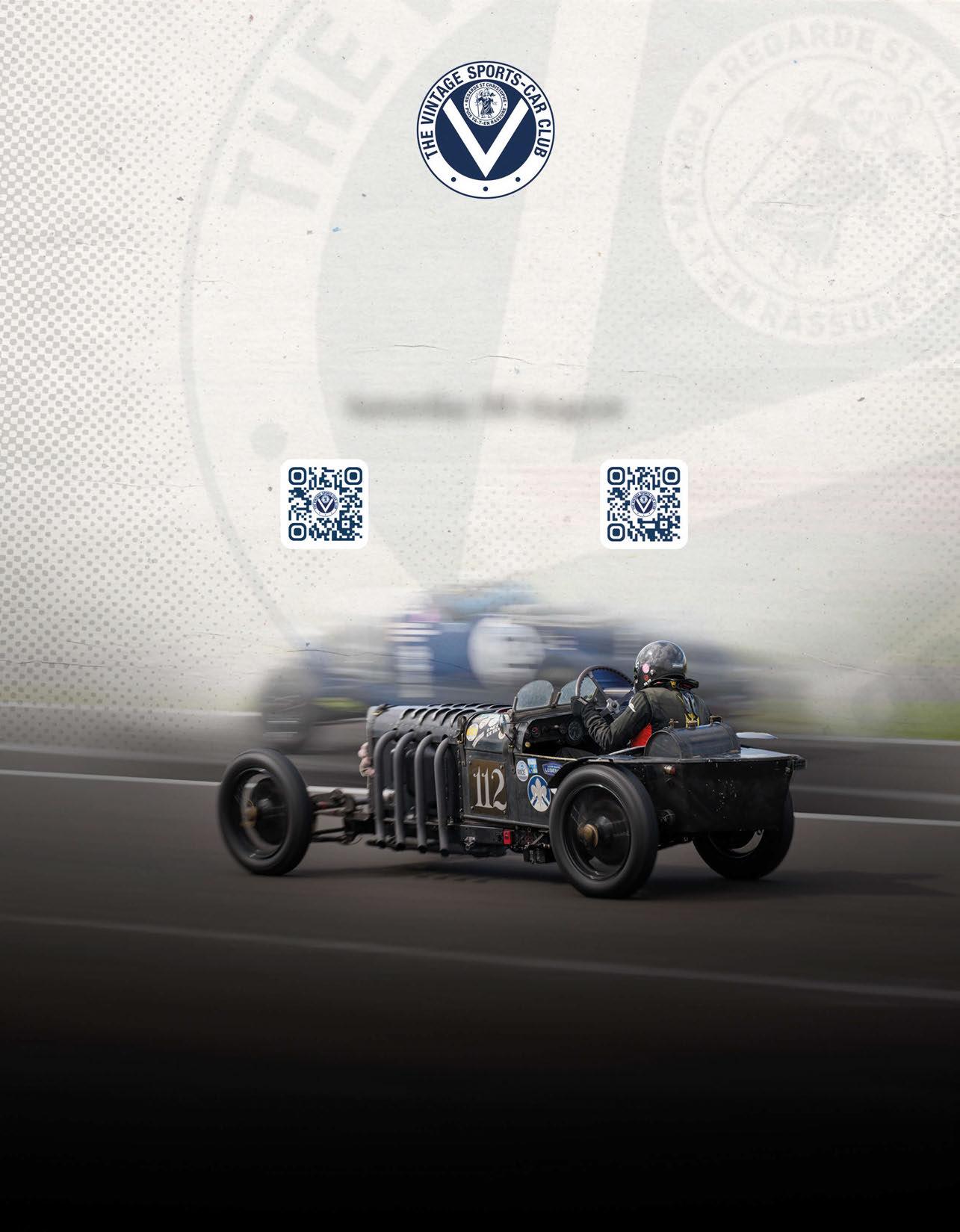

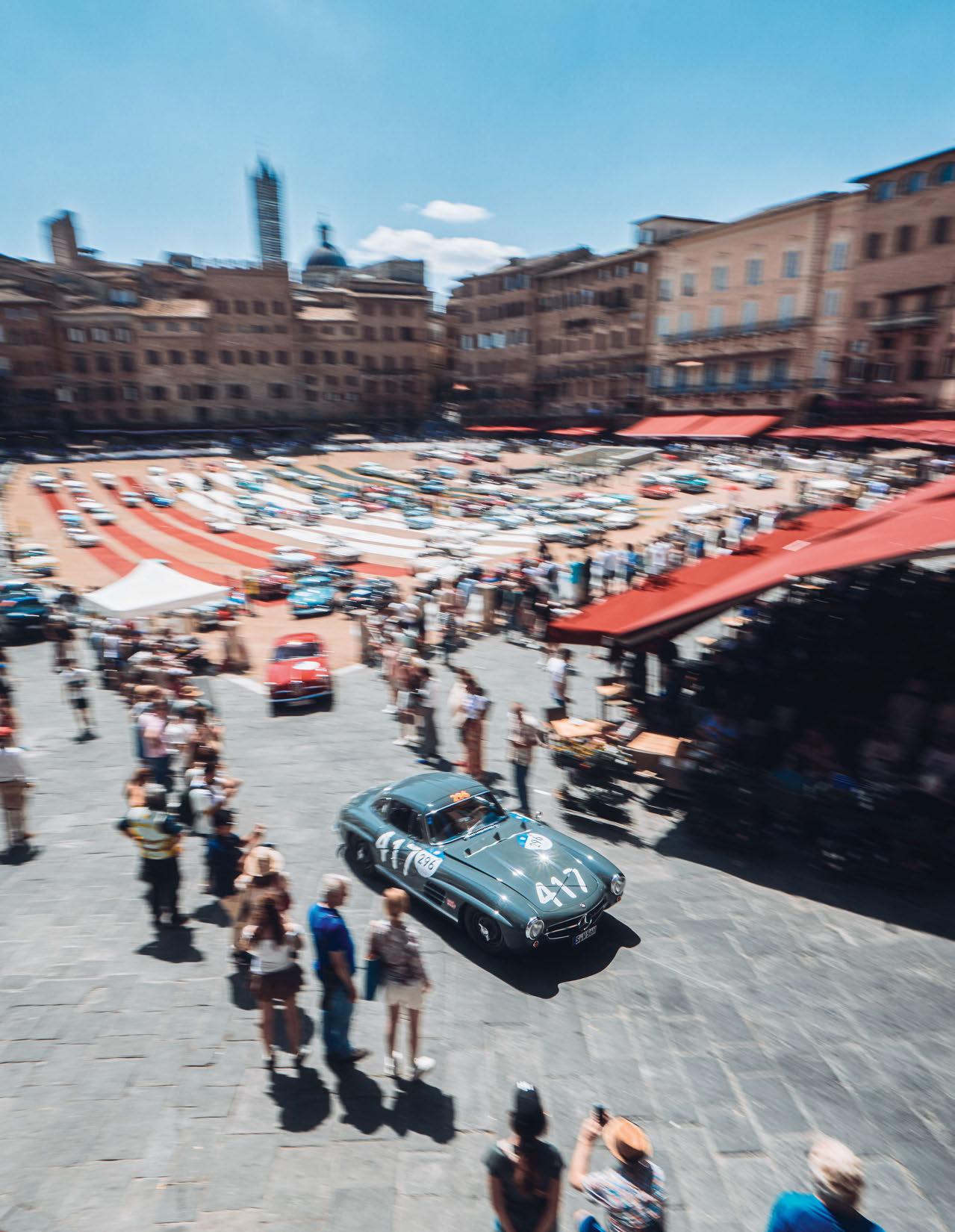
All roads lead to Rome
Octane joins Mercedes-Benz and the son of Stirling Moss for a special 70th anniversary celebration of Moss and Jenks’ historic Mille Miglia victory
Words Elliott Hughes
Photography Mercedes-Benz Classic and Lina Silbermann / SLR.CLUB
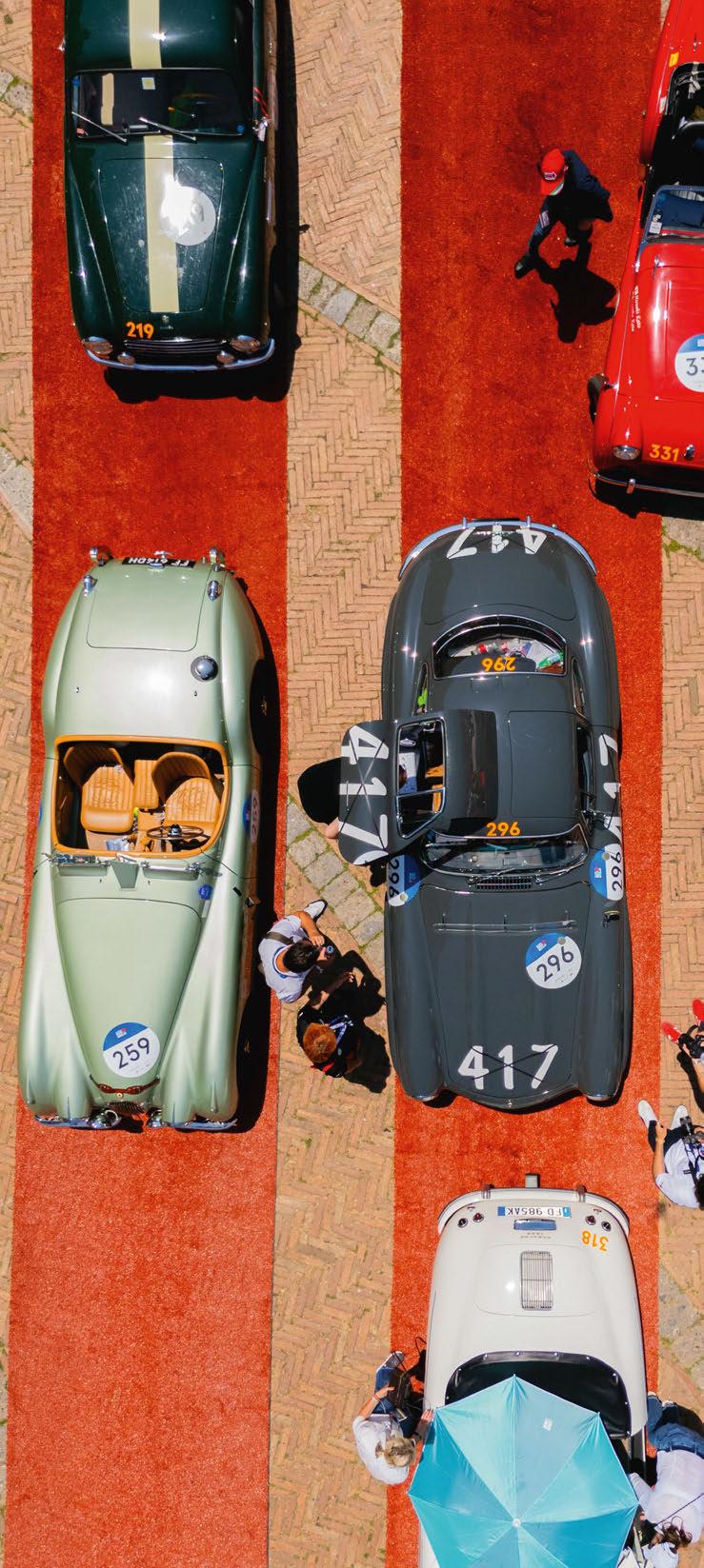
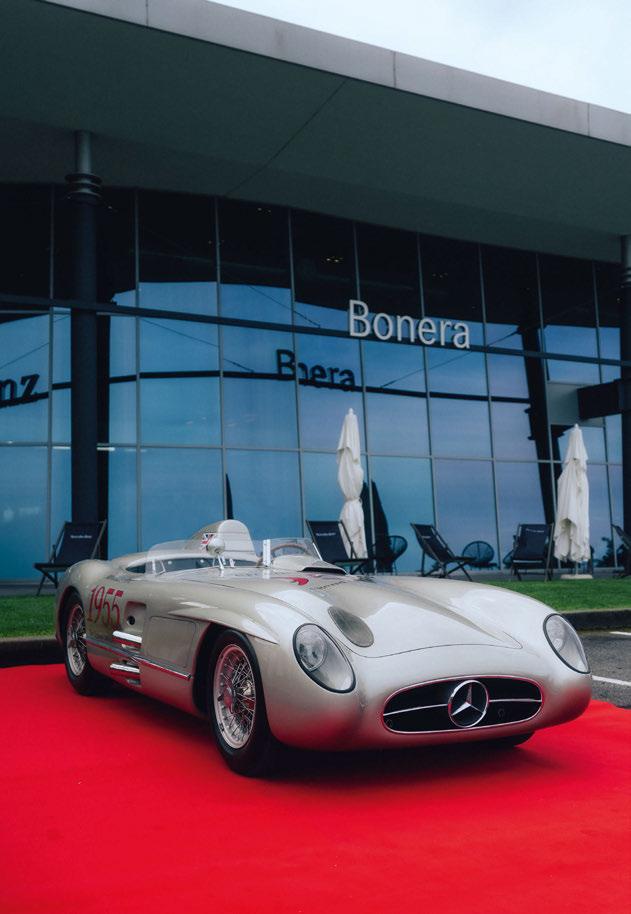
‘I
think I learned the words “Mille Miglia” at the same time I learned to speak. My father had long retired, but our whole world still revolved around being Stirling Moss’s family –and this incredible road race is at the heart of it.’ These are the words of Elliot Moss, fêted chef and son of the great Sir Stirling Moss. Dressed in a crisp white shirt and chinos, Elliot looks relaxed as we chat on the eve of our departure from Brescia to Rome. Seventy years ago, Sir Stirling Moss and his lovably idiosyncratic navigator, Denis ‘Jenks’ Jenkinson, made history by becoming only the second non-Italian team to win the Mille Miglia after the German pairing of Rudolf Caracciola and Wilhelm Sebastian in 1931. Not only that, they did so in record-breaking fashion, defeating the likes of Juan Manuel Fangio to complete the perilous 992-mile race in just 10hr 7min 48sec. Their average speed was an incredible 98.53mph. And within mere hours, I will begin to understand just what that
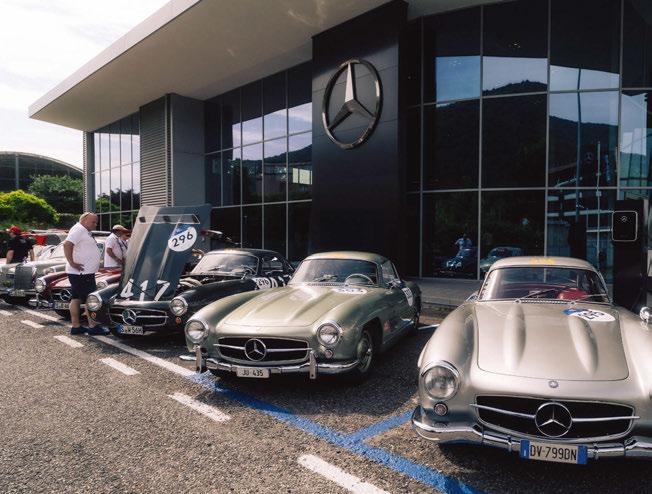
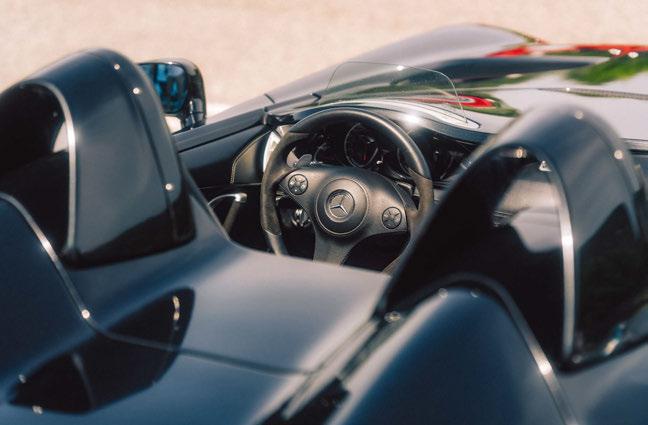
really means. Over the next three days, Elliot and I will be honouring one of the most storied days in motor racing history by recreating the journey of his legendary father – each in our own cars – from Brescia to Rome.
Obviously such a pilgrimage demands special machinery. My journey will be split between two cars that pay tribute to Sir Stirling in very different ways. The first stint, from Brescia to the rolling hills of Siena, will be in a 2009 Mercedes-Benz SLR McLaren Stirling Moss – a 650bhp speedster inspired by the 300 SLR that carried Moss to glory. From Siena to Rome, I will swap into a 1955 Mercedes-Benz 300SL Gullwing, a factory replica of No.417, which won its class on the Mille Miglia that same year, driven by John Fitch and Kurt Gessl.
Fittingly, the 300SL’s spindly steering wheel and rasping straight-six soundtrack will echo sensations that Moss and Jenks experienced during their recce run before the race. For that they drove chassis 198.040-4500019 – and now so will Elliot, alongside its current owner, the German collector Matthias Bonczkowitz.
We arrive at the Mercedes dealership in
‘With every passing kilometre, my appreciation for Moss and Jenks grows’
Above and opposite
A special display in Brescia ahead of the SLR.CLUB’s departure; Octane takes part in a commemorative 2009 SLR McLaren Stirling Moss edition.
Brescia to a crowd of car spotters jostling for a glimpse of the jaw-dropping machinery lined up outside the glass-fronted showroom. Parked nearby are the Gullwings that Elliot and I will be driving, joined by a formidable fleet of 19 SLR McLarens – including multiple 722s, three Stirling Moss editions, and a pair of new AMG PureSpeeds. But the undisputed star is the 300 SLR race car, positioned proudly on a red carpet. A smartphone-wielding crowd gathers the moment its 3.0-litre straight-eight engine barks into life, briefly drowning out the wasp-like buzz of drones above.
But before I can soak in the magic of the moment, I’m handed a helmet by the enthusiastic president of the SLR.CLUB. It’s time to begin retracing the wheeltracks of Sir Stirling Moss, and I feel more than a little conspicuous as I fasten my helmet, swing open the passenger-side butterfly door and lower myself into the bucket seat. The cabin blends carbonfibre, machined aluminium and leather to create an ambience both purposeful and exotic – helped, of course, by the absence of a windscreen.
The car’s proportions are cartoonish: nearly as wide as a modern Range Rover and only 232mm shorter. You sit just ahead of the rear axle, while the impossibly long bonnet stretches ahead before vanishing from view,
like an infinity pool. It’s dramatic and feels every bit the modern-day Silver Arrow.
Beneath the carbonfibre bodywork burbles a 5.5-litre supercharged V8, capable of sending 650bhp to the rear wheels through a five-speed automatic transmission – 26bhp more than the standard SLR McLaren. At 1551kg, it’s also significantly lighter than both that and the sharpened 722 Edition.
For today I’m in the passenger seat. Andreas’s son Moritz is on driving duties, leading our armada of SLRs southwards towards our overnight stop in Tuscany. Much of the journey retraces the 1955 Mille Miglia route, offering everything from picturesque Italian towns, incredible lakeside vistas, sections of autostrada and serpentine mountain roads.
Under azure skies and blazing sunshine, we sweep through northern Italy to the sound of cheering crowds. Spectators young and old line the route, leaning from balconies and gathering at petrol stations and roadside cafés. Children wave and run alongside the cars. Pensioners applaud. Car-spotters point at the convoy in excitement, phones aloft. Even the Ferrari flagwaving tifosi holler with approval.
With every passing kilometre, my appreciation for what Moss and Jenks accomplished grows. It’s past midnight by the time we reach our stop and I’m sunburnt,
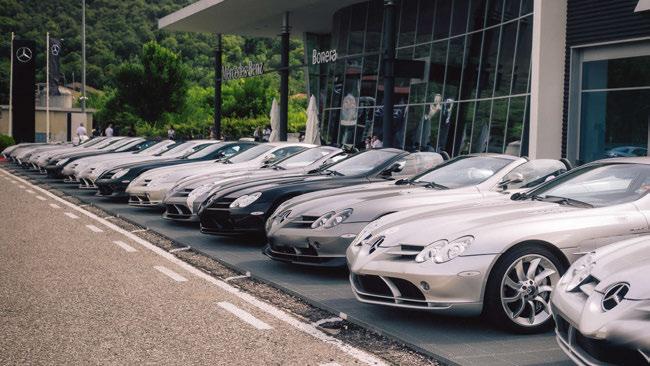
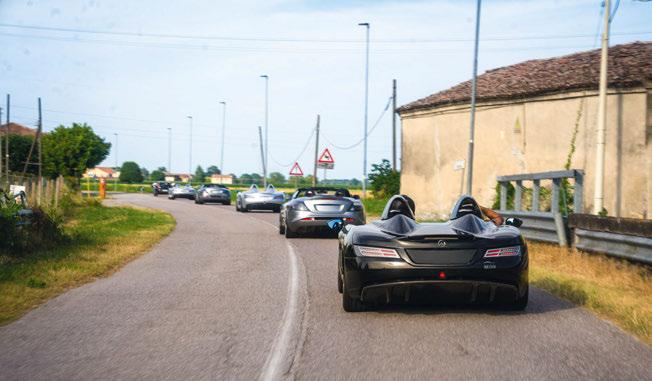
exhausted and numb after spending so long in the thinly padded bucket seat. We still haven’t completed even half the route. And it has taken us more than ten hours.
In that same time, Moss and Jenks would already be spraying Champagne after dealing with all the perilous unpredictability of public roads. In our case, that meant dodging two suicidal deer and a stray dog in the dark. What struck me most, though, was the vulnerability you feel while travelling in a car without a windscreen. Even at our generally sedate pace, you feel exposed – to think they averaged nearly 100mph is almost beyond belief.
My experience on the first day reminds me of something Elliot said before we set off: ‘Most people remember the record, the average speed. But what they forget is that it was done on open roads, with dogs and people and potholes – it wasn’t a racetrack. That’s what blows my mind.’
Next morning dawns: 18 June 2025 is a day I will never forget. I wake at first light, ready to drive not only the Mercedes-Benz SLR McLaren Stirling Moss but also a legendary 300SL Gullwing, too. Back-to-back. From the heart of Tuscany to Rome. That’s bucketlist territory. The SLR Stirling Moss is one of only three examples finished in menacing black paintwork, while the car in which I’d
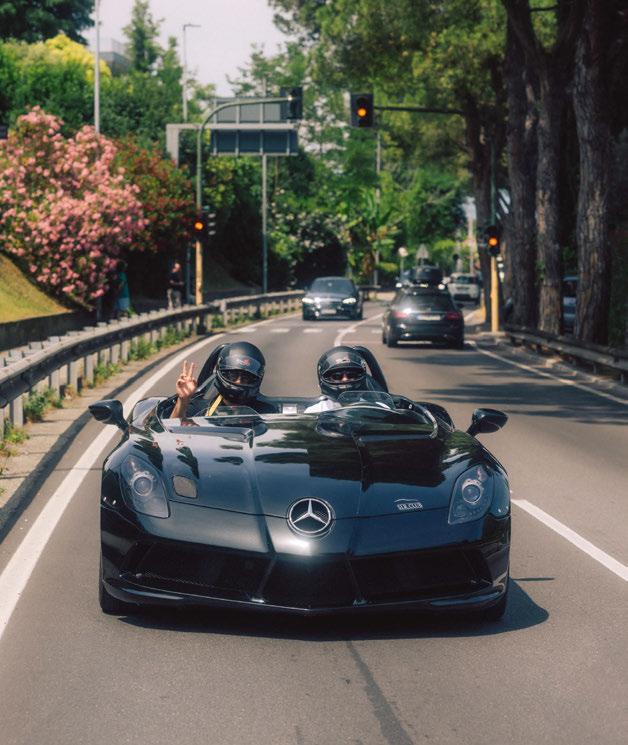
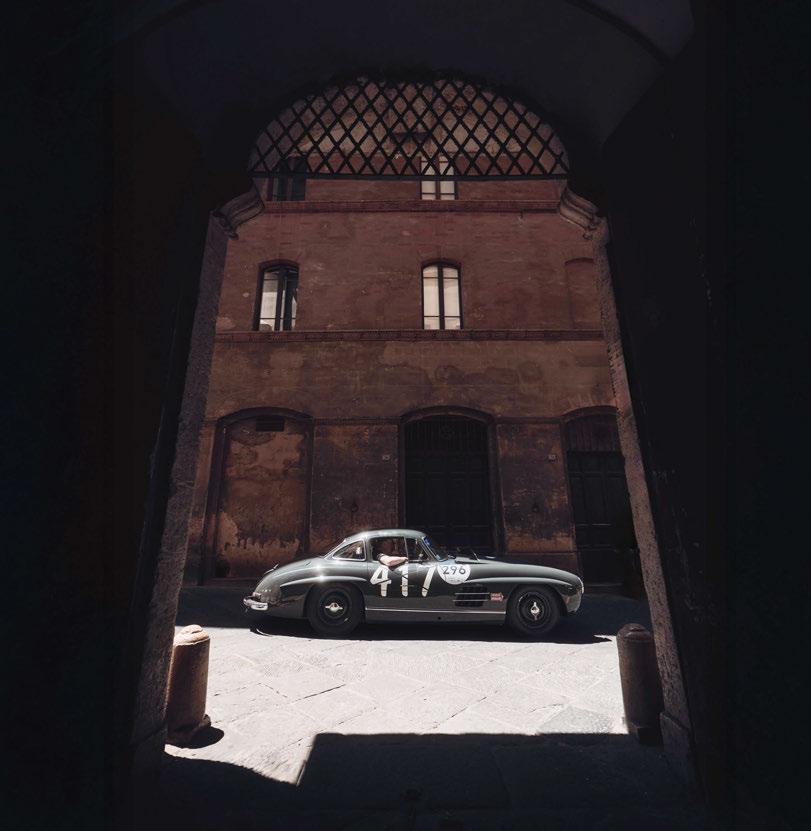
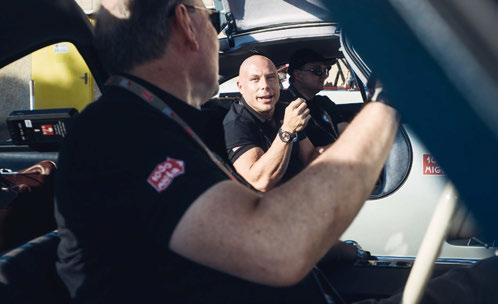
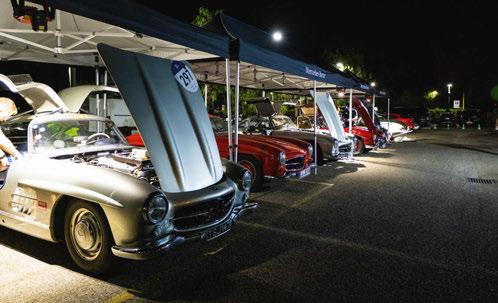
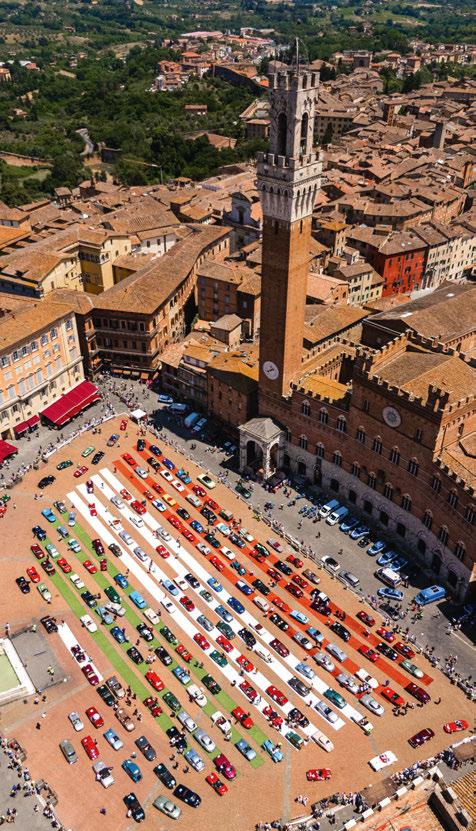
ridden shotgun is the silver pre-production prototype that was splashed across magazine pages in 2009.
You sit low down, there’s a hint of classic fighter-plane about the ambience of the cockpit, with its small wind deflectors and muscular haunches framing your vision ahead. Then your ears are filled with the rumble from the side-exit exhausts as you pull away on a wave of supercharged V8 torque. First comes a twisty descent through the Tuscan hills, before hitting the autostrada towards Florence and then on to Siena. On more tortuous roads, the Stirling Moss is a challenging beast to drive. It feels so long and wide from the driver’s seat.
The ride is surprisingly pliant, the automatic transmission shifts smoothly and there’s effortless power and torque in any gear. The brakes, however, are trickier to master. The first 10cm of pedal travel yields little response, before the calipers bite down aggressively. I manage to adjust, though never quite feel at ease with them. But the car’s character is defined by its muscular powertrain. It’ll sprint from rest to 62mph in just 3.5sec, so it’s fast – especially with the wind ripping past your helmet as you surge towards the 7000rpm redline. It’s undoubtedly a special and evocative machine.
My three hours behind the wheel pass in a flash and we roll into Siena. From here I will complete the journey to Rome in the No.417 Gullwing – but not before enjoying a quick bowl of pasta in one of the restaurants that encircle the town’s medieval Piazza del Campo. Now a UNESCO World Heritage site, this place is breathtakingly beautiful, framed by terracotta buildings and sloping cobblestone streets. Scores of stunning classics from the world’s greatest marques sit poised to depart for Rome while their crews rest. The vibrant sea of stickered paintwork gleams in the sun against archaic stonemasonry.
Opening the 300SL’s Gullwing door and climbing over its wide sills and into the driver’s seat for the first time is a surreal experience –particularly when you’re doing so in the centre of Siena for a leg of the Mille Miglia. Intense excitement quickly turns to nervousness as I pull the door down and cast my gaze over the beautiful gauges and curvaceous bonnet.
Many millions of dollars’ worth of classic cars jostle for position in the Piazza, as navigators lean out of windows, frantically waving timecards at the marshals. A cacophony
of high-pitched horns and revving engines reverberates off the terracotta. After a few breathless minutes our timecard is stamped, and my navigator and I began tailing a TalbotLago T26 GSL into the Val d’Orcia hills.
It is blisteringly hot and the Gullwing’s cockpit feels like an oven; the heated air streaming through the open front quarterlights offers no relief, and bottles of water on the parcel shelf are as warm as bathwater, but it’s important to stay hydrated. Even the car needs help, with makeshift rubber hoses wedged under the bonnet to vent excess heat.
Although no longer a flat-out race, the Mille demands unwavering focus. As a driver, you listen intently to your navigator, looking out for each landmark, junction and time control. It’s challenging and requires concentration, communication and teamwork. Whether it’s the beautiful cars, stunning landscape or the sometimes-erratic driving of fellow competitors, the sensory overload is constant.
Luckily, the 40km of Val d’Orcia’s stunning landscape provides an opportunity to become properly acquainted with the SL. It’s easy to see why this car made such an impact during
the 1950s – it feels so far ahead of its time. The sonorous, motorsport-bred 3.0-litre straightsix, which pioneered Bosch’s mechanical fuel injection system, develops an impressive 215bhp, enough to have made it the world’s fastest production car of its era.
From behind the beautifully thin-rimmed, Bakelite steering wheel, the only real challenges are the brakes and gearbox. Like many cars of its era, the drum brakes require a firm, deliberate push. The four-speed ’box feels satisfyingly mechanical but resists being hurried through its gate, demanding patience and precision. The ride is softer than you’d expect, with generous ground clearance that suits Italy’s provincial roads. Push harder, and there’s some body roll and a bit of bounce from the rear swing-axles, but overall the car feels astonishingly modern for something from 70 years ago. It’s no surprise the Gullwing finished first and second in its class in 1955.
We reach the medieval town of Ronciglione around 7:30pm, our penultimate stop – ahead of schedule. I park the Gullwing on the cobbled high street and take in the surroundings before my navigator and I cool off with a chilled drink
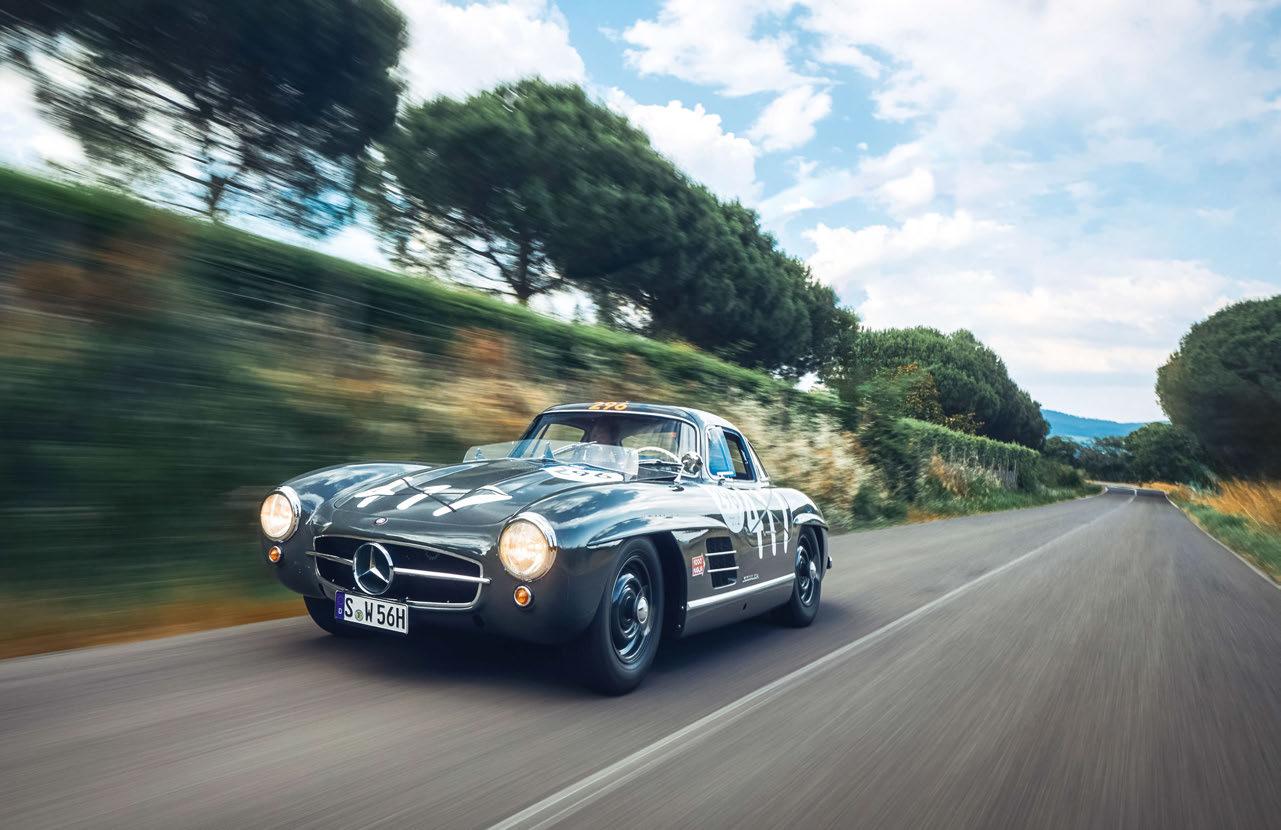
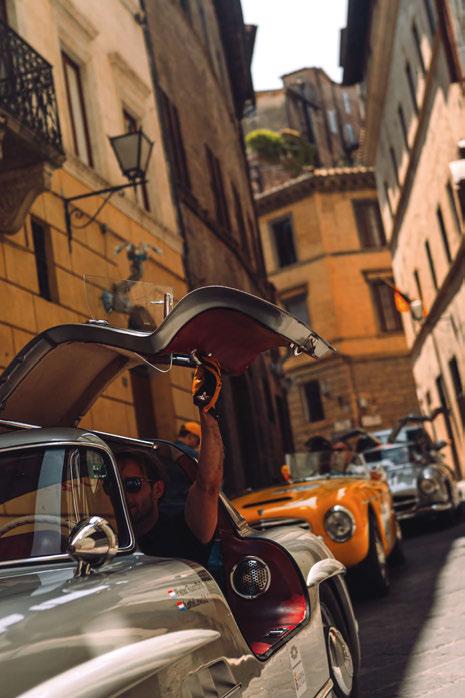
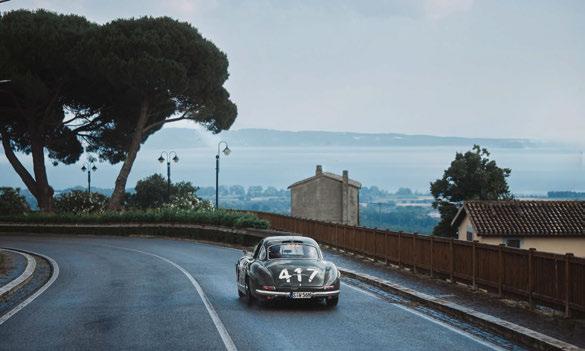
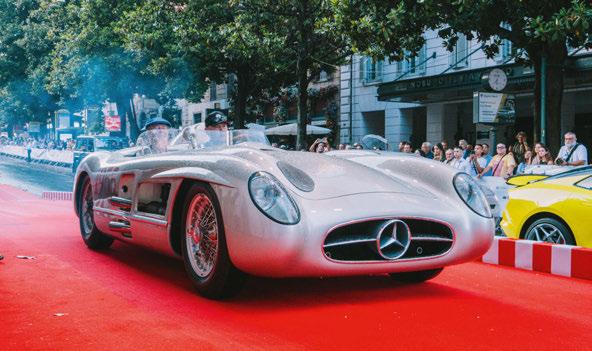
and a couple of scoops of gelato. The final stretch to Rome is ahead of us and will be the most memorable of all.
The countryside slowly recedes as we near the outskirts of Italy’s capital. The Gullwing joins a convoy of other competitors as the evening traffic thickens. I spot Elliot Moss and Matthias Bonczkowitz’s Gullwing in my rearview mirror and can see that both are as hot and as ecstatic as we are.
Cooler air and calmer traffic make for a more comfortable drive in the Gullwing, away from the cut-and-thrust I had been a part of in Siena, yet the atmosphere is charged. The sun may be setting but the enthusiasm of the crowds hasn’t waned, and camera flashes intermittently blink from the pavement as we echo through the streets.
The final time control of the day is in the leafy surroundings of Villa Borghese – Rome’s largest public park. Predictably, it’s hectic, with cars jostling for position from all sides. With our card stamped the competitive section has officially ended – but the best is still to come. Minutes later, we roll onto glamorous Via Veneto, which transforms into a classic car
catwalk with hundreds lining the barricaded street. The red-carpeted finish ramp is mere metres ahead.
Each car is called onto the ramp one by one, and, when our turn finally arrives, I’m overcome by a wave of euphoria – and relief. After rolling gently off the platform, we rejoin the convoy and continue through the heart of Rome under police escort – past the glowing arches of the Colosseum, with Elliot Moss following just behind in his Gullwing. Such a cinematic moment, it feels like fiction
And yet it’s entirely real. I can’t imagine a better end to a journey that has brought me so close to a now-mythical race that happened decades before I was born. And, while we’ll never see the likes of Moss and Jenks race the Mille Miglia flat-out again, the event and their story remain as special as ever.
I recall what Elliot said, hundreds of kilometres ago: ‘People remember the record, but it was the man who made it possible. He made a hell of an impact.’ Tired and yet elated, I can only agree.
THANKS TO Mercedes-Benz Classic.
‘We roll onto glamorous Via Veneto, it transforms into a classic car catwalk’
Clockwise, from top left
At every stop they raise the door to release some heat; Gullwing is a replica of the 1955 class winner; 300 SLR of the type in which Moss won in record-breaking style.
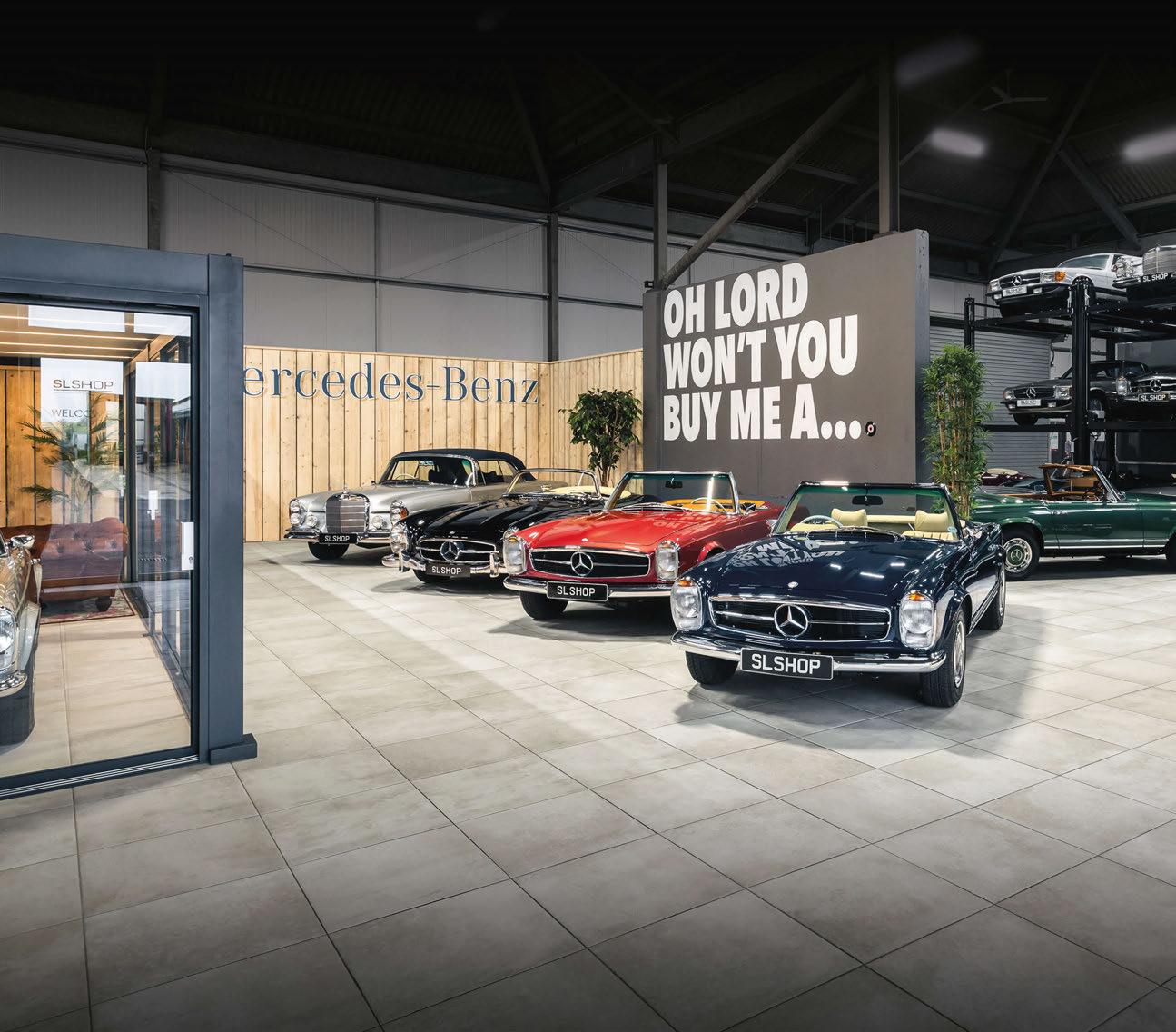
A carefully curated selection of exceptional, investment grade classic Mercedes-Benz collector cars for discerning buyers to acquire. Expertly sourced classic Mercedes-Benz are presented from our Stratford Upon Avon Showroom.
We combine 20 years of encyclopaedic marque expertise, compressive workshops, technical understanding and mastery and extensive market knowledge to help clients acquire or find new custodians for outstanding motorcars.
Each vehicle presented has passed rigorous inspection by our workshop, is expertly prepared and deemed “Blue Chip”, authentic and collectable. Cars will carry a unique 24-month major mechanical warranty and will be eligible for our CARE Concierge programme. Our extensive database of owners and worldwide reach ensures clients are supported with sales taking place on or off market.
















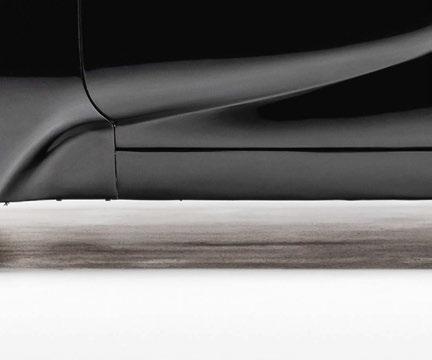

is stunning car was known for advanced engineering and controversy that sank the company

















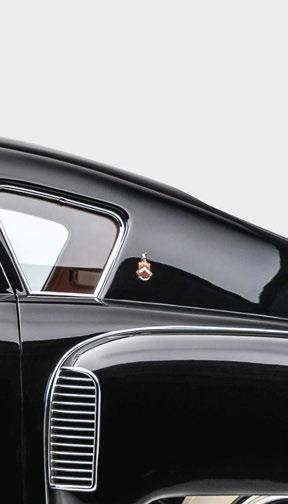



company – but the Tucker should have been a surefire style icon, as Stephen Bayley uncovers





n 1948, Harley Earl, Detroit’s influential wizard of kitsch, put tail-fins on a Cadillac and set General Motors on the road to becoming the world’s largest and most profitable corporation. Earl’s magisterial vulgarity dominated national taste through America’s period of greatest prosperity: the Eisenhower years, when the Interstate network was established and new horizons, actual and metaphorical, became available for all.
In 1948, Preston Tucker (1903-1956) launched his futuristic ‘Torpedo’, a technically ambitious and aesthetically sophisticated car. It was also commercially devious, with very poor financial handling. He conned his dealers, disappointed his customers, was pursued by the Securities and Exchange Commission and the business collapsed.
Tucker’s fraud was more emotional than forensic: he promised very much more than he could deliver. He could not even deliver a fully functioning gearbox. At its launch, the car that looked to the future had no reverse gear: a better metaphor of the propulsive, but often delusional, American Dream cannot even be imagined. Just look forwards, not backwards.
Both men were extraordinary. Earl’s life and career were a performance by someone who was continuously auditioning for the role of the-mostastonishing-person-you-ever-met. Tucker was no less impressive a human being. By every account he was elegant, handsome, charming, beautifully dressed… and a salesman of Satanic genius. He occupied a point on the line between genius and charlatan that is hard to identify from afar but becomes obvious once you have passed it. Perhaps he was not unlike a former-day John Z DeLorean.
When, in 1973, Francis Ford Coppola planned a movie about Tucker, such was the gigantic ambition the Godfather director wanted to describe, his first thoughts were to cast Marlon Brando in the lead role and have Leonard Bernstein compose the score: a mash-up of Story and On the Waterfront. When Tucker: The Man and His Dream eventually made in 1988, Jeff Bridges played the lead. The film was wellreceived by the critics, but a popular flop.
Nominative determinism alone cannot explain the failure of the Tucker Torpedo. However, it is surely supplying fortune with a dangerous hostage to name a passenger car after a submarine explosive projectile. But the term ‘torpedo’ pre-dates the nautical ordnance. The English Dictionary says it was first used in 1775 to describe an underwater bomb dragged by ropes hung from a surface vessel. And the dictionary adds that in 1909 the term came into use to describe a car body with tapered ends. In Pininfarina’s Lessico della Carrozzeria torpedo body is said to be an open-top four-seater with a folding hood.
In 1936, Harley Earl’s understudy, Bill Mitchell, was working on a ‘torpedo’ shape for Cadillac’s La Salle sub-brand. The Chrysler Airflow, another doomed project, was also often described in this way. The huckster-fabulist-designer, Norman Bel Geddes, was an influence on the Airflow. He was a man obsessively preoccupied by the shape of things to come, fully responsive to what an article in an Automotive Industry of 1933 described as ‘a general movement toward a new era of creative design… the movement seems to be pointing to some streamline form’. This was the mood in which Tucker’s ideas incubated. During World War Two, America was inevitably isolated from Europe, or at least from the influence of its polite design directions. And from 1941 to 1945, US car production in effect ceased. With peace and the prospect of stability, there was an uncontained eruption of creativity, followed closely by an uncontained eruption of corporate mischief.
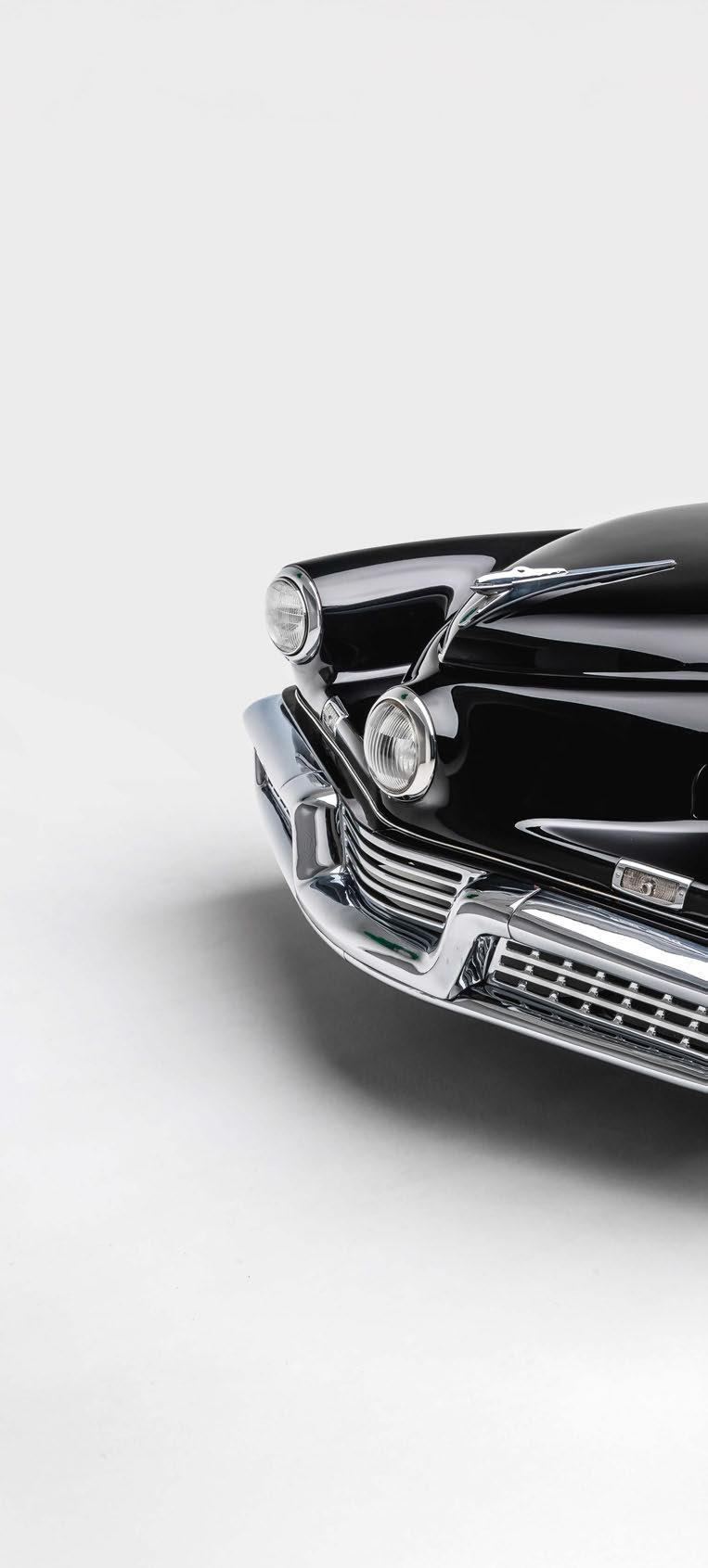

‘a better metaphor of the american Dream cannot be imagineD’
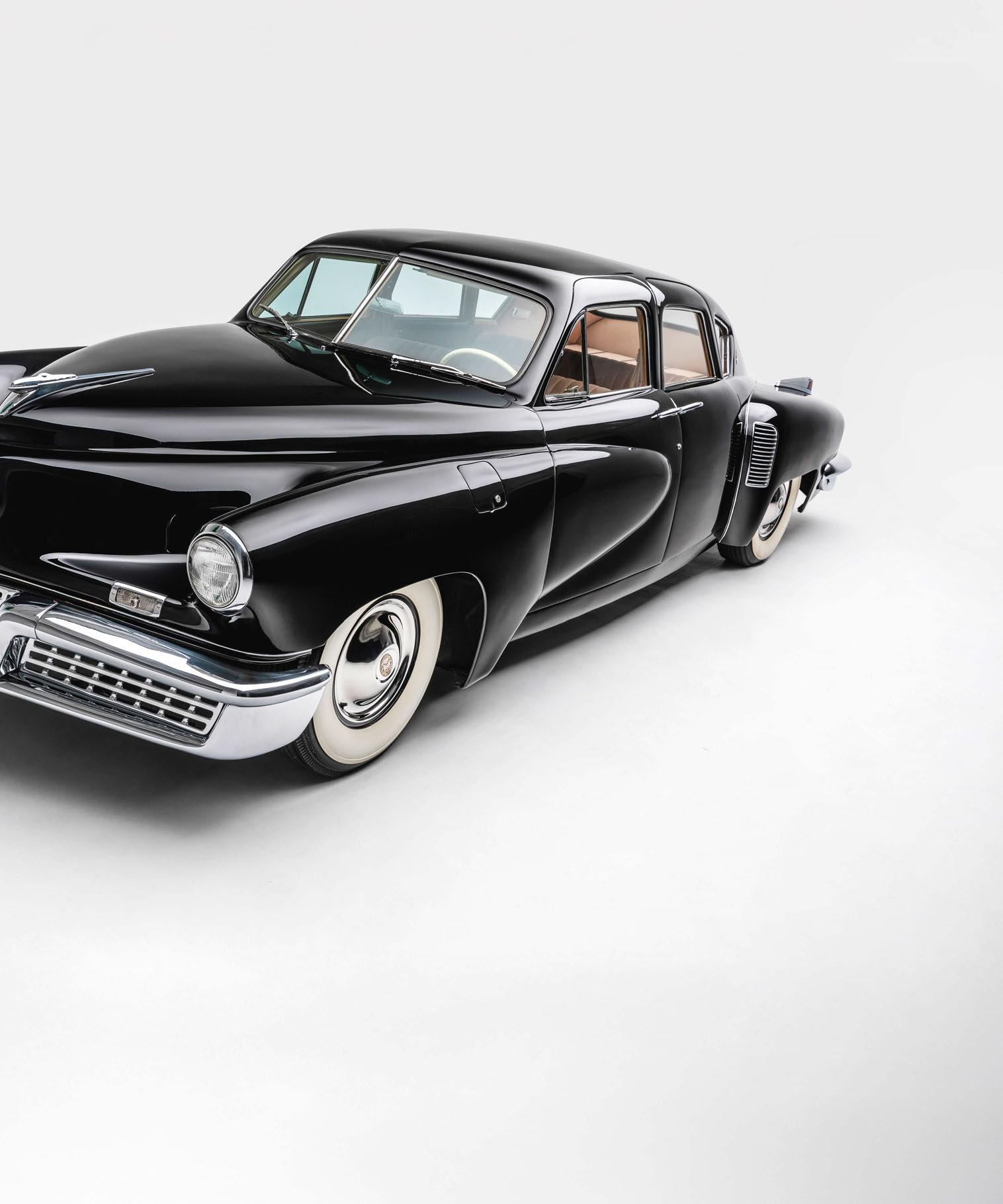
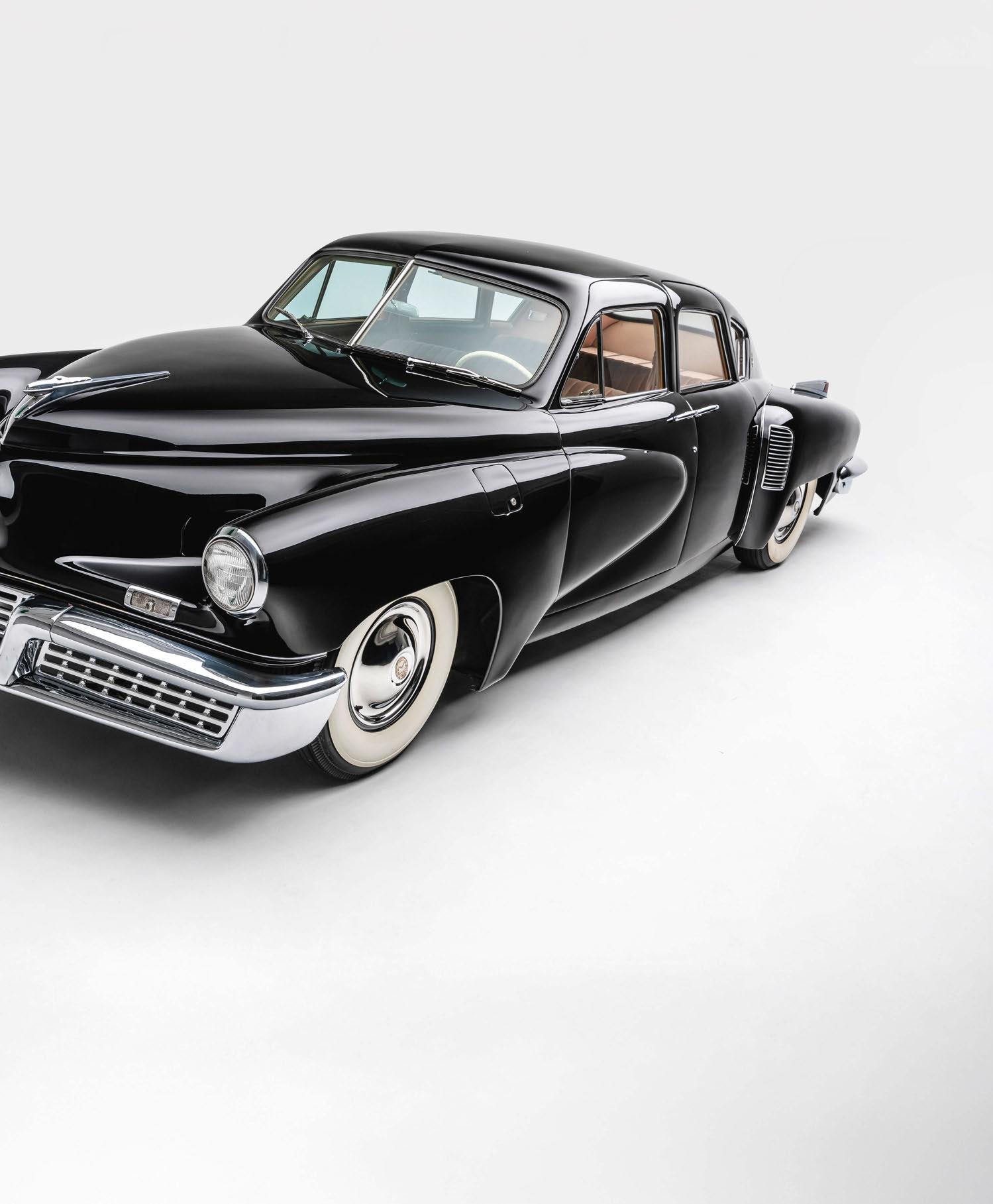
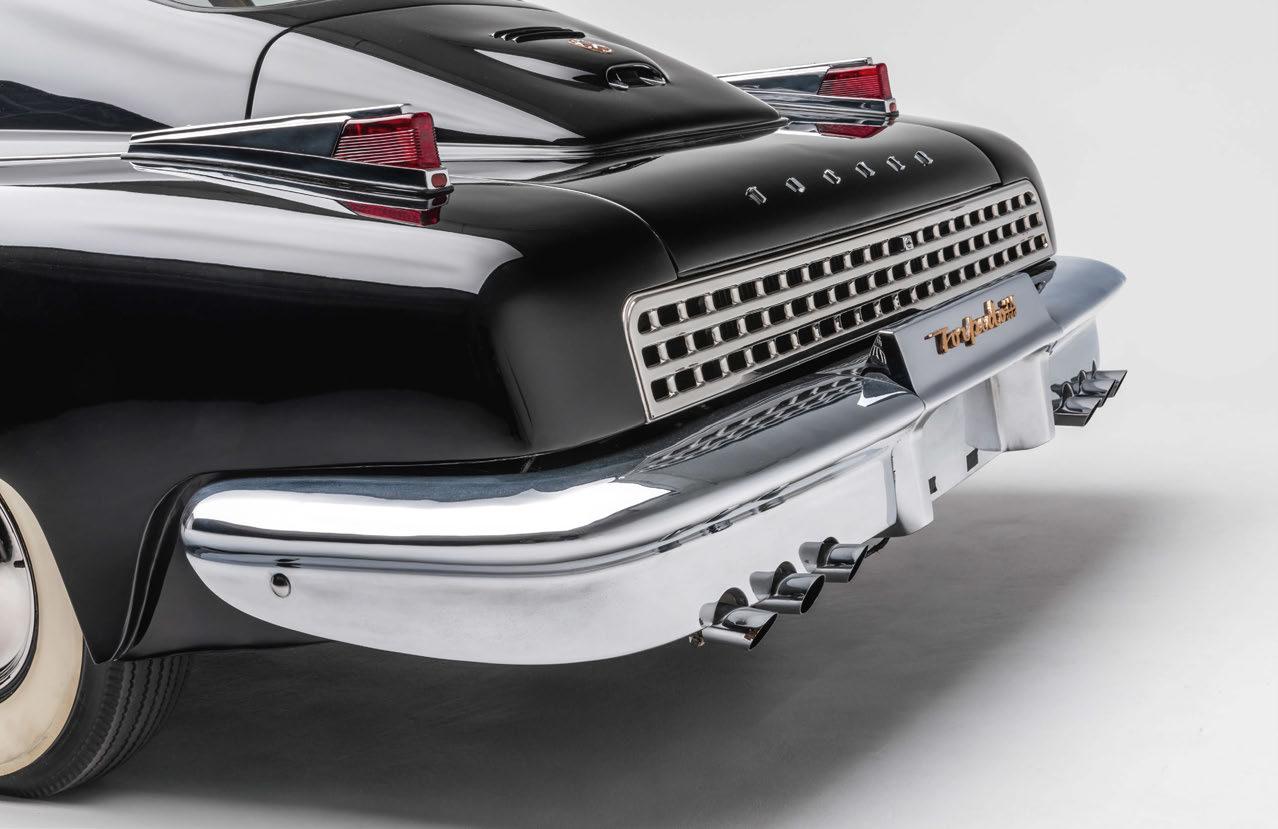
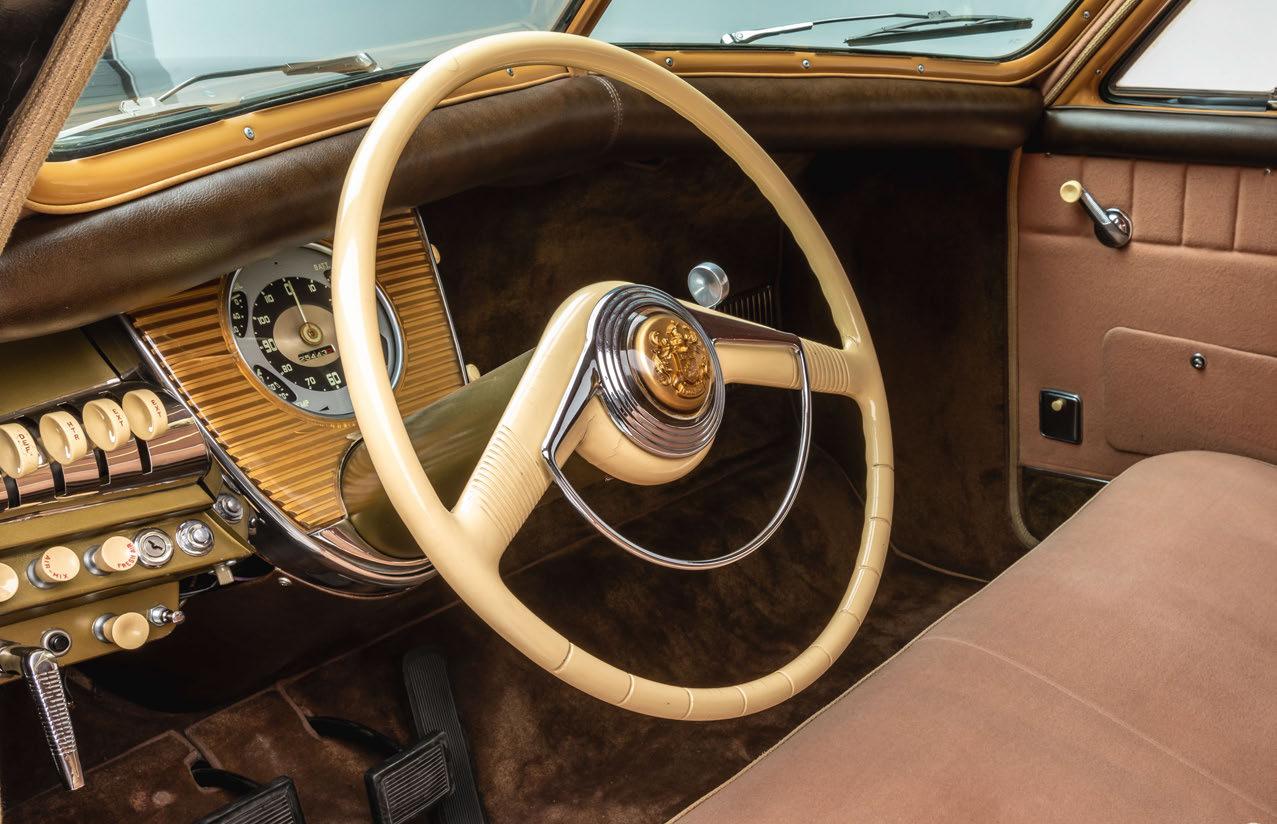
For his part, Harley Earl decided to ignore – if he even understood –the scientific aerodynamics of Wunibald Kamm, Jean Andreau and Reinhard von Koenig-Fachsenfeld. Instead, he committed General Motors to ‘styling’, which is to say flamboyant form rather than sensible function. Meanwhile, the American consumer was so hungry for new cars, unscrupulous sales practices flourished. This was Tucker’s context.
But it was the context of others as well. To understand the Tucker Torpedo, consider first the Davis Divan of 1947. Conceptualised by a used-car salesman, this was a three-wheeler convertible with a glassfibre body, intended to sell for $1000. It enjoyed engineering input from Frank Kurtis, who designed midget racers, and its body took its streamlined shape in the studio of Raymond Loewy, the white-shoed, pomaded and moustachioed showman of the design consultancy business. The Divan was launched in Los Angeles with Hollywood-level razzmatazz. But its conceptor, the salesman Glen Gordon, was found guilty of fraud and sentenced to two years in a labour camp. The lasting influence of the Davis Divan was to be on the style of fairground dodgems.
Preston Tucker was born on a boring farm in Michigan, exactly the sort of tedious homestead that had earlier inspired Henry Ford to get away from it all with the help of his ineffable gasoline buggy. Boredom can be an incentive to creativity.
Under-age, Tucker joined law enforcement to gain privileged access to the motorbikes and cars that occupied the Lincoln Park Police Department’s vehicle pool. He left the police to run a gas station, only to return to uniform, his wife remaining at the pumps. A restless tinkerer with cars since he began driving aged 11, Tucker was dismissed from the police when he was discovered to have cut a hole in a cruiser’s bulkhead to facilitate the egress of heat from the engine bay to the passenger cabin. He’d used a blow-torch.
Indianapolis fascinated him and he became friends with engine designer Harry Miller. Together they made unsuccessful racers for Ford, something to do with overheating steering boxes, but Indy brought him into contact with Chevrolet’s chief engineer, John Eddie Offutt, who became one of the portfolio of influences on the future Tucker car.
Others included designer Alex Tremulis, a Detroit session-man, who had worked for Cord, Auburn and Duesenberg (and, in a curious latecareer move, assisted with the 1978 Subaru Brat). Then there was J Gordon Lippincott, a graphic designer who coined the term ‘corporate identity’ and created the famous red-and-white Campbell’s Soup packaging as well as the American Express logo. Late in the Torpedo’s short day, Lippincott was called-in to finesse the original design.
But first there were highly eccentric military projects. Tucker’s XP57 fighter ’plane briefly caught the attention of the US Army Air Corps, but did not take off because development was woefully under-funded. The Tucker Tiger very nearly did take off. Literally. This was a turreted armoured car with a Miller-modified Packard V12, said to be capable of 100mph. It had whitewall tyres. And Tucker’s turret became a thing. The Army rejected it because it was too fast, surely a first in the history of military procurement.
And a stint at Higgins Industries, which built the wartime Liberty Ships, perhaps persuaded Tucker to use the name ‘Torpedo’ for his car project. Higgins also made the Navy’s fast PT boats. The initials stand for Patrol Torpedo.
With characteristic bravura, the very first image of the Torpedo was adroit Tucker legerdemain: a 1946 article in Science Illustrated, a good source of vintage techno-porn, used a 1:8 model, photographed – with great art – to look full-size. The caption said ‘Torpedo on wheels’ but by the time of the car’s formal launch in 1948 it had become the Tucker ‘48’, since it was decided that a reference to destructive armaments was inelegant and inappropriate for a prestige personal car.
Long before production started, Tucker cranked-up the advertising. It explained ‘How fifteen years of testing produced the car of the year.’ That was a bit of a fib with a splash of wishful thinking. The styling was clearly
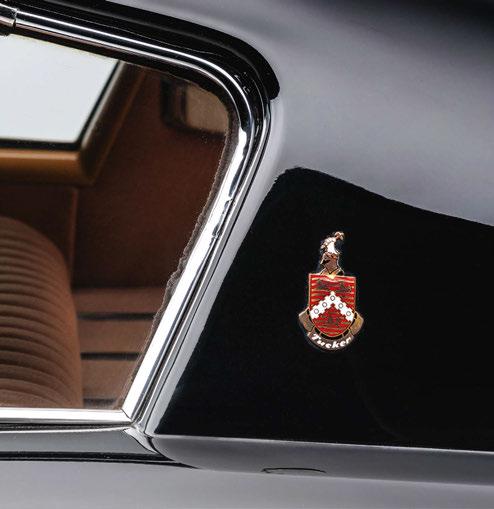
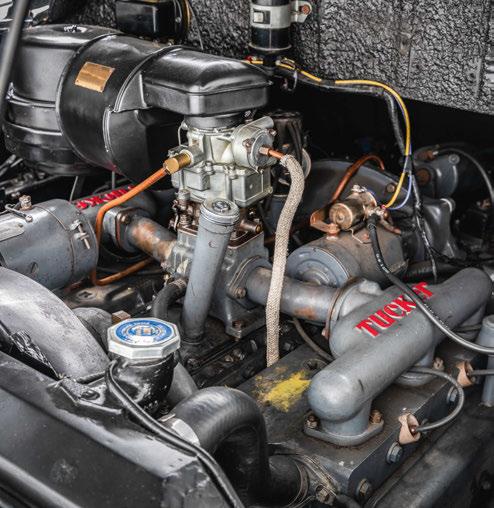
Opposite and above Interior is sparsely furnished, and features plenty of space to hide in the event of a crash; flat-six helicopter power for production, following the failure of the more radical intended engine
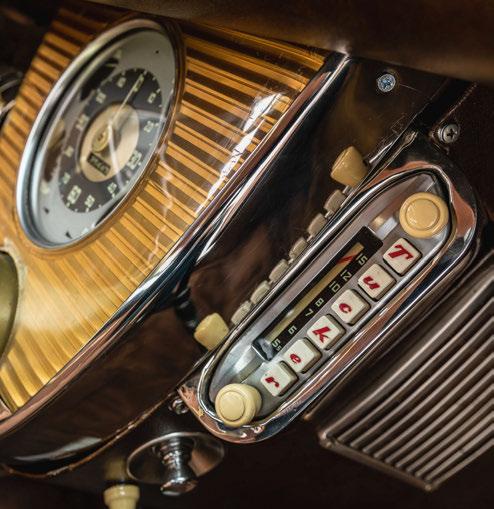
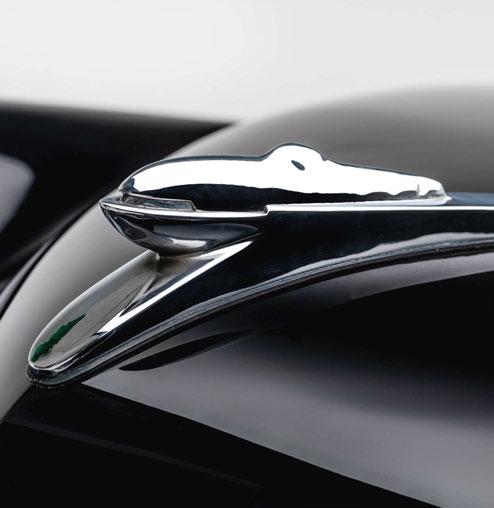
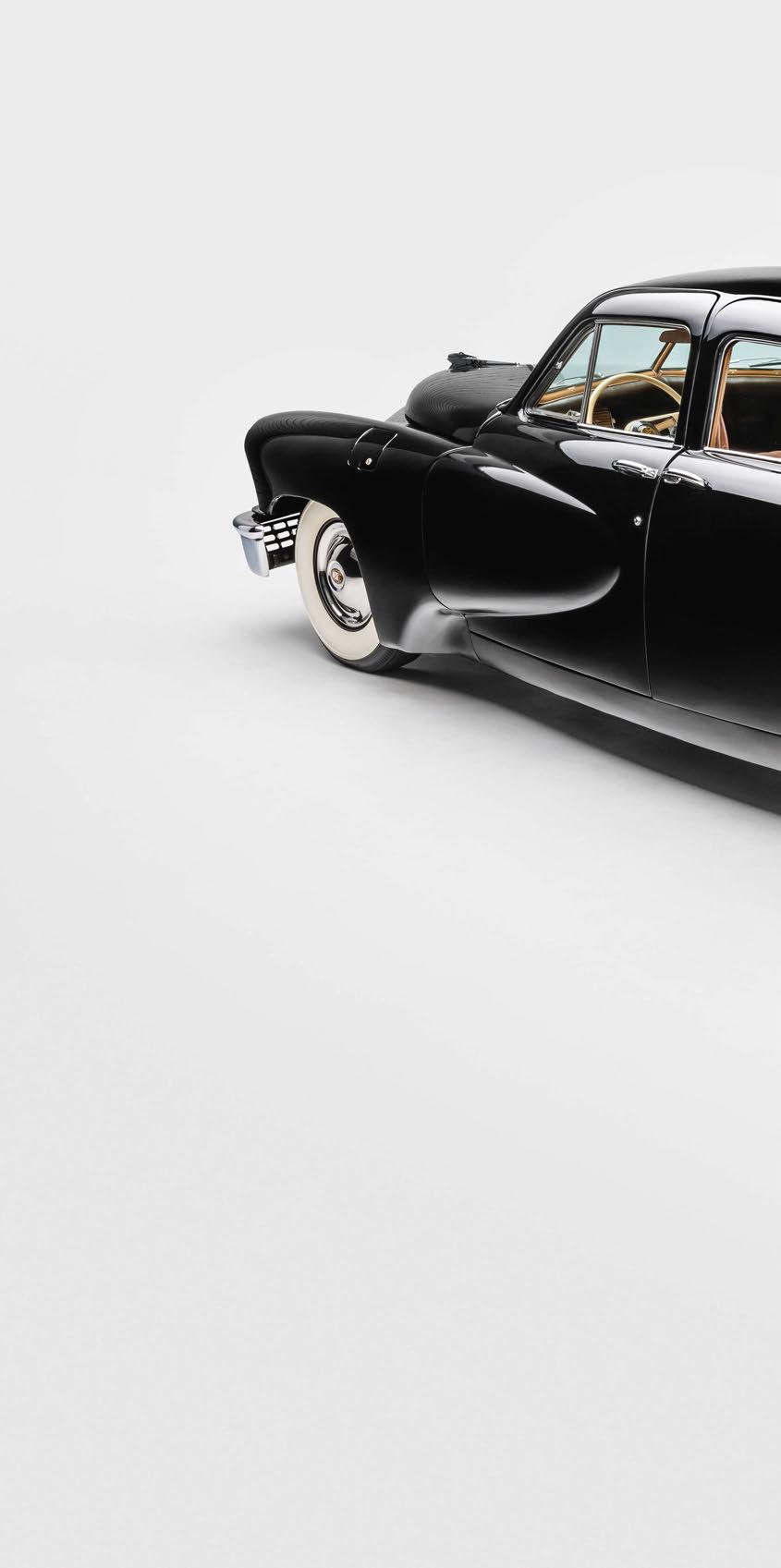
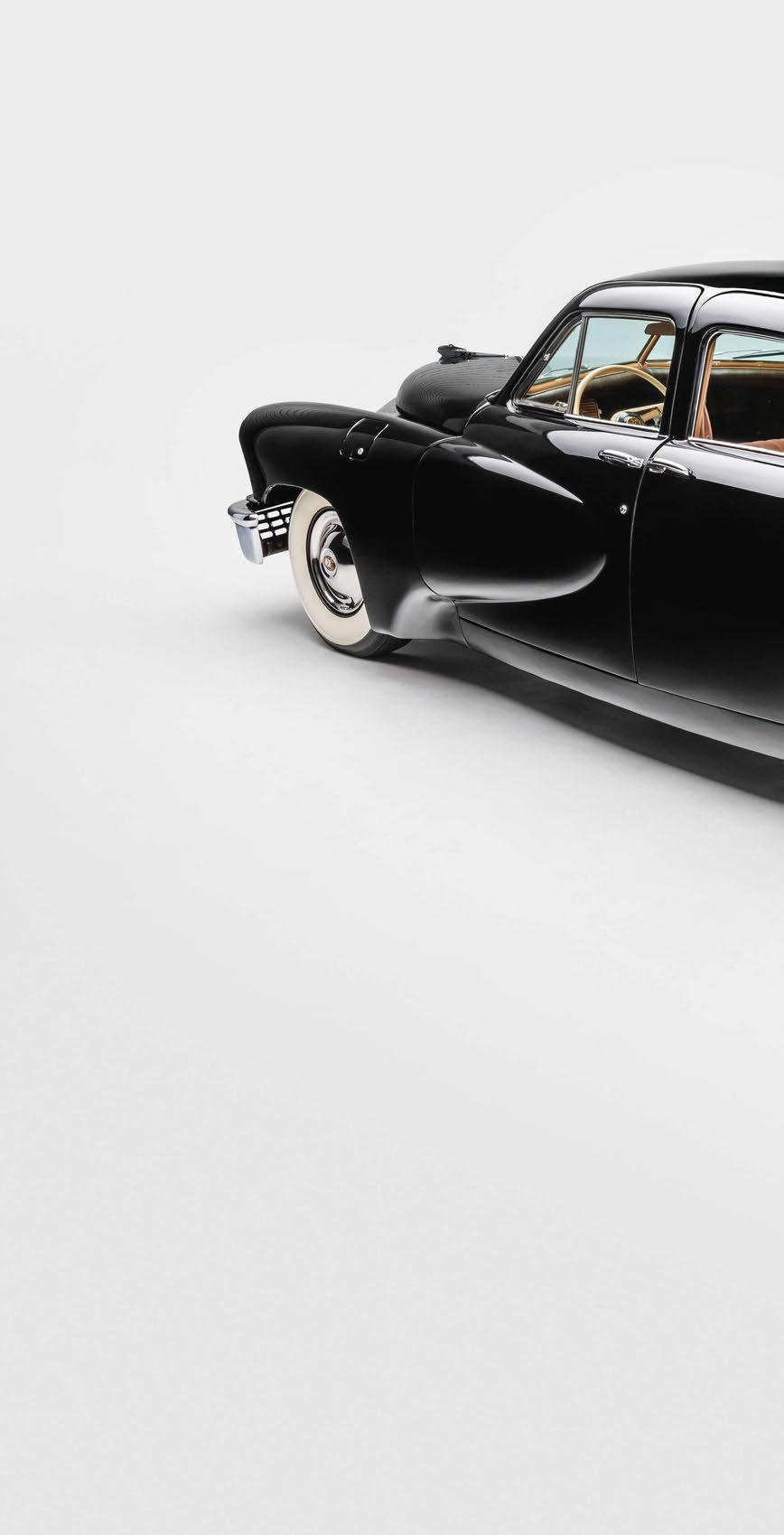
influenced by Raymond Loewy’s sensational work for Studebaker, whose 1947 Commander introduced America to European sensibility.
The Tucker proposition was founded on innovation or, at least, the promise of it: springless suspension, side-impact protection and other safety features including a pop-out laminated windscreen. The weird cyclopean headlight turned with the steering, illuminating the path only after you had actually changed direction. Not included in plausible safety features were the outrageous engine, transmission and the truly weird behaviour they forced upon the car.
Possibly inspired by Hans Ledwinka and Dr FA Porsche (then again, possibly not), Tucker’s general arrangement required a huge, rearmounted engine of 589ci, or 9.7 litres in the European tongue.
The first car had no reverse gear because there was no time to engineer the ingenious direct-drive torque converters on the rear wheels. This was bad publicity. So was the comment of a leading journalist of the day, who said that the tail-heavy Tucker handled like Grant’s Tomb, referring to the enormous stone mausoleum of General Ulysses S Grant in Morningside Heights. To cure lethal oversteer, two inches were added
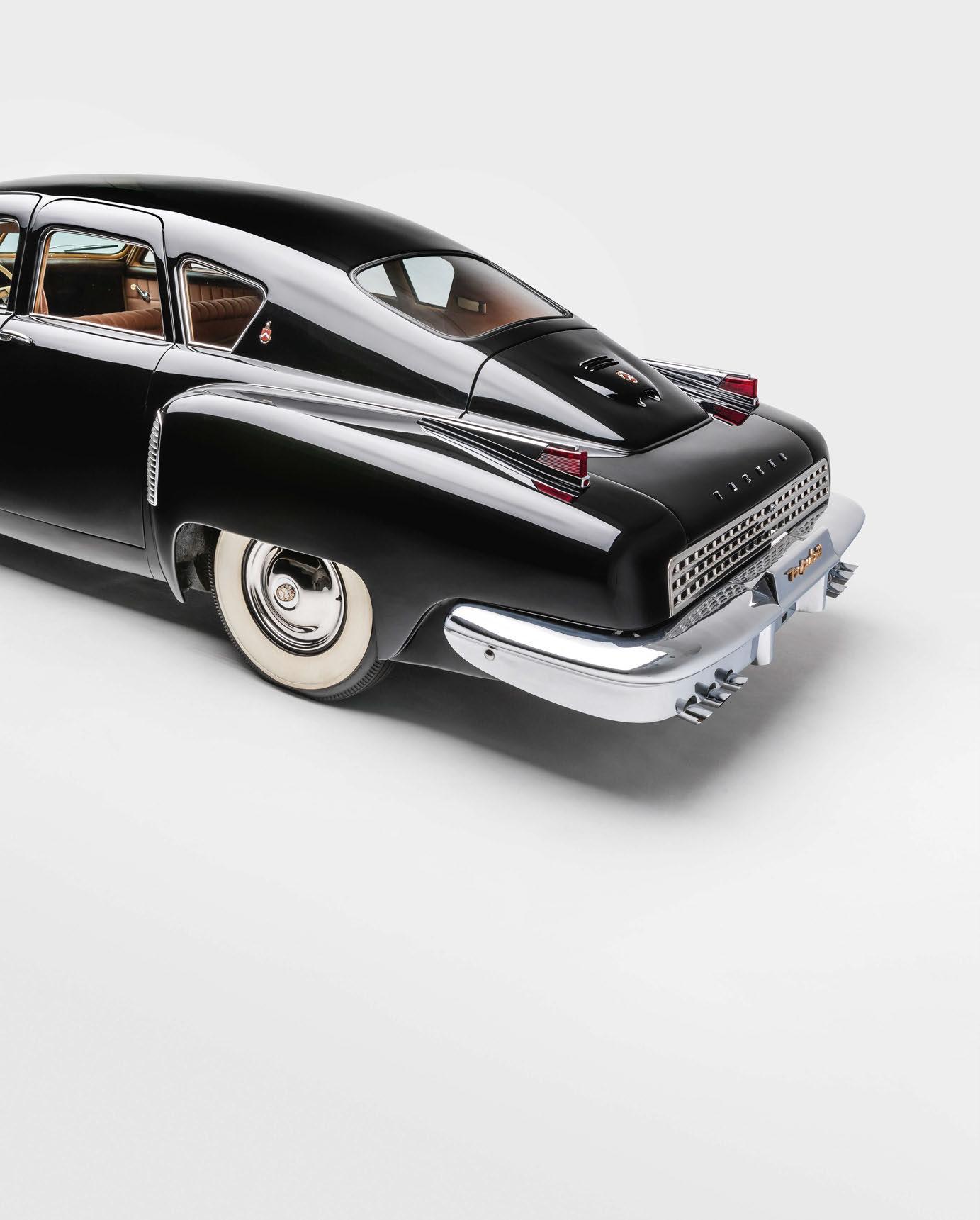
to the wheelbase; my guess is that made the problem worse by enhancing the pendulum effect. It turned out that Torpedo reality was by no means as positive as Tucker’s delirious predictions.
The hilarious 9.7-litre flat-six with hemispherical combustion chambers was developed with the assistance of Ben Parsons, owner of the Fuelcharger Corporation. It was designed to idle at 100rpm and, at a 60mph cruise, would be turning over at just one thousand revs. The valves were operated by hydraulic pressure, not a camshaft. Alas, the oil pressure necessary to actuate them could not be achieved at idling speed. This was a serious fault.
Only six of these peculiar engines were built, the majority of cars being hurriedly fitted with a Franklin flat-six motor used in the Bell 47, the classic Whirlybird and first civilian helicopter. Bizarrely, Tucker’s men re-engineered this from air- to water-cooling, requiring massive expense of dollars, hours and expertise for no obvious advantage.
In the feverish environment of post-war speculation and opportunism, the Government put start-ups like Tucker under special scrutiny because there had been serial examples of fraud elsewhere in the industry.
1948 Tucker 48
Engine Rear-mounted 5473cc Franklin OHV flat-six Power 166bhp @ 3200rpm Torque 372lb ft @ 2000rpm
Transmission Four-speed pre-select manual, rear-wheel drive Steering Worm and peg
Suspension Front and rear: rubber torsion tubes, hydraulic dampers Brakes Drums Weight 1905kg Top speed 120mph (claimed) 0-60mph 9.9sec (claimed)
Accordingly, the SEC took exception to a Tucker sales promotion at least as innovative as the Torpedo’s weird specification. The so-called ‘Accessories Programme’ offered customers who bought, say, a radio in advance the opportunity to jump the queue at busy dealers.
Then came a compromised launch when, after the hoopla of a factory tour, a band had to play to smother the noise of an engine that could not be turned off. That plus bad reviews and the whiff of fraud combined to torpedo the Torpedo.
Already crippled by debt, 2000 dealers who had been recruited as investors in what was a pioneer IPO were grumbling about getting their $15m back. Some 60,000 cars a year were promised; 50 were made (51 if you count the prototype). This was a sorry figure since Tucker had acquired from the War Assets Administration the world’s biggest factory, the Dodge Engine Plant in Chicago, but it was never used: the cars were assembled – some would say ‘bodged’ – by hand in a small garage nearby.
When someone complained that cars were using parts scavenged from other manufacturers’ parts bins, Alex Tremulis stepped up and explained that this was industry practice. Not untrue. But suspicions were advancing and a Grand Jury investigation was begun in February 1949. Tucker was indicted for fraud yet found not guilty on 22 January 1950. But the business was ruined. And the Torpedo sank.
A hobbyist project? A high-concept homebuild? A bold vision? A scam? All of those things. A circus cavalcade of hype and failure? Clearly.
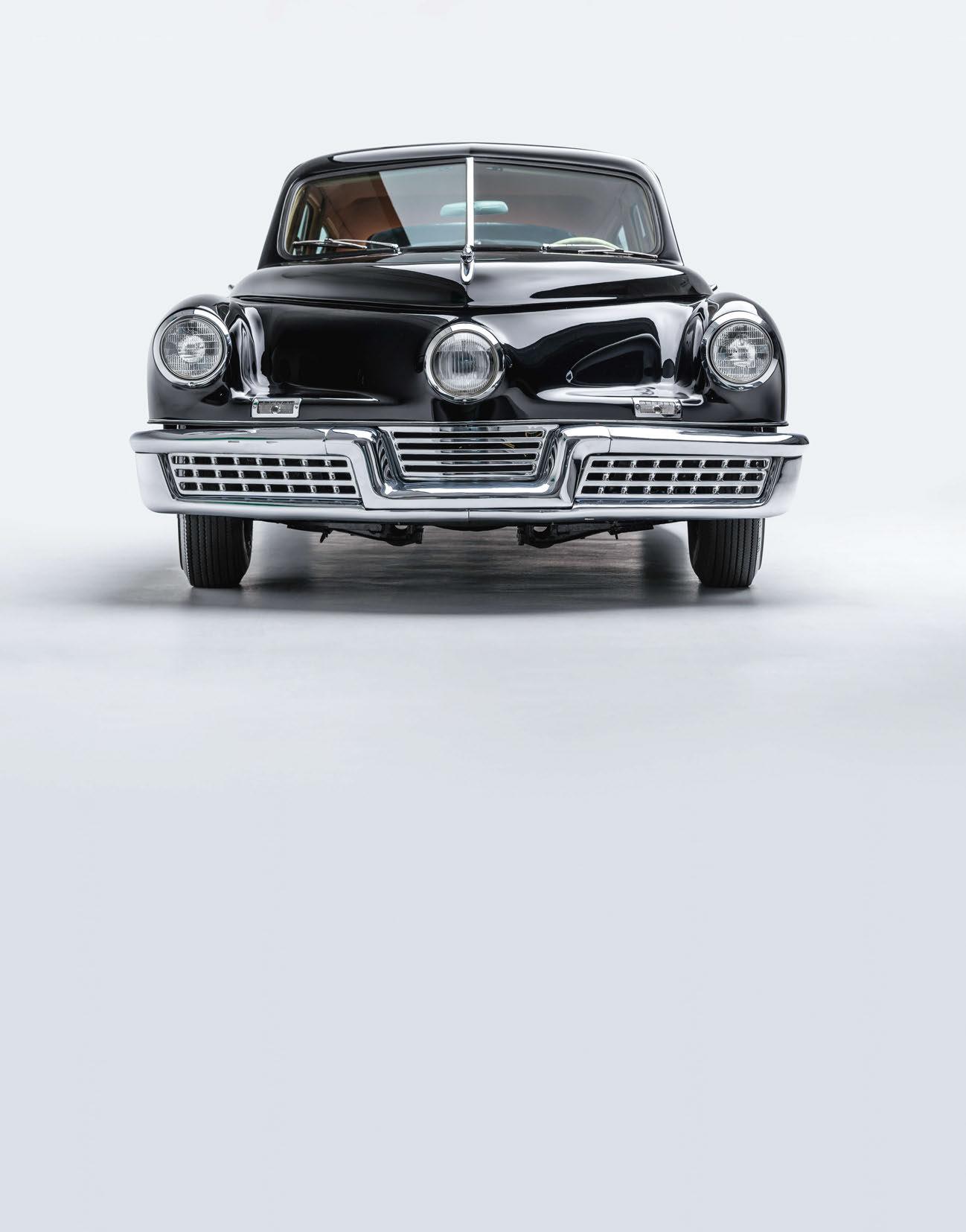
The Government maintained that Tucker never actually intended to manufacture the car. Was it a massive con? A sort of Ponzi? The Tucker Club of America has 400,000 drawings and documents describing the Torpedo’s development, which together say a collective ‘no’.
As consumer design it remains remarkable. Like the contemporary Cadillac, the Torpedo had token tail-fins, but they are attached to a body that is altogether more modern in stance and proportions. In its surfaces and sculpting, it is closer in spirit to Pininfarina’s Cisitalia than to a vast Detroit barge, although a vast Chicago barge it most certainly is.
The interior is agreeably spare, with all the instruments and slider controls clustered behind the steering wheel, in order to make the Torpedo’s ‘crash box’ – a prediction of deformable structures – more effective. Except that the expectation was that driver and passenger should leap into the void when they saw an accident coming. At the rear, six exhaust pipes are impressively aligned like a military battery, while above, a car-wide chromed and perforated panel suggests the hand and eye of an experienced product designer who could have found work in the Milan of the 1950s.
The Torpedo is a demented fever-dream of Americana made solid. It is crass, glorious and not quite believable. Preston Tucker’s reach exceeded his grasp – but what else is Heaven for?
THANKS TO Petersen Automotive Museum, petersen.org.
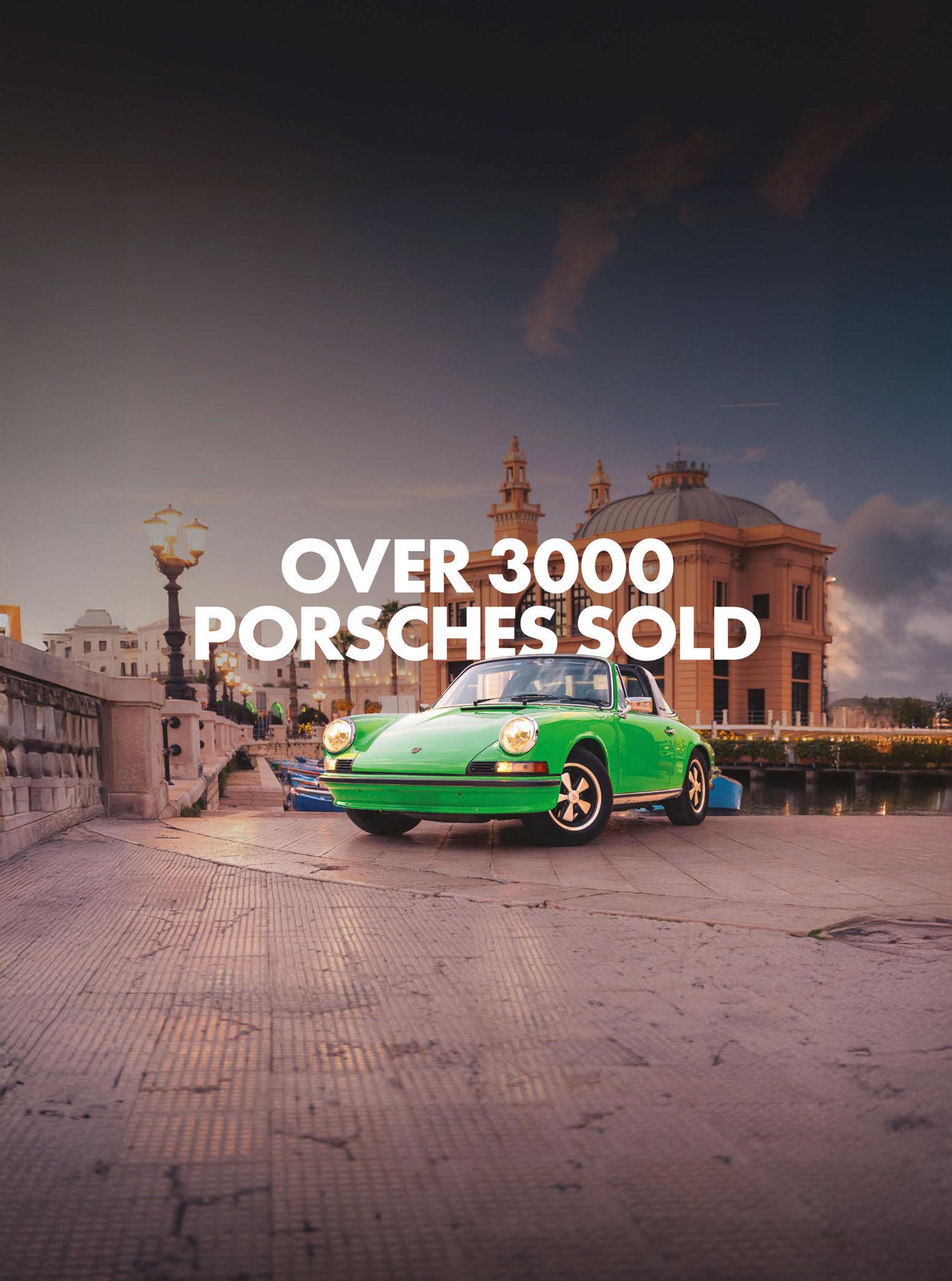
German tuner Willy König found his Ferrari 308 a little underwhelming, so he doubled its power and created a 1980s icon

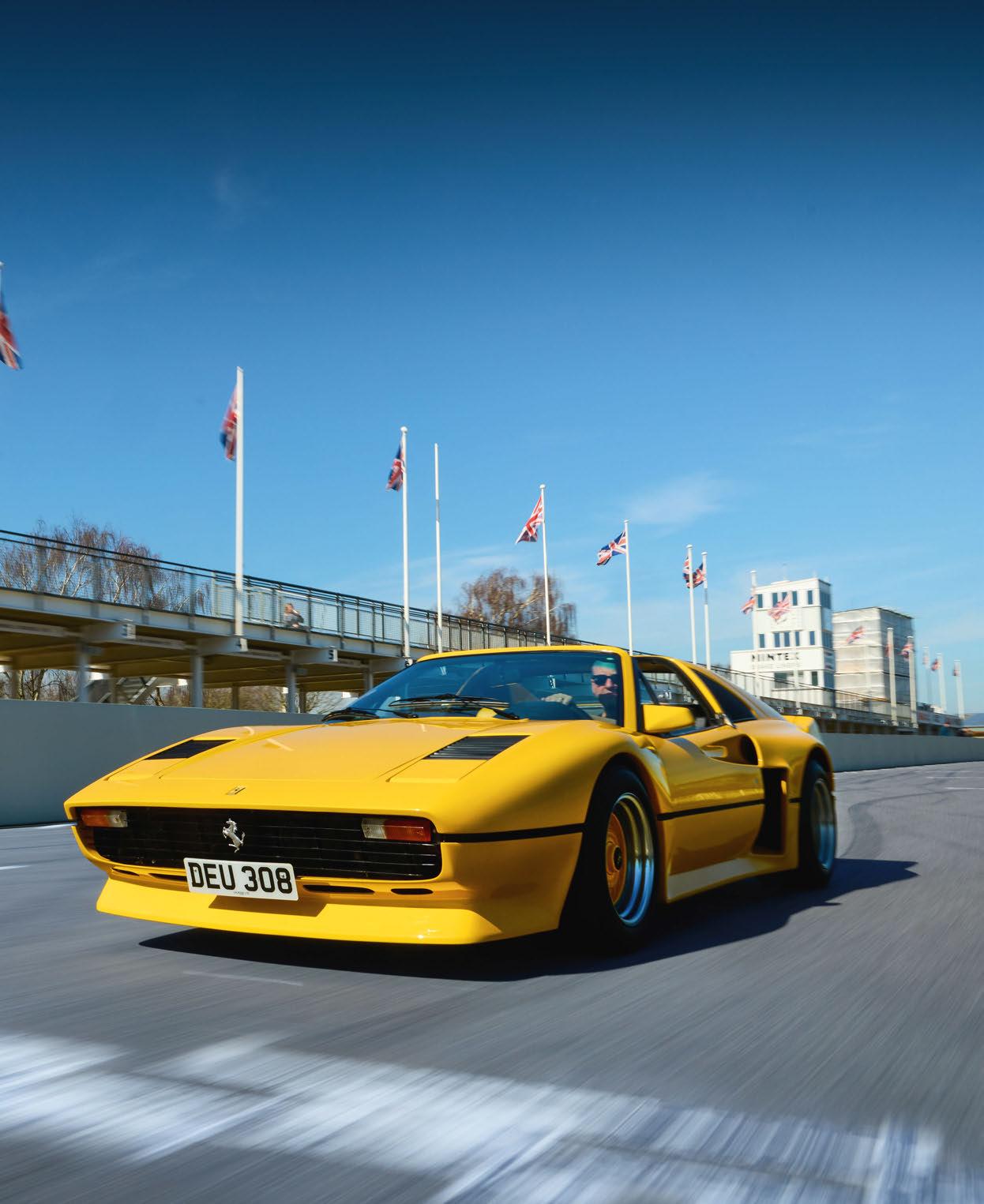
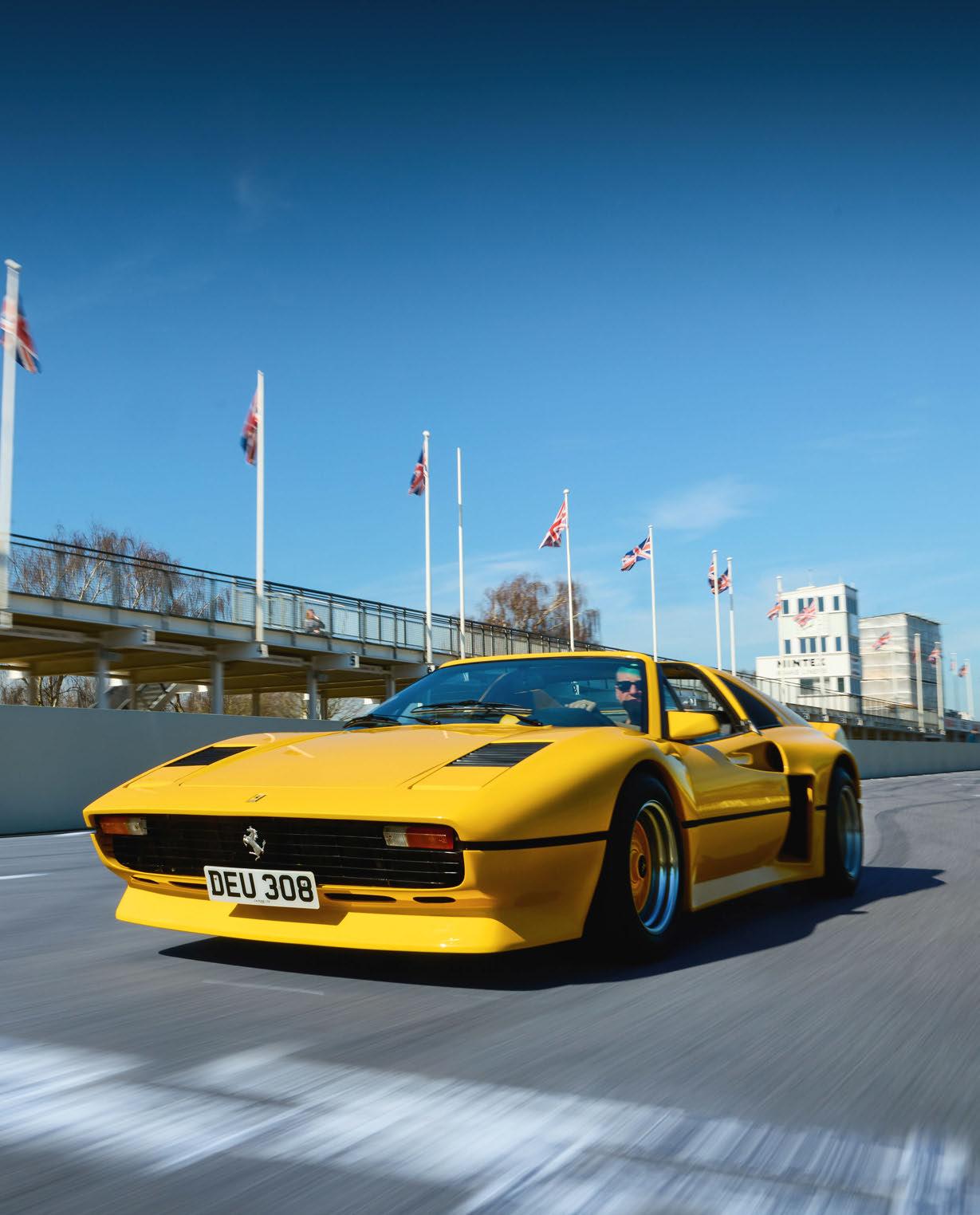
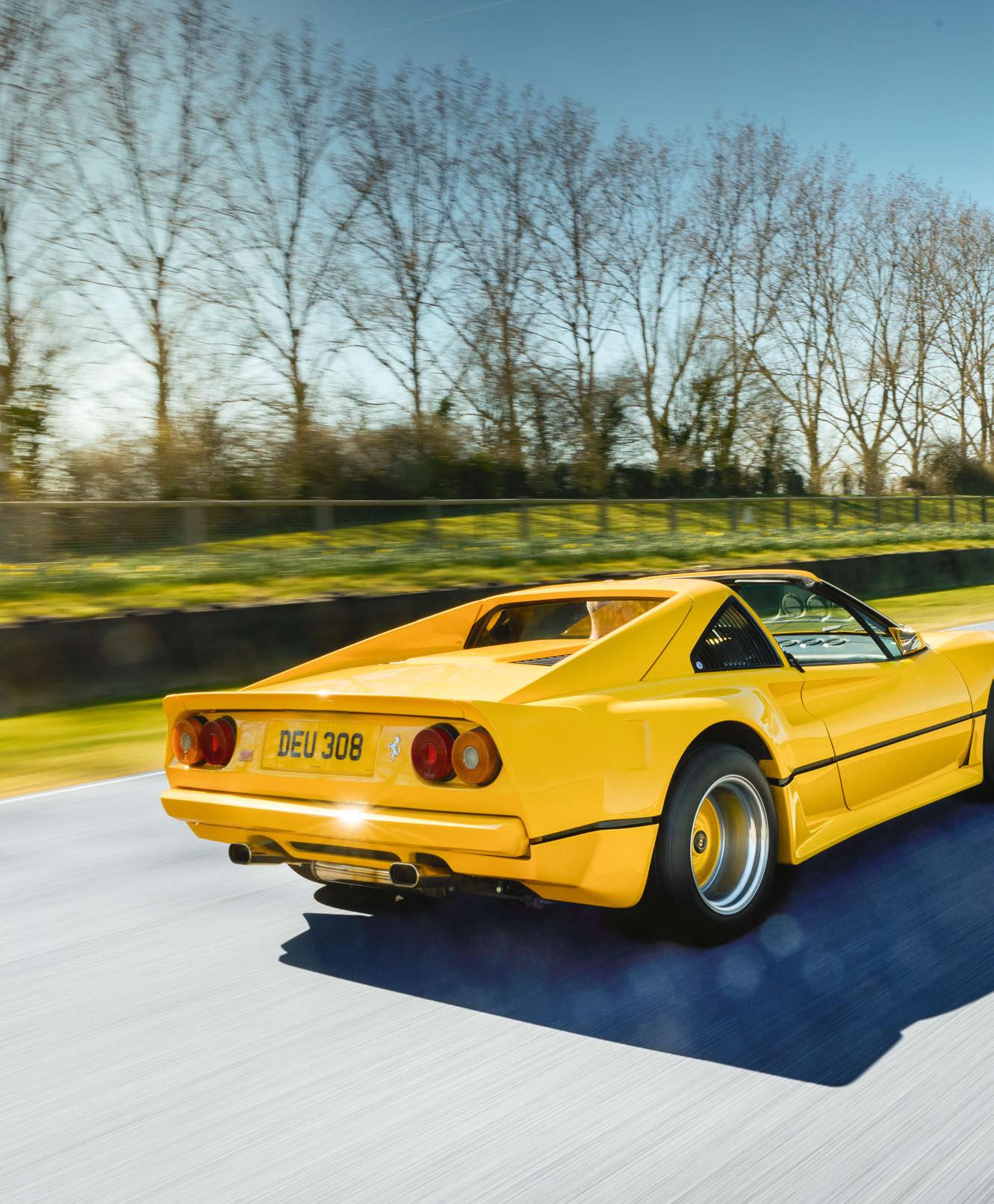

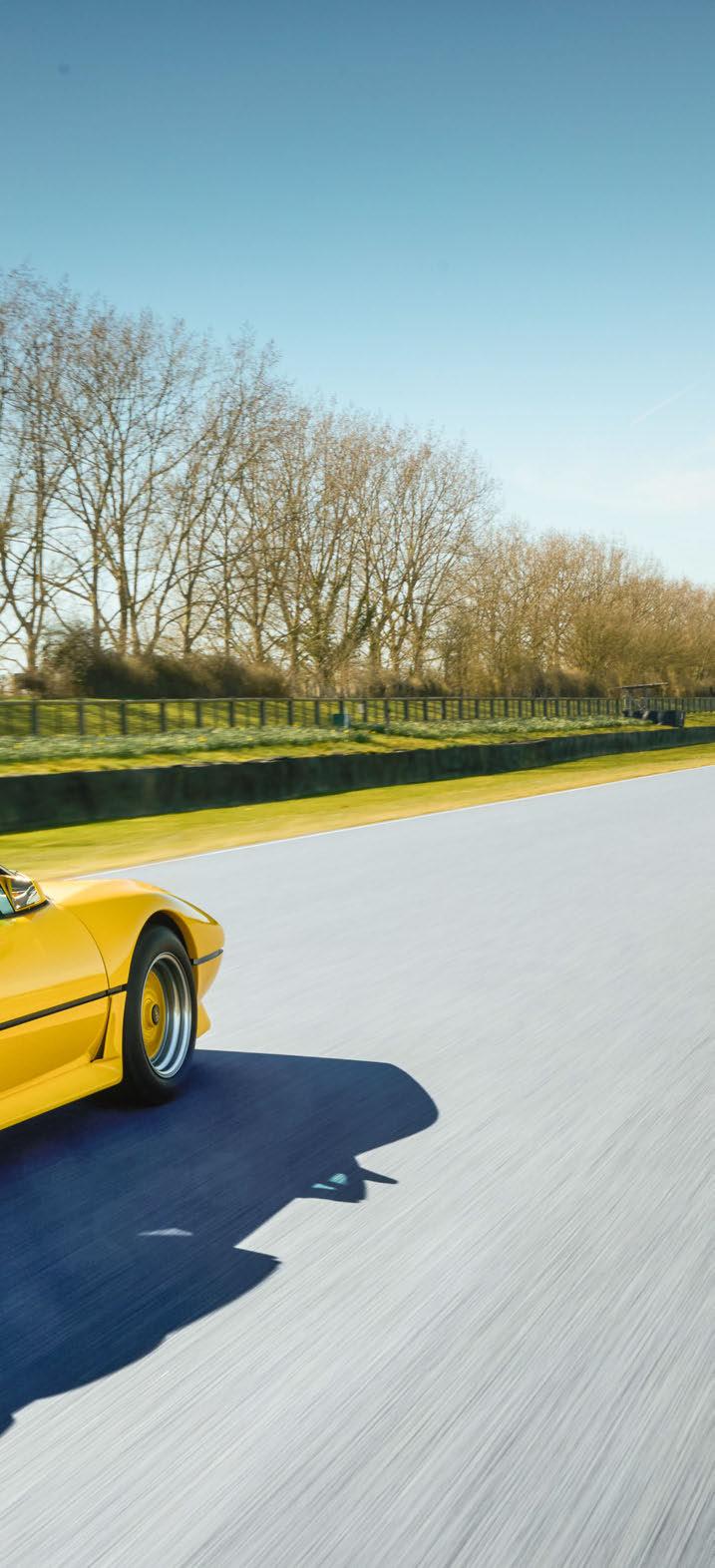
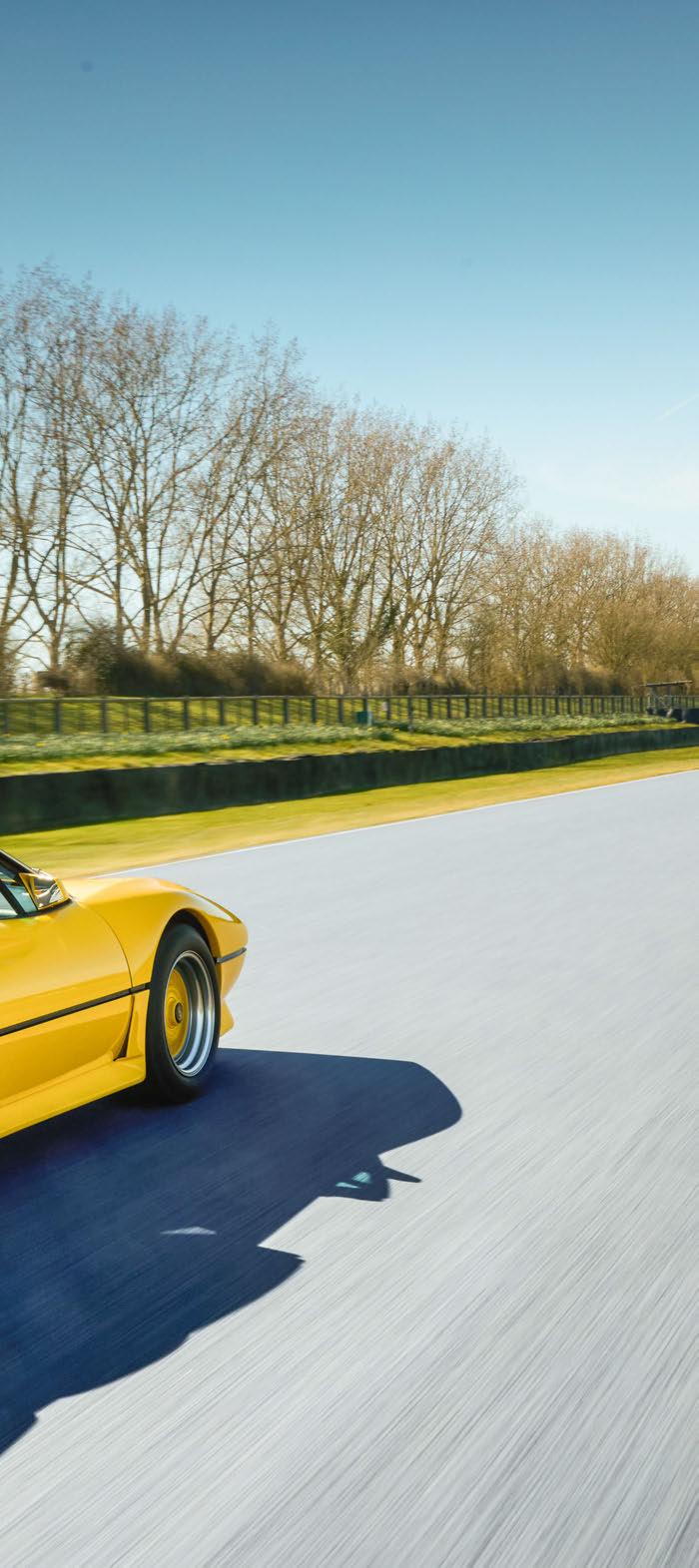
It takes a certain confidence to challenge genius. Francesco del Giocondo, aka Mr Mona Lisa, may have been sublimely wealthy, but there’s no record of him asking Leonardo da Vinci to level up the horizons of his wife’s portrait. Pope Julius II did not urge Michelangelo to hurry up with his painting of the Sistine Chapel ceiling, and nor are there any royal edits in the margins of Shakespeare’s plays. All of which leaves Emperor Joseph II, ruler of territories that stretched from the Netherlands to Hungary, as something of an outlier. He famously had the audacity to criticise Mozart for writing ‘too many notes’ in an operatic masterpiece.
Then there’s German publishing magnate, Willy König, who had the temerity to think that Ferraris fresh from the production line were in need of serious improvement. But to view König merely as a tuner is to do him a disservice. He didn’t just tweak cars but oversaw their complete re-engineering. Turbos were fitted, intercoolers installed, chassis finetuned, suspensions lowered, aerodynamics sharpened, and tyres and rims widened. The results were instantly recognisable as Ferraris, yet distinctly different, as if a supermodel’s identical twin had started power-lifting –the same bone structure, just with muscular bulges.
König had a racer’s innate sense of where a car could be enhanced. From as young as 17 he was ‘borrowing’ his mother’s car to compete in airport races that hurtled down long runways. In 1962, driving a Ferrari 250GT SWB Berlinetta, he won the Deutsche Bergmeisterschaft (German Hillclimbing Championship), leading to a personal invitation from Enzo Ferrari to join other victorious Ferrari drivers in Maranello.
But while König may have had respect for Enzo, that didn’t extend to reverence. When, in 1974, he took delivery of the first 365BB delivered to Germany, König had no qualms about swapping out body panels for lightweight alternatives and fitting a modified 512 engine, which boosted power to 450bhp. ‘He saw a new model and immediately knew what he would like to change,’ his son Oliver tells me. König wasn’t a mechanic, yet he knew how to select the best people for the job, and then ‘kept testing and adjusting until a new product met his high demands’.
König’s dream team included aerodynamicist Vittorio Strosek, who went on to work wonders with Porsches, while his chief engineer was turbo specialist Franz Albert, who famously fitted twin turbochargers to a pair of ‘underpowered’ Lamborghini Countach V12s.
With 450bhp on tap, König’s mid-engined 365BB was blisteringly fast. More importantly, it marked the start of Koenig-Specials, as König pivoted his successful publishing career to establish a tuning business, dropping the umlaut in his name for international audiences.
Ferraris were the first cars up on the ramps in his workshop, before customers – ‘rock stars, state leaders/dictators, pop stars, top managers, company owners, criminals… but we don’t mention names’ says Oliver – started asking for similar treatments for a steady stream of Lamborghini, Jaguar and Porsche exotica.
Having described the factory 365BB as ‘not a real sports car’ (very few cars south of the F40 met his definition of a real sports car), König had dismissed the 308 as a ‘little Ferrari’ for those who could not afford the 512. ‘He didn’t take the 308 too seriously, but he saw potential,’ recalls Oliver. ‘And he really enjoyed the many laps at the old Nürburgring after he turned it into a real sports car by creating the turbo version.’
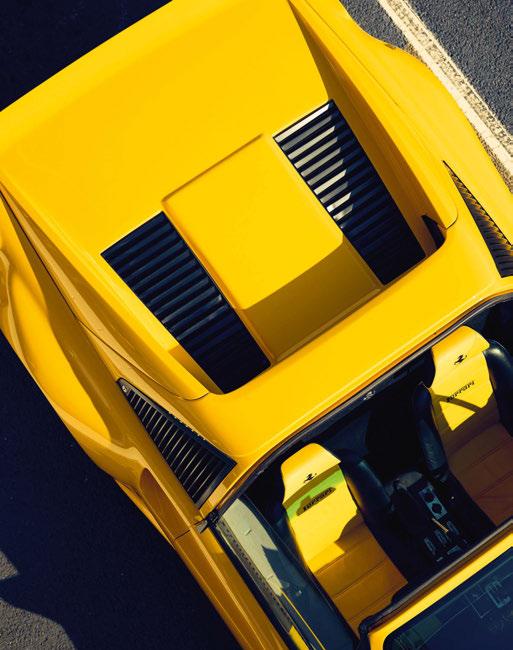
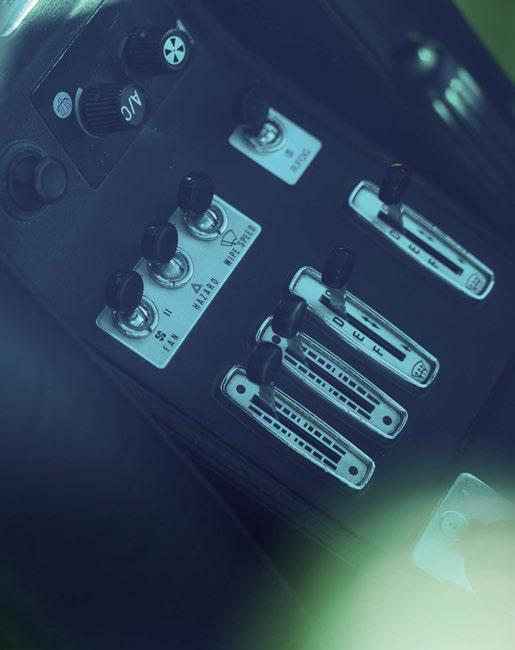
Clockwise, from left
From above you can really see how wide Strosek’s ’arches are; stock controls; rumour has it Ferrari tried to get Koenig debadged; familiar dash.
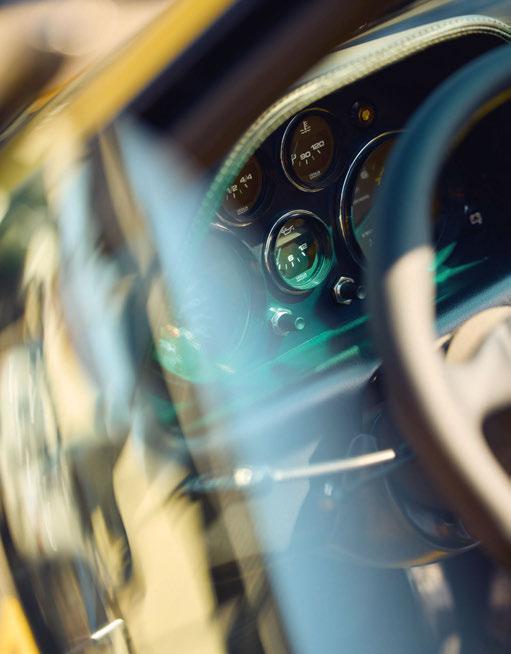
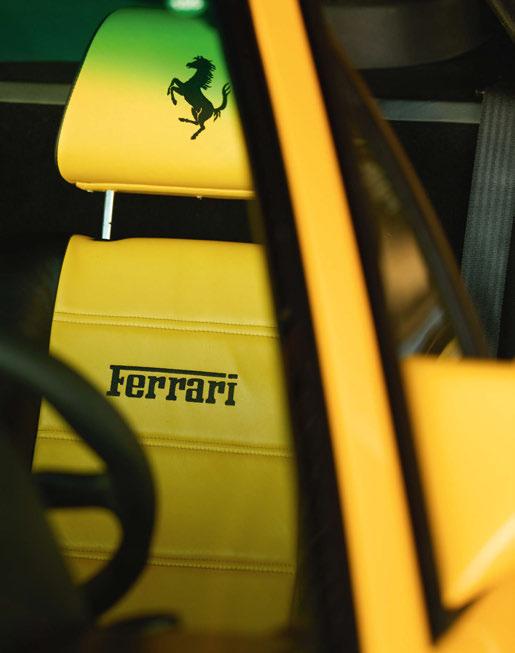
Happily, one of these ‘real sports cars’ is parked in the paddock at Goodwood. This Koenig-Specials 308 GTSi Bi-Turbo may have many qualities, but stealth isn’t one of them. Under König’s guidance the originally white 308 was repainted in retina-melting Ferrari Giallo Fly, and its exhaust note crashes like a piledriver into your solar plexus. A rare icon of its era, this outlandish 308 celebrates 1980s excess with Gordon Gekko glee, not so much ‘greed is good’ as speed is good. In a paddock of immaculate E-types and AC Cobras with impeccable racing pedigrees, it’s the yellow Ferrari that seizes the attention of selfie-seeking visitors. Posters of sensible cars never adorn bedroom walls.
A decade ago, however, this car could not even have driven its way out of a barn. Car restorer Jonathan Rose, of JAR, had been in Finland to inspect a Ferrari 355 on behalf of his client James Anderson when the vendor mentioned that there might be a rare 308 available, too. ‘It was a bloody wreck. It didn’t run, and without taking it apart there was no way of knowing how much it would cost to fix or whether it might need a complete engine rebuild,’ recalls Rose. ‘I told James it was a massive gamble but, if it paid off, he would have something unique.’
Koenig 308s are few and far between and for good reason. König himself knew the value of his work and charged accordingly, which meant his tuning represented a far greater percentage of a 308’s acquisition price
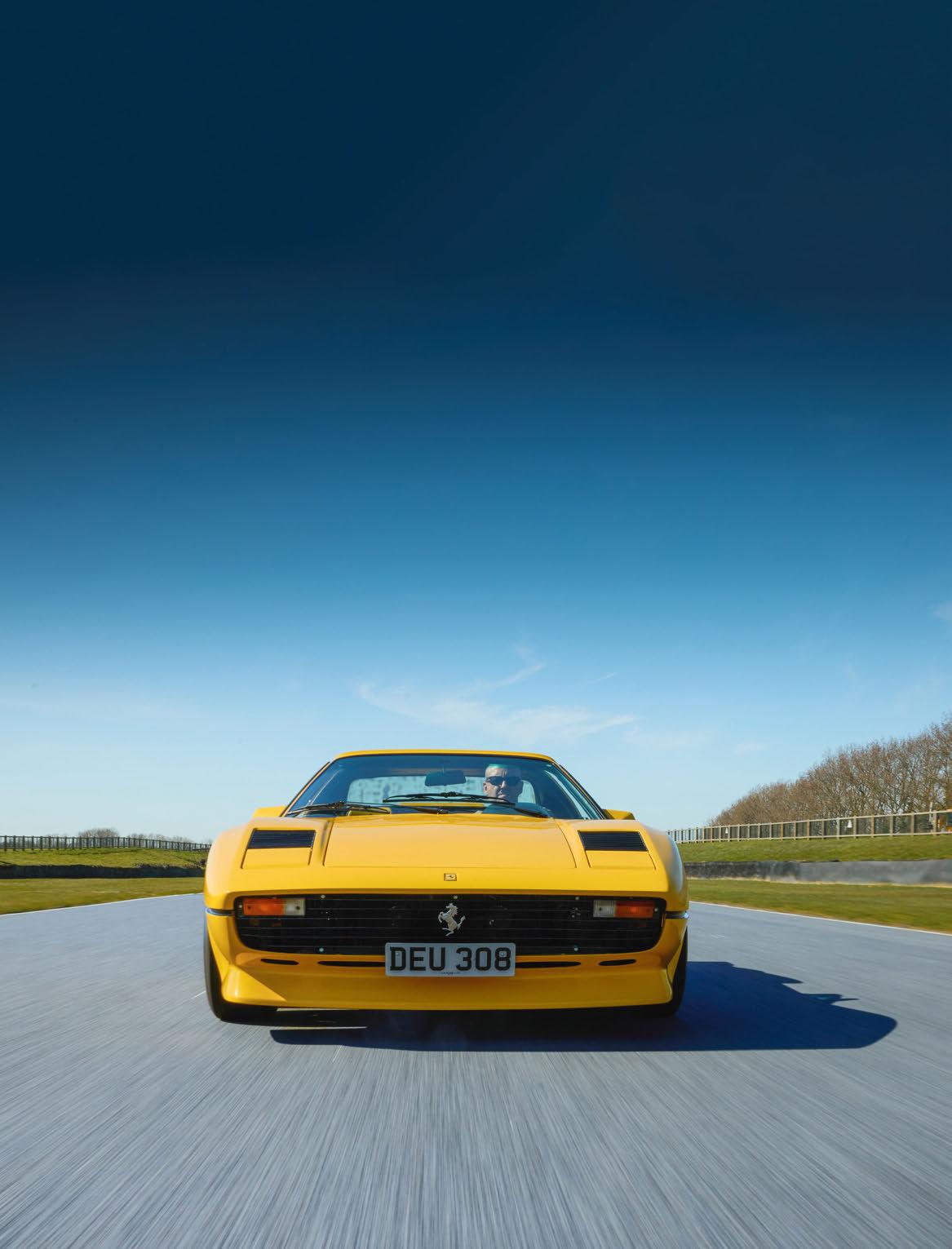
‘BY THE TIME THIS 308 ROARED OUT OF THE WORKSHOP, KÖNIG HAD ALMOST DOUBLED THE POWER’
than of a 512 or Testarossa. The original 1983 price list, in Deutschmarks, suggested DM1950 for the fender flares, DM1250 per new front wheel and a hundred more for each rear wheel, DM1400 for four sport springs, and DM29,500 for the turbo engine kit. Add in thousands more for uprated dampers, a new engine cooling system, enhanced clutch, wider tyres, plus a new rear wing, front spoiler and even DM790 for the new side mirrors, and the customer who commissioned this car could have bought two new Golf GTIs for the cost of the upgrades alone.
But the 308 was also the ideal car to tune: light, nimble, and in König’s eyes woefully underpowered, despite its fuel-injected V8 Quattrovalvole engine and a top speed of 158mph. His solution was to fit a turbocharger.
The ‘Bi-Turbo’ badging actually references the two bypass valves that draw exhaust gases through a pair of inlets, one from each bank of cylinders. By the time this 308 roared out of the Koenig-Specials Munich workshop, the tuner had almost doubled the original 308’s power output from about 240 to 400bhp and increased its top speed to 177mph, triggering a domino effect throughout the car.
Koenig changed the suspension set-up with uprated sport springs and Koni dampers, fitted AP racing calipers and discs to the front brakes, installed a new engine oil-cooler system, and replaced the 308’s engine cover. Wider BBS three-piece wheels were shod in grippy Michelin 18/60 racing tyres at the front and 26/61s at the back.
Leonardo Fioravanti’s low-slung, curvaceous design was then subjected to Strosek’s flamboyant plastic surgery to lower drag and boost downforce. New glassfibre wings featured extra-wide wheelarches, as well as an intake behind the driver’s door (but not on the passenger side) to channel air to the intercooler: asymmetric function trumps form in the pursuit of speed. Unfortunately, Finnish winters and cowboy mechanics had reduced this thoroughbred to a mule by the time JAR came to work on it. A Garrett turbocharger the size of a dustbin lid had replaced the original aviationquality Rajay unit fitted by Koenig, eating into the luggage area to an
1984 Ferrari 308GTSi
Bi-Turbo Koenig-Specials
Engine 2927cc rear/midmounted 32-valve V8, DOHC per bank, Bosch fuel injection, Rajay turbocharger
Power 400bhp @ 6400rpm
Torque 289lb ft @ 4500rpm
Transmission Five-speed manual, rear-wheel drive, limited-slip differential
Steering Rack and pinion
Suspension Front and rear: double wishbones, coil springs, telescopic dampers, anti-roll bar
Brakes Discs
Weight 1342kg
Top speed 177mph 0-60mph 5.7sec
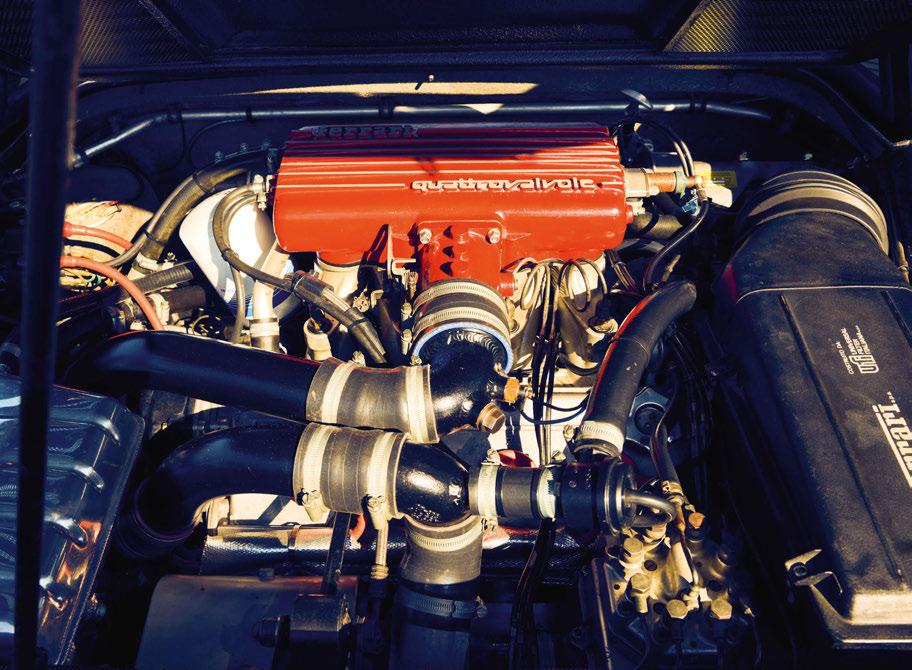

Left and above
It’s called a Bi-Turbo, but has only one Rajay, the ‘Bi’ referring to the two bypass valves; the Koenig-Specials car is loud in both colour and decibels, and is fast, cornering spirit-level flat at Goodwood.
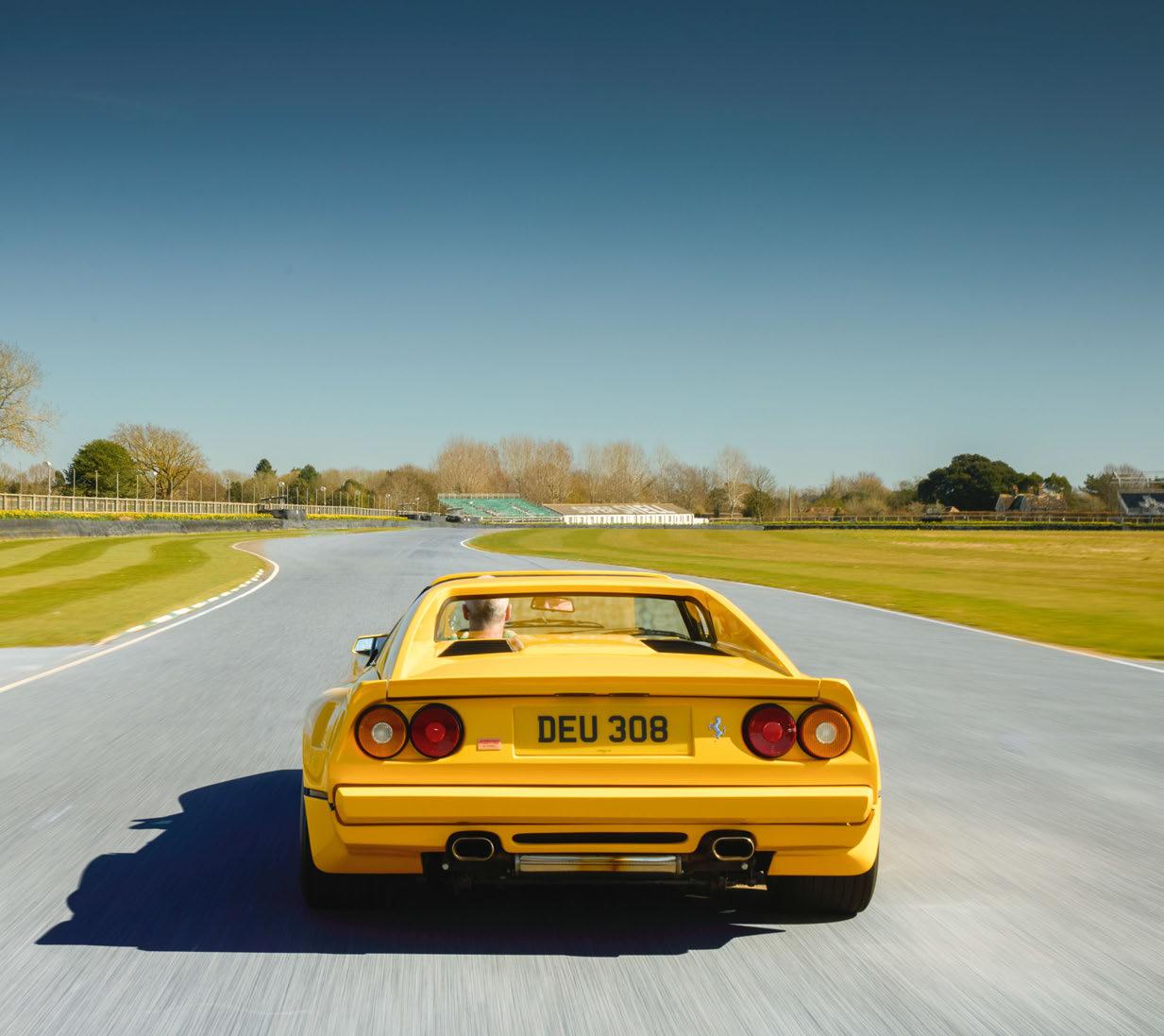
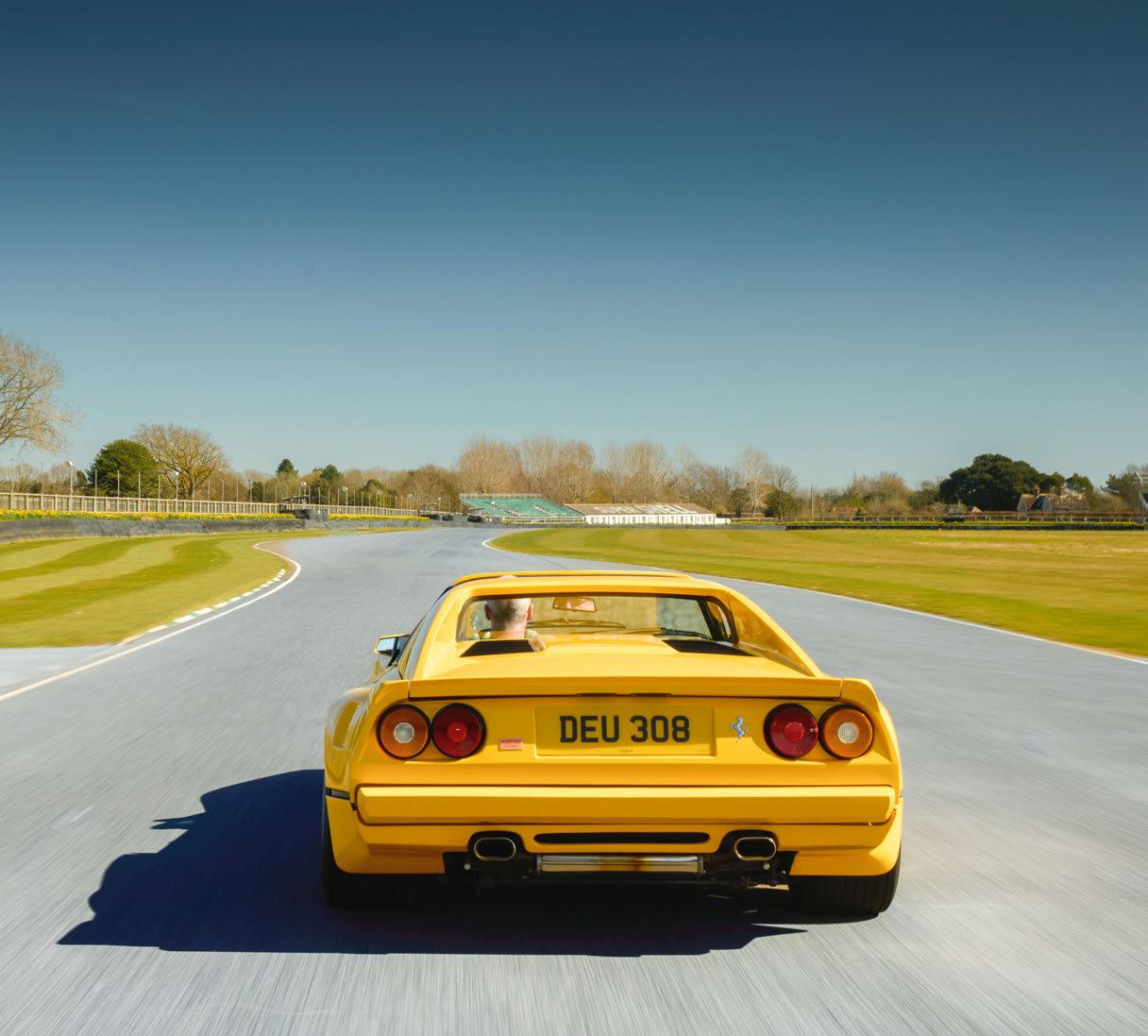
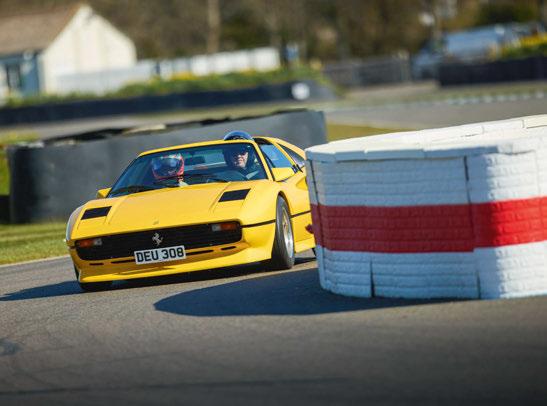

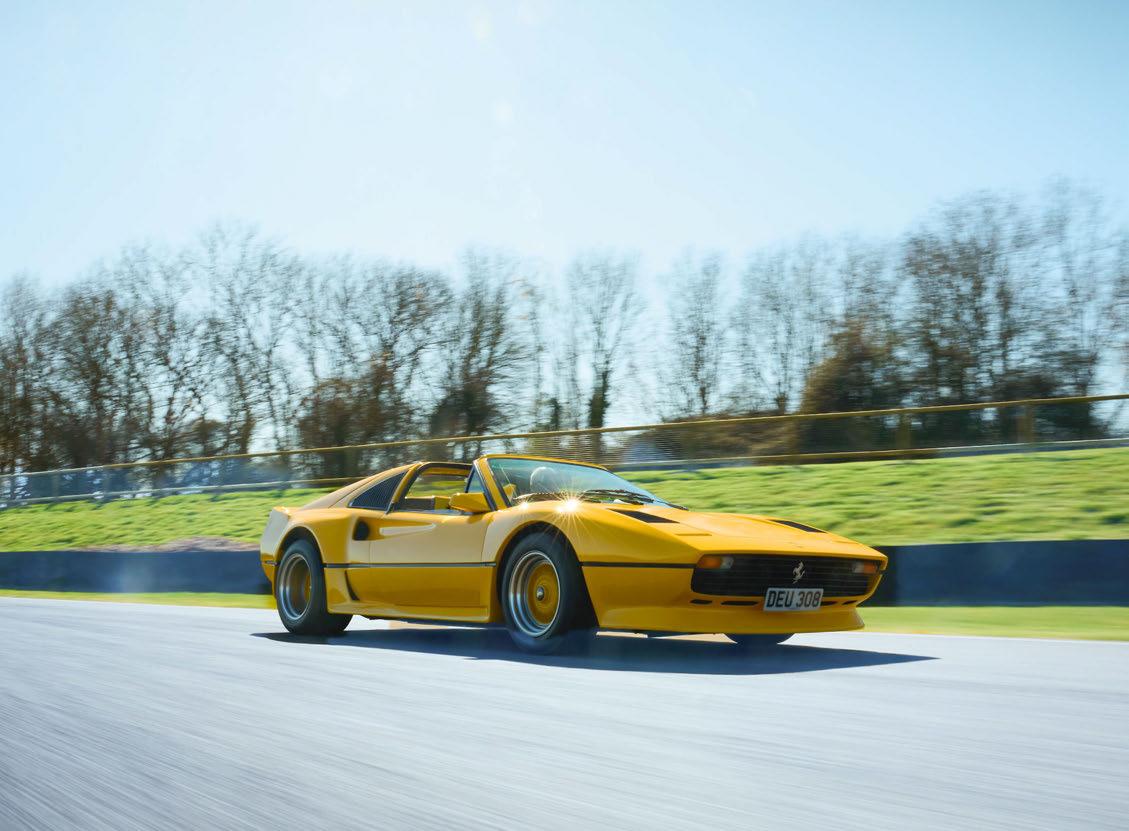
extent that would challenge even a seasoned budget airline traveller.
‘Fortunately, when the car first arrived in our workshop, the original Rajay turbo was lying in the luggage compartment, with what appeared to be the original Koenig-Specials intake manifold pipes,’ says Rose. His engineer, Ben Nankivell, set to work on the turbo plumbing, before repairing and servicing the ignition and the fuel-injection systems.
Returning the car to its fighting condition was far from straightforward, with no official manuals or blueprints. Scouring the internet for photos and information, and fabricating unobtainable parts through reverseengineering, the restoration team gradually reconditioned the car’s mechanics without stripping the engine or transmission.
They decided not to reinstall the water-injection system, and instead to keep the turbo pressure below 0.8 bar, which would still deliver somewhere between 320 and 350bhp, down on the original but still a mighty uplift over standard. It’s a tad lighter, too, with the glassfibre bodywork helping it tip the scales at just 1342kg.
Talking of the standard car, Anderson has one in his stable, and describes the difference between the two as the chasm between a sports car and a racing car. ‘The Koenig-Specials is more purposeful,’ he says. ‘It’s got more power, more guts, and feels more thrilling than the 308.’
Driving away from the track and onto winding Sussex roads, I find the car a little unwieldy at low speeds, perhaps due to its fat tyres and the steering’s lack of power-assistance, but as it accelerates everything becomes sharper – deliciously so. Gearchanges are stiff but sure, grip is sensational, and were you to lay a spirit level across the dashboard the bubble would remain right in the centre, however severe the corner.
Koenig-Specials originally engineered the turbo to deliver power throughout the rev range, but Rose has tuned it to arrive at about
4000rpm, with the thump of a heavyweight – ironic, given internet gossip claims that Mike Tyson and Sylvester Stallone were both customers. Oliver König dismisses the rumours, although the star of Rocky and Rambo is known to have invited Willy König to Hollywood.
Leaving a roundabout I hit a dual carriageway, drop the dog-leg ’box into second and stamp on the accelerator, unleashing a cocktail of adrenaline and whiplash. Hard acceleration is utterly intoxicating.
Despite a recent paint-strip and the repair of misaligned panels by Kingswell Coachworks, owner Anderson refuses to preserve the immaculately resprayed Ferrari in aspic. The original Koenig-Specials sales brochure boasts that TÜV, Germany’s rigorous car testing body, had assessed all of König’s tuned cars and that they ‘passed the required hard 2000km tests at racing speeds, as well as all special tests without problem’.
Over the past nine years, in its various states of restoration, Anderson has driven thousands of miles in this 308, including a tour of the Scottish Highlands; now that he has finally returned it to its original condition, there’s much more driving to be done.
All of which leaves only one question. What did the master from Maranello think of his Munich protégé? The internet is awash with rumours that Ferrari tried to take legal action to force Koenig-Specials to remove all Ferrari badges from tuned cars, but there’s intrigue, too, that the Ferrari 288 GTO, which stole the show at the 1984 Geneva motor show and paved the way for the ground-breaking F40, owed its turbochargers and 400bhp to the cars tuned by König. Maybe you don’t need to be an emperor to influence genius.
THANKS TO James Anderson, Jonathan Rose of JARose, jarcarstorage.co.uk, and Goodwood Motor Circuit.

















Sign up today to experience the in-depth writing, stunning imagery and award winning design on the cars, people and stories that really matter





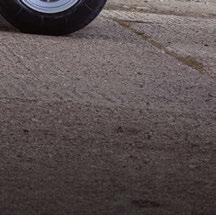

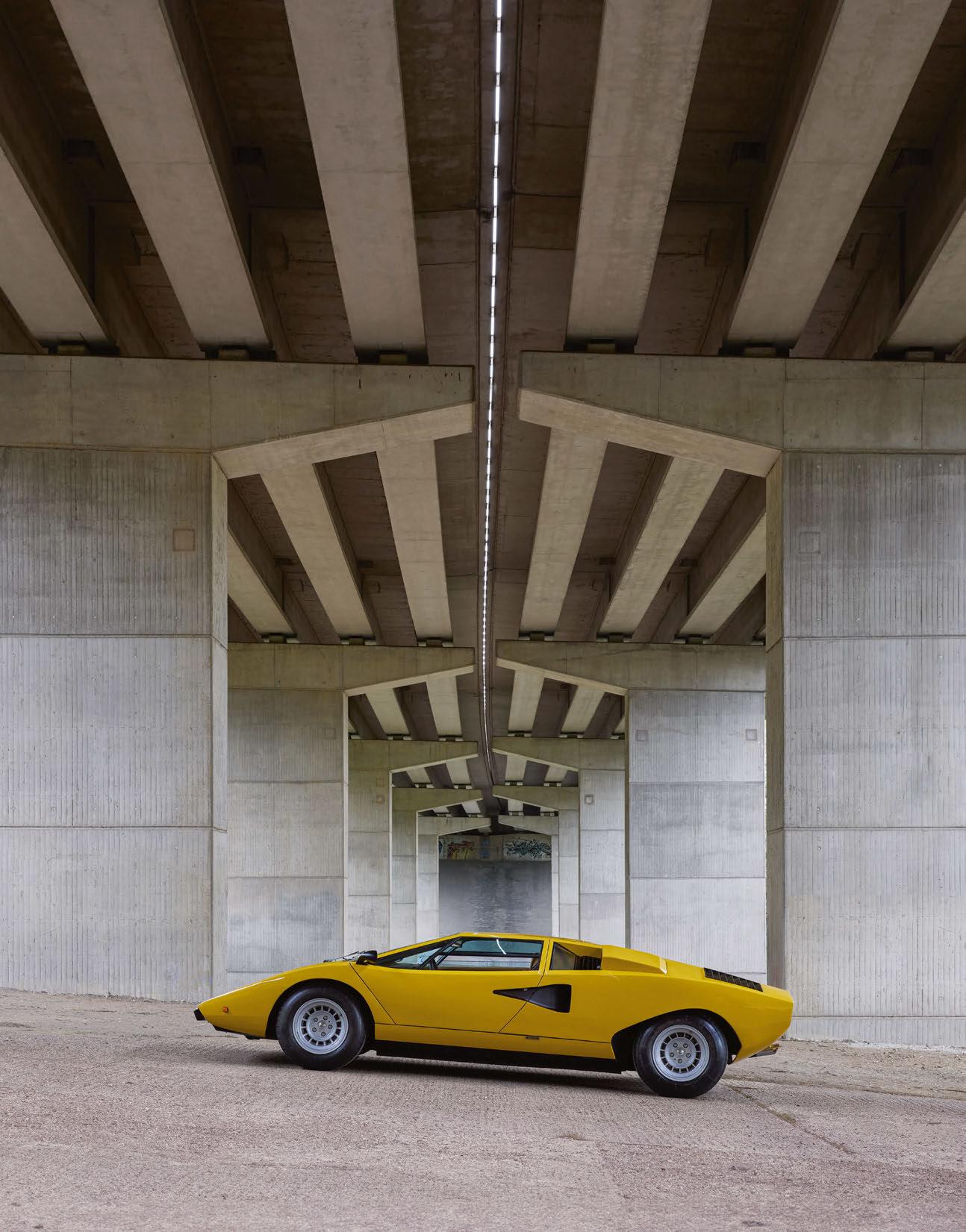
‘I LOVE CARS, and I love racing. I really look up to Stirling Moss, he’s my favourite racing driver.’ A sentiment shared by many an Octane reader, but perhaps not something you’d expect to hear from the average eightyear-old girl. It’s fair to say, however, that Alyssa is very far from the average eight-year-old, having recently pedalled her way into motorsport history by setting a new Goodwood lap record in an Austin J40.
Of course, a record attempt like this doesn’t exist in a vacuum; you don’t just turn up to a race circuit with a pedal car and hope they’ll let you out on track. No, there was a huge amount of preparation and build-up leading to this momentous occasion – and it all began with a letter, which feels like an appropriately traditional and Goodwood-ish approach to things.
‘This started when I was writing a Christmas letter to Goodwood,’ Alyssa explains. ‘My dad had told me about this charity, Mission Motorsport, and the amazing work they do, and I really wanted to help. I came up with lots of ideas of how I could use my pedal car to raise money for the charity, and Goodwood said that I could use the circuit for a record attempt.’
It really is a remarkable piece of creative thinking from a girl clearly wise well beyond her years, and the extent to which the West Sussex motorsport enthusiasts jumped on board was little short of remarkable, in particular with Goodwood’s Megan Cairns, Georgina Lilburn and Jon Scrivens really embracing the idea and making it happen. ‘I met the Duke of Richmond,’ says Alyssa, ‘and I really didn’t know what to expect but he was very kind and supportive.’ If there was any sign of being starstruck, plucky Alyssa didn’t show it – and before long she was being taken around the iconic circuit by none other than five-time Le Mans winner Derek Bell. ‘He showed me the racing line through St Mary’s and gave me lots of advice about endurance driving,’ she beams.
That last point is crucial, as this record attempt is no frivolous undertaking. To provide a little context, it’s worth opening up YouTube and typing in ‘Settrington Cup’; this has become a firm favourite at the Goodwood Revival in recent years, a race in which the young children of the grown-up drivers compete in their own event, a Le Mans start followed by a sprint down the start/finish straight in a swarm of Austin J40 pedal cars. But it’s one thing to pelt along a flat straight for 250m and quite another to tackle an undulating 3.8km circuit. This is something that would require substantial training, and the advice from someone of Bell’s stature was invaluable. Alyssa has competed in the Settrington Cup twice before, but this new challenge is in a whole other realm.
‘I have lots of people to look up to who are pushing themselves: racing drivers, my friends, my teachers,’ she says. ‘I’ve been practising by doing laps of the local park, which has some slopes and hills similar to the circuit here.’ The car is tip-top, too, as the artisans at Austin Pedal Cars have been fully involved in the process. Their condition report revealed that this J40 required a complete rebuild of the running gear – hubs, bearings,
THIS GIRL CAN
An altruistic dream and a display of incredible fortitude saw this eight-yearold and her pedal car set a new Goodwood lap record
Words and photography Daniel Bevis
Clockwise, from top Steely determination; the day was blistering hot; J40 at rest; heading towards St Mary’s; attaching the race numbers with her mother.


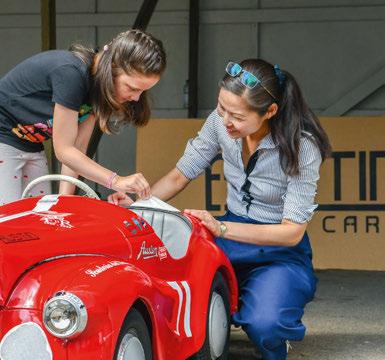
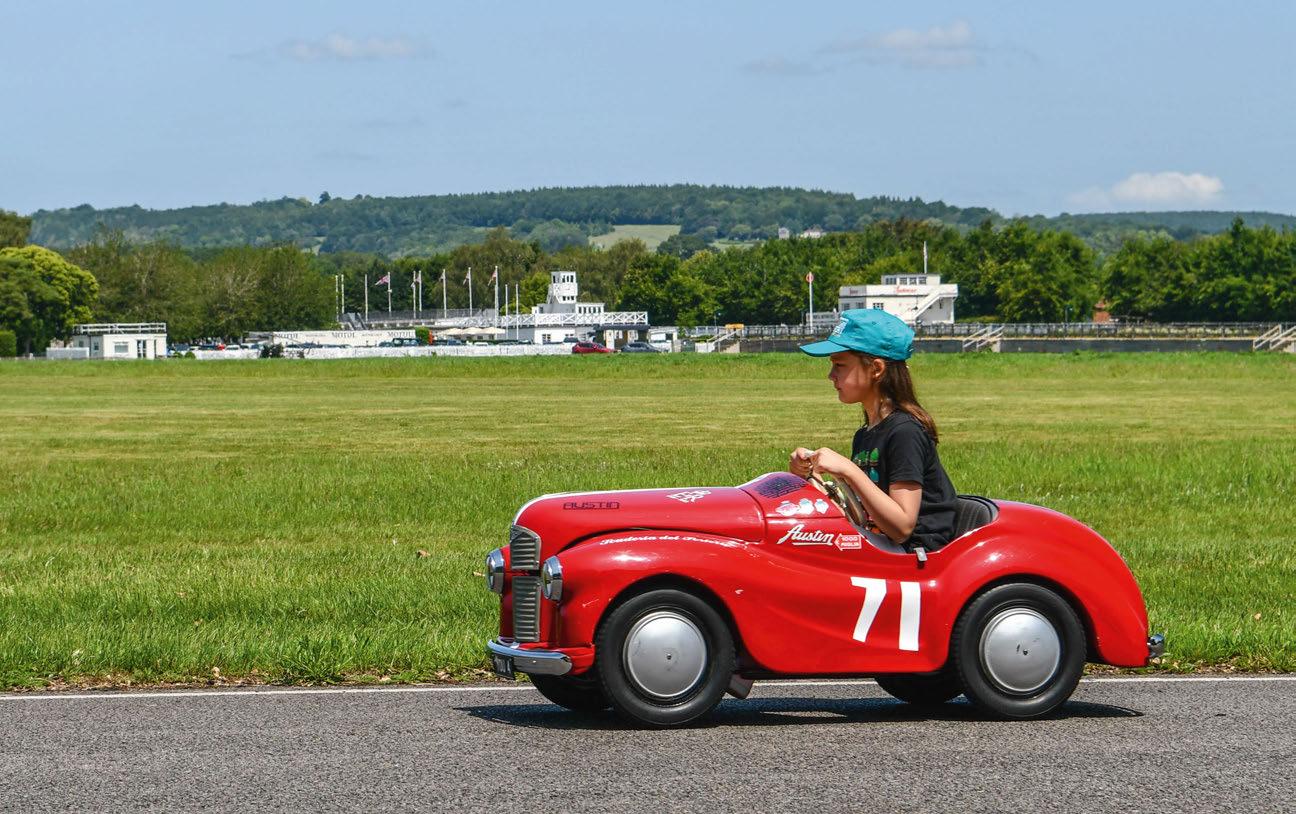
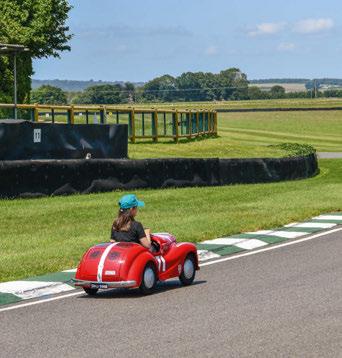
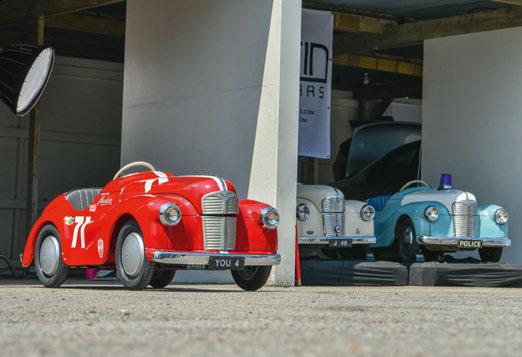
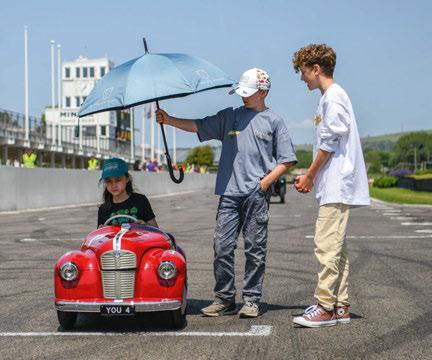
‘The team had to recalibrate expectations on finding out a record had already been set’

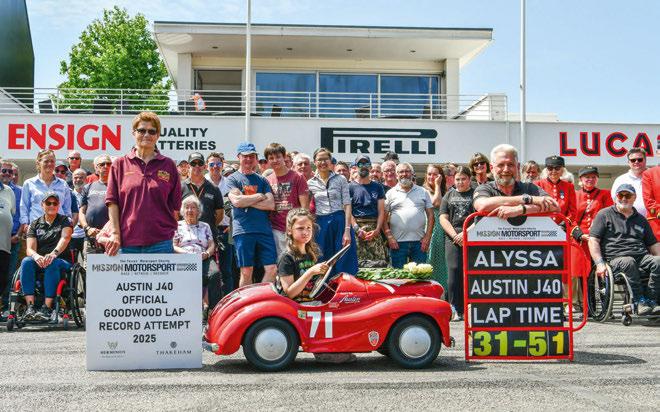
From top
To the victor the laurels; celebrating with her many loyal supporters, including Mission Motorsport’s James Cameron, behind pit board.
axles, kingpins, the lot. Before the rebuild it would barely freewheel, and Alyssa couldn’t carry any momentum up the gradients; it was incredibly hard work even to get going, let alone keep going on the inclines. Now, on the day of the record attempt, the refurbished car has arrived and the difference is palpable – the J40 set off as soon as she touched the pedals.
A crack squad of Austin Pedal Cars operatives was on site to deliver and unbox the car, and will run alongside as she tackles her own personal Everest. ‘I’m amazed how much easier it is to pedal,’ Alyssa says. ‘Before, if I stopped, it was really hard to get going again, but today I can just keep pedalling. It has made a big difference.’
Alyssa’s day begins with a hearty breakfast of avocado on toast while her dad, Graham, prepares their secret weapon: a home-made energy drink with lemon and ginger. There is a target in sight, too – the team has had to recalibrate expectations at the last moment after finding out that a lap record has actually been set, by a young chap in 2020. At 41 minutes, it was significantly quicker than the 50-plus minutes Alyssa had been aiming for. But she isn’t fazed by the new benchmark. Moments before we make our way to the start line, a flash of steely resolve glimmers across her eyes. ‘Oh, I’m excited,’ she smiles. ‘It’ll be hard, but I’ll give it my best.’
And wow, does she ever. With a dedicated running crew of lads to keep her hydrated in the 30°C heat, she sets out at a surprising lick, the Goodwood film crew ahead and support driver Mark Wrey following in his Alvis 12/50 Tourer. Quite frankly, her pace is incredible throughout. We expected struggles exiting St Mary’s (it’s a lot steeper than it looks on telly) and, unless you’ve driven (or pedalled) it, it’s hard to picture the relentlessness of the gradual slope up the Lavant straight. But Alyssa doesn’t flag, she doesn’t quaver, she keeps up a consistent and forthright pace all the way around. Indeed, she makes a mockery of my how-hard-can-it-be decision to follow on foot; I can barely keep up.
As Alyssa negotiates the chicane and powers through to the start/finish straight, a sizable crowd of supporters, veterans, well-wishers and Chelsea Pensioners assemble to cheer her home. ‘We nearly missed it,’ laughs Mission Motorsport CEO James Cameron, later. ‘We started to group people together and realised that she was approaching way faster than we’d expected!’ In a staggering display of focus and endurance, Alyssa flashes past the chequered flag to clock a new pedal-powered lap record time of 31min 51sec – a record that will surely stand for many years to come.
‘I won’t forget this in a hurry,’ she says, supremely unruffled, and looking for all the world like she wants to tackle a second lap for good measure. ‘It’s a memory that will last a lifetime. And hopefully we’ve raised a lot of money for Mission Motorsport.’ Donations continue to pour in…
Alyssa has already exceeded her £7600 target, but you can still make a donation here: www.justgiving.com/page/j40-goodwood-lap-record.
Get closer to the world’s greatest classic and performance cars with the all-new Octane app – redesigned for speed, style, and seamless reading. Enjoy enhanced features, exclusive digital content, and instant access to every issue, anywhere you go.
























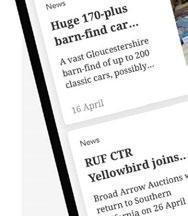


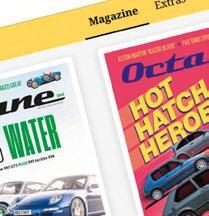
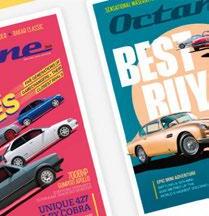




















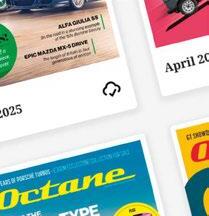





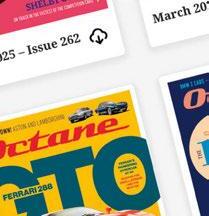
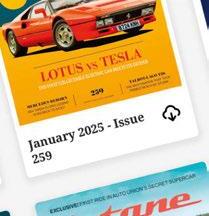
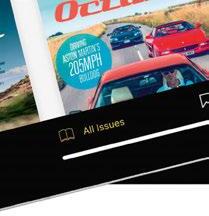

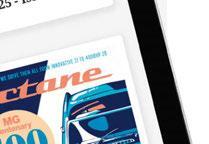
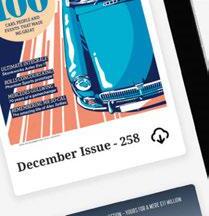






SUPER
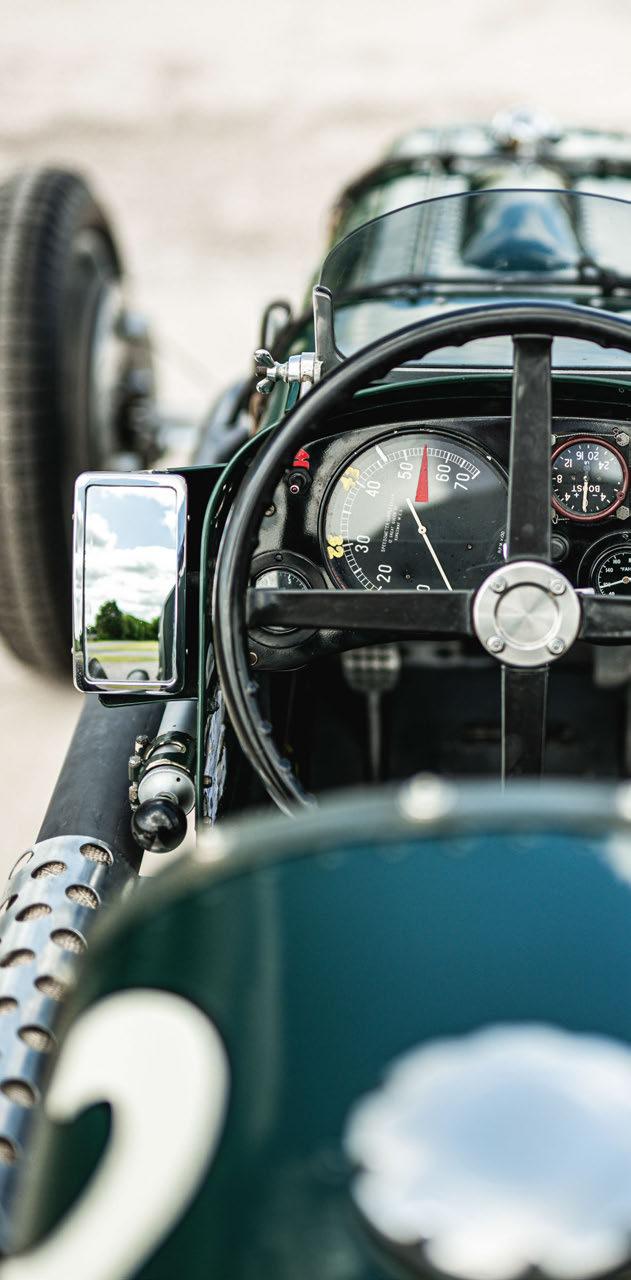
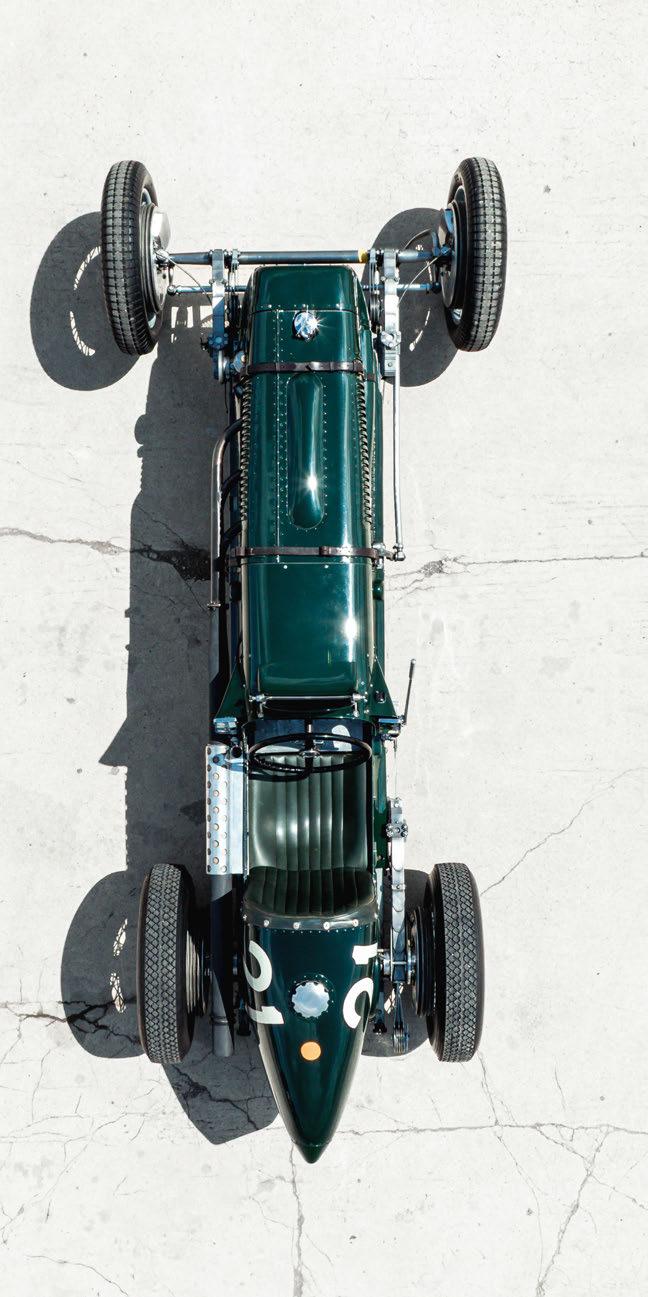
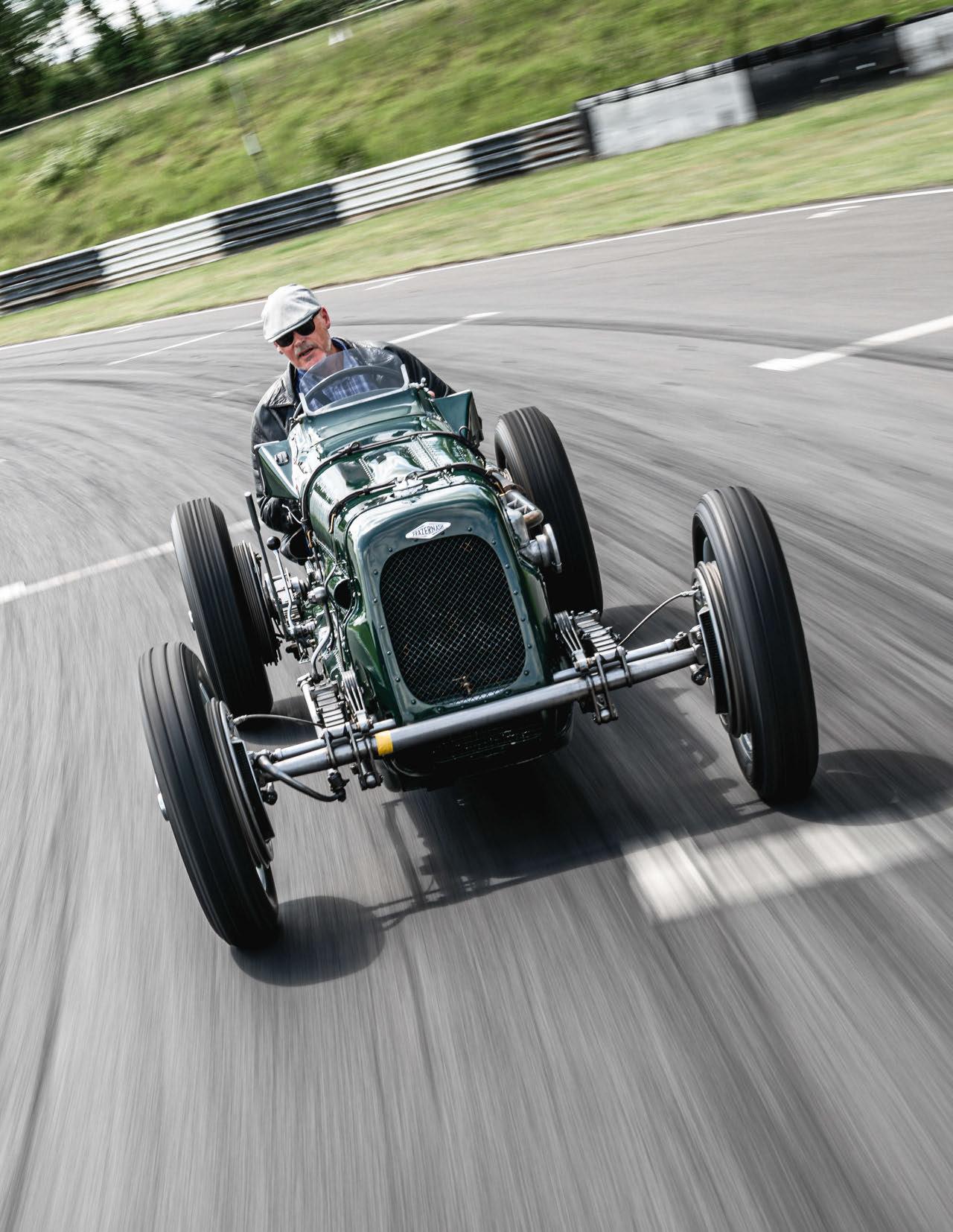
One man’s passion project for the past 45 years, this
is now a highly competitive
in historic events
Looking back now, it seems so serendipitous. When Mike Gibbs got in touch to offer his Frazer Nash SS racer for a feature in Octane, he suggested that the nice people at Castle Combe circuit might be helpful in providing a location for some driving shots. Which they were, hugely. But it was only a few days after the photoshoot that Mike recalled Castle Combe having a connection with Frazer Nash that most people will be completely unaware of.
In the early 1960s, HJ ‘Aldy’ Aldington, the proprietor of AFN Limited – founded by Archibald Frazer-Nash in 1922, but taken over by Aldy and his two brothers in 1929 – was friends with a lady called Kitty Thomas, who had inherited the freehold of Castle Combe circuit. Like so many other racetracks, Castle Combe was originally a World War Two airfield, and it hosted its first motor racing event in 1950.
Aldington arranged for AFN to take a rolling three-year lease on the track from 1963 and various clubs staged races there for pre- and post-war cars, attracting crowds of up to 20,000 spectators and putting it on a par with Silverstone for high-speed action.
The Frazer Nash Car Club was, naturally, a key player at Castle Combe; indeed, Mike Gibbs was a competitor at its 1965 meeting. The Frazer Nash SS pictured here didn’t actually exist then, although it was already a gleam in the eye of aircraft engineer and spare-time vintage car restorer Barry Peerless. He had ambitions to create a replica of one of the ultra-rare Frazer Nash single-seaters built by the works in the mid-1930s and was gathering parts with the help of a young Michael Gibbs, already a convert to the cult of the chain-gang ’Nash since buying his first, an Exeter model, in 1960. He still has the Exeter today.
Any Frazer Nash of the period was a ‘hot’ machine but the single-seaters had next-level performance. If you group them loosely, there were six altogether, although the first was a road-car conversion, the third and fourth were commissioned outside AFN, and the sixth was a privately
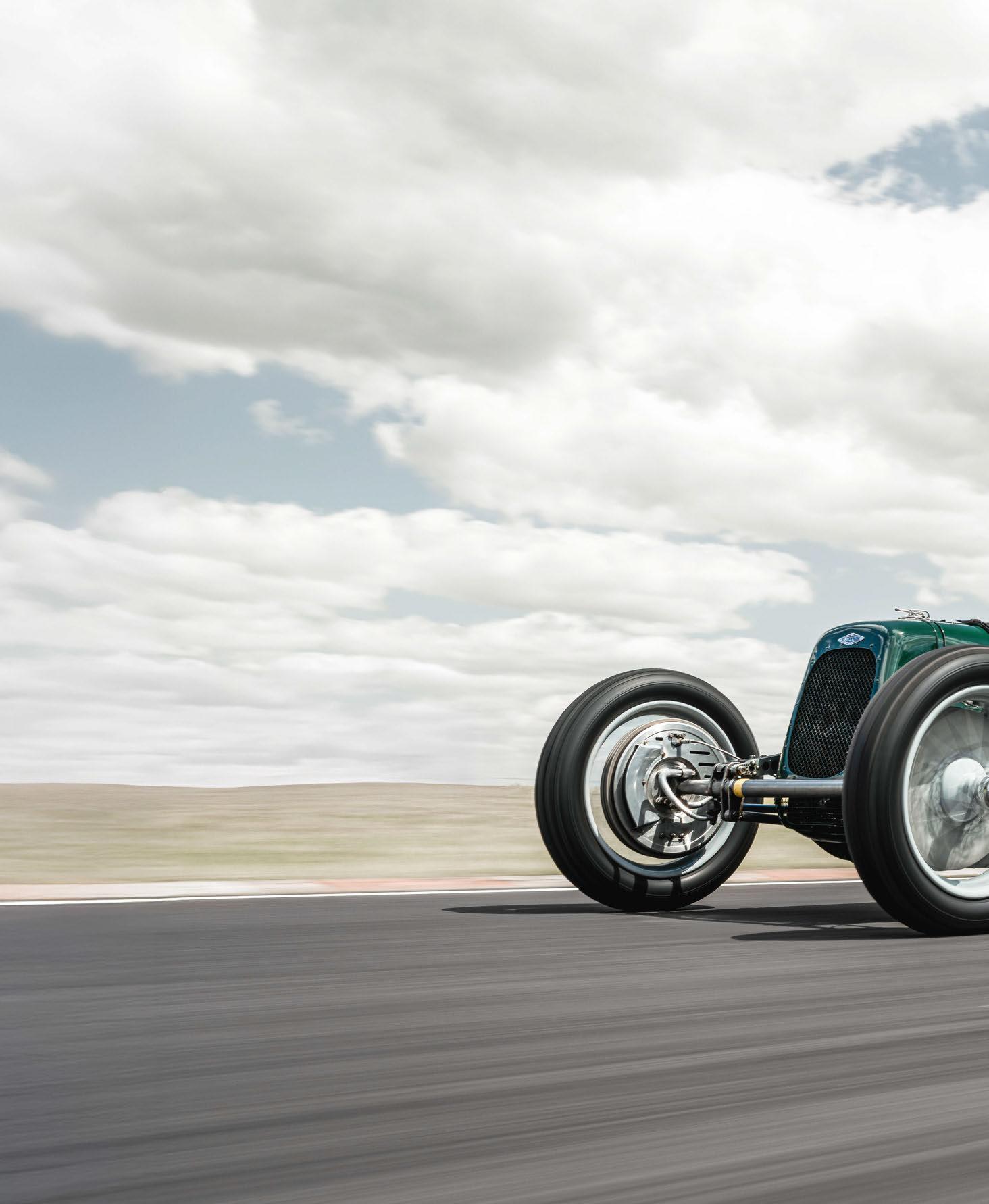
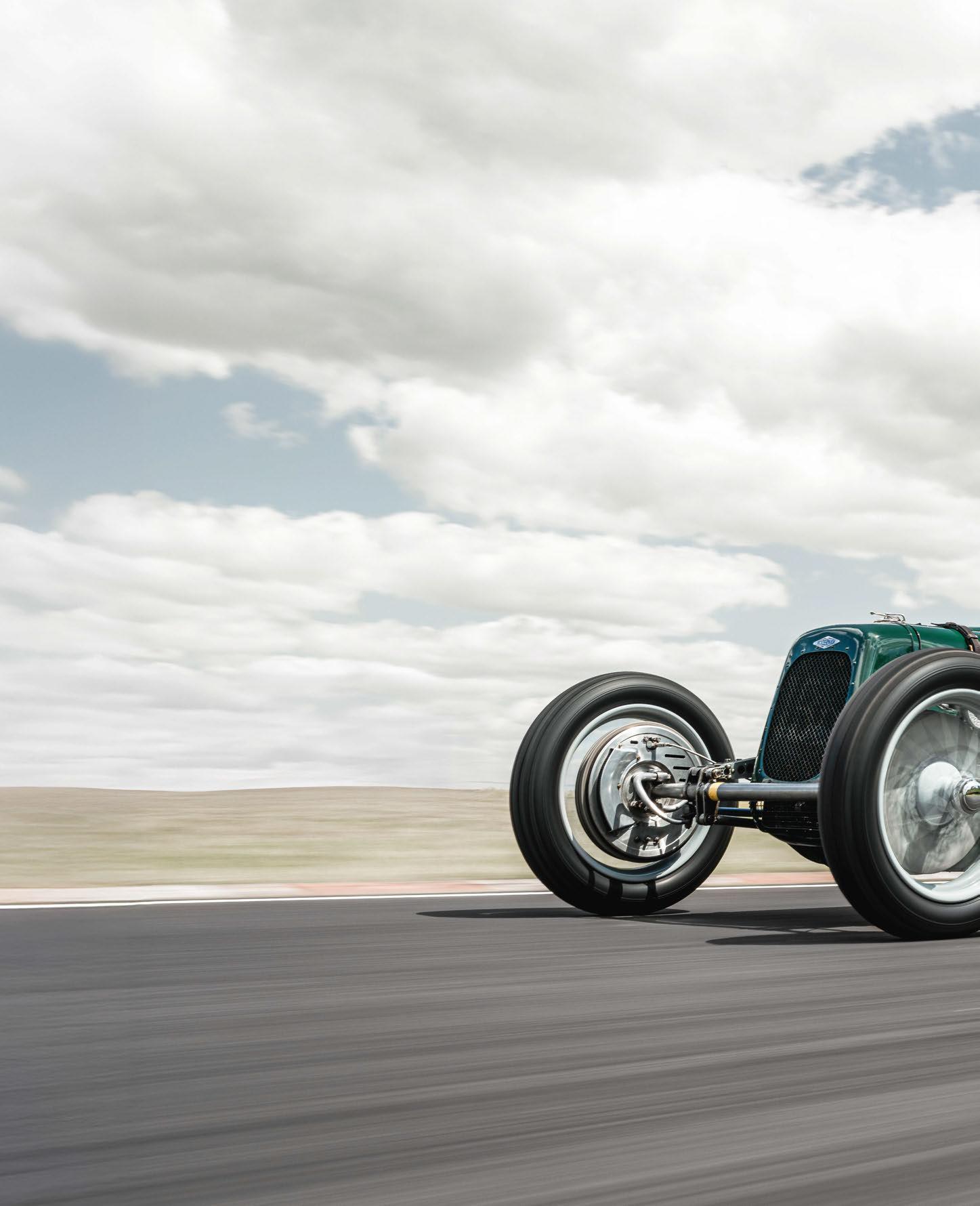

built hillclimb/sprint special. But numbers two and five were AFN-constructed in June 1935 and May 1936, respectively. Number two is today known as the ‘Fane car’ because it was bought back by AFN from its first owner, Adrian Thorpe, after he failed to have any success with it, and was then driven extensively by AFN’s ‘works’ driver, AFP Fane – with, it has to be said, much better results. It’s the Fane car that Mike’s SS emulates.
Mike’s single-seater, begun by Barry Peerless back in the early ’60s, wasn’t actually drivable until 1986 and didn’t cover itself in glory on its first outing at the VSCC Silverstone meeting that year. But it did have a star test driver: none other than Denis Jenkinson, Continental correspondent for Motor Sport and navigator for Stirling Moss when they famously won the Mille Miglia in 1955 with the Mercedes 300 SLR. ‘Jenks’ was down to share the car with Peerless but it was an inauspicious debut. The engine wasn’t right, 5ft 2in Jenks complained about the cramped cockpit (!), and he didn’t like the low-geared steering. The car failed to make the start, and was also a DNS on its next outing, at Cadwell Park.
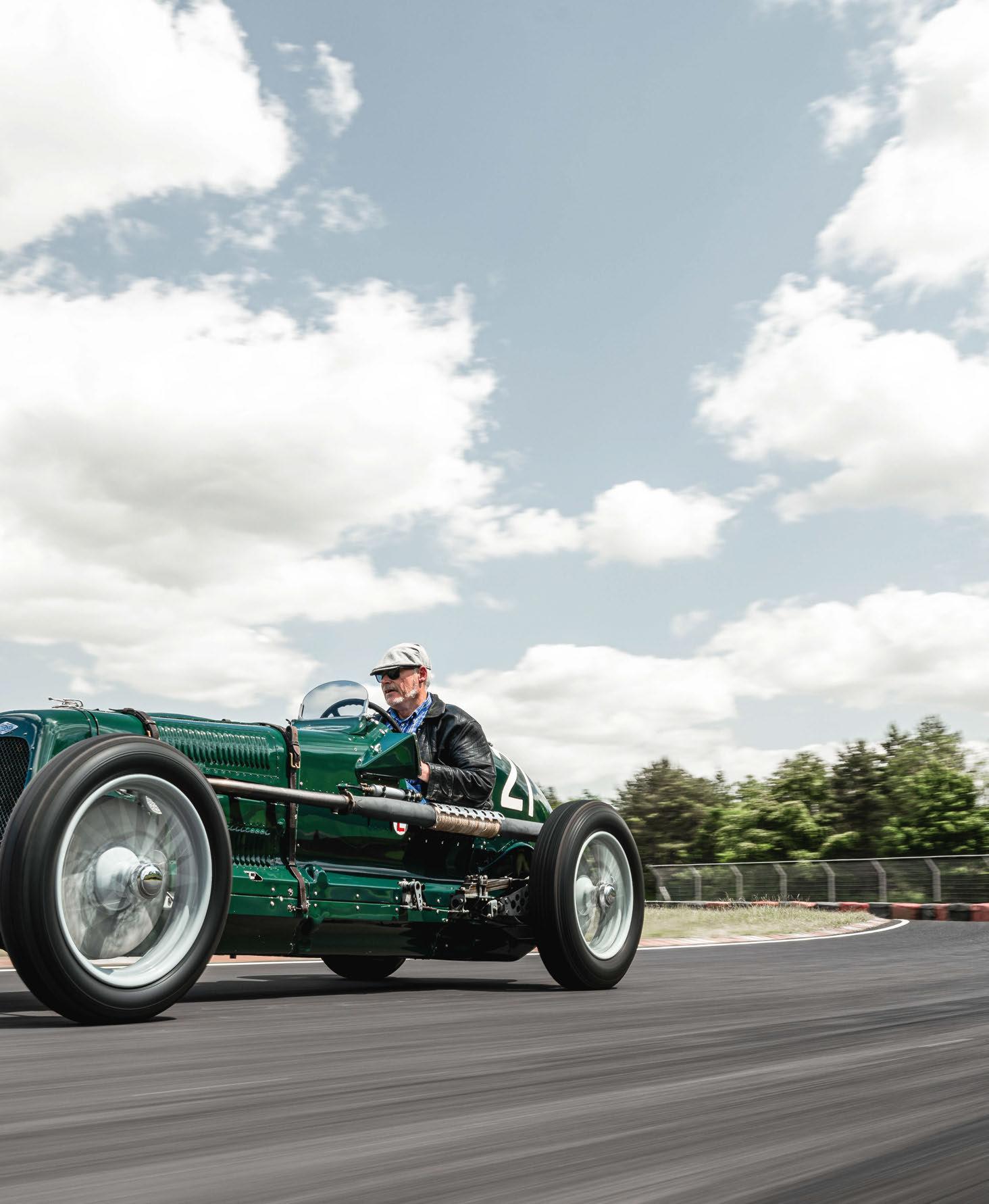
Now, however, the SS is one of the most reliable (and quickest) cars in its class, able to best a 1.5-litre ERA on the track and even to give a 2.0-litre a run for its money. Because it’s been around for so long, the SS is happily accepted into VSCC, Goodwood and Frazer Nash club events, and can compete in some Continental races, too, although having the ‘wrong’ engine – a supercharged 1500cc Meadows 4ED instead of the original-spec Gough unit – means it can’t be granted FIA papers. It’s been a long, long journey for Mike Gibbs, who took the project over in the late 1970s.
‘Barry Peerless came up to me in the paddock at Prescott in about 1972 and said “Mike, would you like to buy the bits for the SS?” I asked how much and he said “750 pounds”. Well, I was building a business at the time so I said I would think about it and didn’t get back to him for about five months – only to find that he had meanwhile sold them to Cameron Millar. Then about four or five years later a friend said that Cameron was looking to move them on, and was asking £8000… But I could afford it by then, so I said “Dammit, I’ll buy them” – and I employed Barry to put the car together in my workshops in the Midlands, where I had
‘THE ENGINE ERUPTS INTO LIFE WITH A DEEP-CHESTED CHAINSAW RASP’
a business developing prototype parts and machine tools for the automobile industry.’
By then, Mike was already employing 250 people and his various design consultancy interests had expanded massively – readers may recall his glass-roofed BMW 635CSi ‘Observer Coupé’ featured in Octane 237 – and, as he puts it, ‘I was just so busy! I didn’t have any time for anything outside work’. Which explains why, with Peerless employed part-time to build the SS, it didn’t finally run until 1986.
The SS was designed to be an exact replica of the Fane car, although the cockpit ended up too small internally –hence Jenks’ complaint – and had to be reshaped to provide more space and, in the process, to restore the correct body profile. Various original Nash parts were built into it, including an original single-seater radiator and header tank (still in the car), a bevel box and nosepiece, some steering components, and Shelsley cable-operated drum brakes, although the last-named have since been superseded by copies of 1930s Maserati Grand Prix hydraulically actuated magnesium drums for safety’s sake.
The Meadows engine also now has Maserati assistance in the form of a Grand Prix-style supercharger, with power output raised to over 200bhp between 3500 and 4500rpm. As first completed, the SS ran a Cozette-replica blower and was giving over 150bhp on a 60/20/20 mixture of methanol, benzine and petrol. It was raced until 1990, then put to one side until a rebuild and further development in 2002-03. Then, disaster: the Cozette disintegrated at speed, feeding debris straight into the engine; even worse, after everything was cleaned up and reassembled, the crankshaft broke under full power on a dynamometer.
Now, with the Cozette superseded by the Maserati-type supercharger, the engine runs on pure methanol, with a dash of the additive Alky. ‘Methanol burns with a completely clear flame, so Alky is used to turn it yellow-red and make it visible,’ explains Mike. Methanol is nasty stuff if you don’t handle it with extreme care: it is highly toxic and if it is absorbed through the skin it enters the bloodstream very quickly. It doesn’t only affect organic things, either; after racing on methanol, the SS’s fuel system has to be drained and flushed out to prevent any residues from corroding the engine internals.
I’m therefore standing well back as Charlie Tyndle, who acts as race mechanic for Mike and his daughter Edie – a
highly skilled racer who took over driving duties from her dad back in 2009 – glugs some methanol and an Alky chaser into the tank. An electric sump heater has already been warming the engine; as with the fuel mix, the choice of lubricant is crucial and Mike’s preference is unusual. ‘In the past I used Castrol R, but it’s a bit too thick and now I use Silkolene Pro KR synthetic, which is intended for twostroke racing karts!’ he explains. ‘When cold, it’s about SAE 50 but with the engine hot that comes down to SAE 30.’
We’ve been putting off starting the engine for as long as possible in case Castle Combe’s noise meters suddenly explode when it fires up, but eventually we have to bite the bullet. The back axle is lifted on a racing jack, then the fuel tank pressurised with the hand pump on the left of the cockpit. Fuel taps are opened under the bonnet and on the tank. Tickle the carburettor to flood its fuel bowl. Plug in an external battery, then retard the ignition slightly with a bikestyle lever that’s connected to a Bowden cable. Magneto ‘on’. Check the gears are in neutral, and… press the starter.
Cripes! Yes, it’s as loud as expected, the engine erupting into sudden life with a deep-chested chainsaw rasp and needing to be repeatedly revved in a constant rise-fall sequence to keep it alive until warmed through. Fortunately, no furious marshals have come running and, after a few minutes of annoying the rest of the paddock (which consists of an MG club enjoying a much less noisy track-day; sorry, people), we switch off, the jack is lowered and it’s time for me to shoehorn myself into the cockpit.
Even with its post-1986 remodelling, this is a rather intimate place to be. I suggest that maybe we could take out the seat cushion to create a little extra space, so Mike wordlessly removes it to show that there is literally nothing underneath except the transmission’s bevel box and soon-tobe-whirling drive chains. Maybe not, then. On the bright side, access is made a lot easier – indeed, actually possible –by the quick-release steering wheel, with a beautiful lockingpin mechanism that was made to original Auto Union ‘Silver Arrow’ drawings loaned by a generous Dick Crosthwaite.
There’s just enough legroom for this 6ft 1in driver, thankfully, and of course the handbrake and gearlever – the latter barely half the length of the former – are mounted outside. Thank the Lord I brought my cheap ’n’ cheerful Sparco racing boots, though. Thank Him again that the
Clockwise, from opposite, top left
The dapper owner, Mike Gibbs; seat cushion sits directly over exposed transmission; brakes are now Maserati-type finned magnesium drums; advance/ retard lever and magneto switch are mounted outside, along with handbrake and gearlever.

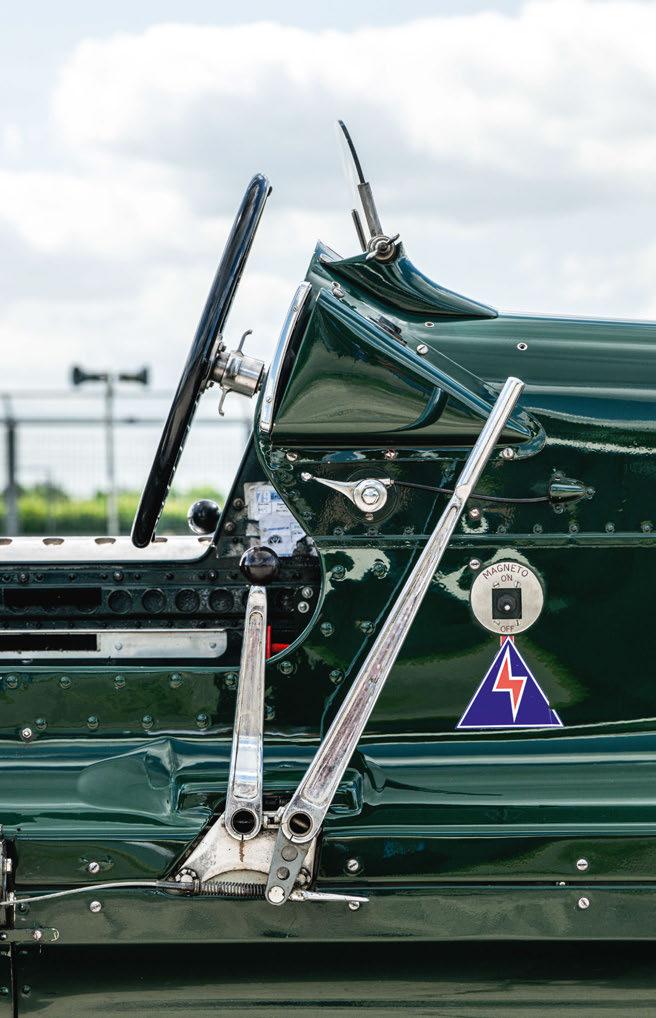
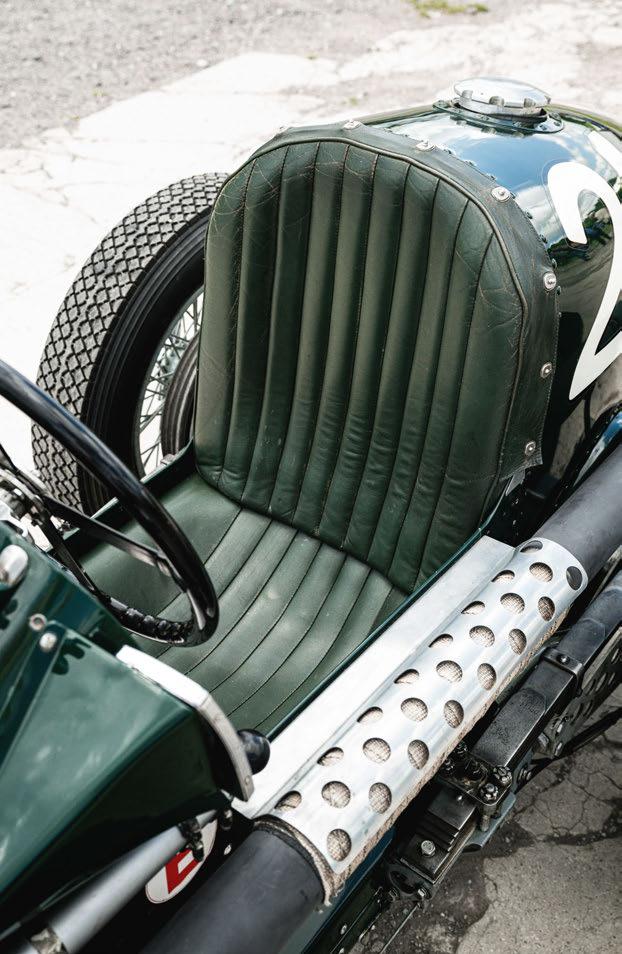
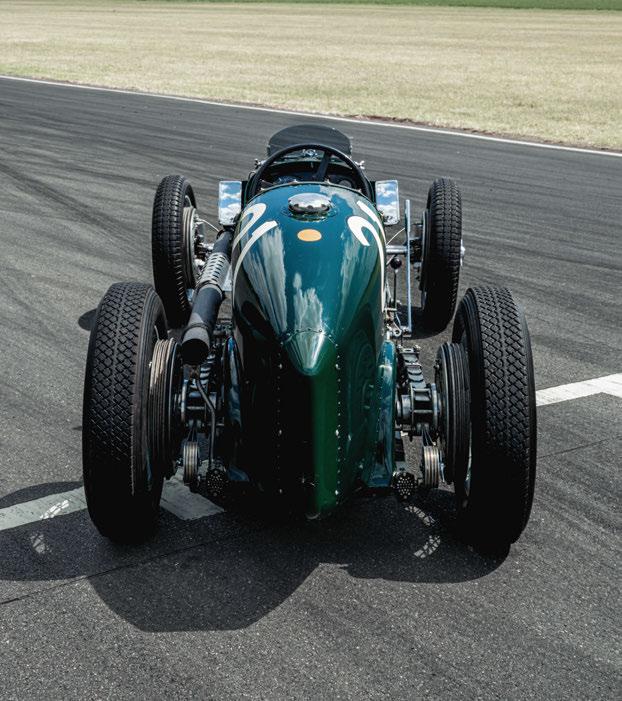
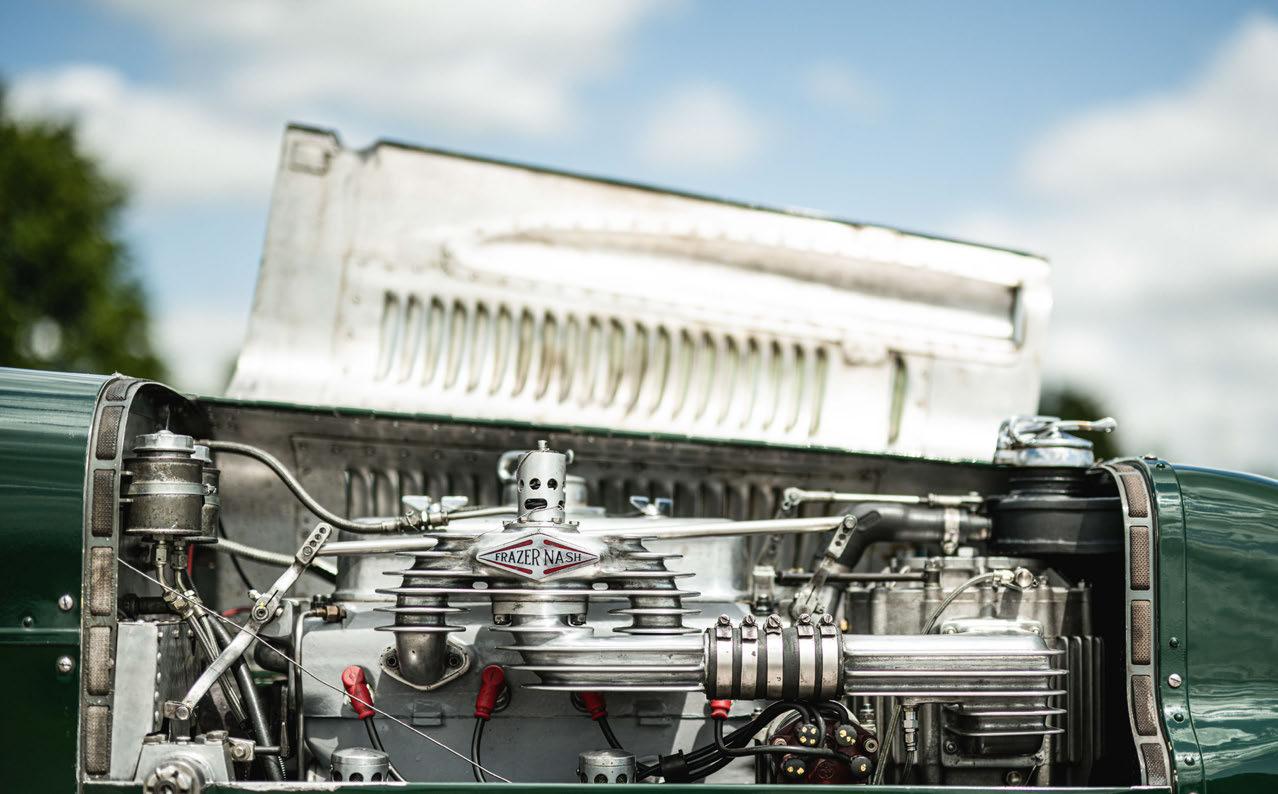
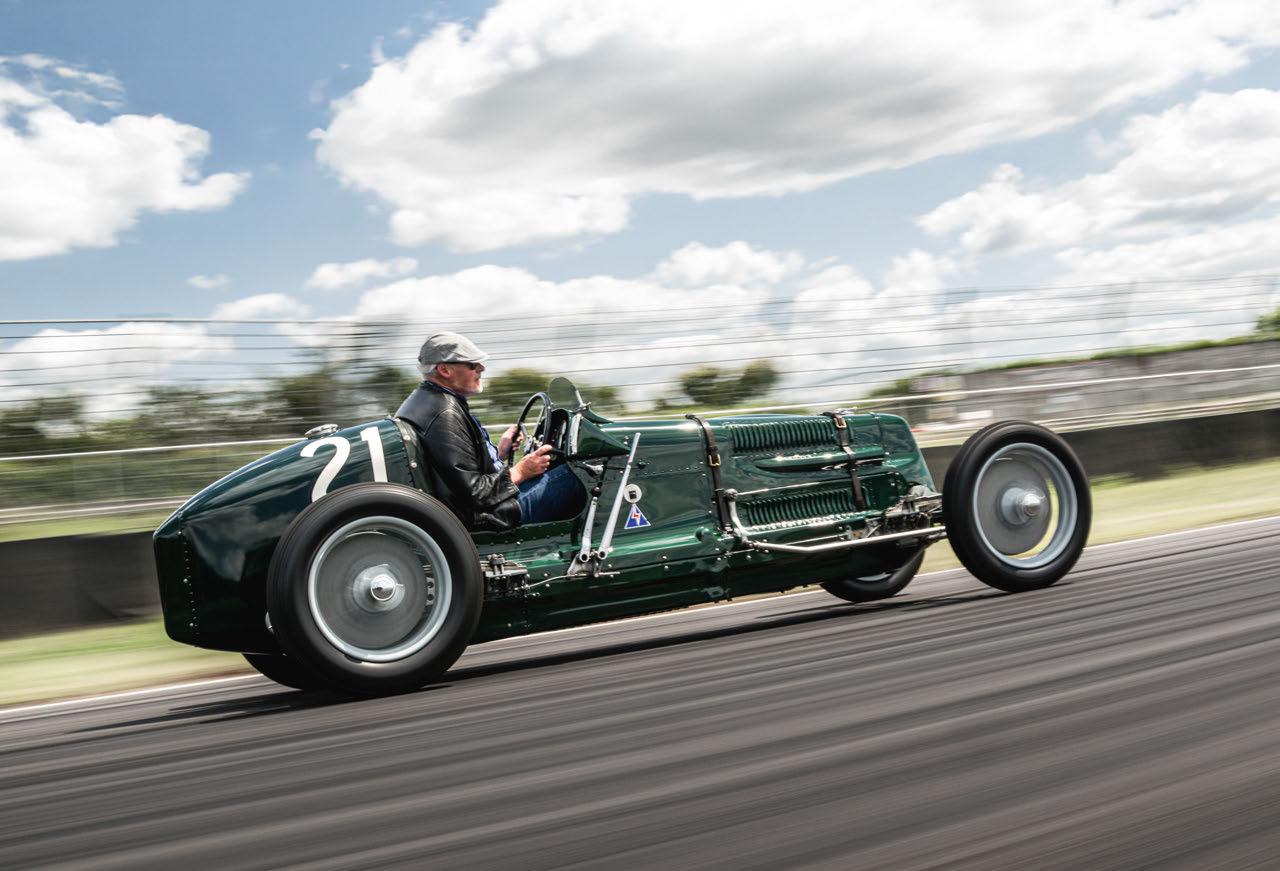
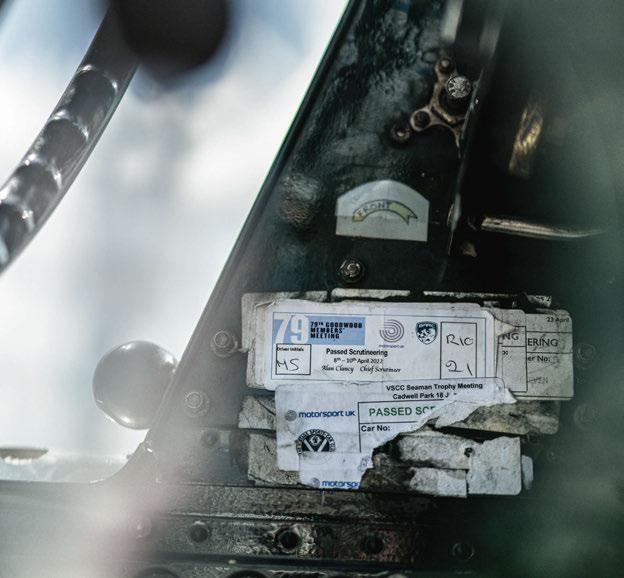
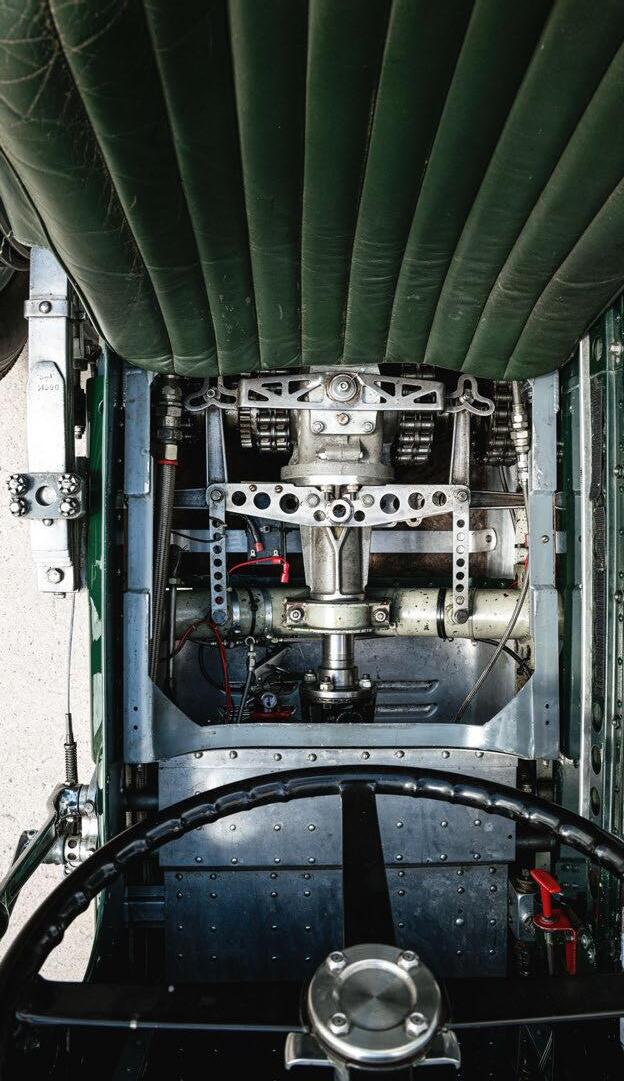
‘GIVEN
ITS HEAD, THE SS TAKES OFF LIKE A GROUNDLAUNCHED MISSILE’
engine always starts instantly when repeatedly called upon to do so, because the racing clutch is a bugger, not helped by a super-sensitive throttle that makes low-revs modulation a real challenge.
So, after stalling a mere half-dozen times in the 50 yards from paddock to pit-lane entrance, we finally splutter onto the circuit for a photo session. ‘Fuel will automatically be drawn into the carburettor but only above 3000rpm, when the supercharger takes full effect,’ Mike had explained earlier, ‘so you have to keep the tank pressurised with the hand pump below those revs.’
Since car-to-car pictures are generally shot at very low speeds – spoiler alert, the dramatic background ‘whoosh’ in the photos is achieved with relatively long exposures in the camera – that means for 30 minutes I’m solidly pumping away with my left hand (no sniggering at the back there) and end up with a large blister on my thumb (I said no laughing!). The SS isn’t too happy, fluffing and missing and generally indicating its displeasure at being asked to travel so slowly.
Eventually, however, snapper Pearce says he is satisfied and I’m allowed to circulate for a few quicker laps before the MG boys are back on track. This is more like it! Given its head, the SS takes off like a ground-launched missile (it’s good for 130mph, reputedly), even though I’m still shortshifting and keeping the revs low to avoid upsetting any neighbours. Changing down rapidly for the Esses on the far side of the circuit means this self-imposed rule has to be breached occasionally, of course, when the engine snarls and cackles and pops just as you’d expect, and hope, that it will.
The ’Nash’s huge advantage is that its simple ‘dog’ gears can be shifted as rapidly as you can move your hand; clutchless gearchanges are quite easy with a little practice.
Normally, a chain-gang ’Nash driver likes to showboat by massively oversteering around corners (lack of a rear differential induces this anyway) but, as Mike Gibbs sagely points out, it’s actually the slowest technique. So, on the SS, the front 450 x 19 Ensigns are pumped up to 40psi but the
Clockwise, from opposite, top left
Supercharged 1500cc Meadows engine produces over 200bhp; layers of scrutineering tickets prove eligibility for Goodwood and VSCC events; infamous ‘wriggly monkey’ gear selector for chain-drive transmission; driving it at any speed is addictive, claims Dixon.
1935-type Frazer Nash SS
Engine 1496cc four-cylinder Meadows 4ED, single SU carburettor, Maserati-type supercharger Power 200+bhp @ 3500-4500rpm Torque 200+lb ft @ 5600rpm
Transmission Four-speed manual by propshaft, bevel box and chains, rear-wheel drive
Steering Worm and sector Suspension Front: beam axle, quarter-elliptic leaf springs, radius rods, friction dampers. Rear: beam axle, quarter-elliptic leaf springs, radius arms, friction dampers Brakes Maserati-type finned drums, hydraulically operated
Weight 650kg Top speed 130mph
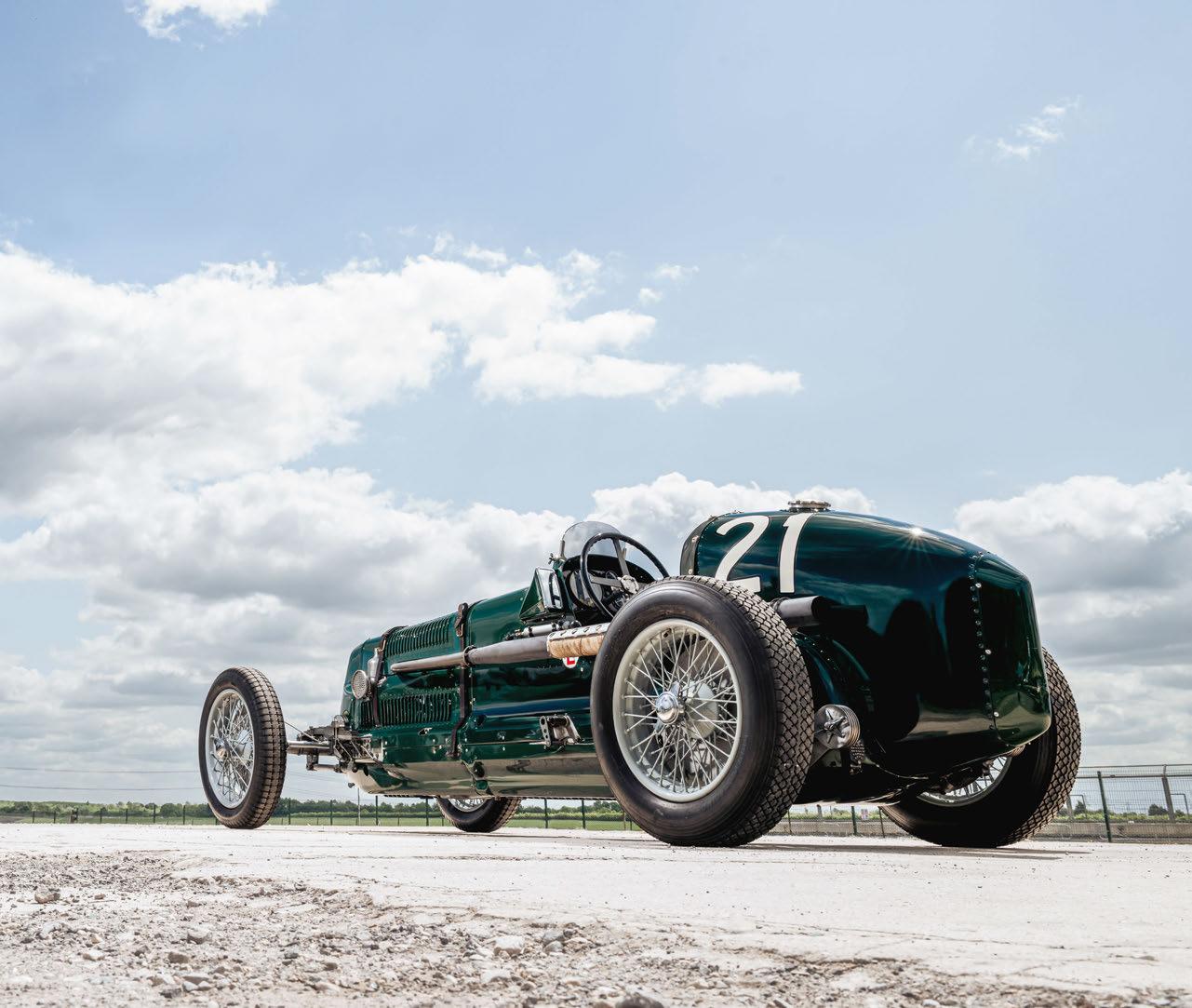
rear 550 x 18 Dunlops are left softer at 33psi, which means that the SS can be drifted beautifully – well, it can if you’re as skilled a driver as Edie Gibbs – since its initial tendency is to understeer until the rears start to let go, too.
It’s a relatively easy car to drive fast, then, but the experience is totally immersive whatever speed you’re doing: with only a vestigial aeroscreen in front of you, the slipstream force-feeds oxygen into your face to supercharge your own respiration, while your ears are battered by the mingled thrash of the transmission chains, the manic percussion of the valvetrain, blare of the exhaust note and whine of the blower, everything combining into a sensory overload that is simultaneously exhilarating and exhausting. And we’re only doing half or two-thirds of racing velocities.
As I trundle the SS back into the paddock and kill the ignition, a smiling marshal comes over and announces that
it didn’t actually register too badly on the decibel meter. Darn it, I should have tried harder! But I’m pleased that we haven’t upset the nice folk at Castle Combe where, at this year’s Autumn Classic on 20-21 September, they’ll be celebrating 75 years since racing began here in 1950.
A huge variety of classic and vintage race cars will be competing, among them lots of Frazer Nashes. And, if you want to be a front-runner in similar events, then Mike’s SS is due to be auctioned by Bonhams just a week earlier at the Goodwood Revival meeting on 13 September. You might need rather longer than a week to learn how to drive it properly, though.
THANKS TO Mike and Edie Gibbs, Charlie Tyndle, Jon Giles, and all at Castle Combe, castlecombecircuit.co.uk. For details of the Bonhams sale, visit cars.bonhams.com.

A SELECTION OF OUR CURRENT STOCK
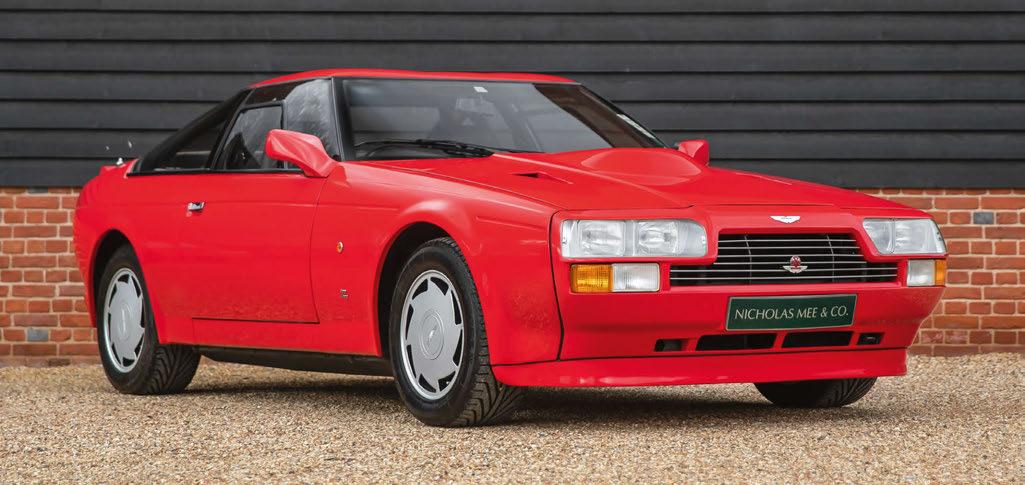
ASTON MARTIN V8 VANTAGE ZAGATO
£325,000
Finished in original colours of Gladiator Red with Black hide interior. The second of 2 prototype examples built in 1985. Fitted with a leather trimmed half roll cage whilst in build. One of only 3, delivered with factory modified carburation, uprating the V8 Vantage engines output to a true 432 bhp. Cosmetic restoration to the highest standards by renowned restorers.
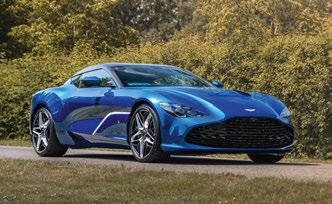
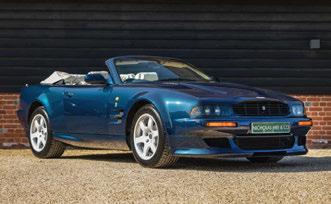
2000 Aston Martin V8 Vantage Volante ‘Special Edition’ £POA 2022 Aston Martin DBS GT Zagato

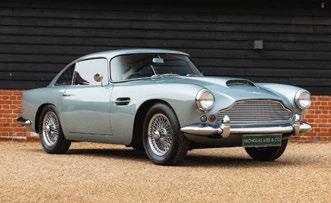






Nicholas Mee & Co Ltd, Essendonbury Farm, Hatfield Park Estate, Hertfordshire, AL9 6AF 0208 741 8822 info@nicholasmee.co.uk nicholasmee.co.uk
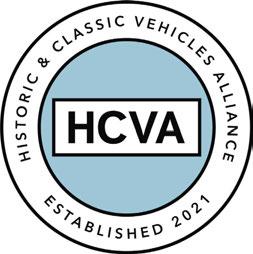
IN
THE SPOTLIGHT, HCVA MEMBER:
BRITPART
WITH OVER FOUR decades of industry experience, Britpart has earned a reputation as the leading independent wholesaler of parts and accessories for Land Rover vehicles. Trusted by more than 1000 stockists around the globe, including government agencies, specialist garages, and trade outlets, Britpart has become synonymous with quality, reliability and innovation. Our commitment to excellence is underscored by our ISO 9001:2015 certi cation and backed by a comprehensive 24-month guarantee on our parts.
As a true one-stop shop, Britpart stocks an impressive inventory of nearly 30,000 parts and accessories. From the smallest o-ring to complete engines, our range includes Genuine Land Rover, OEM, and Britpart-branded parts – all competitively priced. Whether you’re servicing a Defender, restoring a Series model, or undertaking a full rebuild, Britpart ensures our stockists have access to everything you need, when you need it. In addition to core parts, we also supply an extensive range of high-quality accessories to suit every Land Rover model, perfect for personalisation, overlanding adventures, or performance enhancements. Our accessory brands include trusted names like ARB, Ring, Brembo, Corbeau and Dynamat. E cient and reliable distribution lies at the heart of our operation. Based at our headquarters in Shropshire, UK, Britpart’s expansive warehousing, dedicated eet and global logistics providers ensure fast deliveries across the UK and internationally. Customer service is at the core of the Britpart experience. Our specialist sales teams cover home and export markets, providing multi-lingual support and deep product knowledge.
Alongside this, our in-house Trim Shop handcra s seats to meet the highest standards of comfort and safety, while our Lock Shop Team delivers light engineering services and bespoke solutions, ensuring your Land Rover is ready for the road (and o -road) ahead.















Autohistoric: specialists in the preservation and restoration of veteran and vintage vehicles.
+44 (0)1825 873636 www.autohistoric.co.uk

+44 (0)1869 357126 www.pendine.com
Jaguar preservation, restoration and servicing, specialising in cars from the 1950s and 1960s.
+44 (0)1789 507611 williamheynes.com

Buga i Owners’ Club and Presco Speed Hill Climb: championing motorsport and hillclimbing since 1929.
+44 (0)1242 673136 www.presco hillclimb.co.uk

Harding Auto Services: 1920s to modern day, road, race and custom.
+44 (0)1483 487626 hardingautos.co.uk
Hot topic
OLD VEHICLES AND NEW TECH
Our cosy world of historic vehicles with their analogue systems may seem a world away from the technology-based social and industrial revolution taking place around us, but rapid change is already impacting upon us daily as an industry and as individuals. Many of you will have witnessed clumsy AI vehicle descriptions on social media and bizarre AI-generated photos of fantasy vehicles that have never existed. But the reach of technology in our sector is rather more advanced than that. Engineering companies and restorers were quick to harness the potential of 3D printing and CNC tooling that have enabled previously unavailable parts to be manufactured as bespoke or low-volume production runs.
Electronics on ’80s and ’90s classics are increasingly being upgraded with new management systems, and the restomod and electric conversions sectors are taking things to a whole new level.
Specialist businesses are routinely using new so ware and AI to manage parts inventory, improve customer relationships and enable greater marketing segmentation.
At a recent HCVA Heritage Ma ers industry event, representatives from Footman James, Hagerty and Lockton updated on how big data and AI are already a ecting the specialist vehicles insurance market. The phenomenal amount of retained data being integrated with AI is enabling sophisticated risk assessments far beyond the traditional age, postcode and vehicle metrics. Personal profiling based on a host of information about an individual’s lifestyle and activities can be readily accessed via their history and digital footprint. Yet AI could help responsible younger drivers who demonstrate passion and care for their vehicles to be looked upon more favourably by assessors, something the HCVA welcomes as we seek to a ract the next generation of enthusiasts and workforce. There is no doubt that embracing and harnessing new technology can be an asset in keeping our historic vehicle fleet on the move and relevant to the next generation. Help us shape the future of our past at www.hcva.co.uk.
Dale Keller, CEO
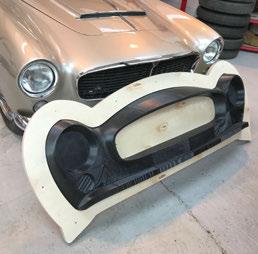
Octane Cars
The trials and tribulations of the cars we live with
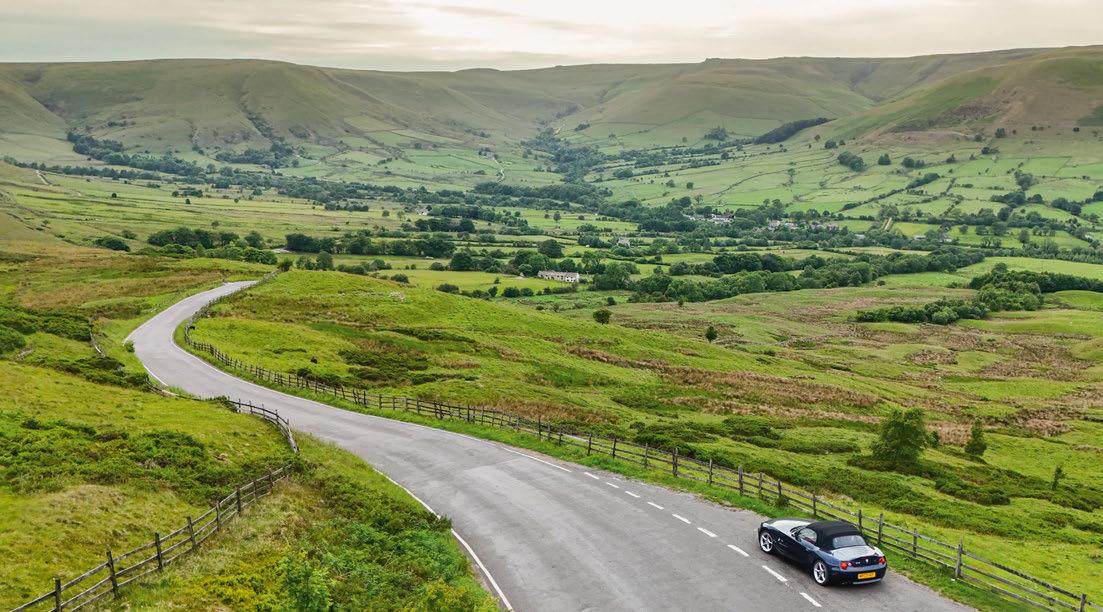
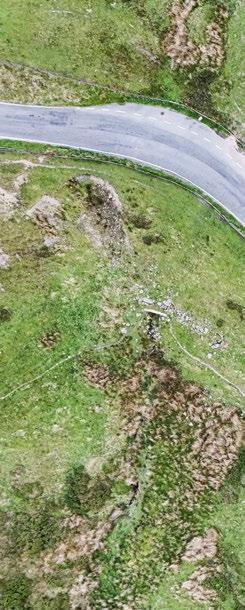
Location, location, location
2004 BMW Z4 3.0i Robert Hefferon
WORD ON THE street is that BMW intended the Z4’s convertible roof to be a single unit that dropped straight into the car for assembly, which is all well and good until you hear where the clever chaps decided to tuck the motor and hydraulic pump that power the roof mechanism. I’ll spare you any suspense: it’s housed in a ‘waterproof’ casing that sits in the rain channel. It’s not only rain that washes into the channel but seeds, bugs and general detritus, which all build up and block the rodentproof grommet. Water fills the void and submerges that ‘waterproof’ housing. About a year ago I had removed the
rubber grommet and cleaned the channel but it must have been too late by that point. Once moisture has got inside, the insulating foam saturates and the motor sits there slowly corroding, until one day you hear it take its last breath as you try to close the roof. I suspected this was the case but the only way to really know was to attempt the tried and tested ‘roof motor relocation’. The pros can get this down to about 45 minutes, despite having to access it from inside the boot, blindly break free zip ties and prise out the housing, while being mindful of the hydraulic hose lines – and all with one hand. It took me a little longer but, once
free, it was as I suspected and frankly hoped it would be –soaking wet. Amazingly, after a blast with some WD40 and a couple of days to dry out, it works and now lives tucked into a lovely dry recess in the boot.
With a big tick on that part of the to-do list, I set about removing the pop-up dashboard display screen, a few plastic clips of which had snapped and could no longer grip around the motor that actuates it. Some 22 years of automatically rising and lowering on the turn of the ignition had proved too much for the ageing plastic. Removing the vents and radio gained me access, and once it was out I tried my luck with
some superglue and braced it with strips of plastic I’d cut from a bottle, which seems to have done the trick. I’m doing my best to keep on top of these little jobs, which also included fixing the pop-out drinks holder that had been stuck in since I bought it.
A quick oil-and-filter service was the least the car deserved ahead of a planned trip to the Derbyshire dales for my annual camping trip with some old friends. It’s about 150 miles and there were some motorway miles to eat up first but, with that section behind us and while stationary at a set of traffic lights, I lowered the roof and enjoyed the whole experience this car offers
OCTANE’S FLEET
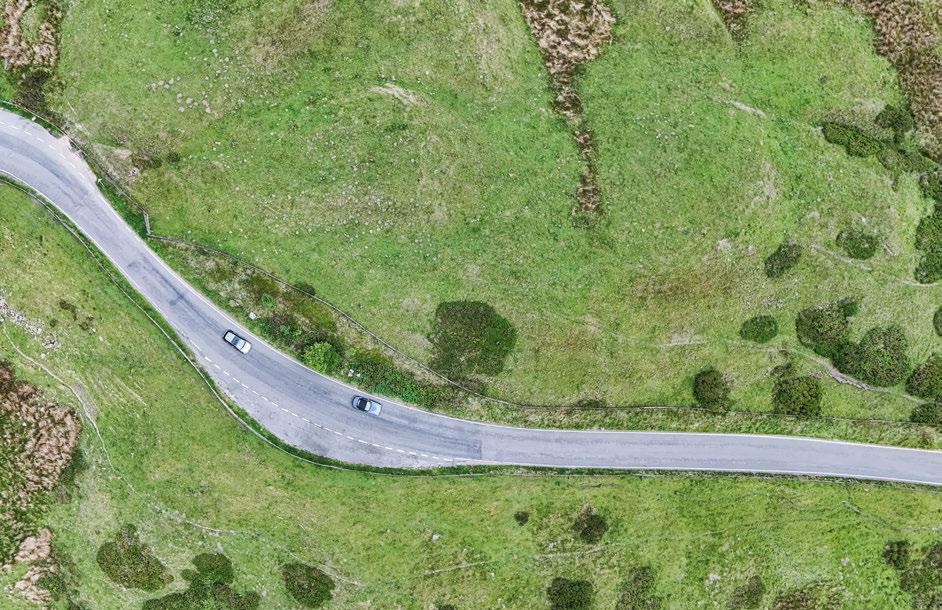
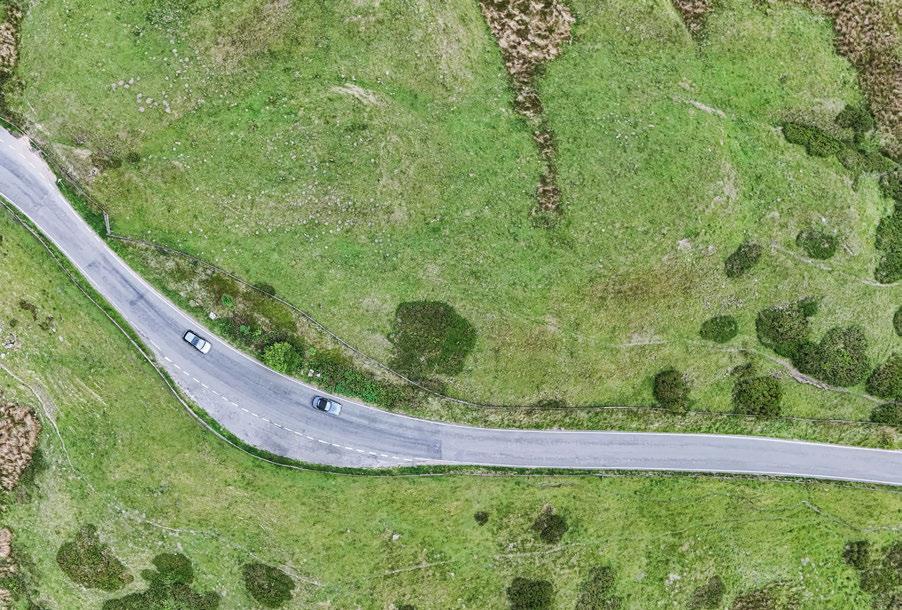
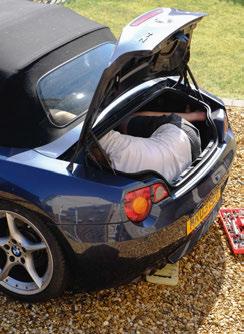
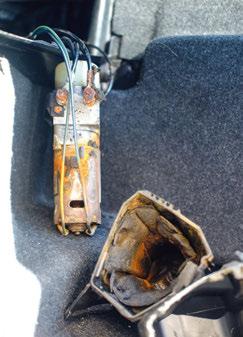
(as well as my earlier handiwork).
The roads, villages, hills and weather for the next hour were stunning, and so was my car.
A few minutes out from the campsite I couldn’t resist pulling over to enjoy the scenery at the top of Mam Tor and reflect on the drive; seeing the roads that
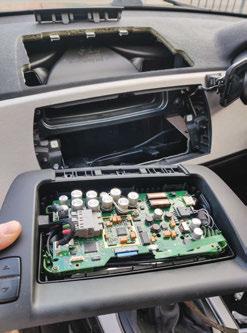
led down to our site was the icing on the cake of a great journey. I say ‘us’ because my friend and I were in convoy for most of the drive – he could certainly have picked me up in his new Golf R en route, but I didn’t want to miss out on moments like these in my own car.
These are the cars –and ’bikes – run by Octane’s staff and contributors
JAMES ELLIOTT
Editor-in-chief
• 1965 Triumph 2.5 PI
• 1968 Jensen Interceptor
• 1969 Lotus Elan S4
ROBERT COUCHER
Founding editor
• 1955 Jaguar XK140
GLEN WADDINGTON
Associate editor
• 1989 BMW 320i Convertible
• 1999 Porsche Boxster
SANJAY SEETANAH
Advertising director
• 1981 BMW 323i Top Cabrio
• 1998 Aston Martin DB7 Volante
• 2007 Mercedes-Benz SLK200
MARK DIXON
Contributing editor
• 1927 Alvis 12/50
• 1927 Ford Model T pick-up
• 1942 Fordson Model N tractor
• 1955 Land Rover Series I 107in
ROBERT HEFFERON
Art editor
• 2004 BMW Z4 3.0i
DAVID LILLYWHITE
Editorial director
• 1971 Saab 96
MATTHEW HOWELL
Photographer
• 1962 VW Beetle 1600
• 1969 VW/Subaru Beetle
• 1982 Morgan 4/4
BEN BARRY
Contributor
• 2007 Mazda RX-8
MASSIMO DELBÒ
Contributor
• 1967 Mercedes-Benz 230
• 1972 Fiat 500L
• 1975 Alfa Romeo GT Junior
• 1979/80 Range Rovers
• 1982 Mercedes-Benz 500SL
• 1985 Mercedes-Benz 240TD
SAM CHICK
Photographer
• 1969 Alfa Romeo Spider
ROWAN ATKINSON
Contributor
• 2004 Rolls-Royce Phantom
BERTHOLD DÖRRICH
Contributor
• 1939 Alvis 12/70 Special
• 1958 Austin-Healey Sprite
• 1972 Porsche 911T
ANDREW RALSTON
Contributor
• 1955 Ford Prefect
• 1968 Jaguar 240
RICHARD HESELTINE
Contributor
• 1966 Moretti 850 Sportiva
• 1971 Honda Z600
PETER BAKER
Contributor
• 1954 Daimler Conquest
• 1955 Daimler Conquest Century
• 2005 Maserati 4200GT
• 2008 Alfa Romeo Brera Prodrive SE
DAVID BURGESS-WISE
Contributor
• 1924 Sunbeam 14/40
• 1926 Delage DISS
MATTHEW HAYWARD
Markets editor
• 1990 Citroën BX 16v
• 1994 Toyota Celica GT-Four
• 1997 Citroën Xantia Activa
• 1997 Peugeot 306 GTI-6
• 2000 Honda Integra Type R
• 2002 Audi A2
JESSE CROSSE
Contributor
• 1968 Ford Mustang GT 390
• 1986 Ford Sierra RS Cosworth
MARTYN GODDARD
Photographer
• 1963 Triumph TR6SS Trophy
• 1965 Austin-Healey 3000 MkIII
DELWYN MALLETT
Contributor
• 1936 Cord 810 Beverly
• 1937 Studebaker Dictator
• 1946 Tatra T87
• 1950 Ford Club Coupe
• 1952 Porsche 356
• 1955 Mercedes-Benz 300SL
• 1957 Porsche Speedster
• 1957 Fiat Abarth Sperimentale
• 1963 Abarth-Simca
• 1963 Tatra T603
• 1973 Porsche 911 2.7 RS
• 1992 Alfa Romeo SZ
EVAN KLEIN
Photographer
• 1974 Alfa Romeo Spider
• 2001 Audi TT
HARRY METCALFE
Contributor
• 20 cars and 15 motorbikes
To follow Harry’s adventures, find Harry’s Garage on YouTube.
Shopping trip
1927 Ford Model T
Mark
Dixon
‘THAT VIDEO SOUNDS horrible!’ was not the reassurance I had been hoping for when I took a short clip on my phone of the Model T engine ticking over and sent it to friend and T specialist Richard Rimmer. I thought I could hear a kind of knocking or tapping noise at low revs that I’d not noticed before, and Richard suggested a few things to check: loose crankshaft pulley, ditto the timing gear, fan touching radiator… But all looked OK.
I did wonder whether the starting handle was simply rattling where it engages with the crank pulley, and pulled it out a little. Not sure it made any difference but maybe there wasn’t quite so much noise any more. ‘It’s always difficult to tell from a phone video,’ conceded Richard, ‘as even a rebuilt T engine sounds like a bag of nails in a vid.’
With nothing obviously wrong, and no increase in racket with the throttle open, I went for a couple of tentative trial runs – to the pub in the next village, naturally – and then decided to go for broke, so to speak, with a trip over the hills to my nearest town, Ludlow, which is a very Model T kind of place.
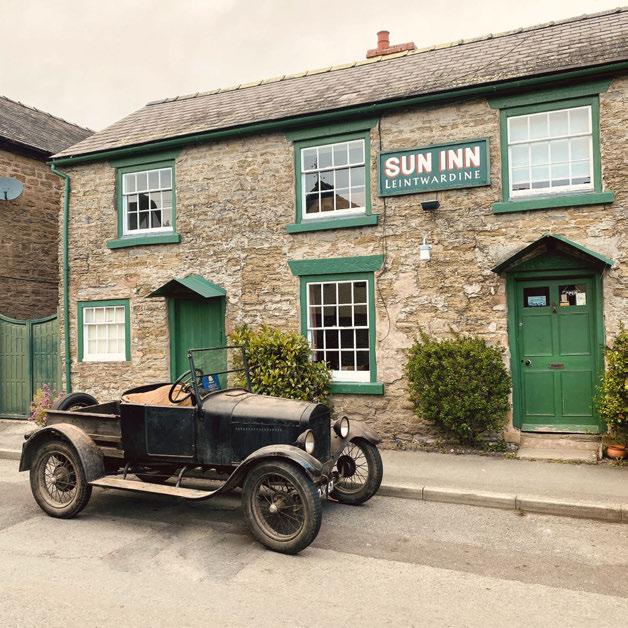
As I’ve mentioned here before, it involves taking a road called Killhorse Lane that involves a long and steep ascent followed by a matching descent into the town.
I’m relieved to say that the T behaved impeccably, albeit accompanied by the usual cacophony of rattles and squeaks from body panels, windscreen and springs – situation normal, in other words. I suspect the tappets could do with a check, something I’ve never felt the need to do in my ownership, since at least one
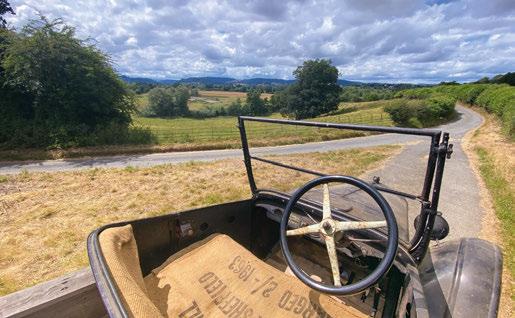
of them now sounds a little, well, tappety – but I’m a firm believer that ‘a slappy tappet is a happy tappet’ because it means the clearances are loose rather than tight, so there’s less likelihood of burning a valve.
I really do need to sort out the reverse gear, too, which only takes up at the very end of its travel (on a T, you press the middle pedal to lock the reverse gear in the epicyclic gearbox) and has become very juddery. Plus I ought to take a look at the brake linings; again, something I’ve never felt impelled to do. Usually I’m guilty of over-servicing my cars, if anything, but the T is such a simple soul that it just seems to plug on with minimal attention. After returning successfully to base, there was only one thing to do: go for a shandy at the pub. Both it and the Model T are very much my ‘happy places’.
From top
They may shoot horses, but reliable
Ts get a nice rest outside
Sun in Leintwardine while Dixon rewards himself with a shandy.
Raleigh school
1983 Ti Raleigh Professional David Lillywhite
YOU MAY HAVE noticed that my vehicle of choice is lacking a couple of wheels and an engine. To be fair, I’ve had classic cars about which the same could be said – and this latest project is proving to be just as engaging as those cars.
So, the bicycle… It all started in the late 1970s and early ’80s, when I spent my school holidays working at my grandparents’ bike shop, which sold mostly Raleighs and Carltons. On the walls were posters of the Ti Raleigh team, and I lusted after one of the team replica bikes in that iconic red, yellow and white livery.
Instead, I was given a tired Moulton Mini, which is now thought of as an iconic bicycle, but to a kid surrounded by exotic racing machinery was a touch disappointing. So ever since I’ve vaguely thought that it would be nice for a period team bike to join my modern bikes and my 1990s mountain bike. And then, as so often seems to happen, eBay apparently read my mind and served up a beautiful 1983 Ti Raleigh Professional frame, still in its original paint.
Now this was perfect. Reynolds 531 tubing, Campagnolo drop-outs, Prugnat lugs… though much of this was a foreign language to me, too, a month ago.
It would have been sold new as a frame and forks only, for the buyer to build to their personal spec. Of course, I bought it!
I planned to fit it with period Shimano 600 components, which are cheap, easy to find and highquality. Indeed, I bought most of what I needed for just over £100. But then it seemed a shame not to go for the Campagnolo Nuovo Record parts that the team replicas came with. So I bought some of those before realising that I much preferred the more expensive 1974-on Campagnolo Super Record cranksets and derailleurs. More time and money subsequently spent on eBay.
I bought the requisite Cinelli handlebars and stem but later realised that the ’bars were 1990s, not ’80s, so back on eBay I went. I snapped up a half-price, brandnew Selle Italia Turbo 1980 saddle before deciding I wanted a period item, not a modern replica. Madness? Of course, and I’m still deep down so many rabbit holes but loving every minute of the research and the assembly.
I’ve even bought an original 1983 Ti Raleigh Campagnolo jersey, joined the Ti Raleigh Vintage Cycling Club and countless more vintage cycling groups and am now planning for a L’Eroica retro bike event in Tuscany next year.
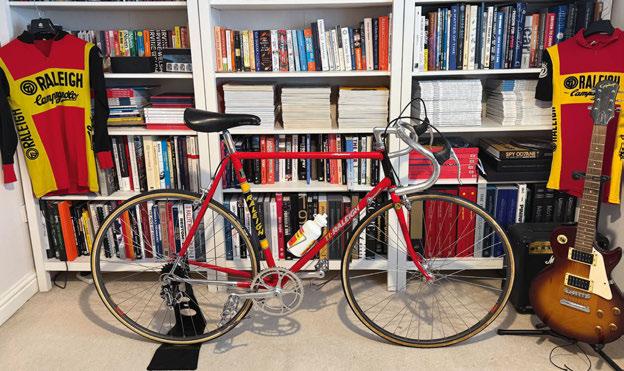
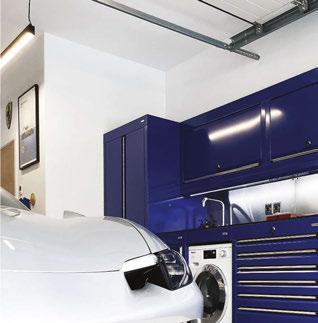
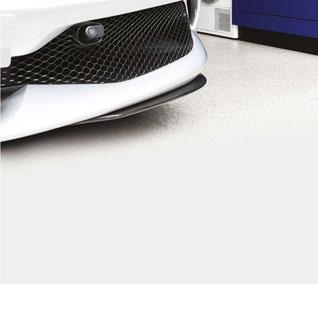



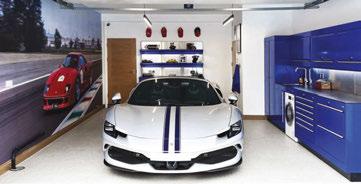





Rat Rod gets rattier
1937 Studebaker Dictator Delwyn Mallett
IF YOU ARE a regular follower of my fleet woes, it can only be for amusement rather than informed technical insights. My last few posts, to use the modern term, have tended to revolve around one or other (or more) of my classics refusing to start. The Tatra T87 completely defeated me, even though I had established that it was probably because the carburettor had become a repository for accretions of seriously degraded fuel. So much so that the car had to be trailered to my favoured professional fixers. In parallel, my so-called rat rods – the 1937 Studebaker Coupe and 1950 ‘Shoebox’ Ford – also refused to fire. I’ll leave the
similarly afflicted 1957 Porsche Speedster for another time! I’m sure that some, if not all, of the problem is that I have failed to start them frequently enough and there comes a point at which they decide to punish me for my neglect.
With one less carburettor and two fewer cylinders to deal with, I thought I’d tackle the simpler Studebaker first. After a clean of the points, followed by whizzing the almost-new plugs out and administering a wash (with Easy Start) and brush-up, and priming the carb with fresh fuel, there was an encouraging bang and a pop when I engaged the starter. The Stude was still reluctant to run for
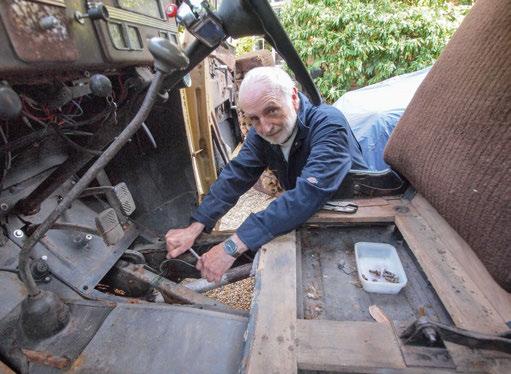
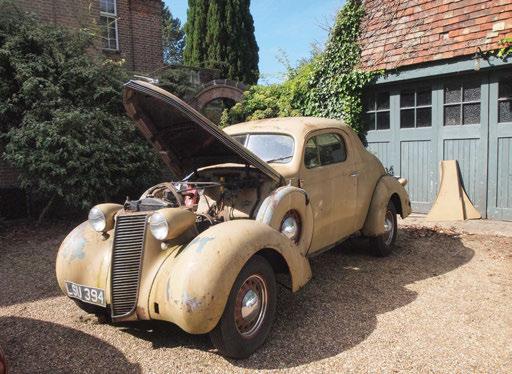
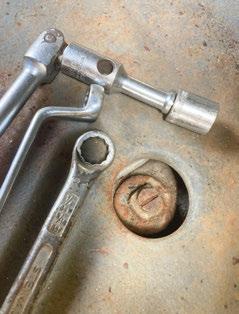
any length of time but with chum Reg standing at the carb and administering squirts of Easy Start, all six cylinders – or perhaps five and an occasional sixth –eventually began firing.
Yippee! A trip around the block beckoned. Select first gear, plenty of revs to keep the engine running, let out the clutch, shoot forwards, hit the brakes to avoid shunting one of my parked cars… only to discover there are no brakes! Despair.
So to another day and another job. The brake reservoir is located under the driver’s side floor, with a tiny access hole and a squareheaded lid below that has had a slotted bolt brazed on at some point in the last nine decades to aid rotation. Inevitably, the lid refuses to budge. The floor panel has to be removed so I can get a better purchase, which is not difficult but is irritating. With the floor out, the lid continues to say ‘I’m not moving!’ Copious easing oil over the next few days and ever-bigger spanners and Mole Grips, and the lid still won’t release its grip on the reservoir, even after I bought a heat gun. Martin, the friendly proprietor of my local garage, has taken pity on me and promises his help.
‘I’ve been battling with a battery drain on my Peugeot 306, which would kill a brand-new 12V battery within 48 hours. I finally traced the problem to a dead internal battery on the factory alarm system’
Matthew Hayward
‘My Triumph has been happily blazing around the country through the UK heatwave and still garners a positive response wherever it puts in an appearance’
James Elliott
‘The Boxster passed its MoT but it’s now waiting on a new microswitch for the electric hood’s windscreen latch. Currently the windows won’t close when the roof is in place – and there’s a delay in supply’ Glen Waddington
‘Just when I think I’m finally ready to test-drive the BeetleSubaru, something else prevents it. This time it was a dodgy relay; hopefully a new one will mean it can move under its own power’ Matt Howell
‘Had a badger strike while driving the RX-8 that wiped out the front bumper. Fortunately, I found a secondhand bumper in the correct Winning Blue and just swapped them over’ Ben Barry
Rolls-Royce and Bentley Heritage Dealers
“ Attention to Detail”
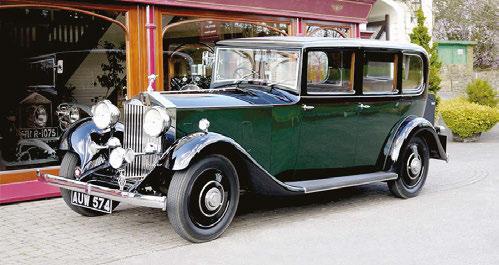
Rolls-Royce 20/25 1933 Limousine by Barker
Black and Brewster Green with Dark Brown hide to front and Beige West of England cloth to rear. Excellent restored condition and extensive history. Fully restored in the 1990’s and a previous winner at the RREC Concours.
Chassis number GBA63.
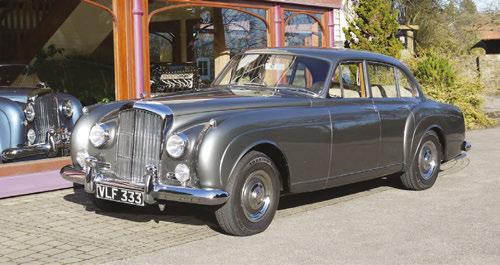
Bentley S1 Continental 1958 Flying Spur by H.J. Mulliner
Tudor Grey with Beige hide upholstery.
Restored to a high standard over twenty years ago.
Known to P & A Wood since the 1980s and sold to the current owner in 2005. Excellent condition and extensive history.
Chassis number BC42EL.
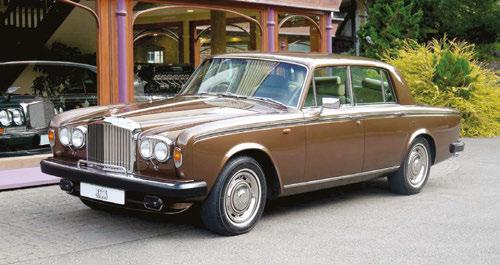
Bentley T2 March 1979
Walnut with Beige contrast Dark Brown hide upholstery.
Only 16,000 miles from new with one owner until 2008.
Known to P & A Wood since 2014.
Exceptional original unrestored example of this rare model.

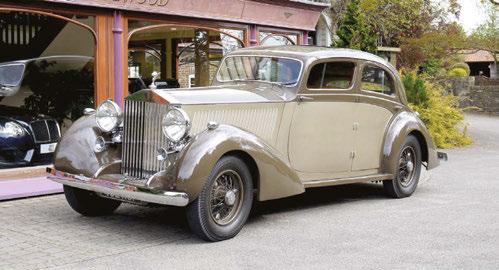
Rolls-Royce Phantom III 1937 Sports Saloon by Gurney Nutting
Sable with Sand sides and Tan Ostrich hide upholstery.
Unique and exceptionally elegant coachwork to design 216.
One family owner since the late 1960’s and fully restored.
Chassis number 3BT35.
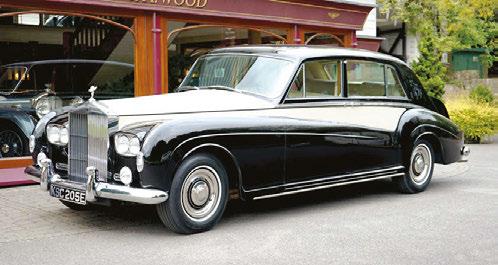
Rolls-Royce Phantom V LHD 1966 Touring Limousine by James Young (PV23 Design)
Black and Ivory with Champagne leather to front and Champagne cloth to rear.
In excellent original condition with only 44,000 miles.
One of only 14 left hand drive PV23 models made.
Chassis number 5LVF65.
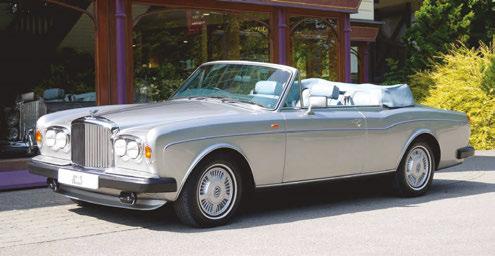
Bentley Continental Convertible August 1989
Silver with Dark Blue mohair hood and Light Blue contrast Dark Blue hide upholstery. Only 32,000 miles with full history and three owners. One of very few made and considered as a desirable modern classic Bentley.
Excellent original condition
Great Easton, Dunmow, Essex CM6 2HD, England
Telephone: 01371 870848 Fax: 01371 870810
E-mail: enquiries@pa-wood.co.uk www.pa-wood.co.uk
Overdrive
Other interesting cars we’ve been driving
The only classic you’ll ever need
1969 Alfa Romeo 1750 GTV
Mark
Dixon
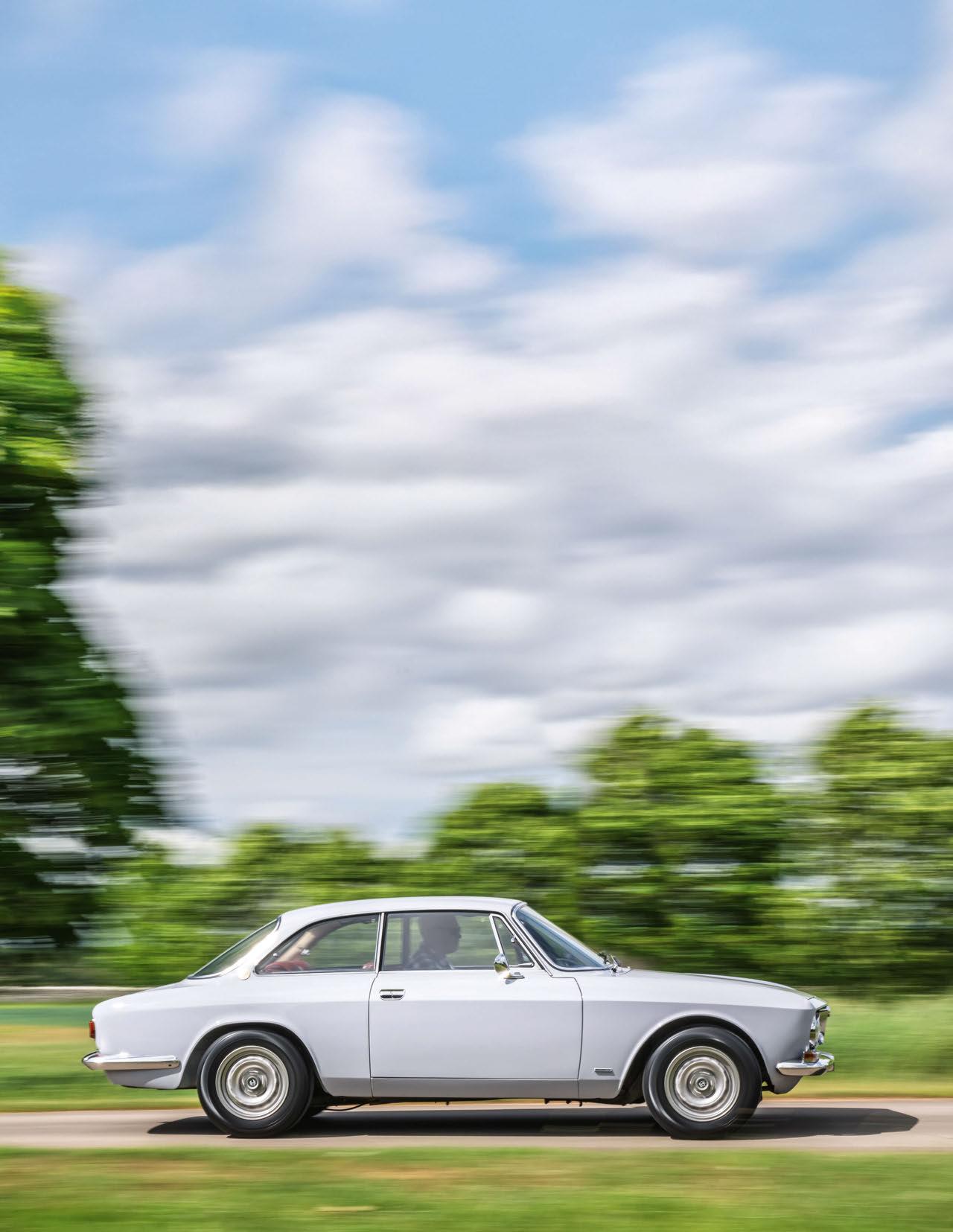
IN MORE THAN 20 years of writing for Octane, one of the cars I remember most covetously was not a Ferrari, a Lamborghini or even a Jaguar (although a D-type is a good contender). No, it was a comparatively humble ‘step-front’ Alfa Romeo 1600 GT Veloce, a beautifully original car in understated battleship grey, which I drove to Geneva for a feature in issue 31.
The car was owned by Philip Kantor, then Bonhams’ man in Europe and now with Broad Arrow, who kept it in the UK, which is why it wore a Brighton ‘CD’ registration – something Philip appreciated since Continental police assumed it was a diplomatic plate and he was therefore immune from parking tickets! It was such a lovely thing that it inspired me to buy my own 1967 Alfa GT Junior a few
months later, equally original in Pino Verde dark green but with the 1300 rather than the 1600 engine. A recent visit to the Hairpin Motor Company’s storage units in Oxfordshire revealed not one but two of these ‘Bertone Alfa’ coupés parked next to each other. One has been owned by proprietor Neil Dickens since 1997; the other’s currently for sale at thehairpincompany.co.uk, and Neil gladly allowed me to take it for both a metaphorical and a literal spin down memory lane.
It’s a Series One 1750 GTV from 1969, the first year that these coupés lost their distinctive ‘step-front’ bonnet but gained a power and torque upgrade when the 1600 twin-cam was superseded by a 1750.
It really is hard to think of a better 1960s classic than a Bertone Alfa coupé. The engines
are revvy but reliable; parts are readily available; they all have five-speed gearboxes and disc brakes… and, of course, they are super-stylish. They’re just so usable. Which explains why Neil, who could own virtually any classic, has hung onto his 1750 for 28 years – and why he’s bought and sold our featured car a couple of times since first acquiring it in 2008, always making sure it went to the kind of buyer that would appreciate it.
Resident in Italy until the early 2000s, this Alfa had a repaint in its attractive and unusual light grey/ lavender shade shortly afterwards and duly won the Alfa Club national concours. The interior is totally original and looks virtually new; only the carpets show some fading, though it would be criminal to replace them. Particularly nice touches are the
‘That Alfa twin-cam rasp builds to a crisp snarl when you pile on the revs’
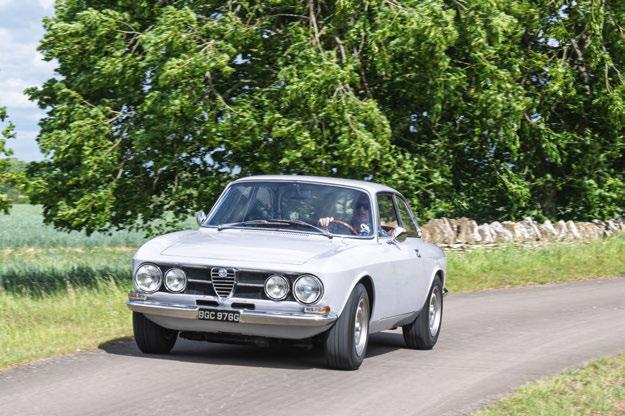
huge, cowled Miura-style instruments, and the pair of chromed levers tucked down under the dashboard for the driver to adjust choke and throttle settings.
I’d forgotten how much room there is in the footwells, and the way the gearlever sprouts towards you from the waterfall of the centre console. But that Alfa twin-cam rasp is less easily forgotten, as is the way that it builds to a crisp snarl when you pile on the revs. The power delivery is superbly linear and this compact coupé feels seriously quick, yet fabulously well-suited to narrow B-roads. It’s currently wearing a set of Autodelta replica alloy wheels,
Left and bottom
Alfa is perfect for Cotswolds country lanes, but that fifth cog means it’s civilised on motorways, too; near-frill-free interior is surprisingly roomy, with gearlever sprouting from centre console.
and the wider tyres make the otherwise delightful steering a little heavier at parking speeds – but not excessively so, and the original steelies come with it.
If you want to own only a single classic, take it from me, you won’t regret choosing a Bertone coupé. And consider this: not long after I borrowed Philip Kantor’s grey 1600 back in 2006, he sold his Ferrari Daytona and replaced it with a 1965 Alfa GTA. Enough said.
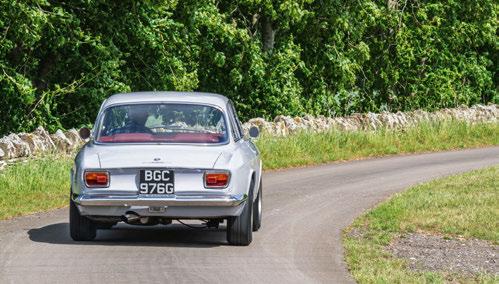
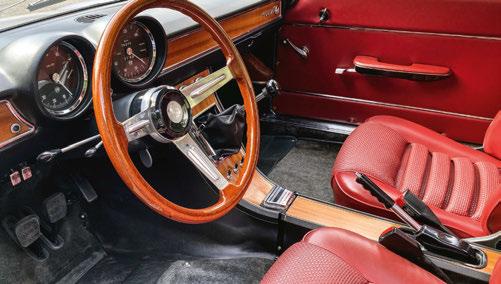
Convenience shopping
2005 BMW 330Ci Glen Waddington
THAT PORTAL TO everything that could be delivered to your door – eBay – commissioned a survey, asking motorists which technologies they couldn’t live without. Parking sensors topped the list, followed by USB ports and Bluetooth connectivity. Of course, those have been standard fitment in new cars for a few years, but what if you could fit them in something a little older and more interesting?
That something in this case is an E46 BMW 330Ci. Old enough for that slightly rawer, more connected driving experience yet refined and solid enough for daily use. And hence possibly the perfect recipient of some aftermarket tech. Following the survey, eBay put its money where its research had taken it, sourced this rather lovely 330Ci (via its own portal) and applied a search via the Official BMW eBay Store as a showcase of its own aftermarket inventory. Oh, and the new Michelin Cross Climate 2 tyres came via eBay’s one-stop tyre installation service.
The work has been carried out by Hannah Gordon, who appears on the Repair Lot and Motor Shed Squad TV shows. The BMW is evidently in good nick and came with a full MoT so Hannah concentrated on the upgrades, the list of which includes a Gladen speaker system, Xtrons stereo head unit with Apple CarPlay (it’s styled to fit the E46 dash with matching fonts and backlighting), dashcams, blindspot detection, a reversing camera and a head-up display. Hannah is at pains to point out how all the wiring was concealed behind trim panels and the headlining.
None of it seems obvious at first, but having your road speed projected onto the windscreen at eye level is a nice touch, and the blindspot

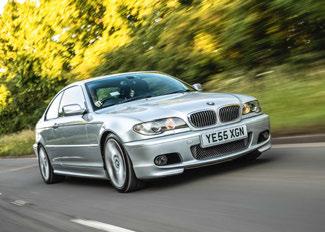
detection blinks where doortrims meet the A-pillars. Plush floormats, a new leather-covered M-sport gearknob, M-sport sill covers and new wheel centre caps are cosmetic finishing touches. All of which does indeed bring some modern-style functionality to a burgeoning classic: E46 values have left the ground floor and the lift shows little sign of being recalled from an upper storey.
It’s a rewarding car to drive, that zingy 3.0-litre straight-six offering a broad powerband with scintillating vocals, the six-speeder snicking from gear to gear. There’s a refined and buoyant ride and its build quality manifests itself in still-immaculate panel fit and a rattle-free interior even as the odometer heads towards 90,000 miles. The only dynamic letdown is the E46’s slightly ponderous steering. I’ll let you know if eBay comes up with an answer for that.
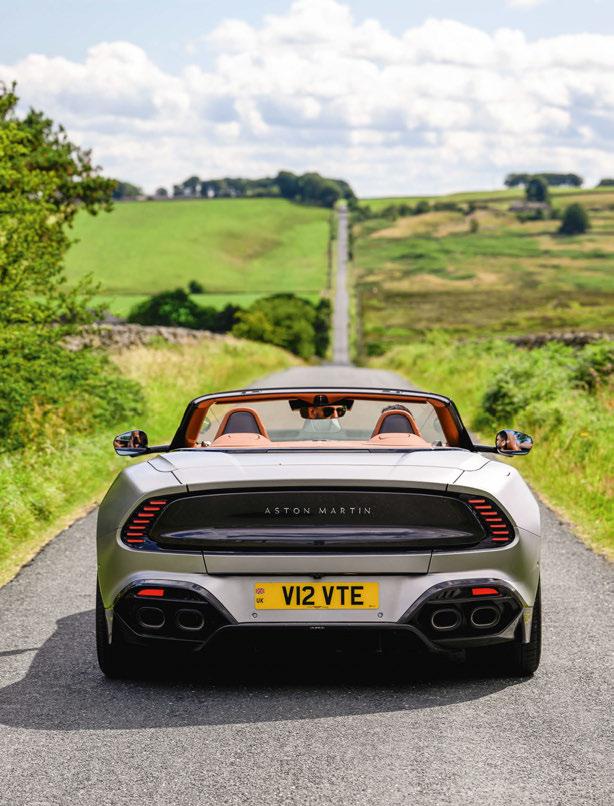
Flying high
2025 Aston Martin Vanquish Volante Mark Dixon
LAST YEAR Aston Martin gave Ferrari a less-polite version of the Churchillian two-fingered salute by launching its 824bhp Vanquish Coupé a fortnight after Ferrari showcased its 819bhp 12Cilindri, those extra five brake horsepower giving the Vanquish an unbeatable hand in hypercars Top Trumps
Now, Aston has brought out a convertible Volante version, which shares with its Coupé sibling the title of ‘most powerful front-engined production car in the world’. The underpinnings are, not surprisingly, identical to those of the Coupé that we featured in Octane 259: a twin-turbo 5.2-litre
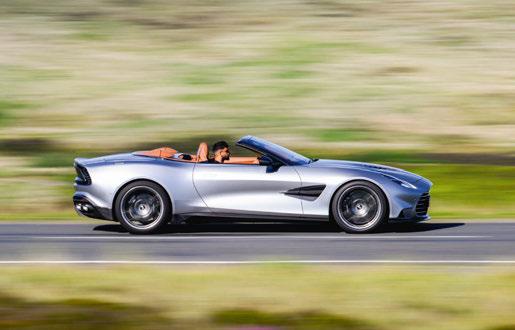
V12, rear-wheel drive and a superfast e-diff. Top speed for the Volante is quoted as 214mph, with a 0-60mph scorch of 3.2sec.
It’s a hugely dramatic car, the gaping maw of its front grille more aggressive and definitely less subtle than the 12Cilindri’s Daytona-esque treatment. It’s notably wide, 2120mm across the door-mirrors (half an inch short of seven feet), and it’s long, too, 360mm more than a Vantage Roadster. That said, it never felt unbearably large on the North Yorkshire roads of our test route – although it probably wouldn’t endear itself to locals encountered on, say, Cornish lanes – and you quickly acclimatise to the dimensions.
That’s helped by steering with a pleasing amount of heft to it, and a ride quality that is remarkably good for such a performancefocused car. Perhaps the sheer weight of the thing (1880kg dry, so nearly two tonnes on the road) steamrollers bolshie tarmac into submission but the suspension, by coils with adaptive dampers, never feels uncomfortably jiggly; toggling through the selectable damper settings reveals that the softest option often suits rapid progress across poorly surfaced roads better than the stiffer alternatives, since the suspension soaks up the rough stuff rather than trying to fight it – yes, the firmer damping will give better control through troughs and over crests but it also demands that you work harder to keep things nailed down elsewhere.
Just as in the Coupé, the V12
delivers real accelerative punch as it spins right up through the rev range, its exhaust note evolving from a pleasantly muted gurgle at the bottom end into a fully fledged scream as it nears the 7000rpm redline.
Back in the real world of daily driving, there’s a reassuring proliferation of proper old-school buttons and metal knobs to control the features you use the most – heating, audio volume and so on – and you can instantly disable all the mandatorily legislated driver ‘safety aids’ with a single button press followed by a couple of rapid touchscreen taps to confirm, or you can pre-set a selection of the ones you find useful. What a difference that makes to easing the frustration caused by intrusive technology.
Obviously, where the Volante differs from the Coupé is in having a folding soft-top, which opens in 14sec and closes in 16sec, both at speeds up to 31mph. It’s as beautifully engineered for insulation and noise absorption as you’d expect at this price level, but the view out back with it raised is notably slit-like. Best to keep it down and enjoy the reason for buying a convertible in the first place.
As for that price: likely cost will be £360,000 plus options, so let’s say £380,000 to be on the safe side. That’s a hell of a lot of money, but it’s one hell of a lot of car, too.
Above left and below
Looks as dramatic as it feels, though inside is calmly luxurious.

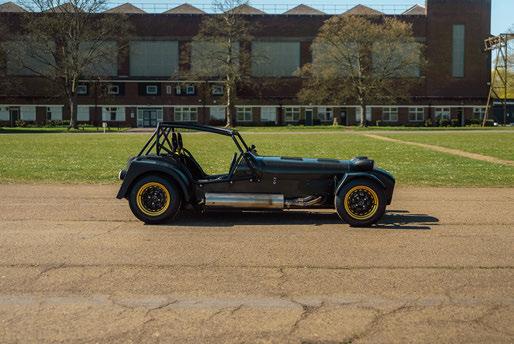

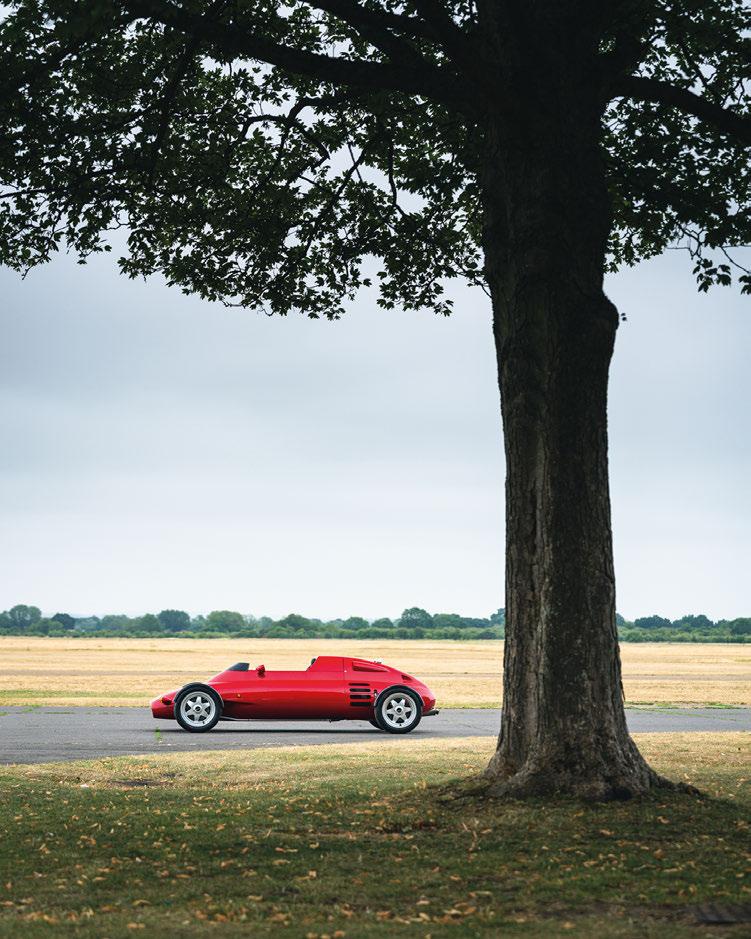
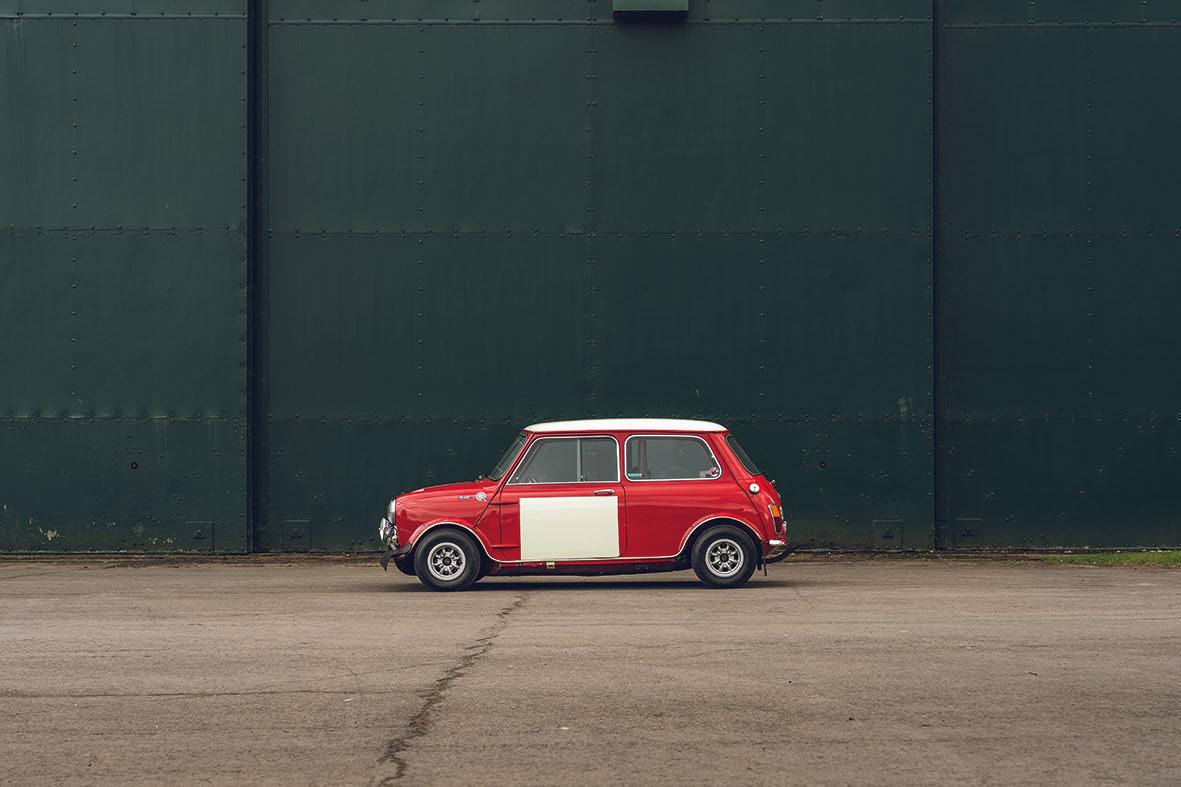



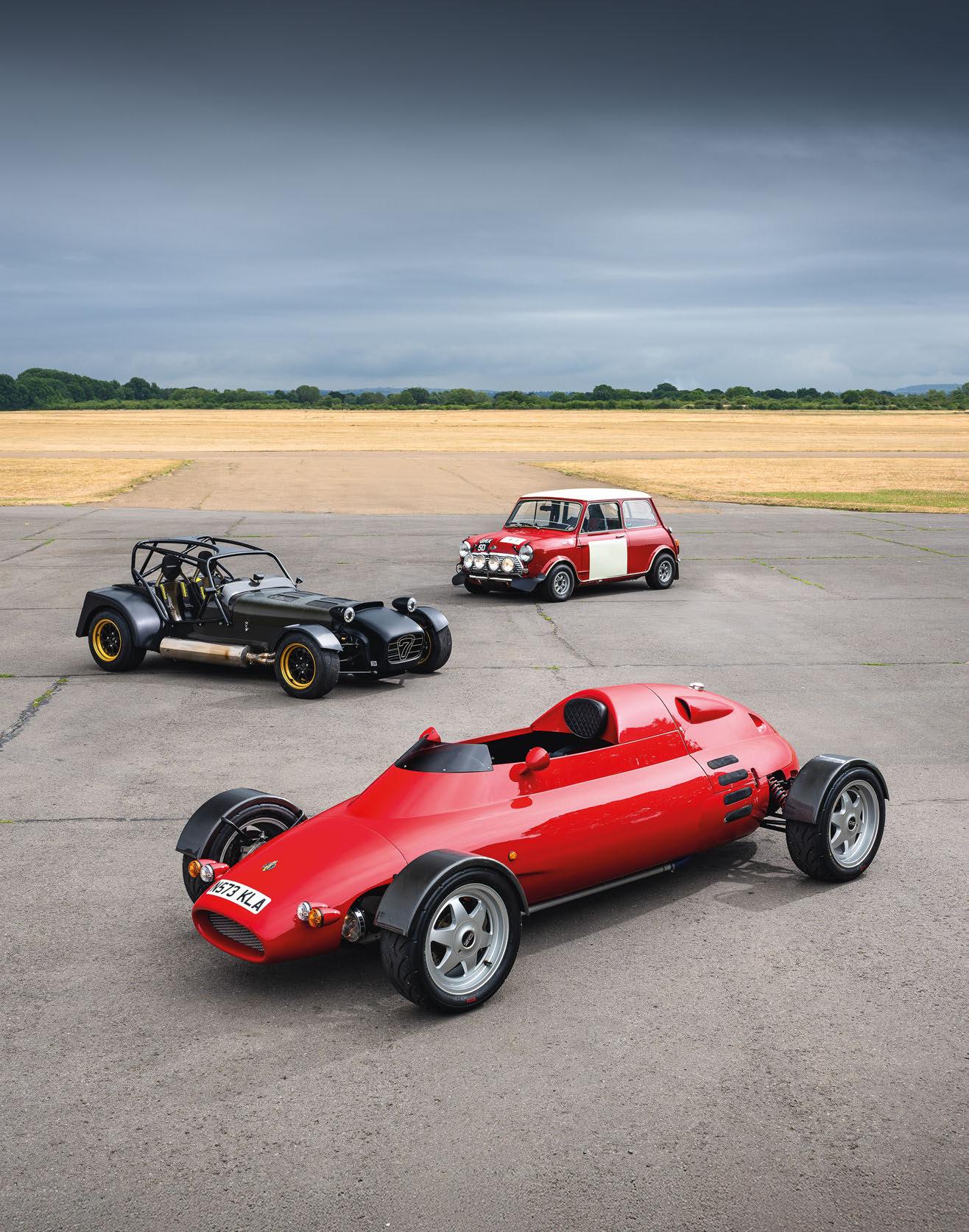
Gone but not forgotten
Words by Richard Heseltine
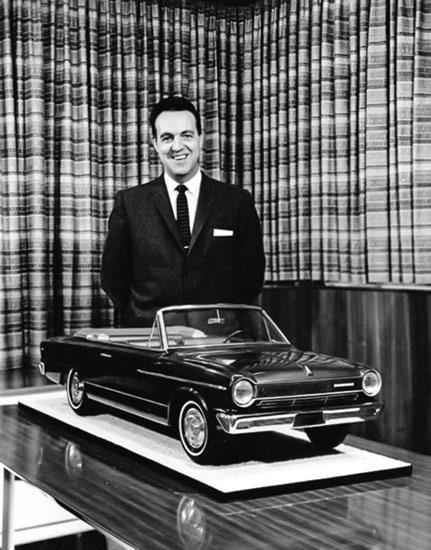
Dick Teague
This stylist got off to a shaky start before discovering the magic of platform sharing
HE WAS A MASTER of expediency, a designer who could garnish parts bin cast-offs with a little styling magic and create a new model in no time at all. Richard Arthur ‘Dick’ Teague knew how to make a little go a long way, but then he had plenty of practice. This urbane designer was one of the USA’s premier automotive stylists for more than half a century, but he spent most of that time on the backfoot. Forever trudging forwards, perennially fighting his corner, he was responsible for many a miracle, this being the man who made AMC products hip.
That he achieved such an improbable feat is all the more remarkable given his start in life. Born in Los Angeles on Boxing Day 1923, Teague seemed to be persistently afflicted with one ailment or other. Nevertheless, his artist mother Thia had big plans for her offspring, landing him a role in the Our Gang movie ‘shorts’ when he was just five years old. Dick changed sexes to become Dixie, but his early brush with the limelight ended abruptly after a drunk driver spun out and hit the car the youngster was riding in. Teague was propelled through the windscreen, but survived minus an eye.
In his teenage years, Teague discovered hot rodding and took to racing his ’32 Ford hi-boy roadster before World War Two intervened. He escaped the draft due to his impediment, but dropped out of art college to become an illustrator for the Northrop Aircraft Corporation. Scroll forward to October 1947 and the 23-year-old joined Oldsmobile as a designer, only to instantly fall foul of its studio head, Art Ross. His face didn’t fit and he found himself bouncing between General Motors’ brands before joining a defence contractor in New Mexico.
Then came a phone call that changed everything. In 1952, former GM man Frank Hershey talked Teague into taking a senior styling role at Packard – the downside being that this grandee of the American motor industry was on its knees. The Teague-styled Balboa and Predictor concept queens wowed showgoers, while his Caribbean production car momentarily staved off the inevitable, but it was all over by 1958.
Teague moved to Chrysler, where senior designers William Schmidt and Virgil Exner were at war with each other. He later reflected in Road & Track magazine: ‘It was the worst 18 months of my life.’
On 3 September 1959, Teague accepted the position of assistant director of styling at American Motors, and soon wished that he hadn’t. The Wisconsin independent’s output was starved of élan, the point being rammed
home when his youngest son requested he be dropped off a couple of blocks from school: he didn’t want his classmates to see his dad’s Rambler company car. It was a salutary lesson for the designer who ultimately became vice president of AMC (a position he would hold for 23 years, an industry record).
Not that vitalising AMC was the work of a moment. After several false dawns, Teague persuaded the conservative board that it needed a Pony Car of its own to challenge the Ford Mustang – or rather two. Remarkably, AMC managed to launch the Javelin and AMX within six months of each other in 1967-68, and they sold well. The positive press helped, too. Buoyed by the affirmative response to the non-running AMX/2 show car at the 1969 Chicago Auto Show, AMC then sought to fend off the forthcoming Ford-sponsored de Tomaso Pantera with its own mid-engined rival: the AMX/3.
Sadly, tragically even, it didn’t make series production. There wasn’t enough money in the kitty. There never was, but, distinct from many of his contemporaries, Teague was acutely aware of the bottom line and where it was located. Models often shared platforms, not least the Gremlin, which was based on a shortened Hornet chassis. While muchmaligned, it had a look all of its own and some 670,000 were shifted over eight years. That was quite the return on the $5m spent on development. Glass, inner doors and a lot more besides were often shared between cars; nothing was wasted.
Then there was the AMC Pacer. It wasn’t going to win many contests given the uninspiring underpinnings. It was all about product differentiation; sticking out from the crowd for better or worse, and it sold in reasonable numbers regardless of what anyone says. However, while subsistence-led design may have been the mother of invention, that didn’t necessarily equate to job satisfaction. Trying to persuade an incredulous board that his minivan concept was a winner proved fruitless. It fell to Chrysler to carve out that niche. And to make a mint in the process.
Then Renault bought into AMC. Badgeengineering didn’t appeal so he walked away in 1984. Save for a few freelance gigs, that was it. Teague tended to his car collection, which spanned brass-era veterans and supercars. He died in May 1991.
From all accounts an affable and charming man, he was prone to playing down his achievements, telling Automobile Quarterly: ‘I should’ve worked harder but mom always said, “Better to be a has-been than a never was.”’ He was neither.

















































Mark Roberts
Originally a technical illustrator at Lotus, who moved to McLaren and ran the design studio for 30 years, and is now a creative consultant











1. For the McLaren F1 owner’s manual, Gordon Murray told me to deliver something that was significantly be er than our competitors’. Nobody reads owners’ manuals and I wanted to change that to reflect the handbuilt nature of the car and sense of occasion. Pencil drawings with watercolour washes seemed appropriate. I hate human figures and hands in manuals – they just look wrong against the product – so I used crash dummies and it really worked.







2. When I was about ten, I found a couple of my parents’ enamel Butlin’s badges in a tin –stunning translucent enamel, vivid colours and beautiful Deco designs. I have bought so many over the years and even approached Fa orini (who made the originals) to make the badges for the F1. My wife bought me the crab, the holy grail of Butlin’s badges, for my last birthday.
































3. I started reading Tintin books when I was a kid and loved the clean, crisp graphics, but when I first saw that Tintin rocket, it was sci-fi perfection. I got this one modelled in Alias and then 3D printed with a carbonfibre material –it’s so cool. And BIG!
4. My ’73 Rolex Explorer is my favourite watch: clean, minimalist design, steel case with a gilt dial and oyster bracelet.




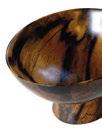
















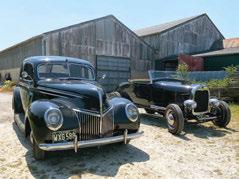
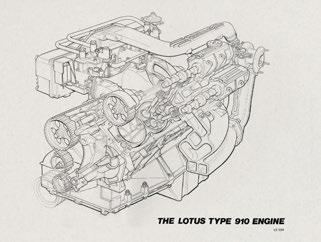







5. This tea bowl was a gi from a Japanese friend. We met at a show in Tokyo; he made beautiful driving boots and later collaborated with McLaren. I’ve always admired the way that Japan takes such pride in its traditions and cra smanship – even buying a cake is a ritual.
6. My dad gave me a Heath Robinson book and I was fascinated with the detailed artwork, the engineering notes and the crazy inventions and humour. It ultimately resulted in me training to be a technical illustrator, so whenever I see an old Heath Robinson book I have to buy it.
7. The ‘39 Ford deluxe coupe was a travelling salesman’s car that became a favourite for moonshiners. I got the stance sorted on mine, then fi ed twin Stromberg 97 carbs and straight-through exhausts. I love the flowing lines of the car and it still looks very elegant tearing down Pendine beach. The ‘29 Model A roadster, like the coupe, has a lovely old flathead V8 but with a period supercharger.
8. Ganesh was a gi from George Harrison. During his McLaren F1 build, George visited regularly and I did lots of custom artwork, mostly Hindu deities and symbols that became jewellery for his car. He also asked me to customise a Fender Stratocaster to suit his car.
9. I did this 910 engine cutaway in my first year at Lotus. I spent a week doing the pencil work and then another week for the ink, using Rotring pens and ellipse guides. I hid the le er K in the exhaust manifold, the initial of my then girlfriend, now wife – romance isn’t dead!
10. The Alchemist Kraken Amplifier is a great class A amp with a wonderful smooth sound. It gets very hot, has crazy cooling fins, but my favourite part is that it could have been on the flight deck of Gerry Anderson’s Stingray
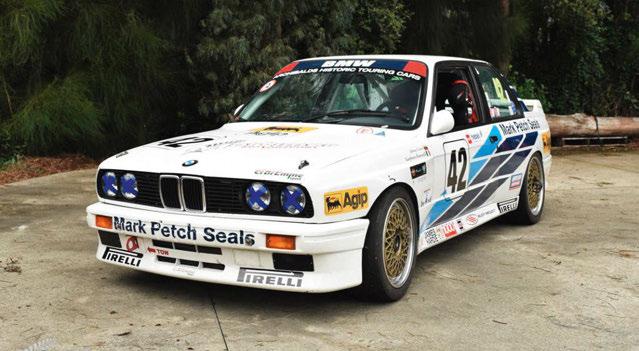
1987 BMW E30 M3 – WTCC Brancatelli/Cecotto POA
Grp A ex Johnny Cecotto, Gianfranco Brancatelli car, chassis number 1 Raced by myself in Historic NZ Events and other drivers like Denny Hulme, Brett Riley, Paul Radish and a winner in this part of the world of Bathurst 1000km.
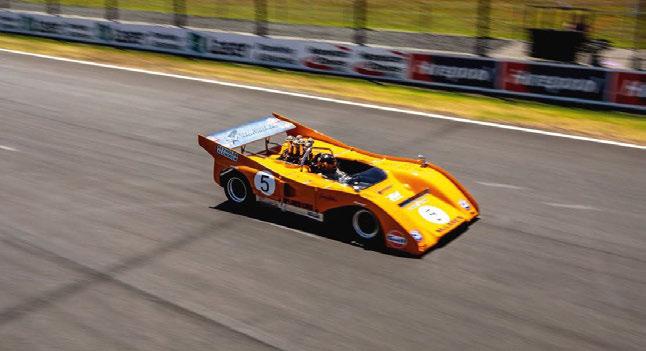
1971 McLaren M8E POA
McLaren M8E with F body as raced by many famous drivers in the USA and campaigned by me in NZ Historic Sports Car events.
WE HAVE HISTORY FOR EACH OF THE CARS WE ARE OFFERING
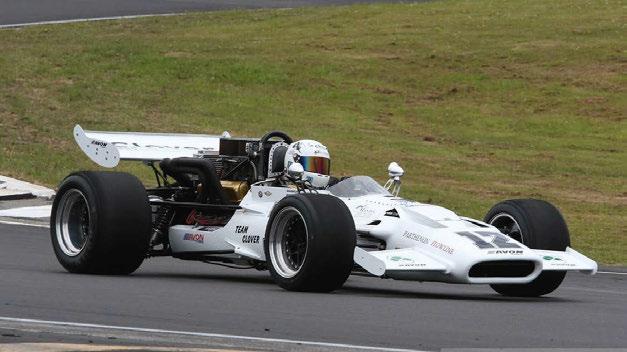
1969 Surtees Formula 5000 TS5 chassis 02 POA Surtees Formula TS5 chassis 02.F5000 ex James Garner USA, Jackie Pretorius S.A and myself NZ, Australia, UK.

1984 Mazda 84g-07 Mazda WEC POA Mazda 84G Rotary 13B we ran this at Goodwood in 2019 the only one in the world Chassis number 7 signed by the March constructors at Goodwood while we ran the car in UK.
by Delwyn Mallett
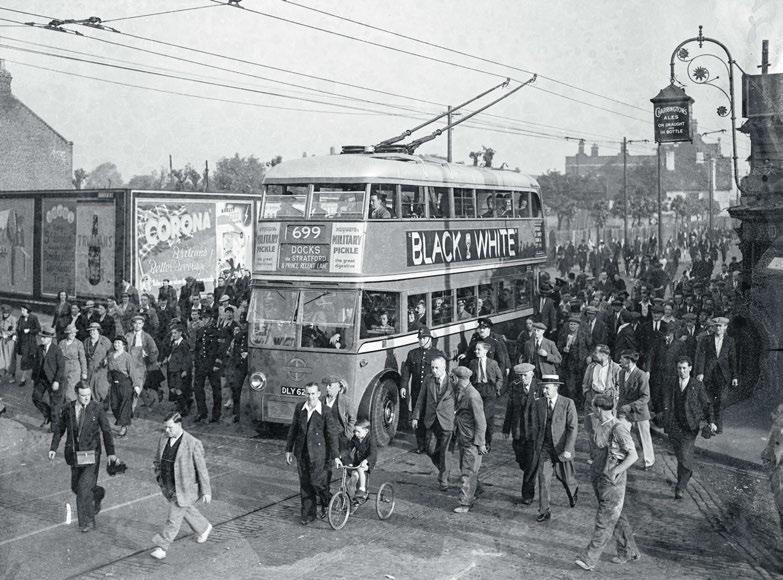
Trolleybuses
More versatile than what came before, cleaner than what came next
CONSIDER FOR A moment, as we are pressured into adopting zero-emissions vehicles and the ban on the sale of fossilfuelled vehicles becomes imminent, that Britain, in public transport at least, was once the world’s most electrified nation.
I grew up in West London suburbia, halfway between ‘The Smoke’ and Uxbridge, that point on the A4020 beyond which as a child I thought civilisation ended, and have to confess to being old enough to remember well the silent and stately progress of the muchmissed trolleybuses that used to ply that route.
In the first half of the last century, trolleybuses gradually replaced electric trams as the prime way of moving people around many British cities. In retrospect it seems that then scrapping the emissions-free trolleybuses and replacing them with particulate-belching diesel buses was an error.
In 1807, the Welsh seaside town of Mumbles (from the French mamelles for breasts, due, apparently, to a brace of distinctive offshore features!) was the first in the world to get a passenger tram service.
London’s first tram started to trundle in 1861, horse-drawn and the work of the almost (though not quite) appropriately named
American entrepreneur George Francis Train. The investment was not a success and his three lines lasted only a year before being ripped up. It took almost a decade before the burghers of London decided that trams might actually be a good idea and in 1870 tracks started to radiate across the metropolis.
Horses, underground cables and even steam were the motive force, with electric power arriving in London in 1901, 16 years after Britain’s first electric tram went into service in Blackpool. But trolleybuses were sneaking up on trams, requiring less infrastructure and being quieter on their rubber tyres, better at climbing inclines and, within limits, more manoeuvrable around obstructions.
German electrical engineer and industrialist Werner von Siemens was instrumental in electrifying trams, starting the first commercially successful service in the outskirts of Berlin in 1881. Meanwhile, Siemens’ younger brother William, the company’s representative in Britain, wrote a paper in which he proposed that an omnibus could be powered by electricity supplied by cables suspended over the street on poles and connected to the vehicle by wires dangling from rollers running on the cables.
Left
On 6 June 1937 the mayor of West Ham drove a trolleybus out of Greengate Street depot at 6.43am to start London Transport‘s conversion from tramcars.
In 1882 Werner Siemens experimented in a suburb of Berlin with a modified landau carriage, dubbed the Elektromote. The experiment lasted less than two months but, with electric motors driving the rear wheels by chain, it was the daddy of all trolleybuses.
Trolleybuses arrived in the UK in 1911, with services starting in Bradford and Leeds, and London not catching up until 1931. The first trolleybuses in London, for reasons not adequately explained, acquired the moniker ‘Diddlers’ among the staff. Diddlers rode on a conventional four-wheel chassis but later in the 1930s the fondly remembered largercapacity 30ft six-wheel trolleybuses began to appear, because legislation required vehicles over 26ft to have three axles.
At its peak London’s trolleybus system was the largest in the world, with 1811 buses – of which one was unique. Built by Leyland in February 1939, the ‘1671’ reversed the normal layout, having four wheels at the front and tandem steering. This configuration, not uncommon in the trucking world, was referred to as a ‘Chinese Six’ – an apparently derogatory term that would raise eyebrows today. Bedford later adopted the layout for its VAL 14 coach, famously to feature as the Mini-decanting transporter in The Italian Job.
A whole thesis could be written on the mechanics of trolley poles, one for positive, one for negative, and their various suspension systems. They were kept in contact with the overhead cables by spring pressure and the poles swivelled enough to allow the bus to overtake parked vehicles or obstructions but not another bus. It was not unknown for their grooved shoes to lose contact with the cables and the procedure for reattachment provided entertainment for small boys and passengers as the conductor decanted a long bamboo pole to push the poles back into position.
Although the trolleybuses did not require tracks, they still needed expensive-to-maintain and disfiguring aerial infrastructure.
Around 1954 my dad, who worked at the AEC (Associated Equipment Company Ltd, London Transport’s bus maker), announced that they were working on a new bus, revealed to the world as the Routemaster. The days of the trolleybus were numbered. My route, the 607, was ‘dewired’ in 1960. London’s last remaining route closed on 9 May 1962; with unusual foresight, the first Diddler had been preserved and was taken out of retirement to mark the end of an era. Bradford, where the British trolleybus age had begun, soldiered on with the last such service in Britain, finally succumbing in March 1972.
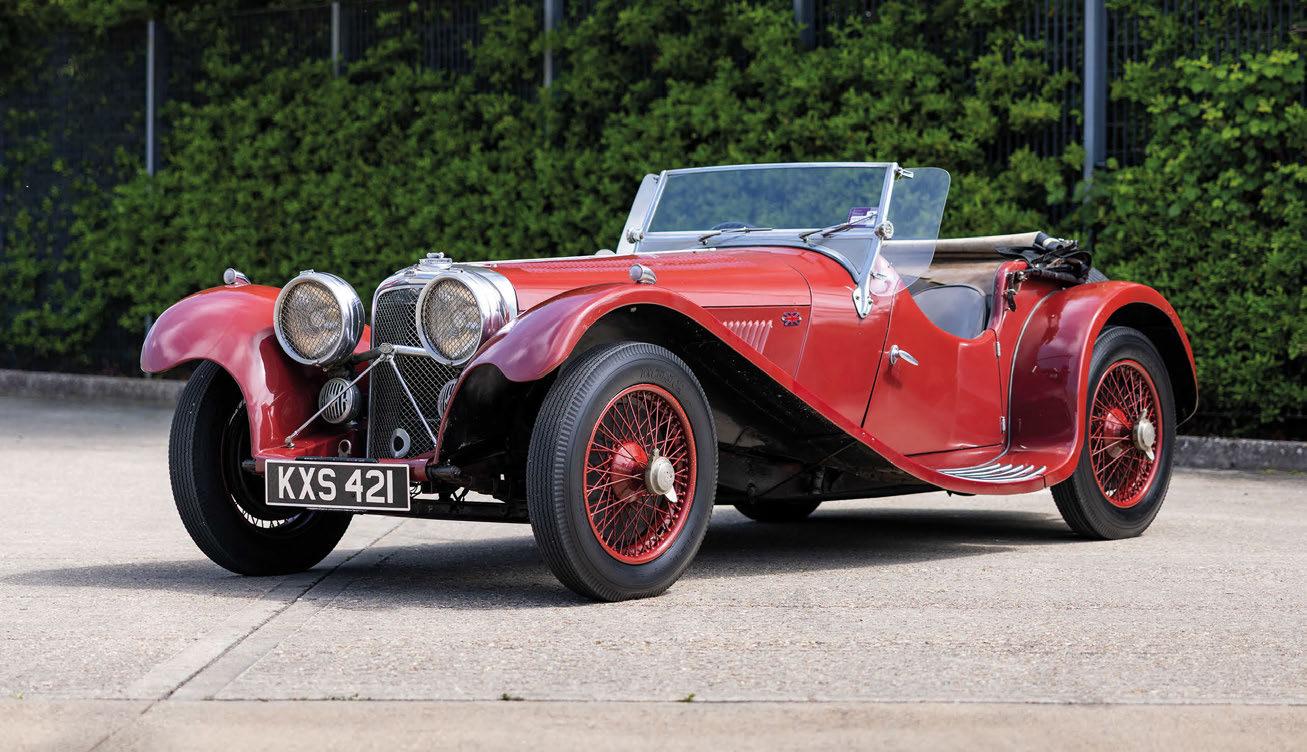
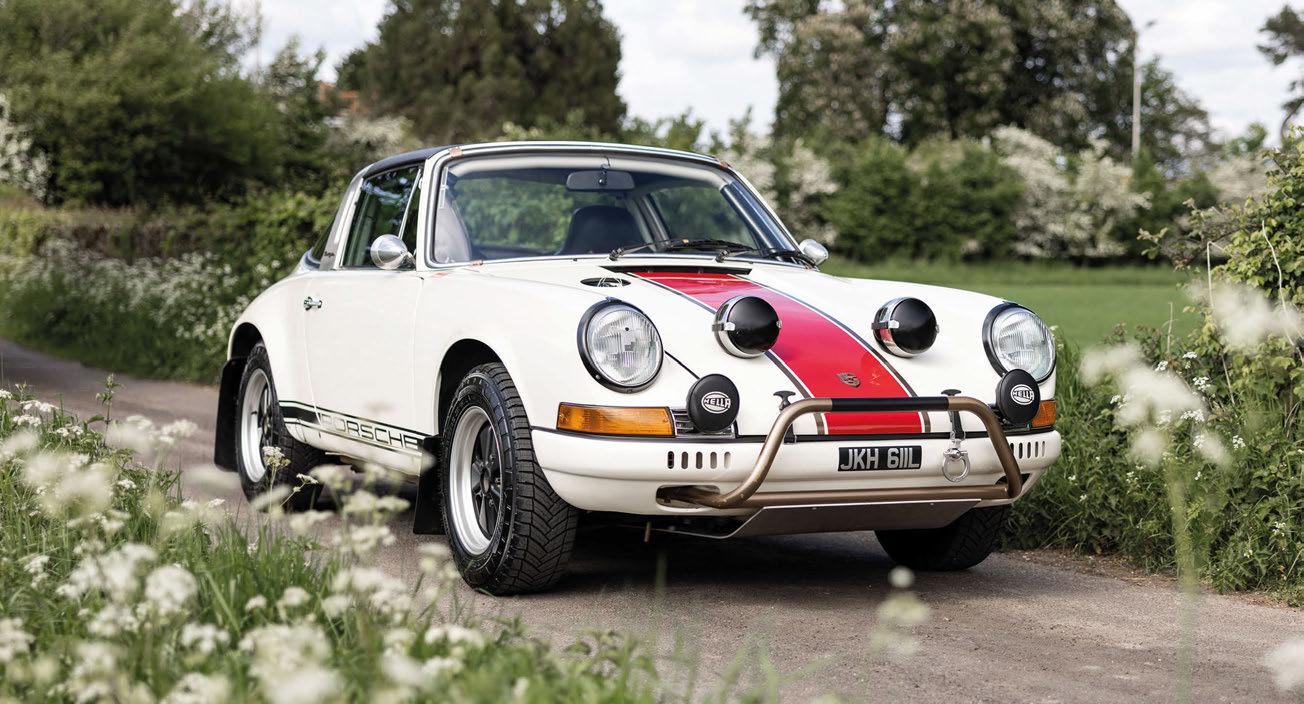


Mark McArthur-Christie
A watch fit for a hero
The price you paid for an IWC MkXI navigators’ watch was to lay your life on the line
SI ING IN RETIRED Wing Commander Gordon Lear’s conservatory, cha ing over co ee about his IWC MkXI navigators’ watch (as he recounts a completely unprintable story about the MP Peter Bo omley’s visit to an F radar station), I’m reminded of what a privilege it is to write about watches and the people who own them. It’s a rule that the more exceptional their lives or achievements, the more modest and unassuming they are.
Lear is far from the silver-spoon Wing Commander caricature. He worked his way up from a scholarship at Gravesend County Grammar School to being a Coastal Command Cat A, VIP-quali ed navigator who ew Lord Mountba en in Northern Ireland, navigated countless air-sea rescue missions, and ranged from the UK to Borneo. e start to his F career was typically direct and honest. When asked at F Hornchurch why he wanted a commission rather than doing national service, he replied that he was married. When the recruiting o cer asked him what that had to do with it, he simply said: ‘Well, I can’t a ord to do national service!’ e response was a roar of laughter: ‘I’ve been doing this job for over a year now. at’s the rst honest answer I’ve had.’ Lear is convinced that’s what got him in.
Like all F navigators up until the early 1980s, he was issued with an IWC MkXI watch. In 1946 the Ministry of Defence decided it needed a new standard for navigators’ watches: No. 6B/346. e earlier ‘Dirty Dozen’ 1940s-spec military watches just weren’t up to the job of surviving a cockpit environment and remaining accurate. A er all, for every ve seconds your watch is adri in one of the Bristol Sycamore helicopters in which Lear served, you’re one- h of a mile o target. On an air-sea rescue mission, that ma ers.
Not that it was all serious ying: ‘In Northern Ireland, at the end of an operation, we could come back as we liked. A couple of the lads were ying over a stately home and someone came out and waved, so they landed. When we asked where they’d been, they told us they’d been invited for breakfast with the Lord Lieutenant of Fermanagh. e game was on then; we were o en waved down for breakfast at some of the big houses. It got to the point where Lord Brookeborough, Prime Minister of Northern Ireland, would complain if we didn’t drop in.’ e MkXI that enabled Lear and colleagues to navigate to breakfast housed the IWC cal. 89, probably the toughest three-handed chrono movement ever. It runs at 18,000bph, has a Breguet hairspring and the seconds hand is indirectly driven, so it’s more stable. It also has a so iron dial and inner case that shield the movement from magnetism.



ONE TO WATCH



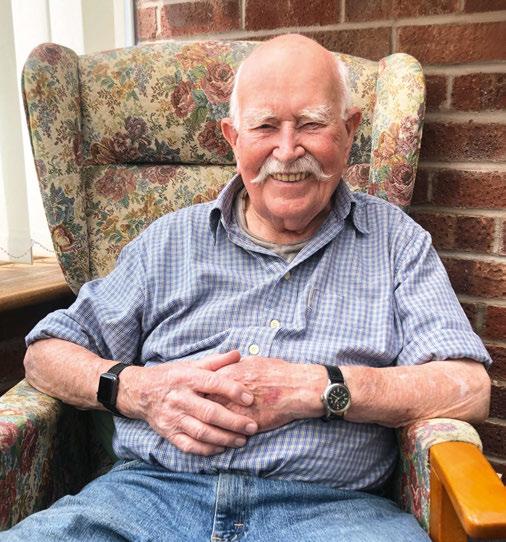
ese watches were so important – and valuable – that the Chronometer Section at Herstmonceux tested them before issue and, uniquely, took them back every year for servicing. Somehow, Lear’s never made it back to Sussex, so retains its original radium dial. Most were swapped out for less radioactive tritium plots in the early 1960s. A er it had seen action all over the world, air-sea rescues and VIP ights, the watch was nally retired to Lear’s sock drawer, only emerging a er Antiques Roadshow showed a similar model. ‘To me it was just my old watch, I didn’t think it was worth anything.’ With fewer than 8000 IWC MkXIs produced in total, an unaltered radium dial is rare indeed. ere are perhaps fewer than 100 le – but there is only one Wing Commander Gordon Lear.
IWC MkXI navigators’ watch
The defi nitive watch of its type, as current values attest
IT’S A MEASURE of how in uential the MkXI has been that you can see its DNA all the way from 1946 in the modern MkXX. Probably the de nitive navigator’s watch – when navigators actually needed a mechanical chronometer – any XI will have seen military service. at means they’ve usually had the dial-swap mentioned above. Find one without a ‘T’ on the face and you have a rarity: an original radium dial. Find one with a ‘12’ at the top of the dial and you have a unicorn: one of the rst issued watches. Prices range from about £5000-plus for a tritium dial to ‘good luck nding one’ for a radium one.
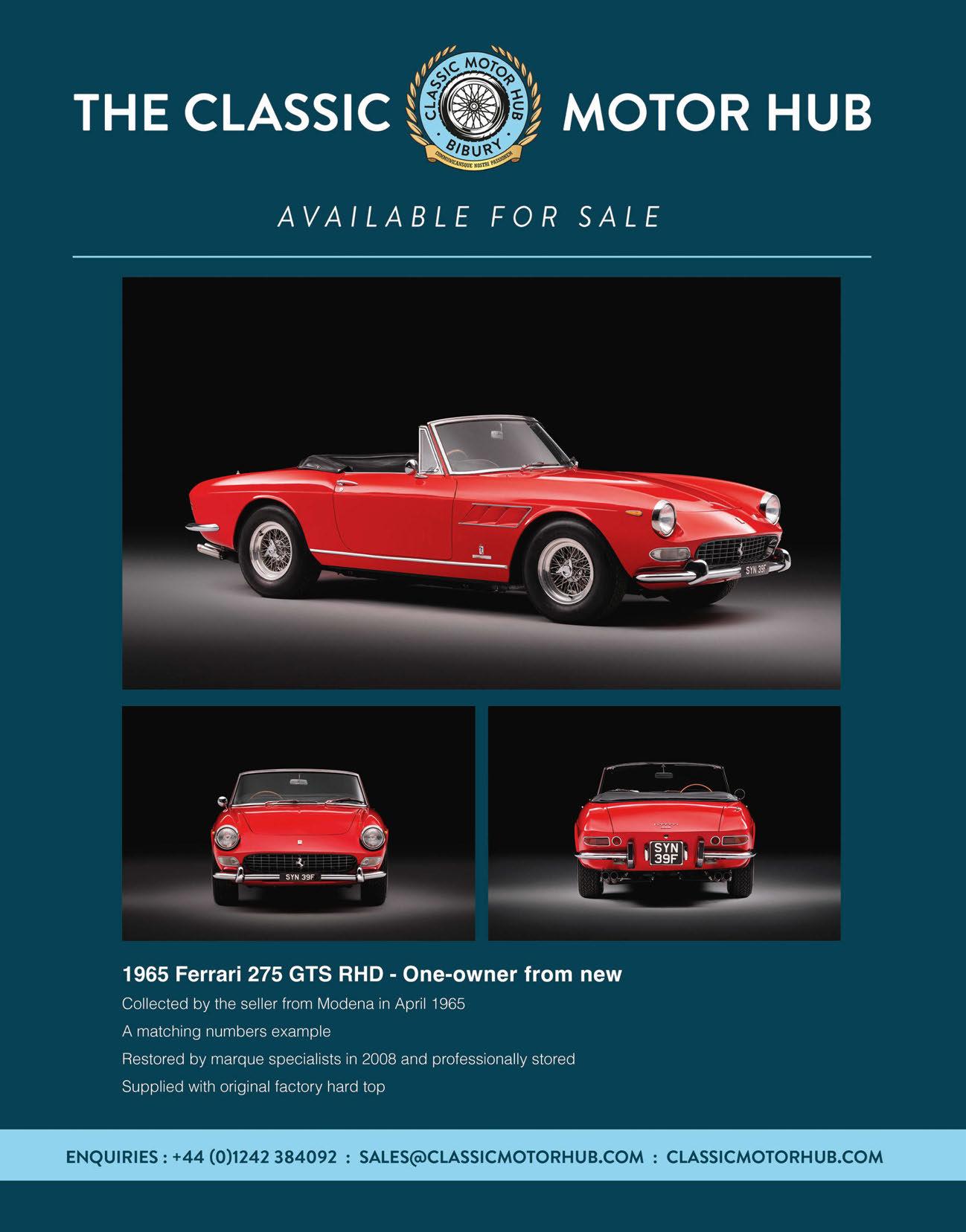
Book of the month
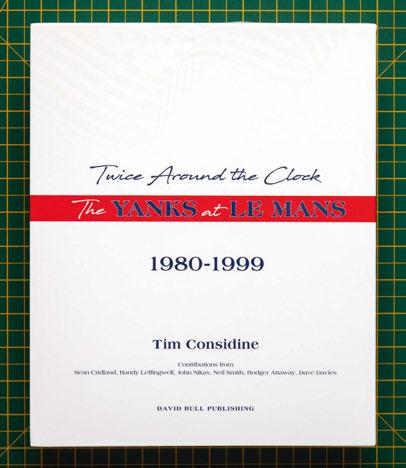
Twice Around the Clock: the Yanks at Le Mans
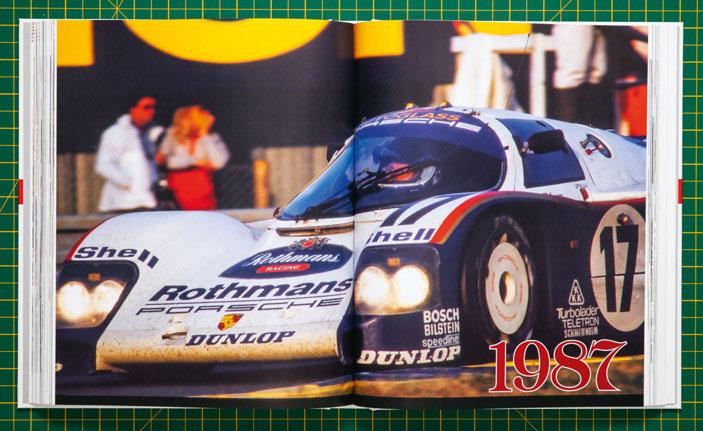
‘You’re going to need a stronger bookshelf’ wrote Glen Waddington, reviewing the first three volumes of this series in Octane 197. That was nearly five years ago, when that set – which covered the period 1923-1979 – also occupied this Book of the Month slot. Now the story is taken up to 1999, and there’s still over a quarter of a century left to document…
Twice Around the Clock’s author Tim Considine is better remembered to many of his fellow Americans for being a Disney movie and TV show teenage star in the 1950s. From the ’70s onwards he moved into photography and sports writing, and this catalogue raisonné of American racers at Le Mans became his ultimate passion project. Sadly, that turned out to be literally so: barely a fortnight after completing the foreword to volume 4, he unexpectedly passed away at the age of 81. The baton was taken up by John Nikas, who
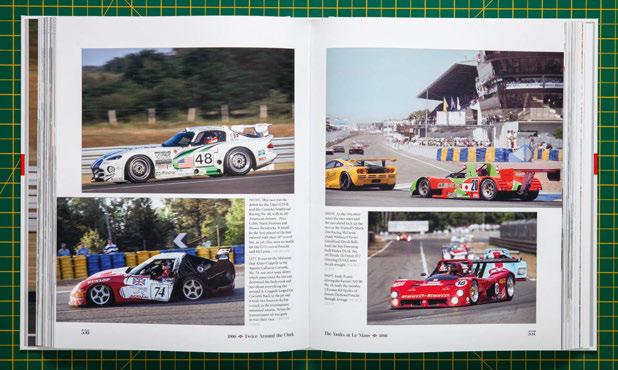
has done an incredible job of completing the project with the help of numerous contributors and, in particular, art editor Jodi Ellis.
The first American driver to race in the 24 Hours was Charles Moran in 1929, but the event really exploded into US consciousness after Briggs Cunningham brought over two Cadillacs for 1950. Ford indelibly stamped the mark of the ‘Big Three’ US car-makers onto it with its famous 1-2-3 GT40 win in 1966 and the growth of top-level US sports car racing via IMSA saw American drivers become regular fixtures. Not just top names in Group C cars such as Porsche 962s and Sauber Mercedes, either; the Yanks were present at all levels –remember Olindo Iacobelli in the Chamberlain Engineering Lotus Esprit 300 of 1993?
Considine did, so Iacobelli’s recollections are included here, just like those of the stars. Each year’s race and its US entrants are profiled in depth, with numerous first-hand accounts – and it’s often the culture clash of the US visitors with the French that leads to brilliant anecdotes.
‘We misbehaved mightily for a bunch of supposedly grown people,’ recalled Camaro driver in 1982’s race, Tom Williams, ‘but we did have fun.’ After drinking a lot of expensive Champagne, Williams crashed one of the ATV race car tow trucks into a lorry: ‘I had a lump on my face the size of a softball. Couldn’t put my helmet on and missed the first day of practice.’
Every other page seems to feature a gem like that to lighten the serious historical record. Originally there were to be seven books in this series; whether the remaining two will ever get published is in the hands of the gods, or rather, David Bull Publishing. For now, however, let’s be thankful that Tim Considine’s vision has been substantially realised.

Forza Ferrari
‘You won’t be able to put it down’ claims former Haas F1 team manager Guenther Steiner on the cover – and for once the hypberbole is justified, for this is a really pacey and engrossing account of Ferrari’s F1 trajectory in the 21st Century (McLaren getting dobbed-in to Ferrari in 2007 by a photocopying shop clerk – and Ferrari F1 fan – called Gary, entrusted with copying stolen documents, is a particularly gripping read). Not a follower of F1? This could be the book that seduces you with its drama.
NATE SAUNDERS, Aurum, £20, ISBN 978 1 8360 0282 6
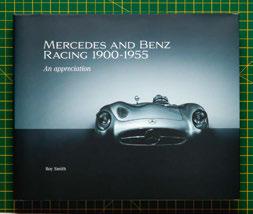
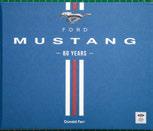
Ford Mustang 60 Years
There’s no shortage of Mustang round-ups, so to speak, but this ‘Ford official licensed product’, as the cover proclaims, is a lively and colourful romp through six decades of a genuine automotive icon, bringing the story into the mid-2020s. Rather than rehash well-charted technical development, this colourful hardback focuses on individual significant cars to tell the story and includes several great ‘barn-finds’. Its designer has gone large with the archive pics and it’s a very attractive new take on an old subject.
DONALD FARR, Motorbooks, £40, ISBN 978 0 7603 8920 1
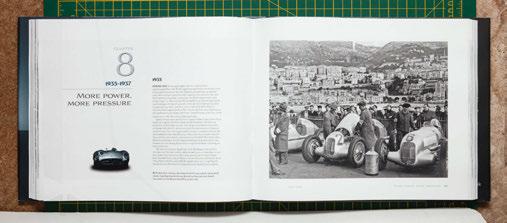
Mercedes and Benz Racing 1900-1955 An Appreciation
It’s fair to say that until just over a year ago, Veloce books were not, shall we say, renowned for their design and production quality – particularly the relatively expensive but much inferior softback reprints of previously published hardbacks. That’s all changed since another British publisher, David and Charles, took the business over in early 2024. Veloce is now an imprint of D&C and has been moved upmarket – which means, yes, higher prices but also a much better product.
That said, the touchy-feely subhead ‘An Appreciation’ on this new release, which at a superficial glance appeared to be a coffee-table book of images lifted from Mercedes’ archive, did not bode well. As the saying goes, however, one should never judge a book by its cover.
Certainly, the hundreds of photos in this substantial 592-page volume are what grab your attention. Many have never previously been published, and there are some true rarities – a shot of US Army-liveried, battle-damaged Mercedes saloons being repaired at Untertürkheim in 1946 is one example; photos of various crudely welded and pop-riveted alternative nose treatments on W196R streamliners just before the 1955 Italian Grand Prix are others. The very early years of Mercedes and Benz are covered in depth, too, with dozens of those superb high-definition images that are the legacy of massive glass-plate cameras. But it’s far from just a picture-book; author Smith’s text is detailed and authoritative. You won’t feel short-changed at shelling out your £150.
ROY SMITH, Veloce, £150, ISBN 978 1 836440 02 4
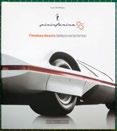
In the 21st Century, automotive design houses have had to diversify to survive, so this overview of Pininfarina’s output includes furniture, boats, bikes and even a coffee machine. But fear not: it’s also packed with great car images from ’Farina’s back catalogue, including one-offs you may not have seen before. The dual Italian and English text suffers, ironically, from poor layout – huge legs of copy with no indented first lines – but polo-neck jumper wearers will find much to stroke their chins over.

The Complete Catalogue of Land Rover Conversions & Accessories
With what now looks like amazing prescience, the first Land Rover ever shown to the public was a mobile welder conversion of prototype L05, presented at the Amsterdam motor show in 1948.
Its welding equipment was made by Lincoln Electrical Co Ltd, one of many dozens of such aftermarket businesses profiled here. Their products range from the exotic – African game viewers – to the humble but necessary (step forward, William Bunce & Son, 1960s purveyors of cess-pit emptiers). Accessories and full conversions are all covered, although for the sake of his sanity the author has largely stuck to civilian rather than military applications, with a few exceptions such as the Centaur half-track and the Shorland armoured car. Fully illustrated, this is a fascinating and handsome work from arguably the world’s most knowledgeable Land Rover expert.
JAMES TAYLOR, Herridge & Sons, £45, ISBN 978 1 914929 09 0
Compiled by Chris Bietzk and Sophie Kochan
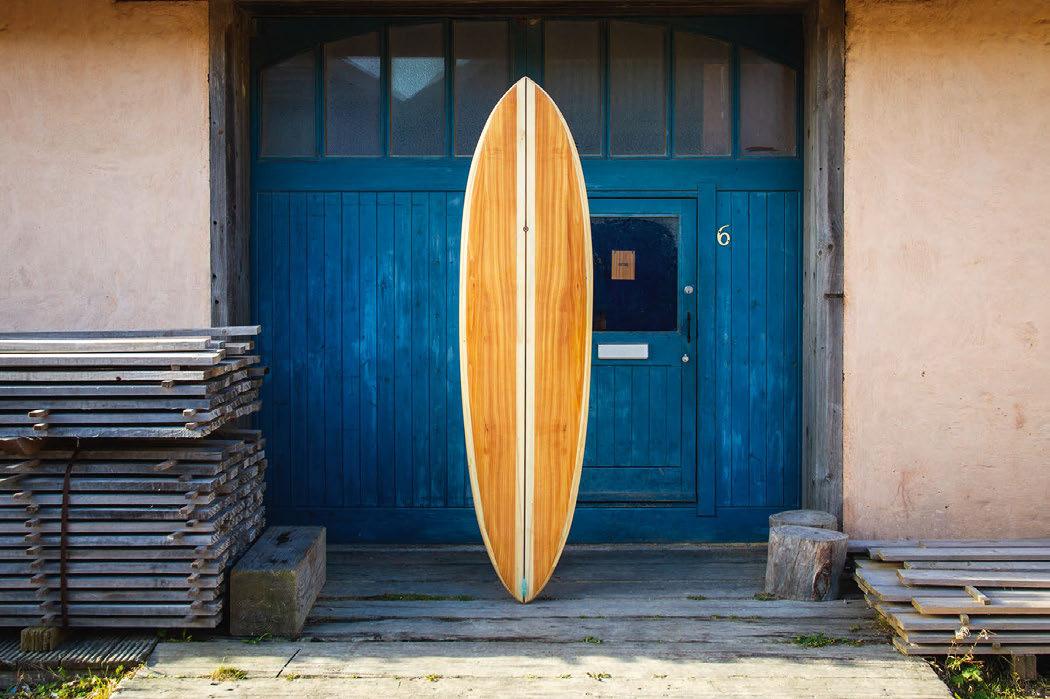
Otter Surfboards Roller Coaster
Rather unexpectedly, Bentley recently joined forces with James O er, the Cornwall-based shaper of wooden sur oards, to produce a board featuring koa veneer selected from the woodstore at the Bentley factory. That board, an example of O er’s do-it-all 7 2in Coaster model, was donated to Surfability UK to be auctioned, but you can order one much like it – though we’d plump instead for the Roller Coaster, almost identical in profile to the Coaster, but with an extra 5l of volume for increased paddling speed.
From £3850. o ersur oards.co.uk
1:18-scale Lola T90 model by Tecnomodel
A detailed resincast model of the car that was seemingly guided by Divine force in the 1966 Indy 500. The man at the wheel, Graham Hill, counted himself ‘very fortunate’ to drive unscathed through the chaos of an enormous pile-up immediately following the start, and he took a comparatively slow-andsteady approach to the race therea er, only to inherit the lead and the win as calamities of one sort or another befell his rivals. £278.95. grandprixmodels.com

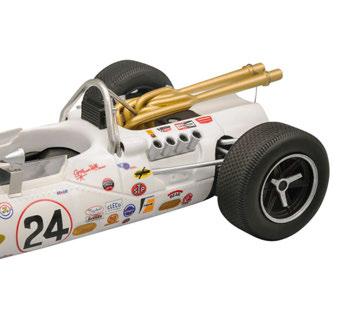


Patek Philippe Calatrava
Pilot Travel Time
The ivory-coloured dial and the strap are new, but Patek’s cult classic is otherwise unchanged, so you get a 42mm white gold case and a trio of complications: a second time zone (displayed by the hideable, skeletonised hour hand); day and night indicators; and a local date on the sub-dial. £52,180. patek.com


Blondie in Camera, 1978
by Martyn Goddard
Before he started slumming it with us lot, long-time Octane contributor Martyn Goddard had a career photographing rock stars, and this new, 240-page book of his work documents Blondie’s rise to fame in 1978. £35. accartbooks.com

‘Group B’ shirt by t-lab
A fun new shirt from t-lab, featuring an illustration of a car you feel you ought to recognise, but which is in fact a work of imagination that borrows from several Group B rally machines. £34. t-lab.co.uk
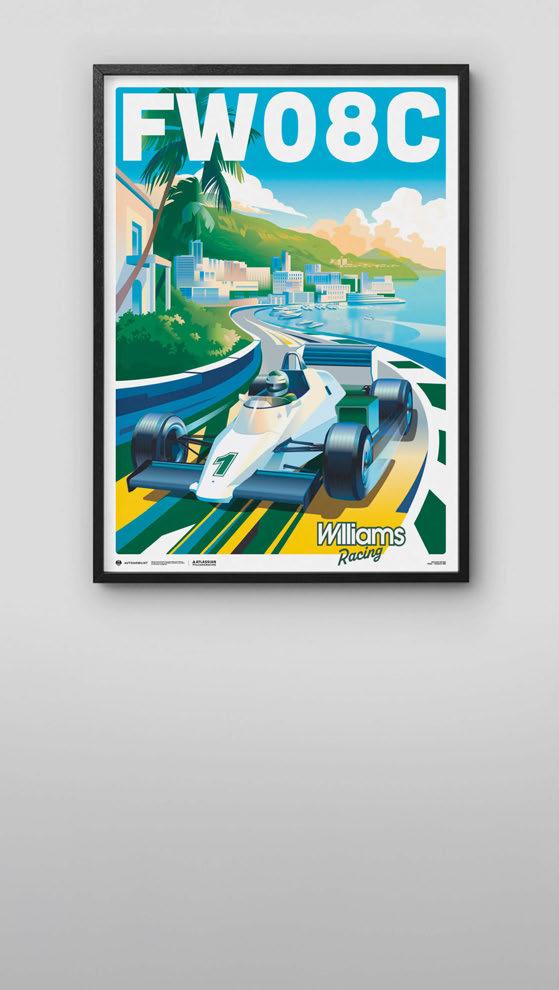
Riviera Racer poster by Automobilist
Automobilist pays tribute to the Williams FW08C of Keke Rosberg, who bet big and won in Monaco in 1983. That year, the Principality’s Grand Prix took place under a sky that did its best to wrong-foot meteorologists and drivers. Rosberg, never short of courage, gambled by starting on slicks despite the greasy circuit and the threat of more rain. He leapt from fi h on the grid to head the field by the end of the first lap; with the rain holding o , he kept the lead for the whole race. £69. automobilist.com
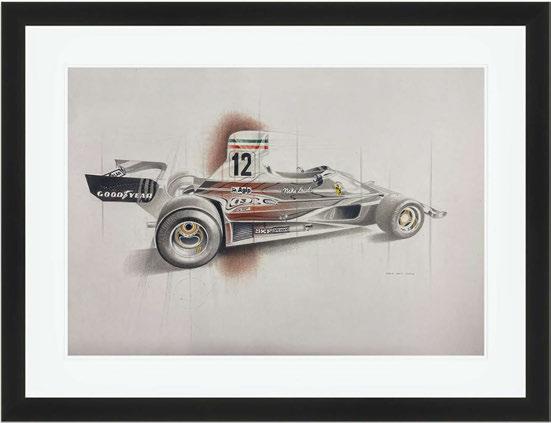
Niki’s Car original drawing by Adam Gompertz
The machine that brought Niki Lauda his first Formula 1 Drivers’ title turns 50 this year, but the 312T in its original form – with the tall air-box – remains one of the coolest F1 cars Ferrari has ever built, a winning combination of neat lines and cartoonish appendages, with a killer livery. Its charms are captured here, in typically beautiful drawing-board style, by Adam Gompertz. Original £1150; prints from £95. historiccarart.net
Candycar x VW five-bus pack
Candylab has added a group of classic VW buses to its range of devilishly collectable Candycar toys, each featuring a wooden body and a diecast base, and measuring a li le over 3in long. We love that first T3, finished in a period-correct and perfectly horrendous shade of brown. $76 for five. candylabtoys.com
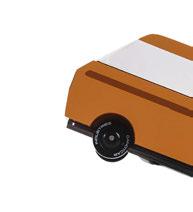

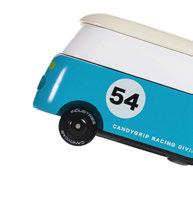
Canvas and leather holdall by Luca Faloni
As many Italian brands have moved production overseas in the service of profit margins, Luca Faloni has kept some of Italy’s most skilled artisans busy making classic gents’ clobber, accessories and luggage. This durable, carry-on-sized holdall, finished with a water-resistant treatment and available in four colours, is made by a small family team in the town of Scandicci, four miles south of Florence. £575. lucafaloni.com




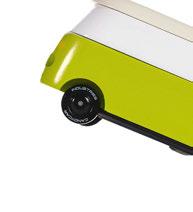
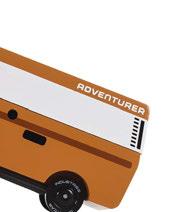
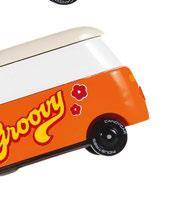
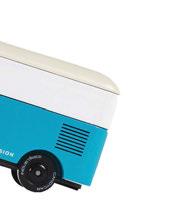
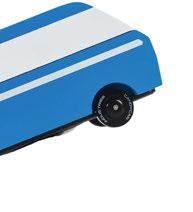


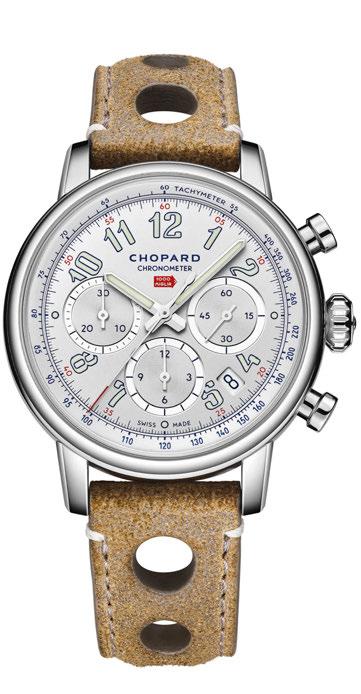
Chopard Mille Miglia Tribute to Sir Stirling Moss
Chopard, official timekeeper of the modern Mille Miglia, created this vintage-style 40.5mm chronograph to mark the 70th anniversary of the 1955 event, which was bossed, of course, by Stirling Moss in a Mercedes-Benz 300 SLR. £9230. chopard.com
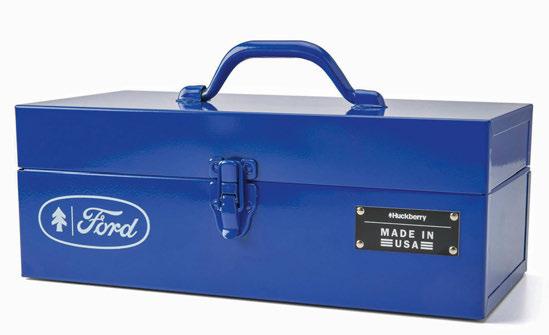
Huckberry x Ford toolbox
A nice bit of kit for fans of the Blue Oval, this 15in-long toolbox is fabricated for Huckberry by Bull Metal of Connecticut from 22-gauge cold-rolled steel – and, unlike all the classic Fords that rusted away to nothing, it’s powder-coated. $115. huckberry.com
Hidden London Tube station mugs
These were inspired by the decorative tiles found in Tube stations of old, including the now-disused Down Street –the station that served as the bomb-proof HQ of the Railway Executive Committee through World War Two, and as a bunker for Prime Minister Winston Churchill during the Blitz. £14 each. ltmuseumshop.co.uk
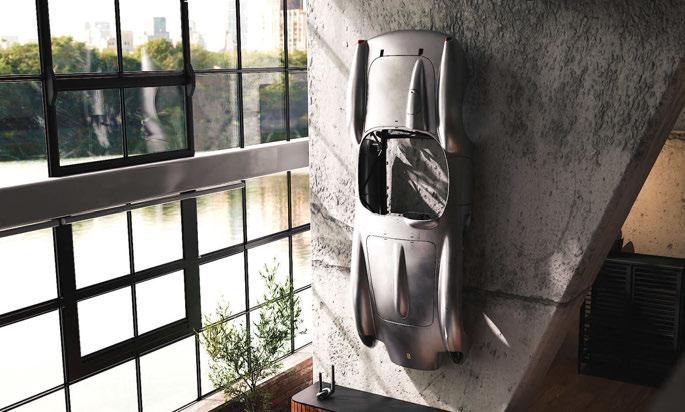

Ferrari Testa Rossa J wall sculpture by Hedley Studios
The Testa Rossa J, a working 3/4-size recreation of the iconic Ferrari racing car, has frequently been described as a work of art, so it should come as no surprise that creator Hedley Studios has now made the TR J body, formed and polished by hand, available as a sculpture. Nineteen examples will be completed, that number reflecting the total production of pontoon-fendered 250 Testa Rossas built by Ferrari. €79,000. hedleystudios.com
Edited by Matthew Hayward
The Market
BUYING + SELLING + ANALYSIS
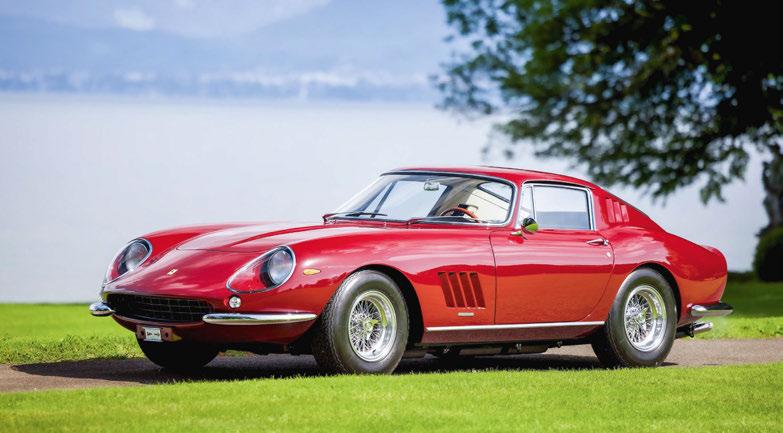
£2.6m Ferrari 275 GTB/4 tops flat season of European sales
Online auction results dominate in a quiet month for live sales – has the tide turned?
TAKE A GLANCE at the top ten auction prices in June and it’s difficult not to notice the incredible amount of entries from US online giant Bring-aTrailer. Its top seller, a $3m Porsche 911 DLS by Singer, actually serves as a timely demonstration of John Mayhead’s point on the opposite page about the huge demand for certain modified classics. Just as noticeable in that roster, however, is the relative lack of results from the last two live European auctions. Bonhams has topped the list with its Swiss Bonmont auction, thanks to the sale of a 1967 Ferrari 275 GTB/4 (above) for CHF2,875,000. This would be the only big-hitter that would sell, however, with Bonhams reporting CHF5.7million total sales and a sell-through rate of 55% – both figures significantly lower than last year.
The catalogue boasted huge variety and one of the best performers was the 2010 Iveco Terramare 4x4 Amphibious, which sold for an above-estimate €107,280. The list of no-sale cars was extensive, though, from modern hypercars such as the 2022 Aston Martin Valkyrie to classic 1965 Ferrari 275 GTB by Scaglietti and oddball 1986 Lamborghini LM002 by Diomante all failing to attract buyers.
With the RM Sotheby’s Cliveden House auction taking place just before Octane went to print, the provisional £6.3m result offered something of a glimmer of a hope, as did a considerably healthier 75% sale rate. Prices were generally quite low, especially for the majority of the early cars, but with many offered at no reserve from private collections they were at least finding new homes.
A 1958 Mercedes-Benz 300SL Roadster topped the auction at a respectable £657,500. One other notable result was the slightly strange-looking 1957 Aston Martin DB4 Prototype – ‘DP114/2’ – that was used in period by David Brown’s wife and realised £421,250. Matthew Hayward
£2,622,863 (CHF 2,875,000)
1967 Ferrari 275 GTB/4 Bonhams, Cheserex, Switzerland, 29 June
£2,223,144 ($3,007,500)
1991 Porsche 911 DLS by Singer
Bring a Trailer, Durham, North Carolina, USA, 6 June
£2,150,387 ($2,907,500)
2015 Porsche 918 Spyder Weissach
Bring a Trailer, Atlanta, Georgia, USA, 3 June
£1,317,306 ($1,807,500)
1955 Mercedes-Benz 300SL Gullwing
Bring a Trailer, Newport Beach, California, USA, 27 June
£1,306,174 ($1,757,500) 2014 McLaren P1
Bring a Trailer, Newport Beach, California, USA, 20 June
£1,014,106 (€1,187,200) 1963 Ferrari 250GT Lusso Artcurial, St Tropez, France, 28 June
£655,920 ($900,000) 2021 Ford GT SOMO, Buffalo, New York, USA, 27 June
£619,080 ($837,500) 2006 Ford GT Heritage Bring-a-Trailer, Atlanta, Georgia, USA, 6 June
£600,601 ($813,492) 2024 Porsche 911 GT3 RS Bring-a-Trailer, Montauk, New York, USA, 23 June
£521,002 ($707,499)
Mind you, those figures looked relatively healthy after Artcurial’s second Garden Party In SaintTropez sale on 28 June, which struggled to a €4.8million, 47% result. Top-seller was a €1,187,200 1963 Ferrari 250GT Lusso – a correct price for a well-travelled, extremely usable example such as this. TOP 10 PRICES
1959 Porsche 356A Carrera GS Bring-a-Trailer, Durham, North Carolina, USA, 5 June
Is modified the new original?
Traditionally, upgraded classics were less desirable – today the data suggests otherwise
THERE’S A BUZZ going around the clubs and car shows that modi ed classics are all the rage. I recently visited the excellent Classics at the Clubhouse – Aircooled Edition at Sandford Springs in Hampshire and that seemed to reinforce this view: there were VW Baja Beetles, backdated Porsche 911s and slammed split-screen VW campers everywhere, all surrounded by throngs of eager onlookers. Modi ed, the theory goes, is what drivers of classics now want, but do the numbers back this up?
An analysis of hundreds of thousands of online, live and dealer sales of classic and collectable cars tracked by Hagerty over the past three years shows that the number of cars marked as modi ed is dropping: in 2022, it was one in every 5.3 cars sold; so far in 2025, it’s been one in 6.9. Sell-through rates at auction are down ve points, too, from 77% in 2022 to 72% so far in 2025, much more than the 2% drop in unmodi ed cars over the same period. Comparing the low estimates with the nal prices shows how the buyers’ willingness to pay matches the sellers’ expectations and it’s down: in 2022, buyers paid an average of 24% over auction low-estimate for unmodi ed cars compared with 4% so far this year. is all seems to suggest that the market for modi ed cars is dropping, but I’m not so sure. e four-point gap between low estimate and successful sale price could also show that sellers, and the auction house sta who guide them, are becoming more realistic, and that the 24% upli seen in 2022 was indicative of an overheated market. Since then, the average value of unmodi ed cars sold at live and online auction in the US has trended downwards, but for modi ed cars it has risen in the same period. e other element to consider is that the spectrum of modi cation is huge and, in common with most areas of the market, the very top cars are still in big demand. Take Porsche 911 cars reimagined by Singer: in total, 26 have been o ered at auction with an average sell-through rate of 81%, but in the past
year all but one of the seven o ered at live auction have sold, six achieving over $1m. Of the seven o ered before that, just two made that price point. $1m/£730,000 at auction, and $1.36m/£1m at a dealer now seems to be the benchmark, with Turbo and DLS signi cantly more.
Although any 911 that has been breathed on by Singer will be collectable, it’s remarkable how many have clocked up a healthy number of miles, and that’s maybe the point of all this. As the sell-out crowds at Sandford Springs and all the other events I’ve a ended so far this year show, people really want to use their cars, and a few modi cations can help make that a markedly safer and more pleasurable experience. I drove there in my Volkswagen Type 2 Campmobile; it’s ed with a slightly uprated engine that means it can keep up with modern tra c, and alloy front brakes that are vastly superior to the old drums. Add in a Bluetooth DAB radio and some LED brake-lights that you can actually see, and you have a far more practical 21st Century camper that still looks almost identical to the way it did when it le the Wolfsburg factory in 1970.
Interestingly, even on the top concours lawns where the judges once enforced extreme levels of originality, safety modi cations such as seatbelts and re extinguishers are overlooked, and electric cooling fans and modern oil lters o en considered sympathetically. en you enter another whole world of aesthetic modi cations, some of which are now much more accepted than they once were.
I don’t yet believe that modi cation has taken over from originality as the new gold standard, but I don’t think the word has the negative connotations it once did. Cars restored by the likes of Singer, Alfaholics, Redux and Tolman will always draw a huge amount of a ention, and the prices their clients are willing to pay – despite huge waiting lists – show that demand isn’t abating. If that means more classic cars will be driven for longer, then that must be a good thing.


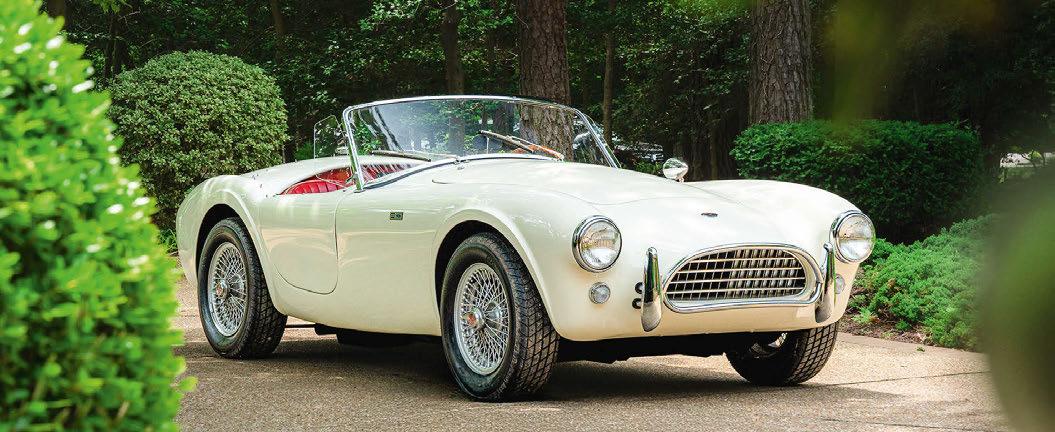
Preserved prototype
Broad Arrow, Monterey, USA
13-14 August
DECODING THE WORLD of early Cobras is not an easy task but, suffice to say, this extremely early 1962 Shelby 260 Cobra is incredibly special. Carroll Shelby’s dream of building his own race-winner wasn’t without its challenges, which is why the first five prototypes were actually built in the workshops of James Edward Hugus – of which this car, CSX 2003, was the third.
A trusted friend and accomplished racer, ‘Ed’ Hugus backed Shelby financially, ensuring that his vision reached the road before Ford’s official support materialised. It was at his suggestion that Shelby approach AC Cars and, with that, this Cobra was born.
Built in early 1962, CSX 2003 was one
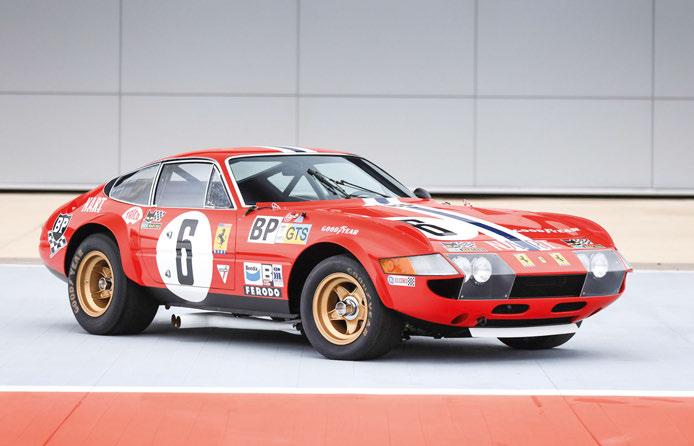
of the two vehicles that were used by Ford’s Special Vehicles Team to evaluate the Cobra ahead of any deals being made.
Almost miraculously for a prototype, CSX 2003 has survived in largely original condition, even retaining the experimental 260ci engine and matching four-speed gearbox. After an easy start to its life, avoiding heavy competition use, it ended up with Richard ‘Doc’ McAdam in 1989. He retained the Cobra for 36 years, maintaining the car’s exceptional condition.
Broad Arrow Auctions expects that it will sell for $1,500,000-2,000,000 when it heads under the hammer at the Monterey Jet Center in August. broadarrowauctions.com
The ultimate Competizione
Gooding & Co, Pebble Beach 15 Aug
FERRARI BUILT JUST 15 Competizionespec 365 GTB/4 ‘Daytonas’. This spectacular car happens to be one of the five ultimate S3 versions produced for the 1973 season –equipped with the motore speciale
First used in anger at the 1973 24 Hours of Le Mans as part of Luigi Chinetti’s North American Racing Team, it raced extensively throughout the next decade. It has recently been restored back to original 1973 Le Mans condition and won the Enzo Ferrari Trophy at Pebble Beach Concours last year. It’s expected to fetch $8,000,000-10,000,000 at this year’s Pebble Beach sale. goodingco.com

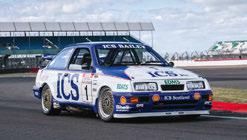
1990 Ford Sierra RS500 Iconic, Silverstone, UK 22 Aug, iconicauctioneers.com
This is Andy Rouse’s final BTCC Sierra RS500 Cosworth, which raced in the 1990 season. It’s presented in ‘timewarp’ condition, as it was in e ect parked up in the Coventry Transport Museum a er its final race, and not used in anger since – except for appearing alongside Rouse at the Goodwood Festival of Speed in 2001. It’s thought it will make £250k-300k.
Also Look Out For…
Two bits of dog-eared hardboard, 8in tall, held together with duct tape and covered in a mess of penmarks applied hastily by an unknown hand – and yet valued by Julien’s Auctions at $12,00015,000. is, despite all appearances, is a fragment of one of the most technologically advanced spacecra ever conceived: the Death Star! When Star Wars was in production in 1976, computer-generated imagery was still in its infancy, and it was through the clever use of compositing that director George Lucas and his crew achieved many of the lm’s thenastonishing special e ects. Critical to the project was the development of the Dykstra ex, the world’s rst computer-programmed motion-
1997 Nissan Skyline GT-R NISMO 400R
RM Sotheby’s, Monterey, USA 15-16 August, rmsothebys.com
Powered by a motorsport-derived 2.8-litre RB-X GT2 engine, the 400R is among the most collectable and legendary Skyline models ever built. This Dark Grey Pearl example is one of just 44 genuine factory cars, built to commemorate the R33’s Le Mans debut the same year. Showing just 7093km, this Gran Turismo icon is estimated to make $900,000-1,100,000.
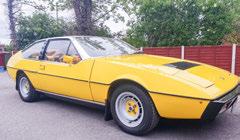
1976 Lotus Eclat H&H Classics, Buxton, UK
30 July, handh.co.uk
Perhaps not quite what John Mayhead had in mind when he talked about modified classics on the previous page, but this restored Eclat boasts a Rotrex supercharger and many supporting mods – including bigger brakes, power steering and an LSD. Externally, you’d never know, which is why the £13,00015,000 estimate is so tempting.
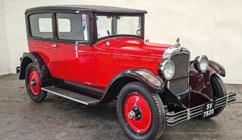
1928 Nash Standard Six Brightwells, Leominster, UK 2 August, brightwells.com
Starting its life in New Zealand, hence the fact it’s right-hand-drive, this Nash was imported to the UK in the mid-1990s. Fully restored around the same time and used regularly up to 2019, it looks fabulous and is said to be in fine fe le a er a thorough service –although it still needs a bit of love to be perfect. It’s estimated at a very fair £6000-8000.
control camera system, most notably used to create the famous sequence in which Luke Skywalker ies his X-wing ghter along a trench in the surface of the gargantuan Death Star while being pursued by Darth Vader. Because the sequence called for the camera to be moving at speed across the background, Lucas & Co could get away with some quick-and-dirty modelmaking; ne detail wouldn’t be picked up, and so the trench was built up from pieces of board such as the ones seen here, which will be sold in San Diego on 27 July. e money raised will help to fund the construction of a new public museum to house four of the world’s largest collections of Star Wars memorabilia.






AUCTION
23-26 July
Mecum, Harrisburg, USA 27 July
Hampson, Oulton Park, UK
30 July
H&H Classics, Buxton, UK
30 July – 1 August
Mathewsons, online
31 July
SWVA, Poole, UK 2 August
Classicbid, Nürburgring, Germany
Dore & Rees, Bradford on Avon, UK
6 August
Brightwells, online
9 August
Barons Manor Park Classics, Southampton, UK 13-14 August
Broad Arrow Auctions, Monterey, USA 14-16 August
Mecum, Monterey, USA 15 August
Bonhams, Carmel, USA 15-16 August
Gooding & Company, Pebble Beach, USA
RM Sotheby’s, Monterey, USA 16 August
Che ns, Harrogate, UK 22-23 August
Iconic Auctioneers, Silverstone, UK 24 August
Classic Car Auctions, Silverstone, UK 28-30 August
Worldwide Auctioneers, Auburn, USA 30-31 August
ACA, King’s Lynn, UK
Lucky Collector Car Auctions, Tacoma, USA
3-5 September Mathewsons, online 5-6 September
Bonhams, Beaulieu, UK
Manor Park Classics, Runcorn, UK
10 September
H&H Classics, Newark, UK 13 September
Barons Manor Park Classics, Southampton, UK Bonhams, Goodwood, UK
WB & Sons, Killingworth, UK 17 September
Brightwells, online 20 September
Dore & Rees, Chippenham, UK
Historics, Ascot, UK
IN ASSOCIATION WITH

Lamborghini Diablo
When it comes to classic Lamborghinis, a younger generation is leading the charge
THINK OF A classic Lamborghini and you’re probably picturing a Miura or a Countach, but for Polo Storico, the company’s heritage operation, one model is on its books more than any other: the Diablo. Just under 3000 examples were produced from the first, unveiled in Monte Carlo in January 1990, to the final Oro Elios VT SE 6.0 coupé finished by the Sant’Agata Bolognese factory in 2001.
On its release the Diablo had huge boots to fill. Lamborghini first wowed the world with the Miura in 1966, then broke the mould with the 1974 Countach; but after significant financial woes and various owners, its assets were bought by French brothers Patrick and Jean Claude Mimran
HAGI Value Tracker
Lamborghini LM002
No-one knows what the folk at Lamborghini were thinking – or inhaling – when they unleashed the LM002 luxury sport utility into a market that didn’t then exist. But it does now, and everyone’s doing it, including Porsche, Bentley, Rolls, Aston… and Lamborghini.
As was usual back then, Lamborghini was thinking outside the box, and the crazy 5.2-litre Countach V12-powered 118mph, 8mpg, 6ft-high crew-cab off-roader was a very big box indeed, weighing close to three tonnes. At $120,000 in 1986 (there was no UK list price) it cost considerably more than a Countach LP5000, which came in at around $100,000, or £86,000 in the UK.
Derived from an aborted military project, hence the M for
in 1981. In 1985 they initiated the project to find a Countach replacement and, when Chrysler took control two years later, Project 132 was well underway.
The final result was generally well-received by the world’s press. Marcello Gandini’s design was smoother than the Countach but retained the Lamborghini roof-line and scissor doors, while a 485bhp rear/mid-mounted 5.7-litre V12 pushed the car to 196mph. Plus, many of the idiosyncrasies of the Countach had been calmed: Diablo drivers could see a lot more of the road, especially behind them, and the cabin was more comfortable and practical. The five-speed gated manual gearbox remained and was long-geared, making slower,
twisting roads as much fun as outright high-speed driving.
The model was developed through the 1990s with both refinement and build quality improving at each step. Today, the pinnacle models, especially the SE30, late VT 6.0 SE and GT, are highly collectable. Top Hagerty Price Guide values of the latter have risen by 21% over the past five years and advertised prices even more, with some dealers asking for over £1.5m and some US cars insured above that.
Younger buyers may be a factor behind this: 15% of Diablo owners insured by Hagerty were born since 1980, up from 1% five years ago, and 61% are Gen X (born since 1965) or younger.
John Mayhead
DIABLO DEVELOPMENT COST
Militaria, just over 300 were made, with specs ranging from the ‘utility’, which even in base spec offered limousine luxury, to virtually anything you wanted, predicting today’s infinitely customisable luxury off-roaders and sport utilities.
It was a market pretty much limited to the Middle East and, in its final years, the US, with a special edition of around 60 LM/ Americans, yet with the passage of time the LM002 has gained considerable traction in the collector market. Over the last five years it has outperformed the classic Lamborghini sector, as measured by the HAGI LPS (Lamborghini Polo Storico index for all models up to and including the Diablo), which in turn has outperformed the overall collector-grade classic market.
Five years ago median-range prices were around £225-250k, but now they’re £350-375k, with exceptional transactions well beyond £450,000. Only time will tell if these are outliers or a sign of things to come.
Overall it translates into compound annual growth over five years of 8.99% per year for the LM002, compared with 7.01% for the classic Lamborghini sector (HAGI LPS) and just 4.01% for the HAGI Top. As production of the LM002 wound down, the first alternative to enter this niche and take it mainstream was the civilianised Hummer H1, so Lamborghini had been well ahead of the curve, even more so than with the Countach and Miura.
6bn
28
LIRE (DIABLO GT )
NUMBER OF SE30 BUILT TO JOTA SPECIFICATION, 15 UPGRADED BY THE FACTORY.
215mph
PUBLISHED TOP SPEED
$1.1m
PAID FOR DONALD TRUMP’S 1997 DIABLO VT ROADSTER AT BARRETT-JACKSON, SCOTTSDALE
61%
HAGERTY OWNERS BORN SINCE 1965
At today’s prices, with inflation factored in, the LM002 costs at least as much as it did when new and is broadly on a par with the Cullinan and Bentayga, which offer no such prospect. It also places you in exclusive company, from Ayrton Senna and King Hassan of Morocco to Saddam Hussein and Bashar al-Assad… HistoricAutoGroup.com
1948 – 1989 Air cooled Porsche Tyres
Porsche 356 Tyres
Porsche Pre A 356 (1948-‘56) - 500/525X16 Stella Bianca
Porsche 356 A (1956-’59) – 165HR15 Pirelli Cinturato CA67
Porsche 356 B (1960-’63– 165HR15 Pirelli Cinturato CA67
Porsche 356 C (1964-’65) – 165HR15 Pirelli Cinturato CA67
Porsche 912 Tyres
Porsche 912 (1965-’68) - 165HR15 Pirelli Cinturato CA67 or 165VR15 Michelin XAS
Porsche 912 (1968-’76) - 165HR15 Pirelli Cinturato CN36 or 165VR15 Michelin XAS
Porsche 911 Tyres
Porsche 901 (1964) - 165HR15 Pirelli Cinturato CA67
Porsche 911S (1965-’68) - 165HR15 Pirelli Cinturato CA67 or 165VR15 Michelin XAS
Porsche 911T (1968-’71) - 165HR15 Pirelli Cinturato CN36 or 165VR15 Michelin XAS or 185HR14 Michelin MXV-P
Porsche 911L (1968) - 165HR15 Pirelli Cinturato CN36 or 165VR15 Michelin XAS
Porsche 911E (1969) – 185HR14 Michelin MXV-P
Porsche 911S (1969-‘75) - 185/70VR15 Pirelli Cinturato CN36 or 185/70VR15 Michelin XWX
Porsche 911E (1970-‘73) - 185/70VR15 Pirelli Cinturato CN36 or 185/70VR15 Michelin XWX
Porsche 911T (1972-‘73) - 185/70VR15 Pirelli Cinturato CN36 or 185/70VR15 Michelin XWX
Porsche 911 Carrera RS 2.7 (1973) - 185/70VR15 Pirelli Cinturato CN36 front. 215/60WR15 Pirelli Cinturato CN36 Rear
Porsche 911 Carrera (1976-‘77) - 205/50YR15 Pirelli Cinturato P7 & 225/50YR15 Pirelli Cinturato P7
Porsche 914 Tyres
Porsche 914 (1970-’73) - 155HR15 Pirelli Cinturato CA67 or 155HR15 Michelin XAS
Porsche 914 (1974-’76) - 155HR15 Pirelli Cinturato CN36 or 155HR15 Michelin XAS
Porsche 930 tyres
Porsche 930 Turbo Carrera (1975-‘77) - 205/50YR15 Pirelli Cinturato P7 & 225/50YR15 Pirelli Cinturato P7
Porsche 930 Turbo (1975-‘77) - 205/50YR15 Pirelli Cinturato P7 & 225/50YR15 Pirelli Cinturato P7
Porsche 930 Turbo (1978-‘85) - 205/55YR16 Pirelli Cinturato P7 & 225/50YR16 Pirelli Cinturato P7
Porsche 930 Turbo (1985-‘89) - 205/55YR16 Pirelli Cinturato P7 & 245/45YR16 Pirelli Cinturato P7
Porsche 911SC Tyres
Porsche 911 SC (1978-‘83) - 185/70VR15 Pirelli Cinturato CN36 & 215/60VR15 Pirelli Cinturato CN36. Optional 205/55YR16 Pirelli P7 N4 & 225/50YR16 Pirelli P7 N4
Porsche 911 Carrera (1984-‘89) - 205/55YR16 Pirelli Cinturato P7 & 225/50YR16 Pirelli Cinturato P7
Porsche 911 Carrera Super Sport (1985-‘89) - 205/55YR16 Pirelli Cinturato P7 & 245/45YR16 Pirelli Cinturato P7
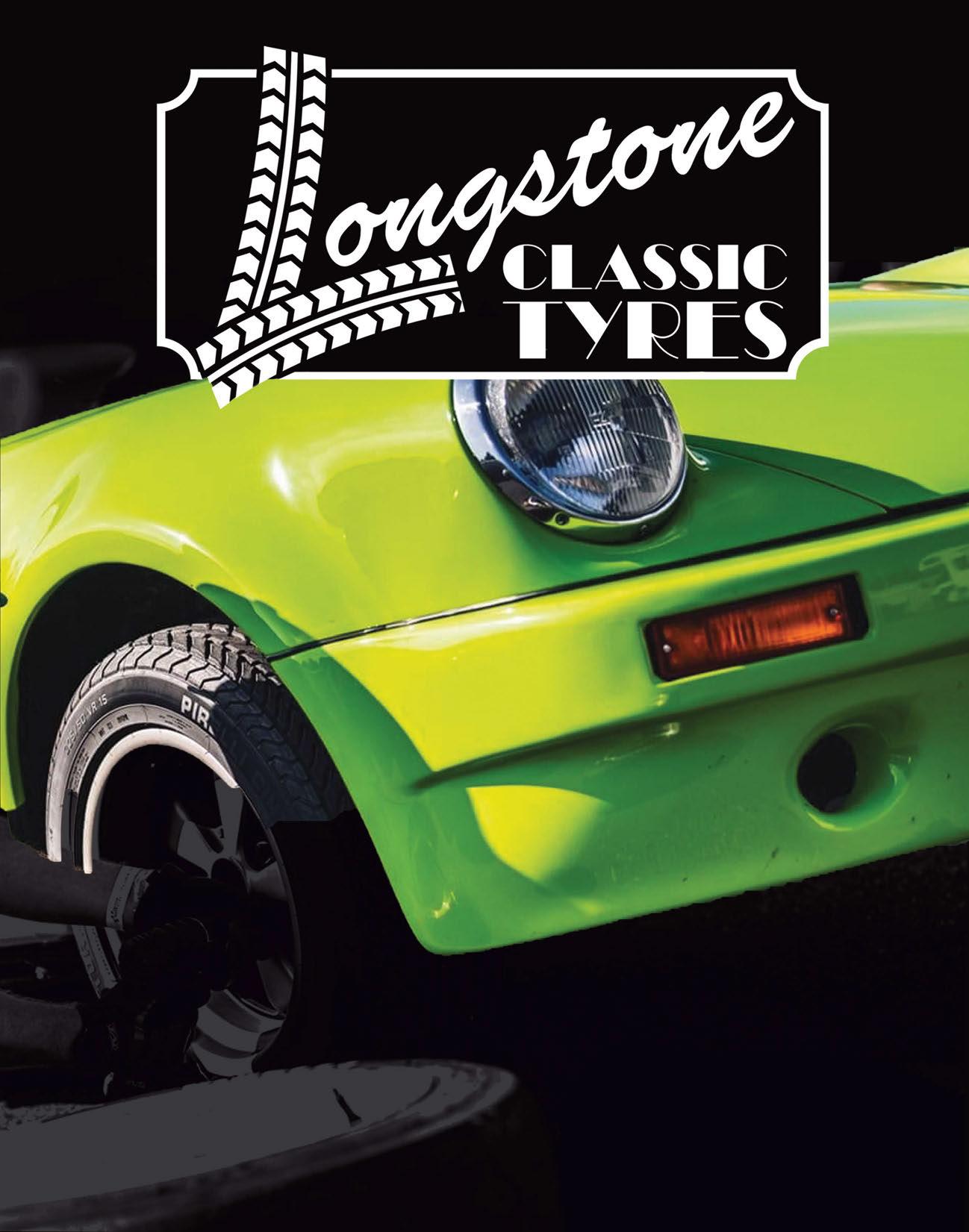

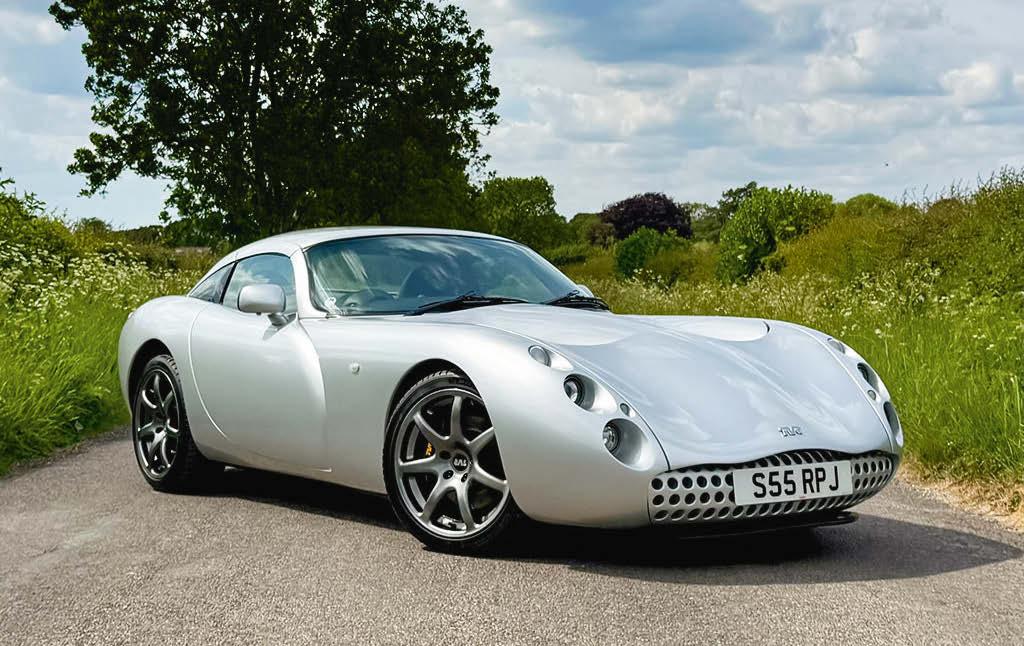
2002 TVR Tuscan S 4.0 Targa
£43,000 from Str8six, Oxfordshire, UK
THE EARLY YEARS of TVR’s home-grown Speed Six engine were not shrouded with glory, but you have to applaud the small UK manufacturer’s bravery when designing and building its own engine. Despite a few (not inconsiderable) teething issues, the TVR’s straight-six was one of the most memorable and, frankly, epic power units ever to grace a sports car. anks to the tireless development of specialists, they’re now reliable when properly maintained. is early Tuscan Targa had engine issues early on, but, like the vast majority, it has now been rebuilt – in this case by TVR Power with the latest camsha s, nger followers and cast valve guides. ese tried and tested upgrades ensure longevity.
is car is showing just over 30,000 miles, its previous custodian of 15 years having covered only a few hundred miles. Although it was well-preserved, Str8six opted to fully recommission the Tuscan for its next owner, meaning it bene ts from the latest Bilstein and Eibach suspension, fresh Michelin Pilot Sport 5 tyres and a full alignment. e engine has also been fully serviced, with new high-pressure oil hoses and fuel hoses, as well as full valve-clearance adjustment. e curvaceous glass bre bodywork looks as wild as ever, even if this car is nished in relatively tame Porsche Polar Silver. is is still one of the rawest, most unhinged driving experiences that money can buy. str8six.co.uk
HOW’S BUSINESS? While certain sectors of the market are so ening, others remain remarkably strong. Over the past 12 months we’ve been fortunate to handle the sale of some truly fantastic cars, and business has been very good. What’s the secret of your success? It’s a combination of knowledge, passion, transparency, and working with clients who share a deep appreciation for cars. Have there been demographic changes? Undoubtedly. We’ve de nitely seen a generational shi , with younger collectors gravitating towards the ‘poster cars’ of their youth. is trend has driven extraordinary demand – and rising values – for cars from the 1990s and 2000s, and modern hypercars. Are pre-war cars doomed? Absolutely not! You need only to drive one to understand the magic. ere’s also a thriving calendar of pre-war events, and it’s encouraging to see more younger enthusiasts embracing them. What should people buy right now? Always buy what you truly love, and aim for the very best example you can a ord. at’s timeless advice…

Rory Henderson
A passionate specialist with 15 years of experience in collectors’ cars.
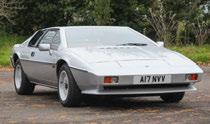
1985 Lotus Esprit S3
£35,995
Living on the island of Jersey until 2003, this exceptionally clean S3 Esprit has only 22,106 miles from new and has been properly serviced throughout. charlesleith.com (UK)

1989 Mercedes-Benz 560SL €65,900
The 5.6-litre R107 SL was reserved for export markets; this one was brought back from the USA in 2014. Never welded and with just 84,000km. hk-engineering.com (DE)

1942 Lancia Aprilia Barche a $199,000
Fabulous li le racer originally built by Scuderia OSA. It proved too heavy for racing, so it became a daily driver in Sicily. Re-discovered and rebuilt. thebarnmiami.com (US)

1994 Toyota Supra €50 per share
Not many twin-turbo Mk4 Supras were built with a factory manual gearbox, and even fewer survive in unmodified condition – which makes this black UK-market example a real rarity. timeless.investments
PETER BRADFIELD LTD
PETER BRADFIELD LTD
PETER BRADFIELD LTD
BRADFIELD LTD
PETER BRADFIELD LTD
PETER BRADFIELD LTD
Bentley 4½ Litre Blower 1934
See Website for more details
Concours types and ‘try-hards’ need not apply but will suit any number of bounders, blaggards or cads
as badges of honour and has appeared with distinction on at least three Flying Scotsman Rallies and raced at the Good
y Racing has maintained it. However, a number of previous owners have taken a dogged delight in willfull
a Short Chassis Speed Model still fitted with its original Vanden Plas coachwork. It has been upra
1925 Bentley 3-4½ Litre
ork and it has accordingly developed a depth of patina you could drown in. Its bears its battle-scars and witness marks
ine giving it a good turn of speed and mechanically feels good on the road. The talented Mr. Getle
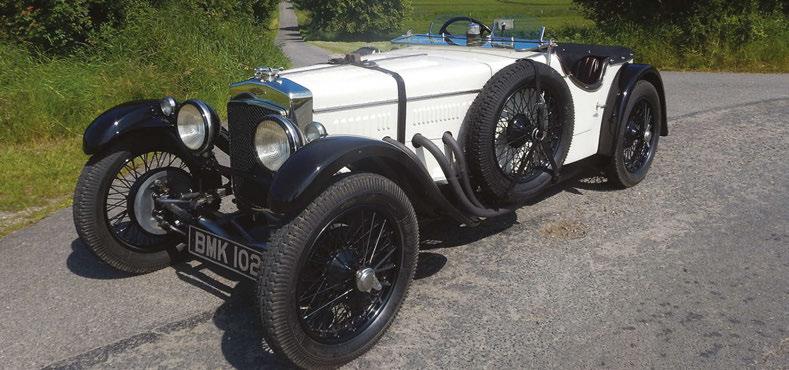
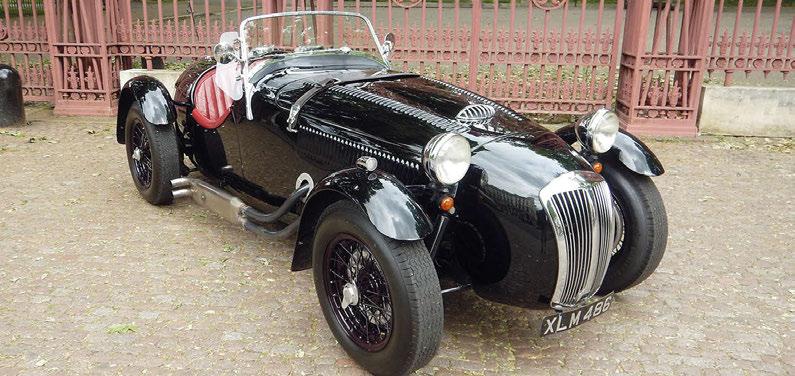
1934 Frazer Nash TT Replica Outstanding condition, unparalelled evocative history, matching numbers.
1933 Rolls-Royce 20/25 Roadster by Park Ward
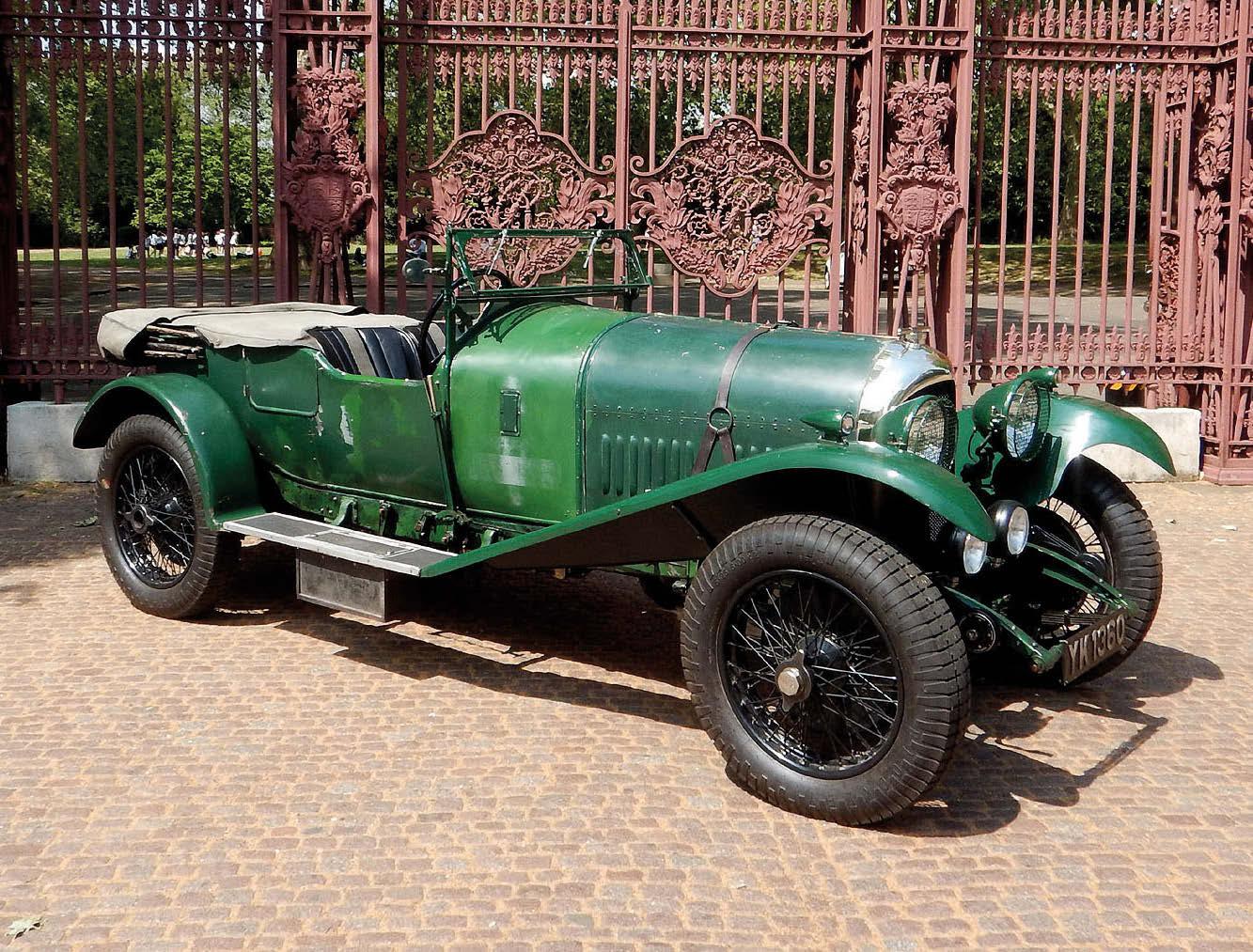

Unique and gorgeous. In superb condition with documented history.
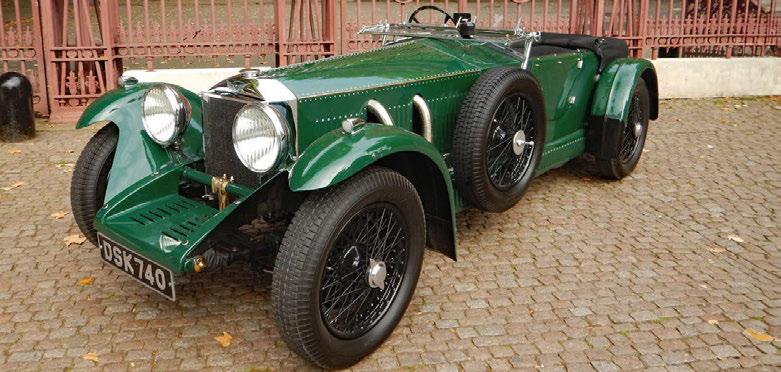
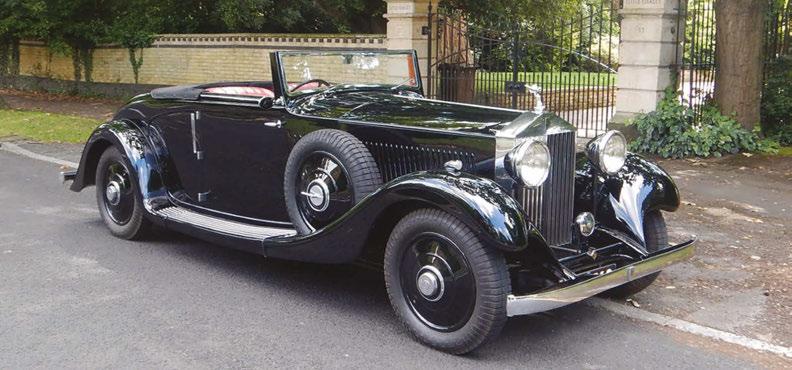
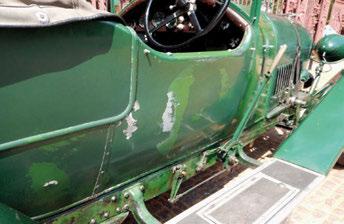
YK
One of only 77 built, highly
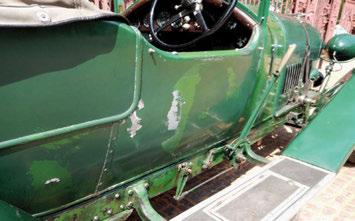
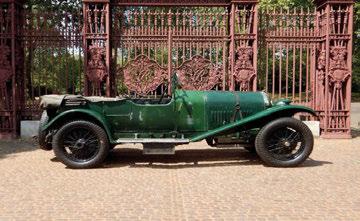
1925 Bentley 3-4½ Litre
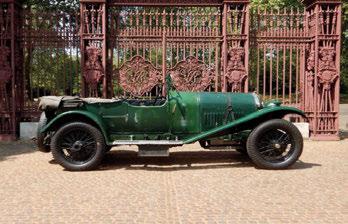
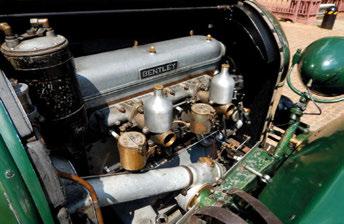
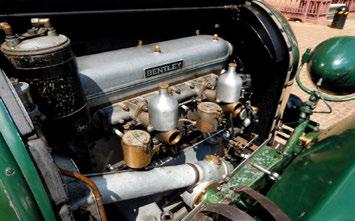
YK 1360 is a Short Chassis Speed Model still fitted with its original Vanden Plas coachwork. It has been upra ine giving it a good turn of speed and
1954 Frazer Nash Le Mans Replica Ulimate specification, period international comp history, eligible for everything.
However, a number of
and ‘try-hards’
YK 1360 is a Short Chassis Speed Model still fitted with its original Vanden Plas coachwork. It has been upra ine giving it a good turn of speed and mechanically feels good on the road. The talented Mr. Getle y Racing has maintained it. However, a number of previous owners have taken a dogged delight in willfull ork and it has accordingly developed a depth of patina you could drown in. Its bears its battle-scars and witness marks as badges of honour and has appeared with distinction on at least three Flying Scotsman Rallies and raced at the Good Concours types and ‘try-hards’ need not apply but will suit any number of bounders, blaggards or cads
need not apply but will suit any number of bounders, blaggards or cads.
The talented Mr. Getle y Racing has
bounders, blaggards or cads
badges of honour and has appeared with distinction on at least three Flying Scotsman Rallies and raced at the Good Concours
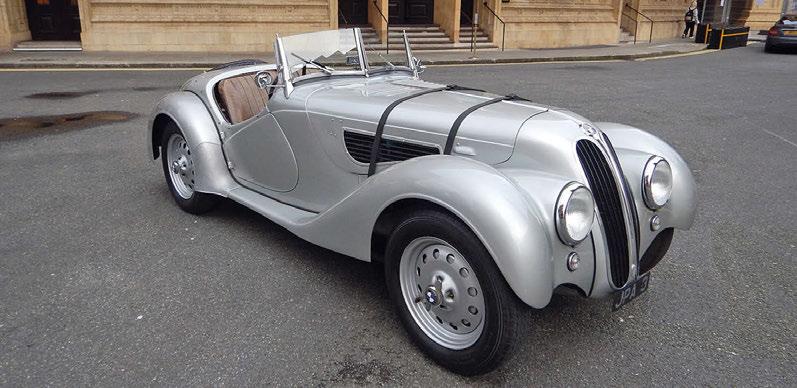
taken a dogged delight in willfull ork and it has accordingly developed a depth of patina you could drown in. Its bears its battle-scars and witness marks as badges of honour and has appeared with distinction on at least three Flying Scotsman Rallies and raced at the Good Concours types and ‘try-hards’
See Website for more details
and with an international history. Mechanically sorted with matching numbers. 1939 Frazer Nash BMW 328
3’ is fresh from a 400,000 Euro restoration and must be one of the best. In the right hands will
www.bradfieldcars.com
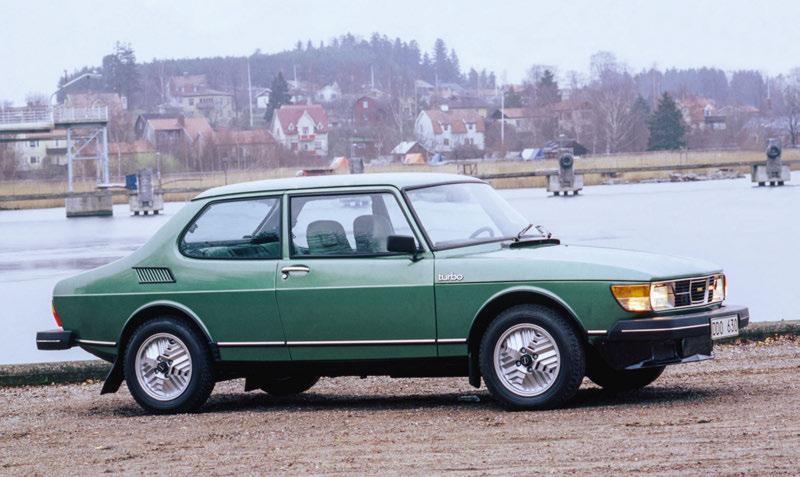
Saab 99 Turbo
It might not have invented it, but Saab proved that turbocharging was the way forward
BMW AND PORSCHE may have got there first with the 2002 and 911 Turbo, but Saab proved that turbocharging really was the future – providing increased power, torque and refinement with the potential for huge efficiency gains. With a very short production run from 1978 to 1980, the 99 Turbo wasn’t around for long, but it left a lasting impact and remains an incredibly desirable classic today.
While the Turbo was introduced in 1978, the 99 on which it was based was actually launched a decade earlier in 1968 – first as a two-door saloon, then a four-door and later as the much-loved threeand five-door Combi hatchbacks. As a front-wheeldrive car, much of the basic suspension design was an evolution of the wishbone and coil spring front, dead axle rear, of the 96.
After Saab had given up on the idea of developing its own engine due to prohibitive costs, the company opted for the Triumph-built, Ricardo-developed ‘slant four’, initially a longitudinally mounted 1.7-litre that grew to 1.8 litres. Saab eventually bought the rights and took the engine in-house for further development into the 2.0-litre Saab B unit.
With the 99 selling especially well in the USA, Saab started to think about moving further upmarket. While a Triumph Stag V8 was very briefly considered, increasing power via forced induction seemed the logical choice. Saab engineers worked with the team from Scania and with Geoff Kershaw (who would later form Turbo Technics) at Garrett AiResearch to develop the 99 Turbo. The aim was to give the 99 similar performance to V6-engined rivals, though this was not simply about outright speed but also drivability and efficiency.
The use of a relatively small Garrett T3 ensured speedy throttle response and spool-up time (at least in comparison to the race-bred Porsche 930), and the result was a headline power figure of 145bhp against the standard fuel-injected EMS at 118bhp. That’s really only half the story, though, because the real difference came in the form of epic torque delivery: a 40% increase at just 3500rpm. Saab developed a wastegate system, too, which gave much better control of boost pressure.
On the road, the Saab Turbo quickly gained a reputation as a real rocket, although one that could easily overwhelm the front tyres, especially in the wet. Despite its lively performance, the 99 was positioned as a sporting luxury family car.
The Turbo was launched as a three-door model – and officially made available only in black for British buyers – but after just one year production switched to the two-door saloon version, due to the launch of the new 900. Again, UK numbers were very tightly controlled, with only 200 black and 400 red examples officially imported. The final batch of 99 Turbos were sold with a five-speed manual gearbox, which improved the distribution of ratios. From 1980, the 900 Turbo continued the legacy.
THE LOWDOWN
WHAT TO PAY
It’s surprisingly difficult to find good 99 Turbos in the UK, although mainland Europe can prove more fruitful. As a guide, expect to pay around £4000 for a half-decent project car today. A tidy 99 Turbo will range from £9000 to £13,000; exceptional examples, however, are in demand and could be worth £20,000 and upwards.
It’s a similar story in the USA, although with slightly healthier numbers of cars it’s considerably easier to track one down. You can still find decent running examples for under $10,000 but some of the nicest have sold for upwards of $40,000 on Bring-a-Trailer.
LOOK OUT FOR
Corrosion is a huge concern with the 99, and key areas to check include the wheelarches – front and rear, inner and outer – as well as the suspension turrets, sills and boot floor. As with the later 900, door bottoms are a big issue, too, and front chassis legs should be carefully inspected.
Later Saab turbo engines are legendary for their reliability and the 99’s unit is similarly robust. Usual tests should apply, and beware signs of oil-burning or head gasket failure. Once it’s up to temperature, make sure the turbo is boosting correctly. The dash-mounted boost gauge should register at least halfway into the orange segment under full load.
Early four-speed gearboxes are stronger than the later five-speed units but neither type should give too much trouble, assuming the car has been well-maintained and not modified or abused. A bad gearbox will jump out of gear.
Matthew Hayward
There’s a great deal to love about the Saab 99 Turbo, including the wraparound jet-fighter windscreen, huge boot and fantastic styling – those Aztec wheels and a set of gorgeous velour seats finish it off perfectly – but ultimately it’s the character of that legendary turbocharged engine that steals the show. If you can find a good example, cherish it and enjoy one of the most satisfying (and stylish) Swedish cars ever built.
Interior trim is almost impossible to find, so securing a car with a tidy interior is advisable. Thankfully most trim wears well and a sagging headlining is an easy fix.

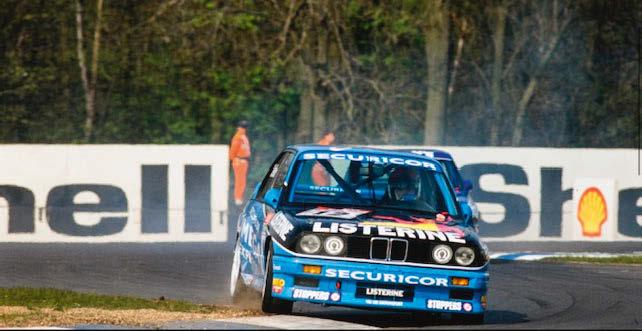
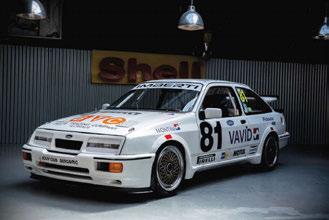
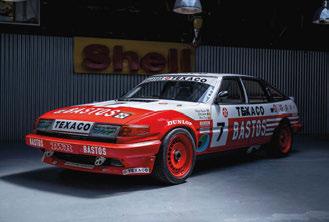
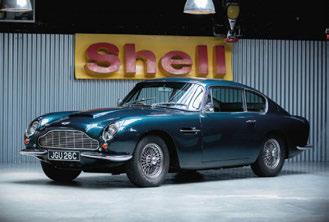
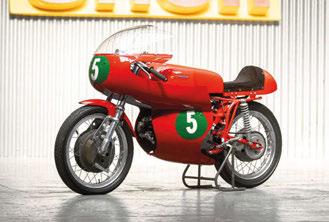
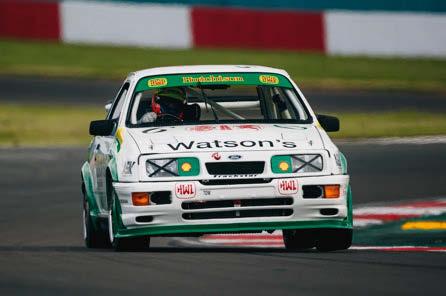
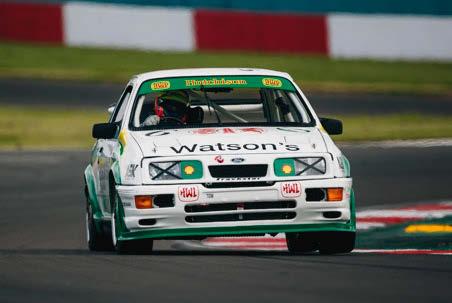
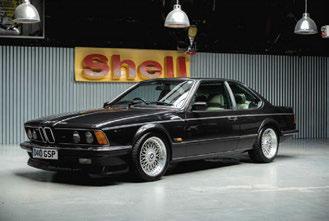
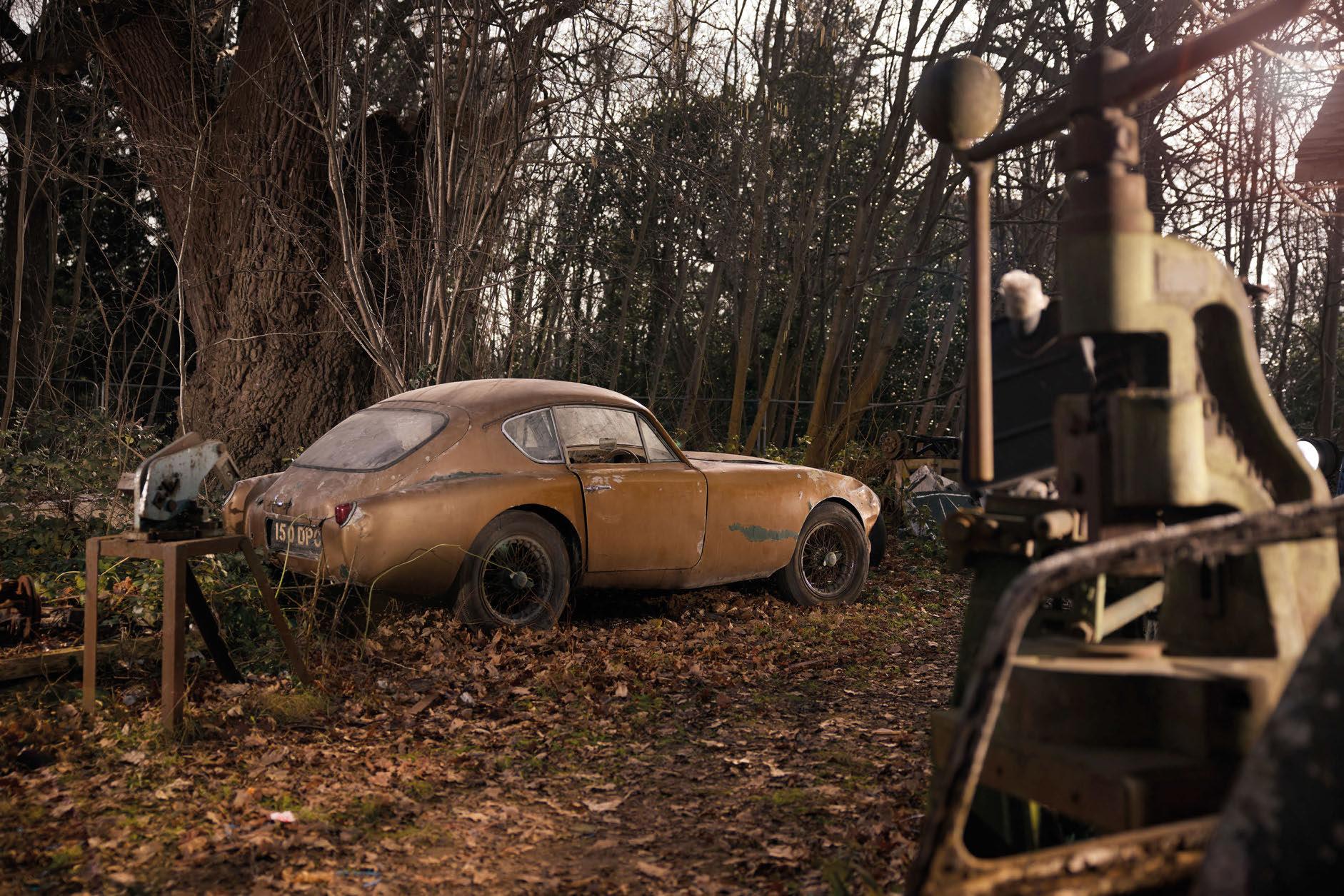

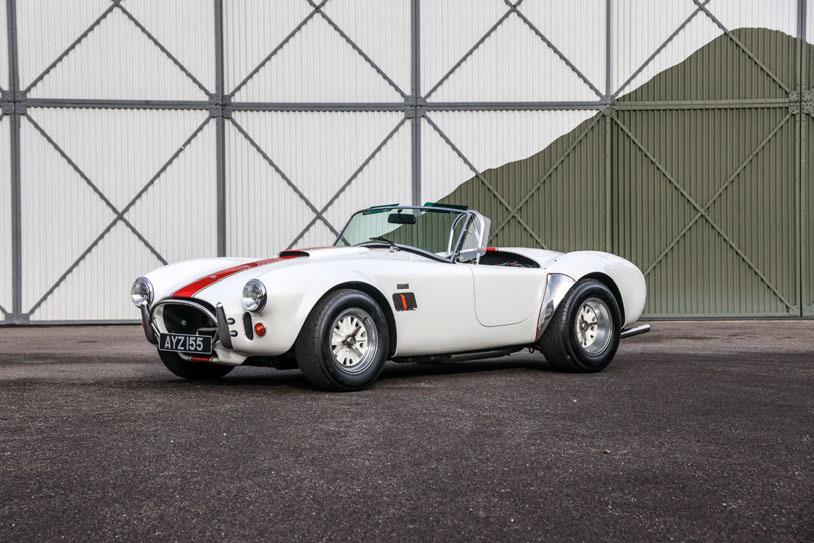
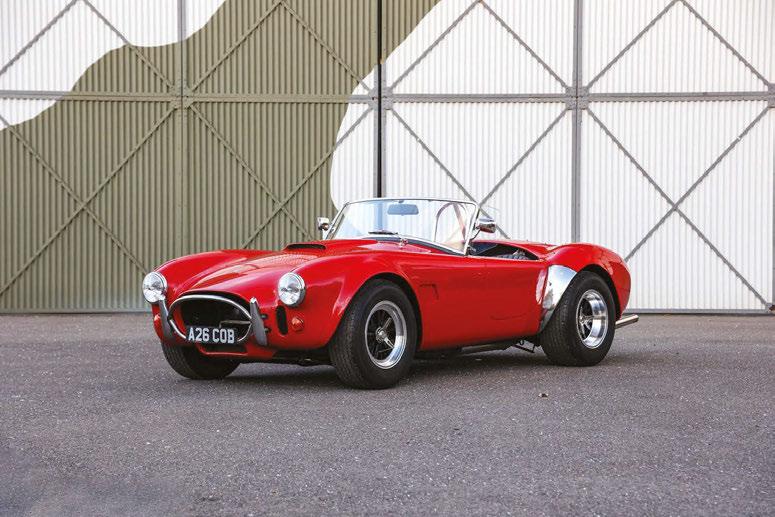

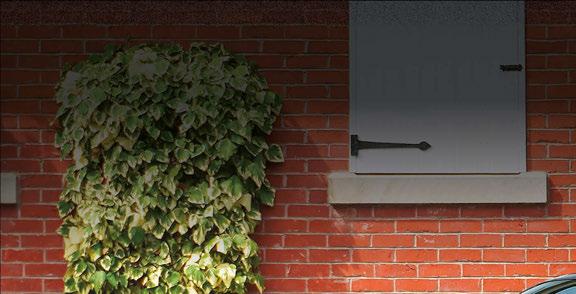
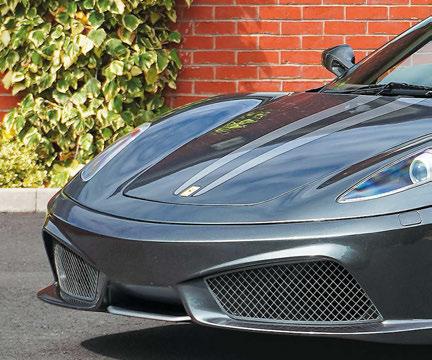
2008 FERRARI F430 SCUDERIA

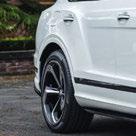

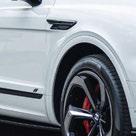

2023
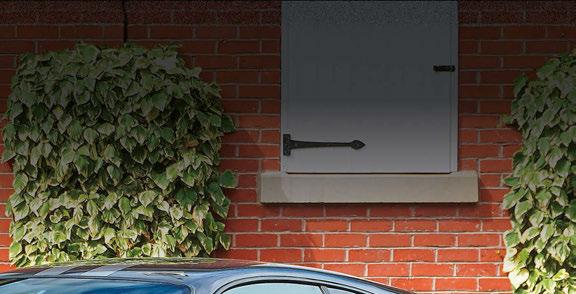
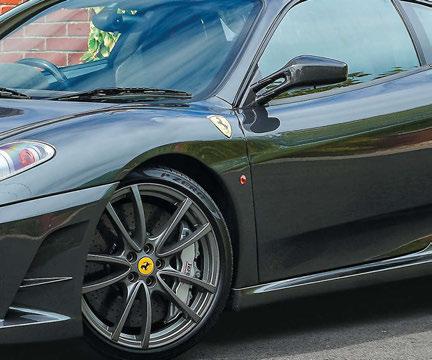

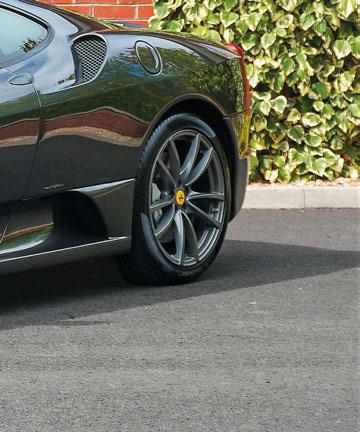
Grigio Silverstone with nero alcantara. 2 owners from new, silver racing livery, aluminium brake callipers, carbon steering wheel with LED’s, integrated radio navigation system, road legal roll bar and bordeaux stitching. 4,887 miles



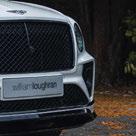


BENTLY BENTAYGA S HYBRID
Glacier white with brunel and linen leather interior and linen contrast stitching. 1 owner from new, front seat comfort and touring specification packs, heated steering wheel, 22” S directional painted and polished alloys, 2,367 miles


















2017 FERRARI 488 SPIDER ‘TAILOR MADE’
Bianco Lagos with nero interior, possibly the highest specification in the UK, F12 TDF style seats, extensive red carbon throughout the interior and exterior of the car, front and rear parking camera’s, suspension lifter and full PPF protection plus much more, FFSH, 5,800 miles


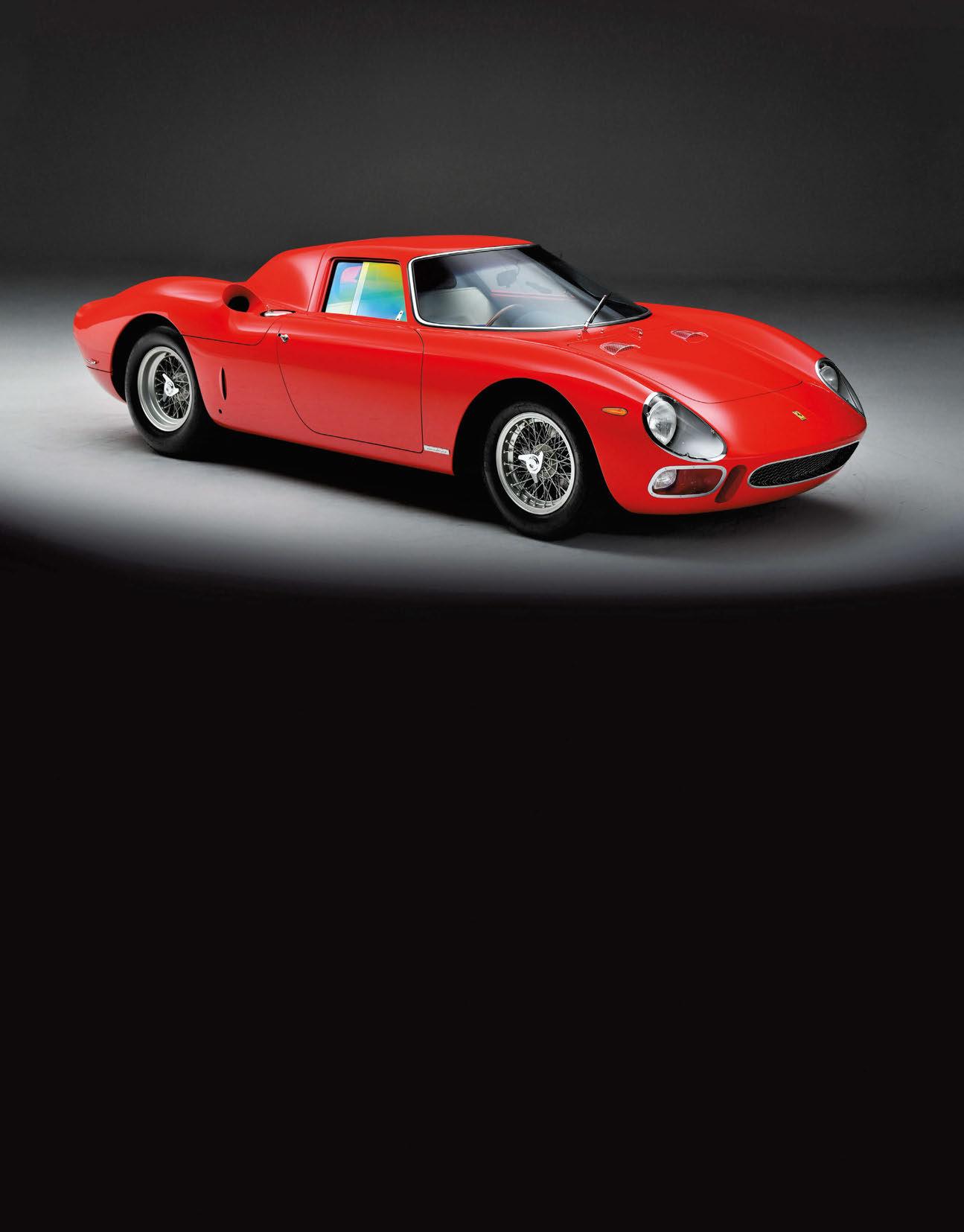
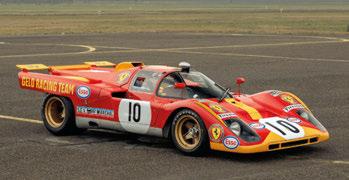
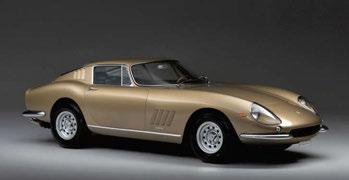
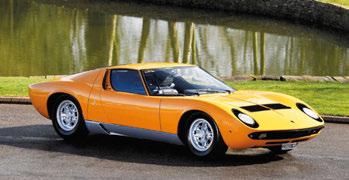
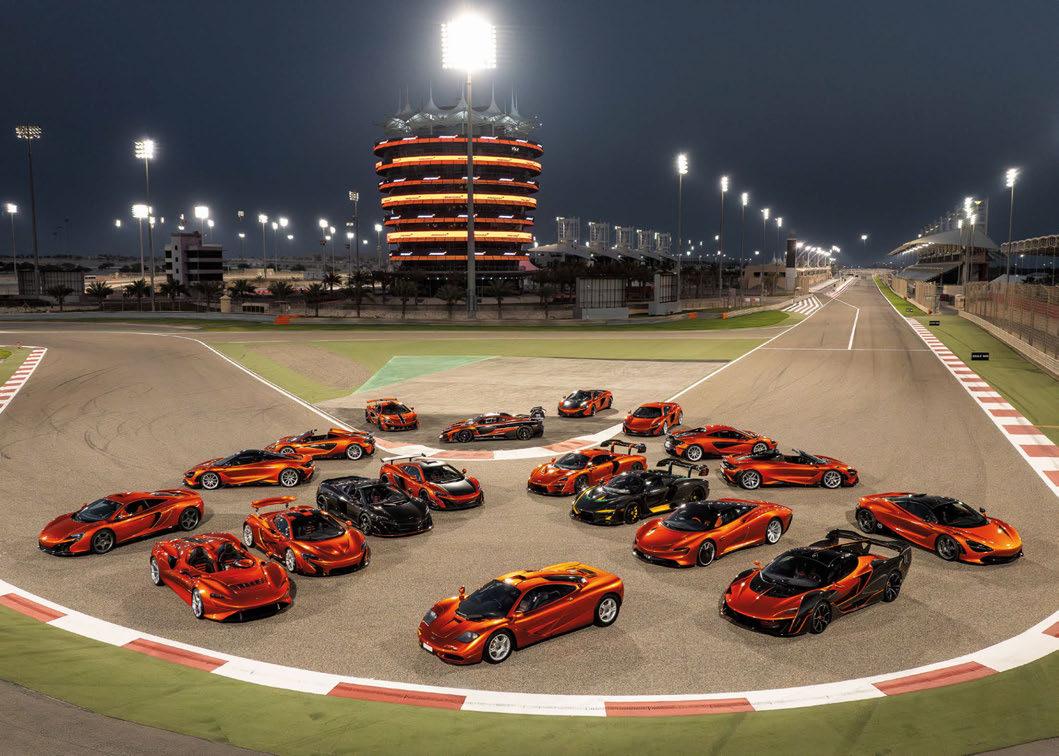
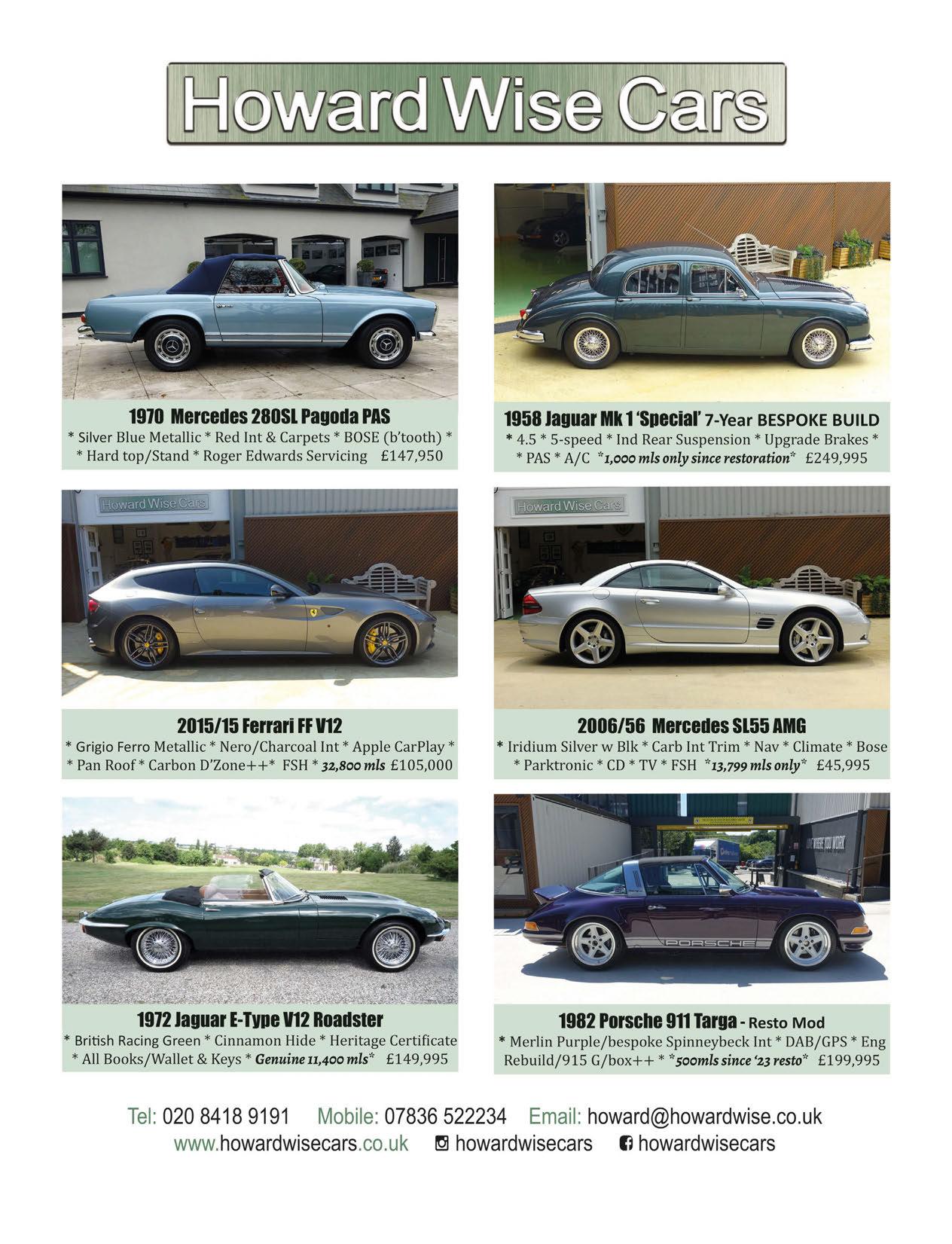
C HARLES P RINCE
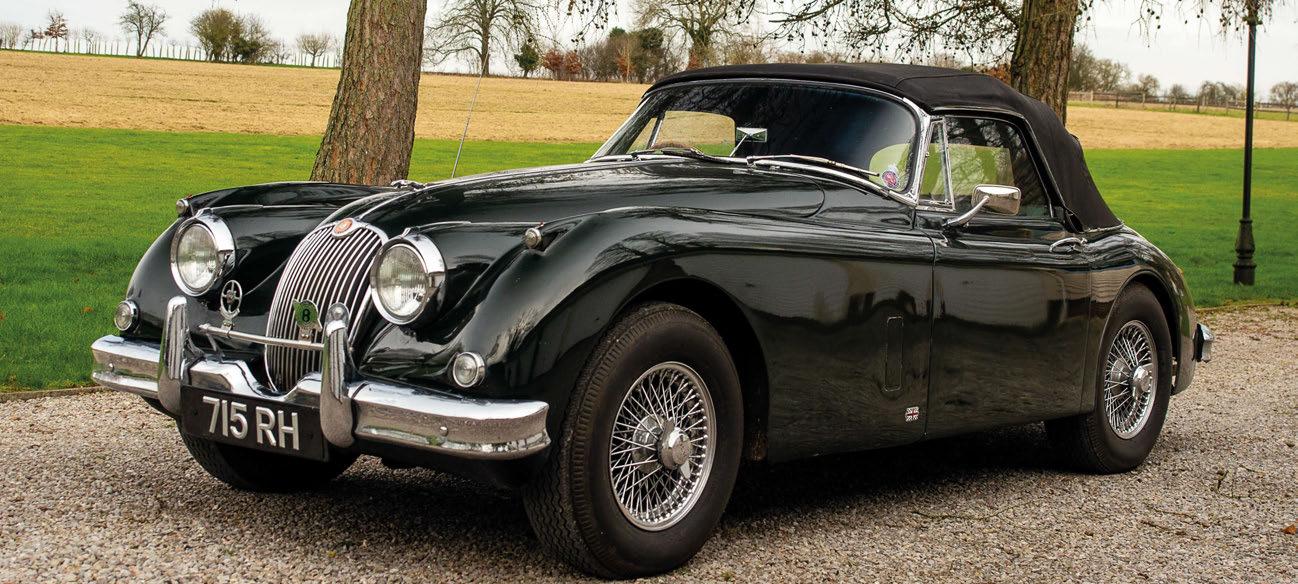
1959 Jaguar XK150 DHC
A highly developed XK150 restored to the highest standard and modified to full 3.8S specification. Equipped with Tremec 5 Speed transmission, 4 Pot brakes, uprated suspension, bucket seats, and much more. A wonderful high performance touring machine. Long term (46 year) ownership. Full history.
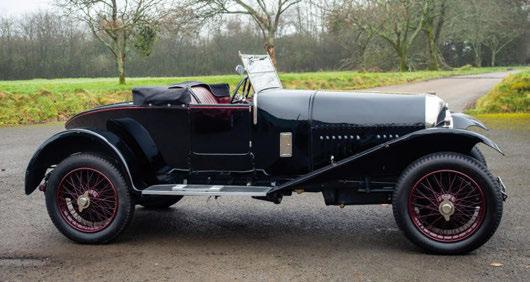
1924 Bentley 3 Litre Speed Model Rare original 2 seater. Full history.
We
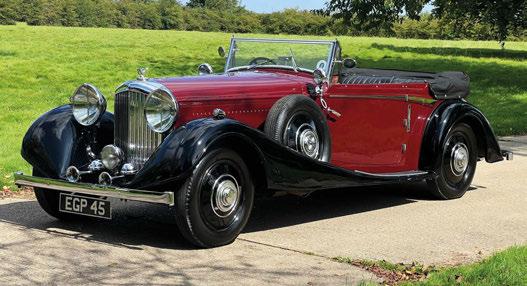
1935 Bentley 3.5/4.25 Litre Continental Tourer by Oxborrow & Fuller. Full history.
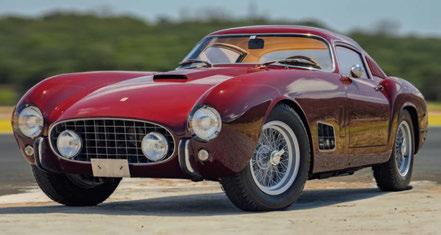

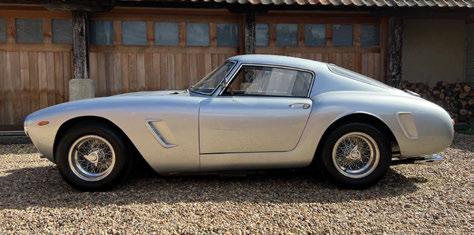

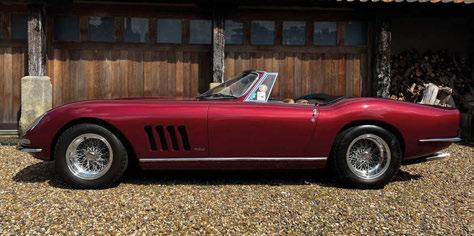

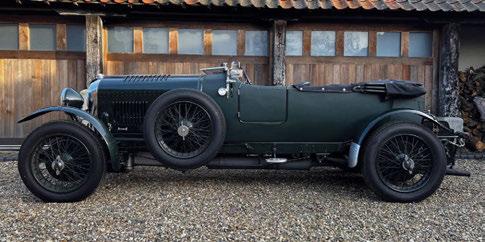



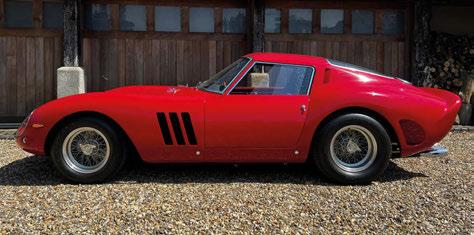

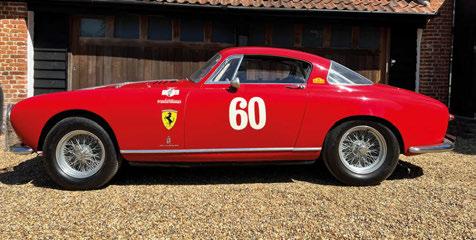

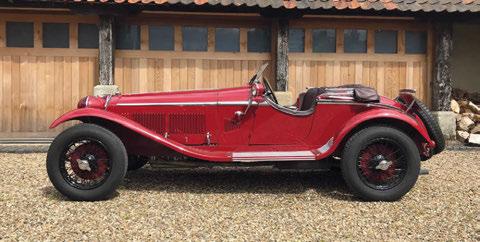

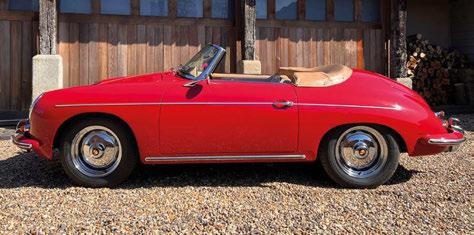

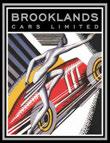
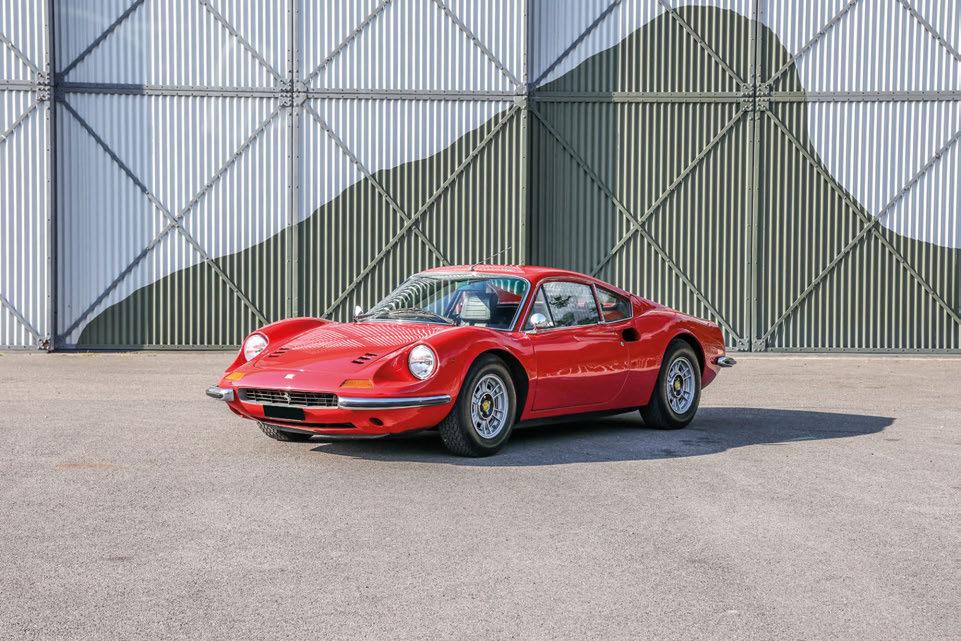
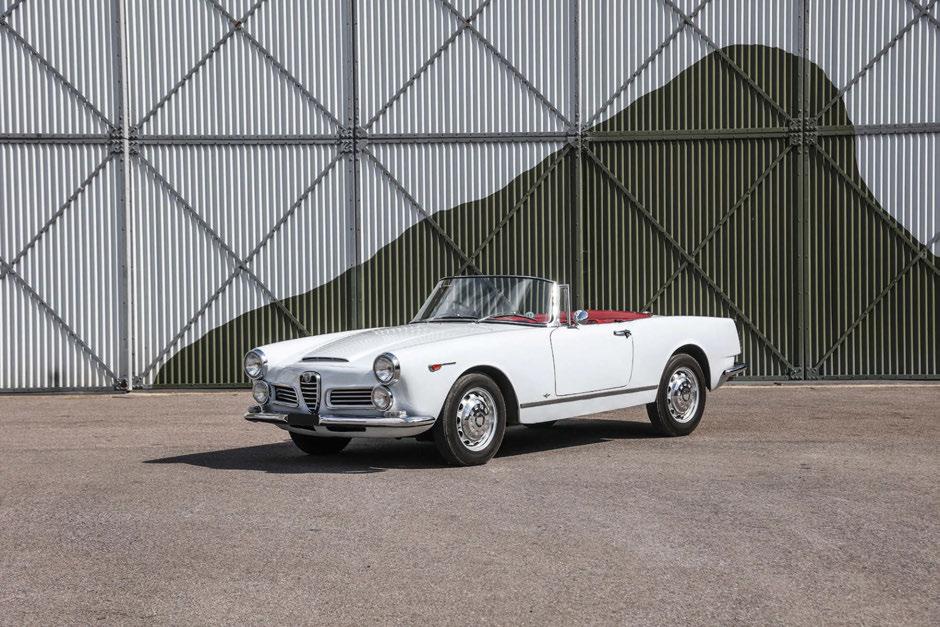
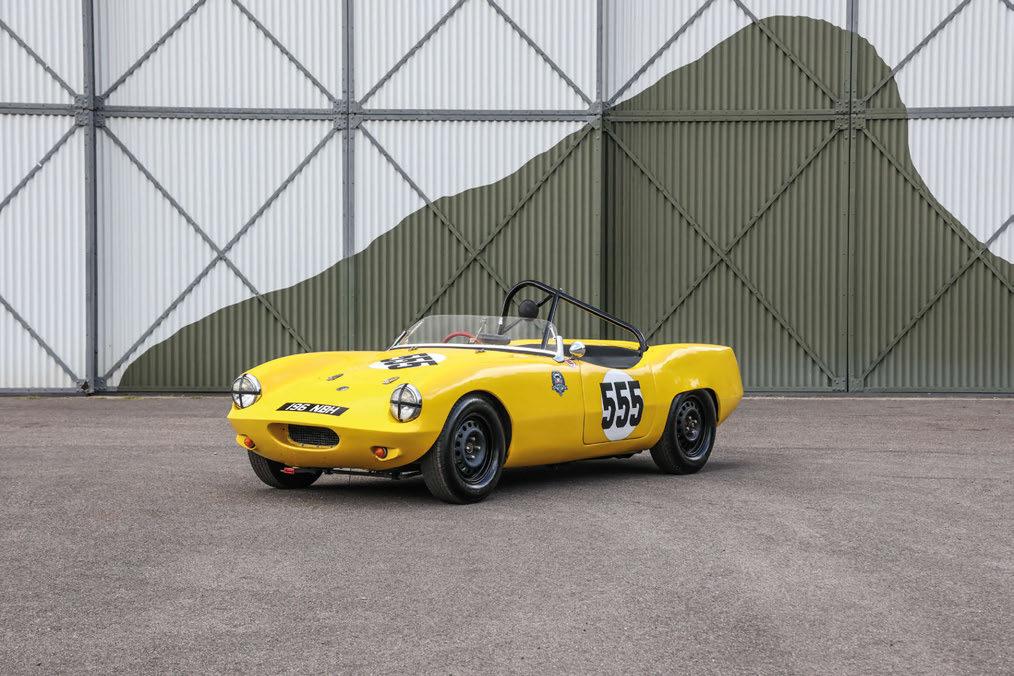
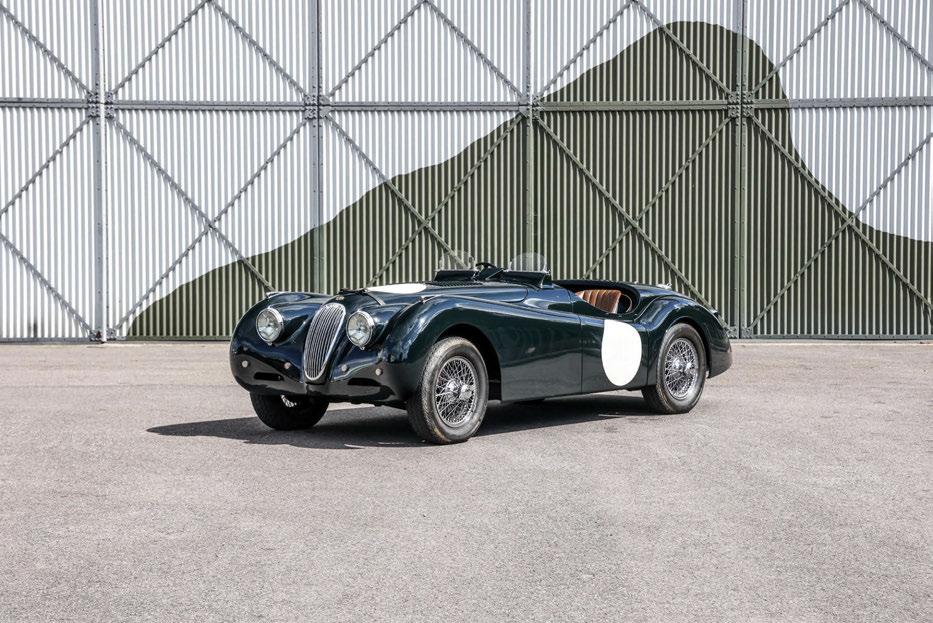

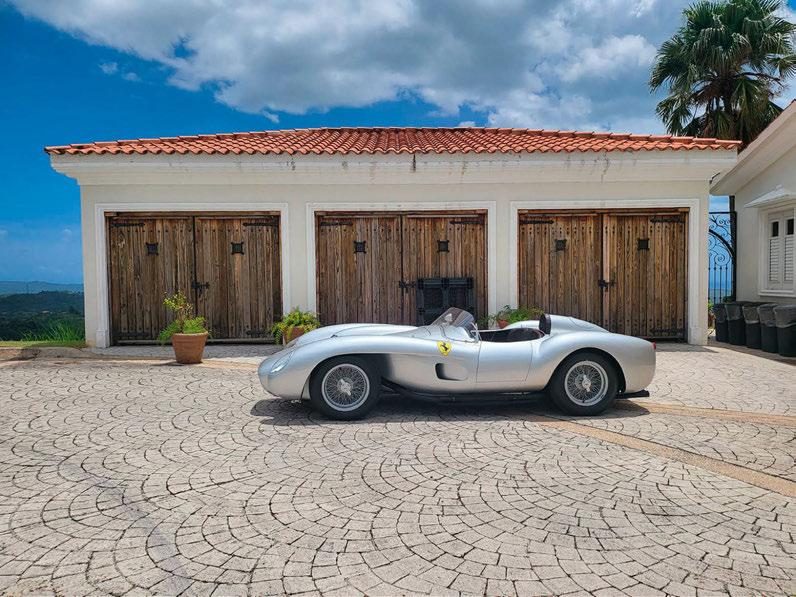
Built by Giovanni Giodanengo
Contact: William@theferrarimarketplace.com
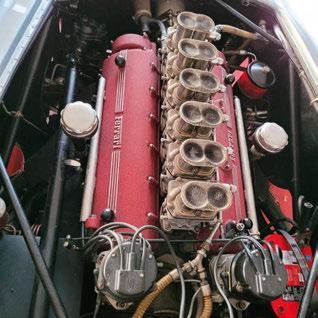
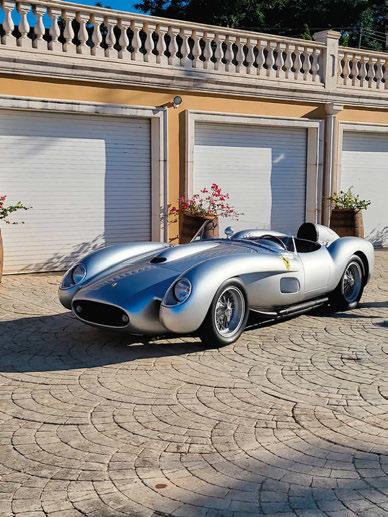

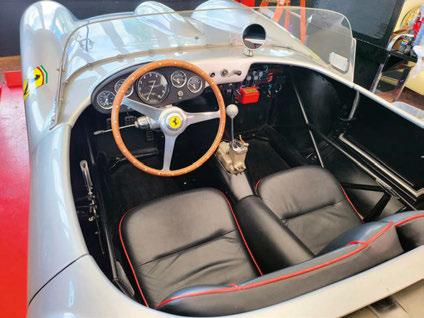




A stunning example of the Curtis Pitts “ Super Pitts” Model 12 with the upgraded Vendenyev M14PF Radial 9 cylinder. Dyno tested at 426 BHP. Superb sound! Climb


1951 Ferrari 212 Inter: Vignale / Drogo, Mille Miglia 1952, 1954. Ground up restoration. Race and Rally ready. Unique one of a kind, matching numbers. Piero Drogo, a subcontractor to Ferrari Factory; wins well-known.



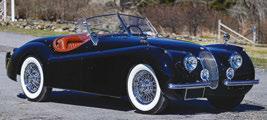
TRADES CONSIDERED - FINANCING AVAILABLE




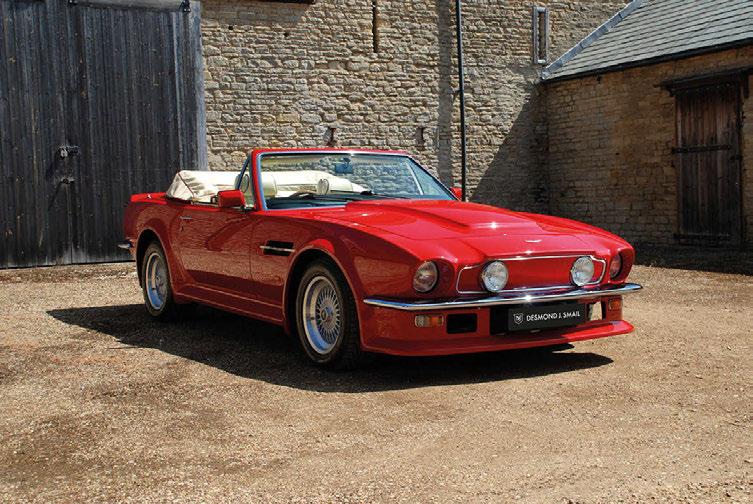
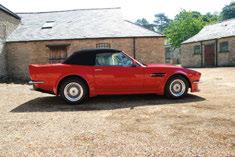
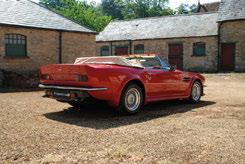
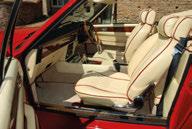
• One of only 78 RHD X-Pack models
• Circa 65,000 miles from new
• Recent considerable expenditure at Aston Martin Works
• Originally supplied with manual gearbox
• Regularly serviced by marque specialists

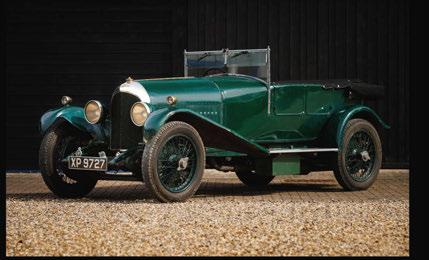
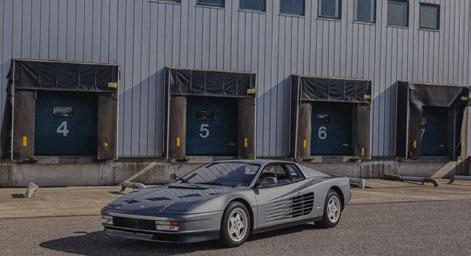


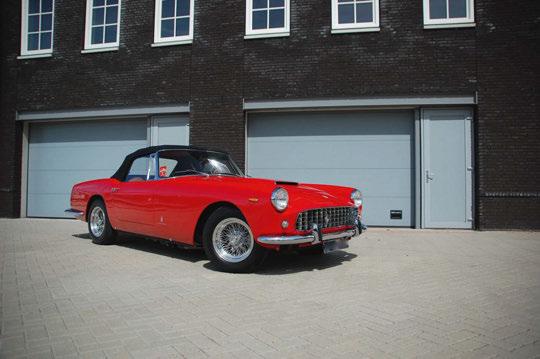


V Private estate on 21 acres on Surrey/Sussex border
V 6,000 square ft made of timber and glass house with 5 bedroom suites and 2 offices
V Climate controlled barn 16 vehicles secure & discreet, potential to extend
V Geo-thermal heating system/ no fossil fuels
V Unrestricted helipad
V Self-contained annexe, cinema, party room
V Gated entry, ultra-private
V OIRO £4 million
www.thelakehouse.property | tim@virdee.com



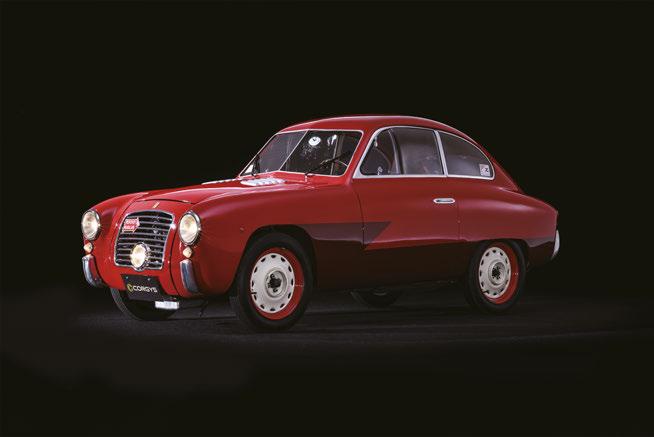


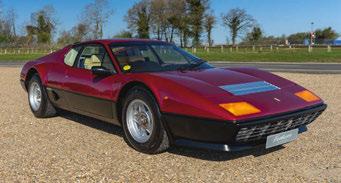
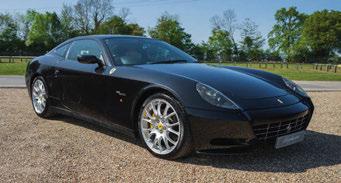
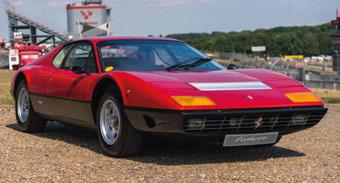
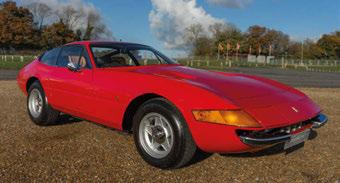
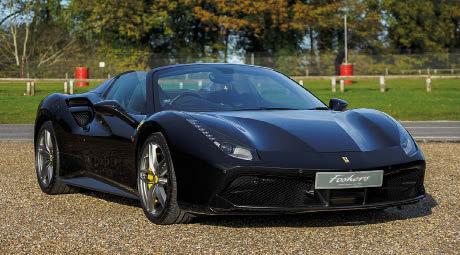
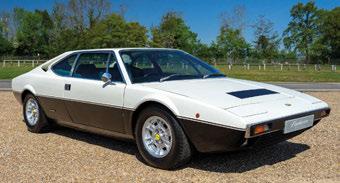
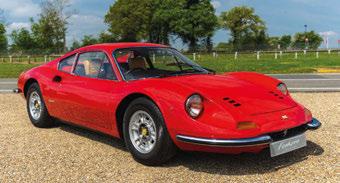
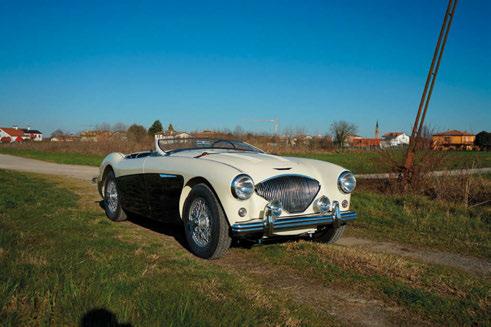
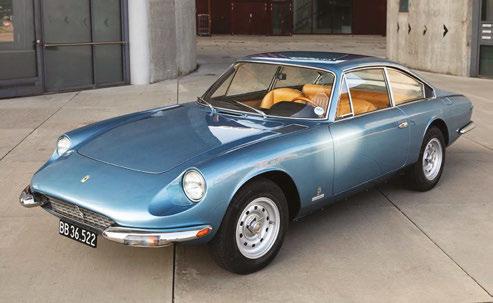


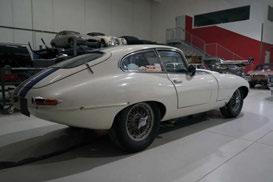

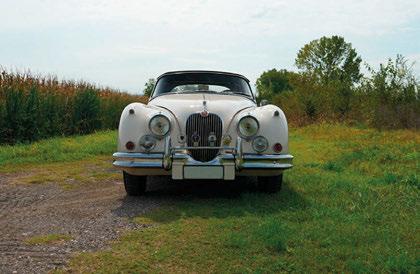
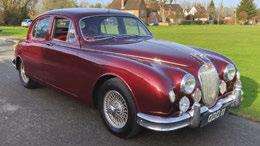
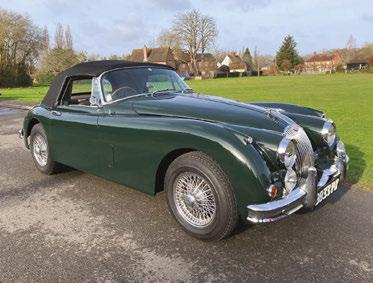
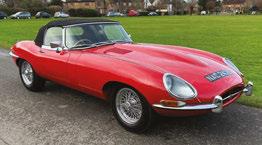
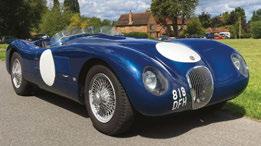
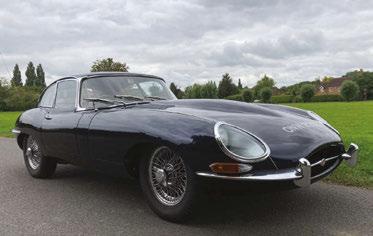
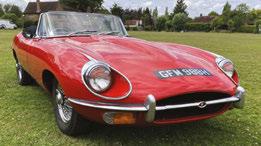
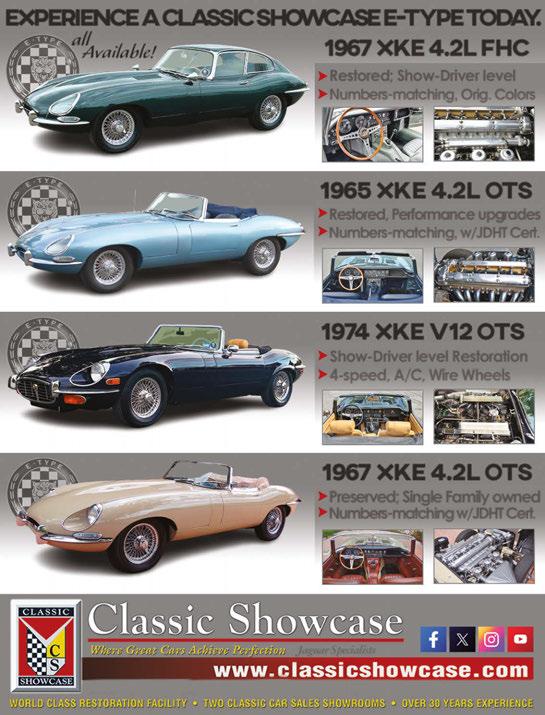


AS Motorsport ltd
Farm, Bressingham, Diss, Norfolk, IP22 2AP
Tel: 01379688356 Mob: 07909531816
Web: www.asmotorsport.co.uk

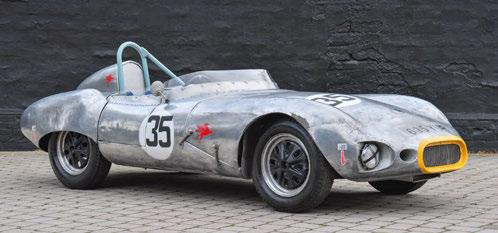
Email: info@asmotorsport.co.uk ASM R1 Stirling Moss tribute car enjoying track time at Goodwood. ASM hand build bespoke versions of the R1 roadster, inspired by the Aston Martin race cars that won Le Mans and the world Sportscar championship in 1959. Contact us
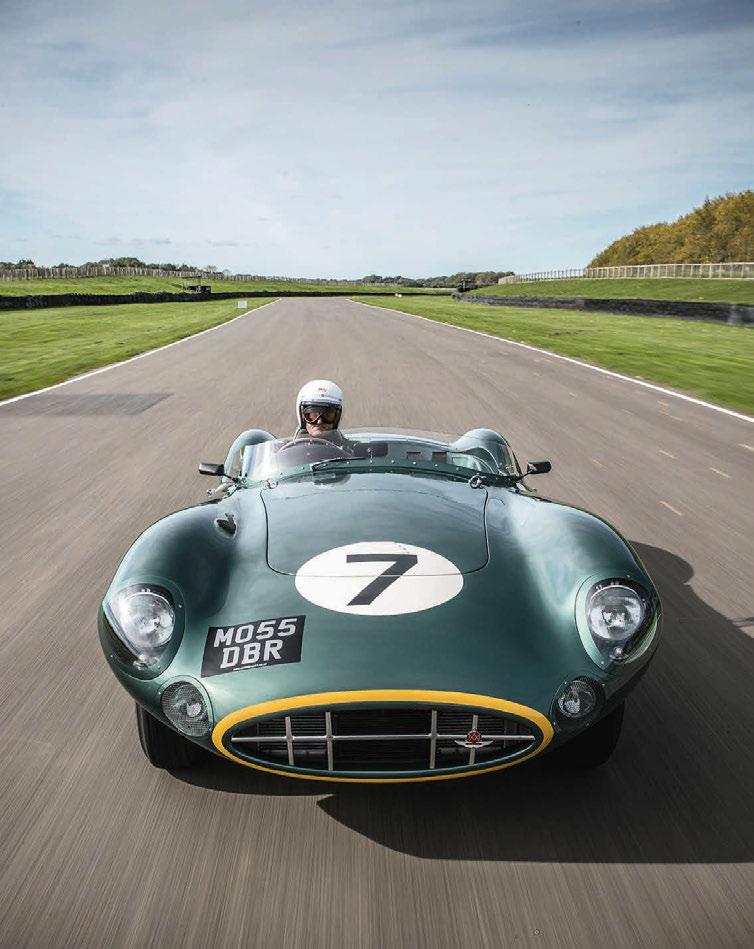
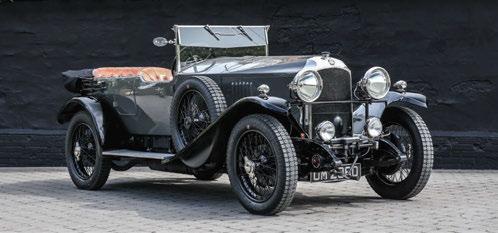
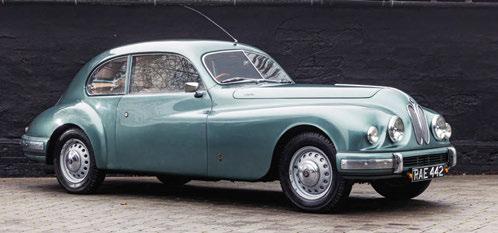
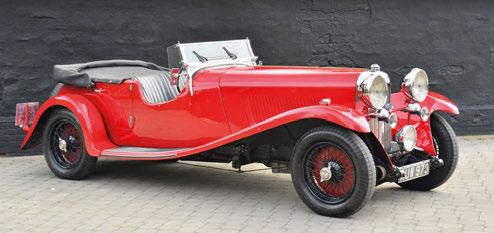
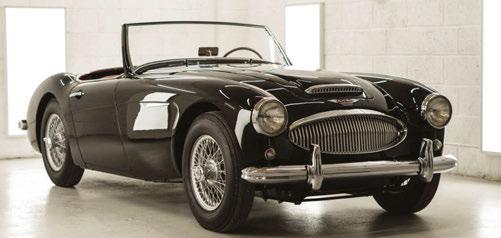
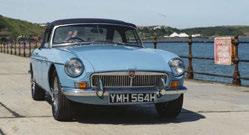
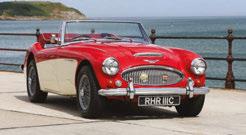













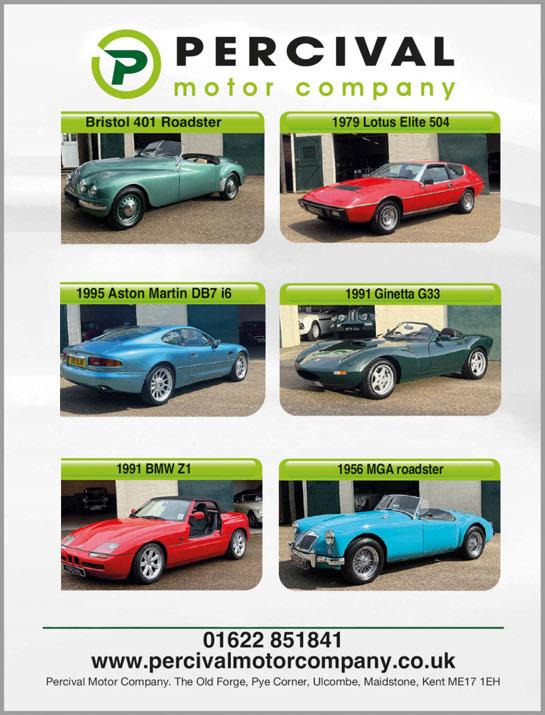




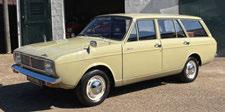














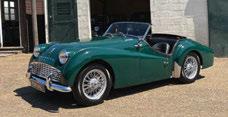






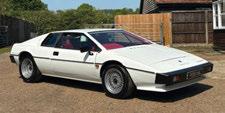
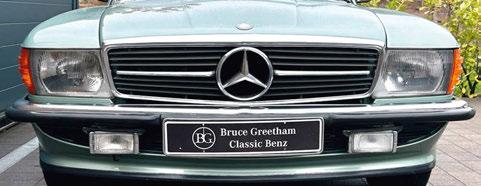
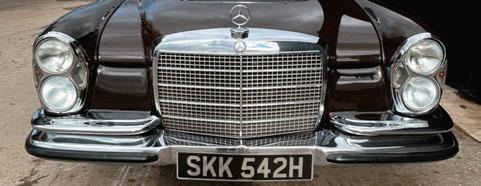


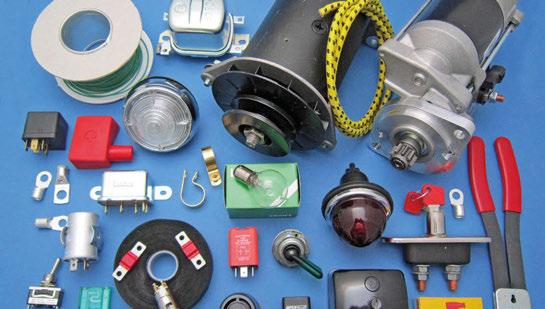


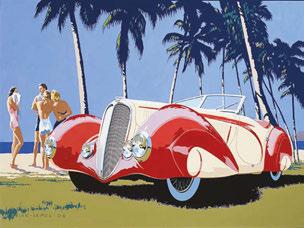

Derby Plating Services Ltd Est. 1979
Derby Plating Services Ltd Est. 1979
Derby Plating Services Ltd Est. 1979
Specialist electroplaters, polishers and metal finishers.
Specialist electroplaters, polishers and metal finishers.
Specialist electroplaters, polishers and metal finishers.
Re-chroming to the highest concours and show standards
Re-chroming to the highest concours and show standards
Re-chroming to the highest concours and show standards
148 Abbey Street, Derby DE22 3SS
148 Abbey Street, Derby DE22 3SS
Tel: +44(0) 1332 382408
Tel: +44(0) 1332 382408
148 Abbey Street, Derby DE22 3SS
Tel: +44(0) 1332 382408
Email: info@derbyplating.co.uk www.derbyplating.co.uk
Email: info@derbyplating.co.uk
Email: info@derbyplating.co.uk www.derbyplating.co.uk
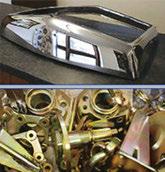
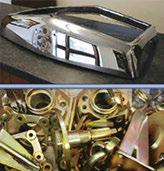
www.derbyplating.co.uk



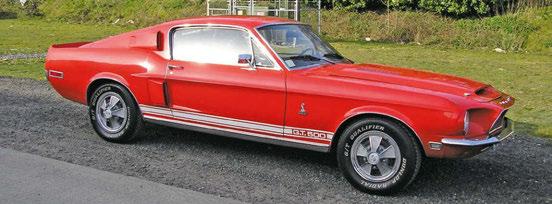

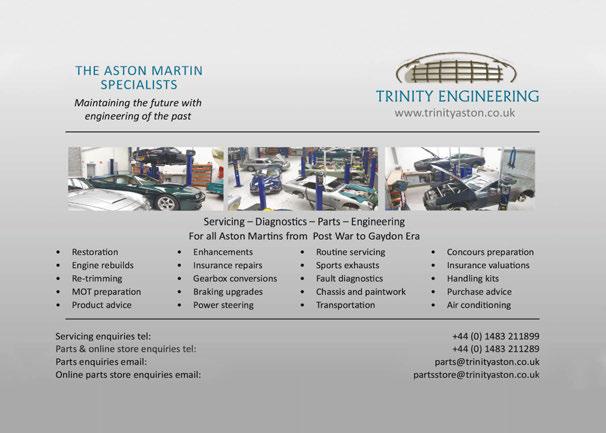
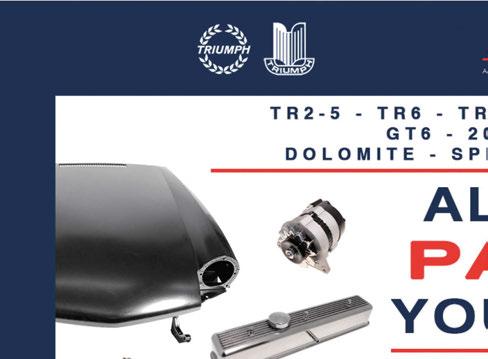





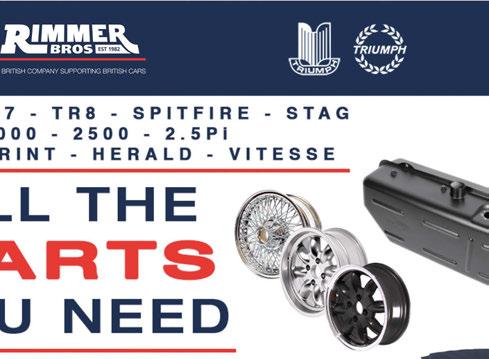


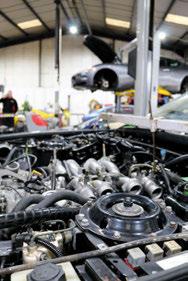
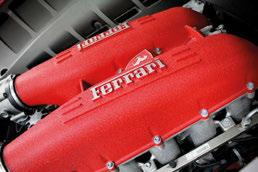
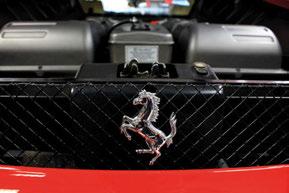
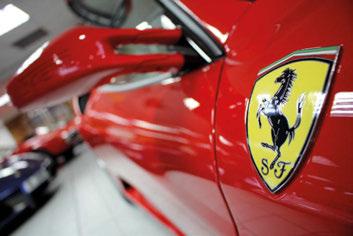

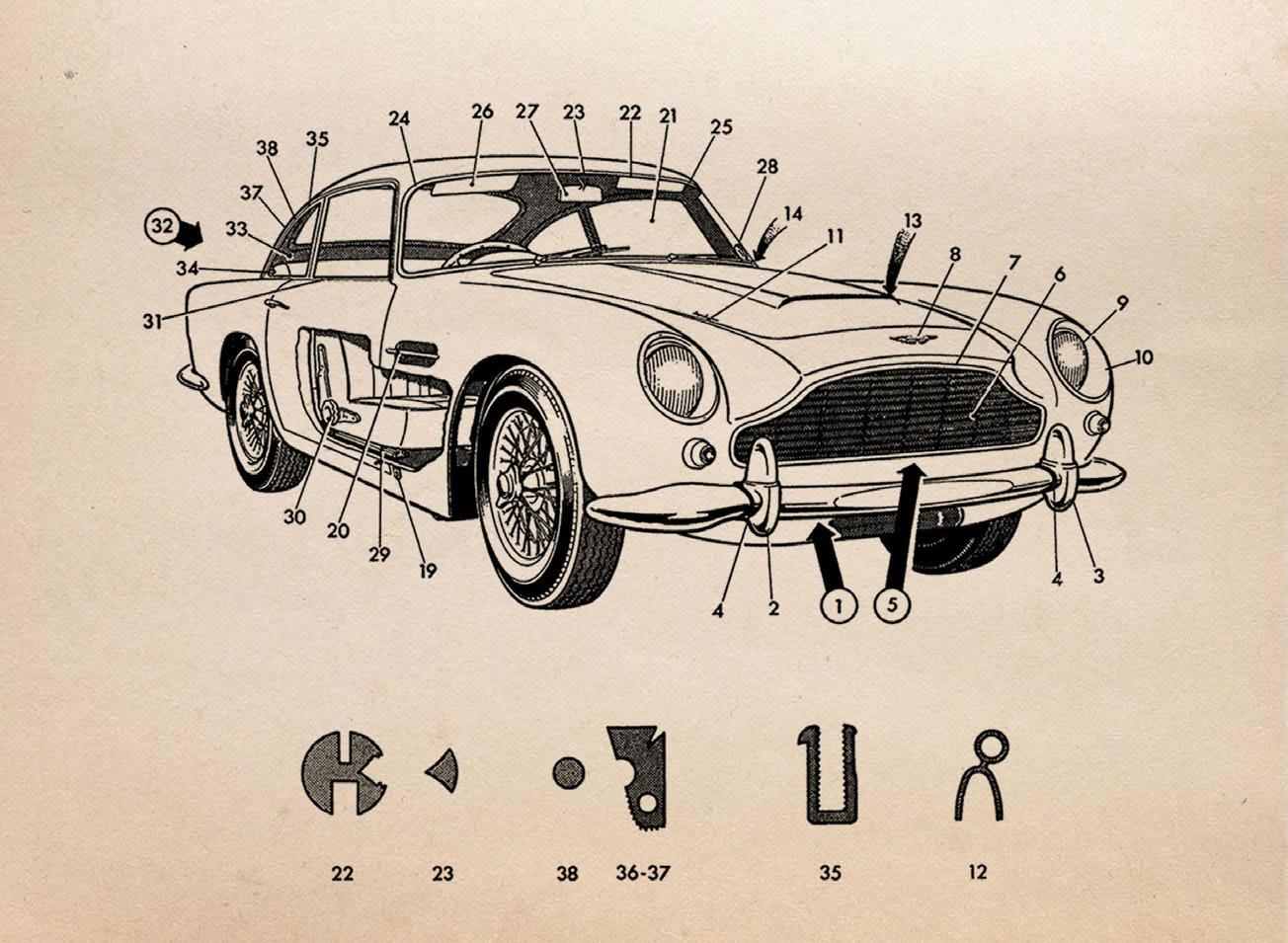
ASTON MARTIN HERITAGE PARTS WORLDWIDE
SHIPPING AVAILABLE

Here at Aston Engineering, we are one of the largest stockists of genuine Aston Martin parts, with thousands of products available in-stock, ready for same-day worldwide dispatch. We also offer an in-house re-manufacturing service. All Heritage models are covered, from the 1958 Aston Martin DB4 through to the 2007 Aston Martin V12 Vanquish.
Tel: +44 (0)1332 374874 parts@astonengineering.co.uk



































































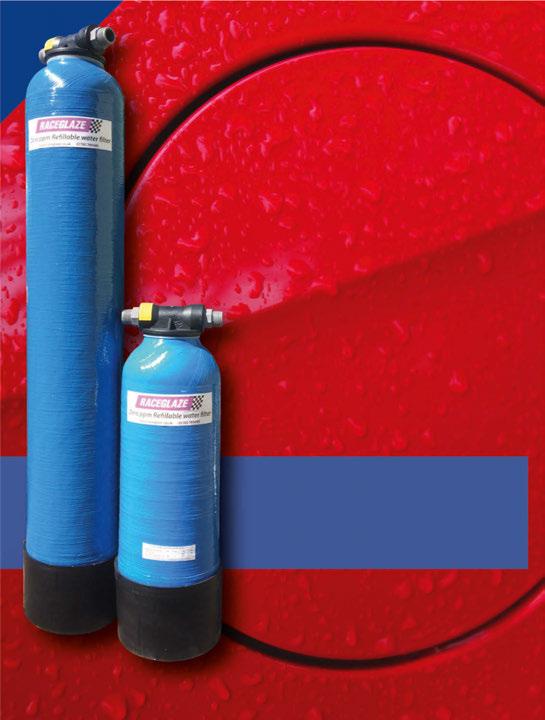
Filter out all dissolved minerals for NO water




� 7 litre filter produces 400 litres, 14 litre filter produces 1100 litres of pure water


� 0ppm pure filtered water leaves no ugly watermarks even when your car is left to dry in bright sunlight

� Eliminate drying swirls, save time for driving
� Refillable & reusable filter saves money long term






















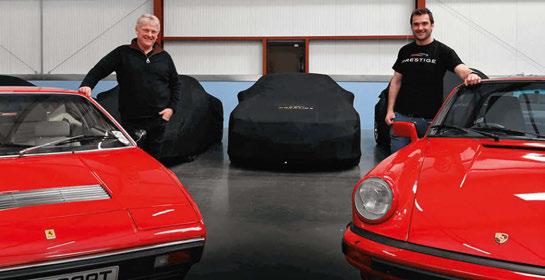




















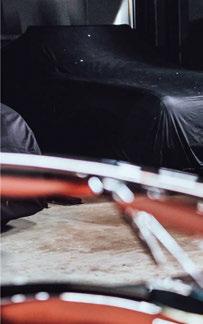










































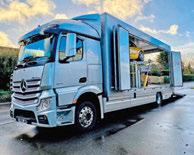



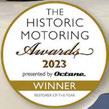




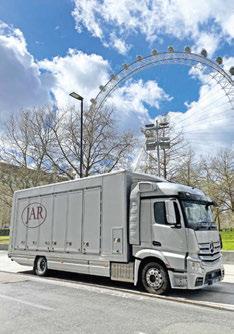



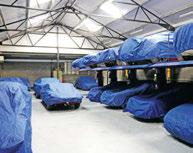

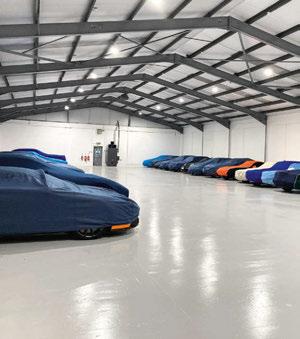

























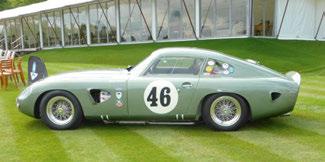
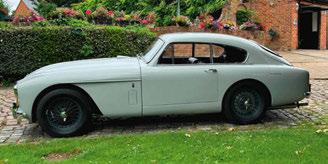
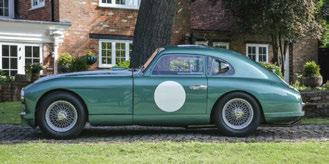
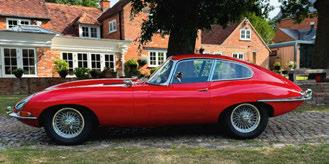
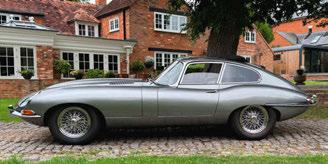
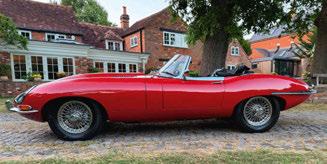
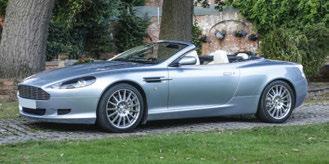

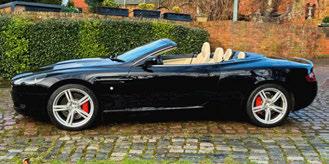
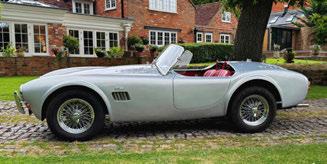
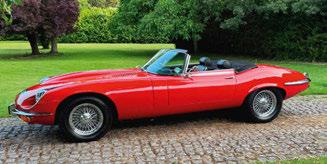
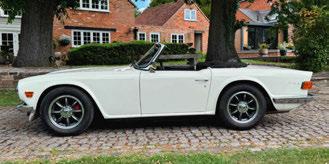
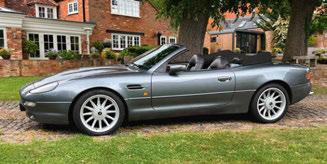
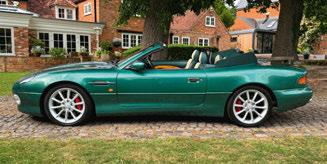
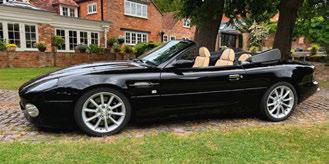



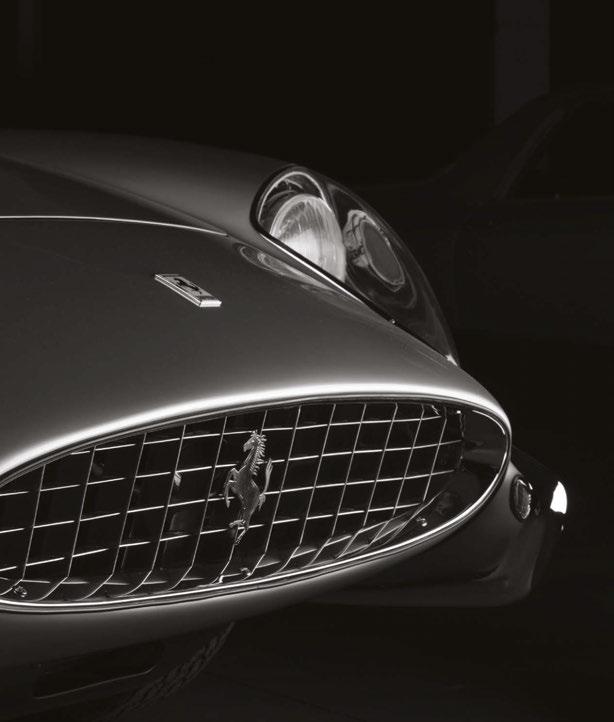




Interview by James Elliott
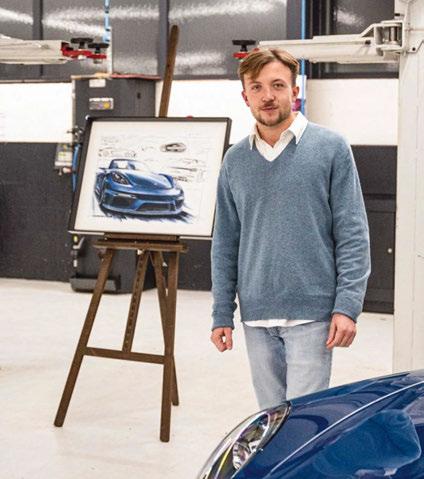
Alban Lerailler
A young French car designer with a sideline in automotive art
I AM ONLY 25 years old and just starting out in my career really, having graduated from university less than a year ago. The direction I am taking is no surprise to anyone given my upbringing, however. I was brought up in Lyon and my mother was an art teacher; wherever we were in the world for whatever reason she would always seek out any art galleries as her priority and take my sister and me around them. From her I inherited and developed my love of art.
The other side came from my father, who was a photographer and had a Jaguar E-type and a couple of other old cars when I was growing up, even though he was more into motorbikes and it seemed like we always had a garage full of Ducatis. They were my first introduction to mechanical objects and mechanical beauty and I knew instantly what I wanted to do with my life. They were my obsession when I was a kid and later I would rebuild Ducati engines with him, which was where I really started to understand that design is so much more than what an object looks like, a realisation and fascination that
have informed my art and career ever since. Apparently I was five years old when I first told my mother that I wanted to be a car designer and draw cars for a living. I have always been entranced by the cars of the 1960s more than any other decade and, when you consider Ferraris such as the 330 P4, or Lamborghinis such as the Miura, you can see why I was so enamoured with the era! I found them magical, not only to look at, but also in how they worked. For me, though, the best-designed car of all time is the Countach. Gandini is my favourite designer and his work looked like it came from a different planet. Despite my aspirations, after school I was persuaded to start a diploma in car body engineering rather than going all-out for design, because my teachers and parents were fearful that jobs in design were so scarce that I needed something else more likely to secure me a career. I tried to stick with it, but after two years I knew that was not where my heart lay and in 2019 I transferred to the ISD design school in Valenciennes, northern France. I finished last November and, after my thesis project on Ferrari was selected as a finalist in the Car Design News Future Talents competition, that helped me secure me an incredibly formative internship at Porsche Style in Weissach – on a project to create a racing vision concept that promotes a new KERS technology and recaptures the magic of mechanics that we’re losing in electric vehicles. I displayed this technology at the centre of the vehicle, just like the 917’s flat-12.
I now live in Bologna and am a full-time exterior design consultant at Lamborghini, which is really exciting. There are six or seven exterior designers coming up with visions for the next car. It’s a long process then to see which one moves on and becomes a production car, but I can barely believe I am doing this so soon after graduating. I am so fortunate to have got a foot on the ladder.
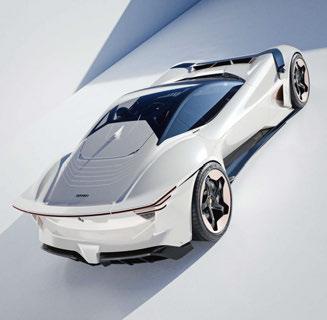
I started my artwork four years ago when I was still at ISD and it’s going really well, even though it is becoming increasingly difficult to juggle it with a full-time job. The thinking behind it was really simple: I wanted to create a style that reflected the job of the car designer. So if I am doing an artwork of a car, I will really research it, delve into its history and how it came to be. I will try to get inside the head of the designer and determine all its influences and inspirations and where they came from as well as the mechanical features and components.
It was important to blend all my passions in one medium, not just art and car styling, but also the mechanics and bringing to life the heritage and essence of a car. My pieces combine sketches, watercolours and a bit of marker pen, and I was very lucky to pick up some work early on from Galeries Lafayette. Since then it has exploded and I have exhibited at Rétromobile and in South Korea, I have clients from the US to Dubai and the vast majority of my work is commissioned. Recently I expanded into watches, which are very similar to cars in so many ways, and I am also exploring more structure and 3D with a 930 Turbo in aluminium. My goal is to make an artistic bridge between how the car came into being through the designs and sketches and then how it left the factory in the model. Classic cars will always be my main inspiration and I love the BMW E30, which is such a good entry point for someone of my age. As a kid my dream car was always a Ferrari, but since my time at Weissach I have come around to Porsches, so my dream two-car garage would be a 993 and Daytona.
Above left and below
Lerailler shows multiple-image style with watercolour to the fore (see @lerailler_ gallery on Instagram for more); car design is the main string to his bow, however.
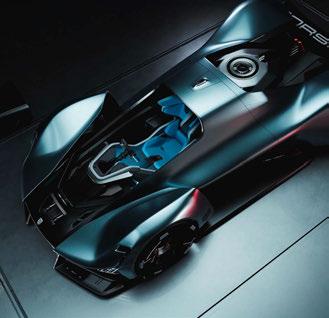
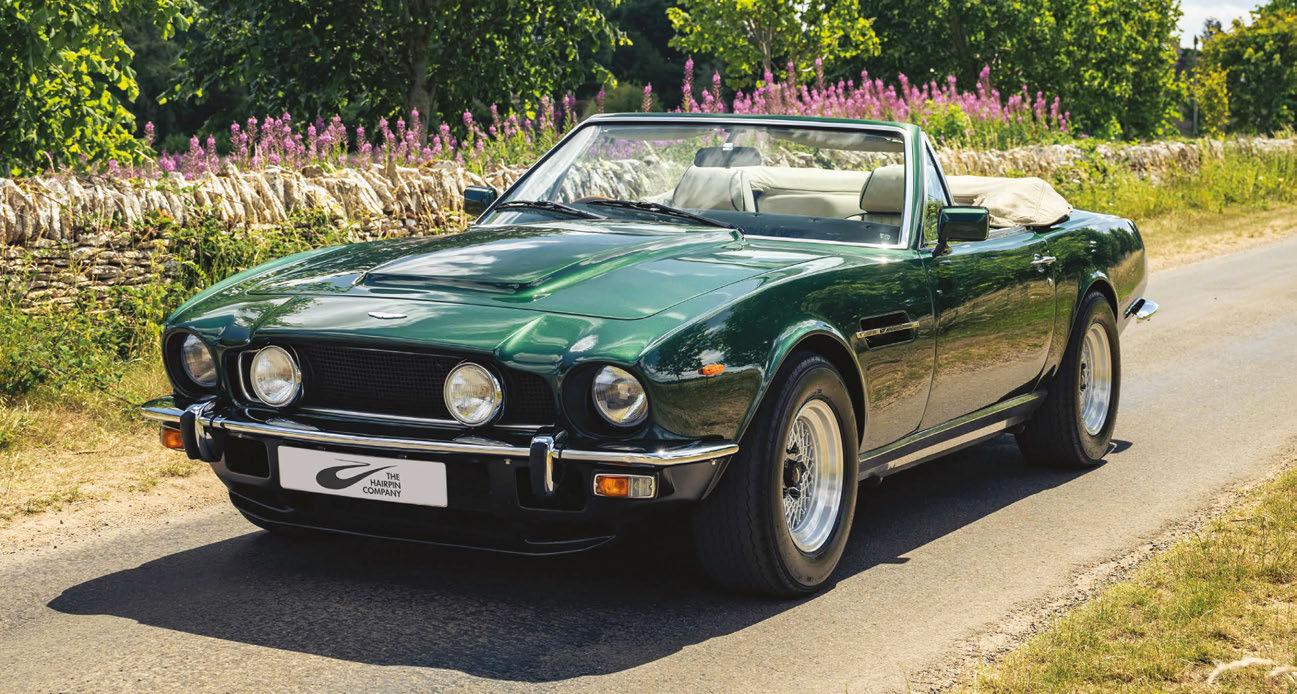
1983 ASTON MARTIN V8 VOLANTE TO VANTAGE ‘POW’ SPEC
A superb original V8 Volante supplied new in Buckinghamshire Green with fawn leather interior and one of only nineteen RHD manual carburettor cars that was correctly updated by Aston Martin Works in 1988 to full Vantage manual specification becoming in effect ‘Prince of Wales’ specification.
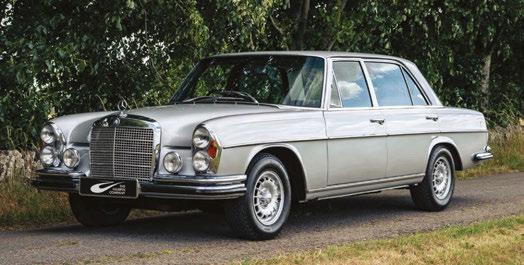
1972 MERCEDES BENZ 300 SEL 6.3
Rare and original UK supplied example in excellent order with much recent work and just 50,000 recorded miles.
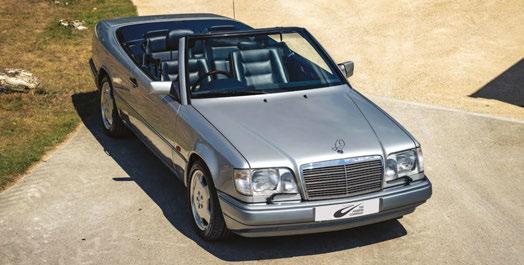
1996 MERCEDES BENZ E36 AMG CABRIOLET
One of only fourteen right hand drive examples in excellent order throughout. 46,000 miles with a full and detailed history.
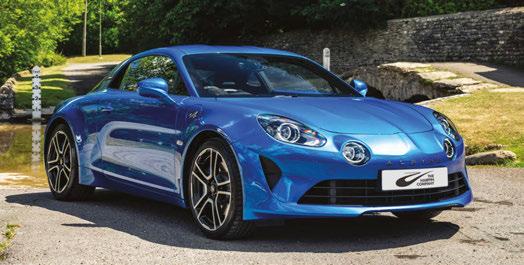
2018 ALPINE A110 PREMIERE EDITION
An as new example of the first edition of the revelatory Alpine A110 model. Just 3,000 dry summer miles from new in the hands of two mature collectors.

1988 PORSCHE 911 TURBO
An excellent UK supplied Turbo finished in Guards Red with special order full Champagne leather interior. 59,000 miles with full and detailed history.

RM 65-01
Skeletonised automatic winding calibre
60-hour power reserve (± 10%)
Baseplate and bridges in grade 5 titanium
Split-seconds chronograph
Function selector and rapid winding mechanism
Variable-geometry rotor
Case in Quartz TPT®
